

2 Week South America Itinerary: Six Awesome Itineraries to Inspire Your Travels
You’re not going to be able to see all of South America in 2 weeks – but we’ve got everything you need to plan your travels with our pick of two week South America Itineraries. Inspiration for your next Latin American adventure.
By Sophie Ritchie and Julianna Barnaby
Going to South America ? Read my step-by-step South America guide. Everything you need to know to plan your trip.
South America is such a large continent that it can be difficult to know where to start and how much to see on a shorter trip. Into beaches, jungle or mind-blowing landscapes?
Whichever way, there’s an itinerary for you.
Routes Featured in This Guide
- Explore Patagonia: El Chaltén, Perito Moreno Glacier, El Chalten, Torres del Paine
- Exploring the Incan Empire and Lake Titicaca: La Paz, Lake Titicaca, Cusco, Inca Trail, Machu Picchu
- Incredible Landscapes in the Altiplano: Atacama Desert, Bolivian Altiplano, Salar de Uyuni
- An Amazon Adventure: Manaus, Tabatinga, Leticia, Iquitos
- Beach Hopping Break in Brazil: Ilhabela, Paraty, Ilha Grande, Rio de Janeiro, Salvador, Fernando de NoronhaIt’s little wonder that the vast landscape of the Salar de Uyuni (Bolivia Salt Flats) is a bucket list spot. Plan your trip with this guide.
- Explore Ecuador and the Galapagos: Quito, Cloud Forest of Mindo, Otavalo & Cotacachi, Antisana Reserve, Avenue of the Volcanoes, Galapagos Islands inc. Darwin Bay
Exploring South America’s Crazy Landscapes
Destinations: Santiago, Atacama Desert, Bolivian Altiplano, Salar de Uyuni.
Countries: Bolivia and Chile
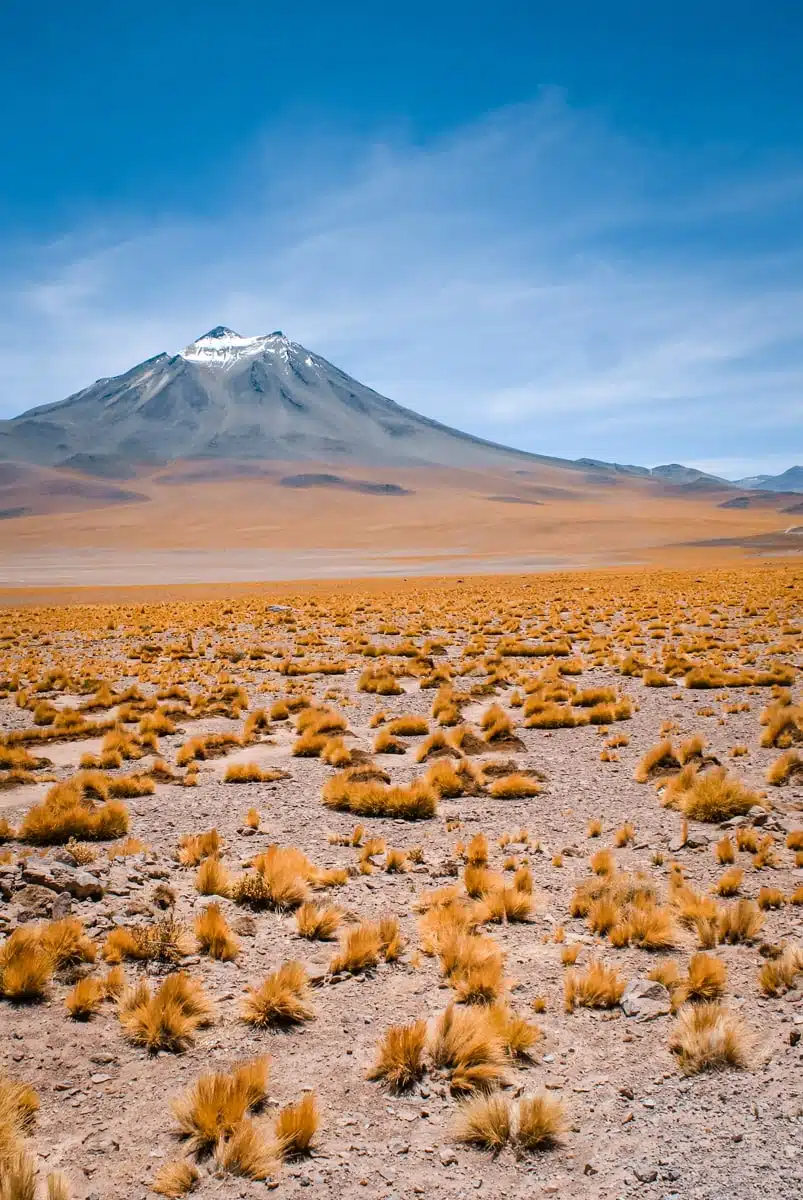
Two weeks in South America is not enough time to see everything that the continent has to offer.
This trip will take you to the very best of the continent’s incredible landscapes so you can decide on your own personal favourite.
Make sure you have a trusty travel camera for this one… you’re going to need it.
Day 1: Santiago
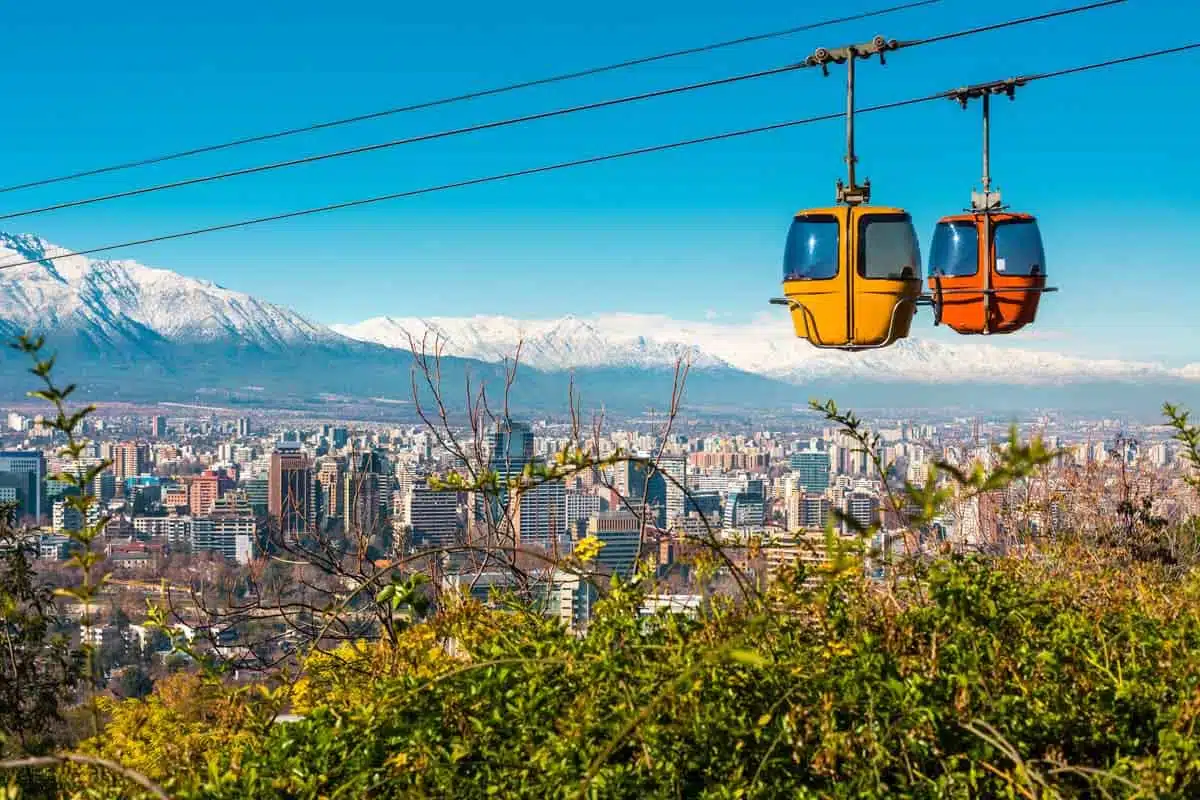
Where better to arrive than in Santiago , Chile’s capital city. Santiago rivals La Paz for its dramatic setting: it sits in a valley surrounded by the towering Andes mountains.
It’s a cool city, with lots of options for sightseeing, restaurants, nightlife and lots of accommodation. If you have a bit more time, spend a couple of days exploring Santiago, but you can see a reasonable chunk of the city in one day .
I recommend hiking to the top of Cerro San Cristobal for epic views over the city, as well as visiting the impressive Templo Bahai and spending a morning wandering around Bicentenary Park.
You also cannot visit Santiago without admiring the old colonial architecture – Cerro Santa Lucia, in particular, is stunning.
Suggested Stay: The Singular Santiago
Day 2: San Pedro de Atacama
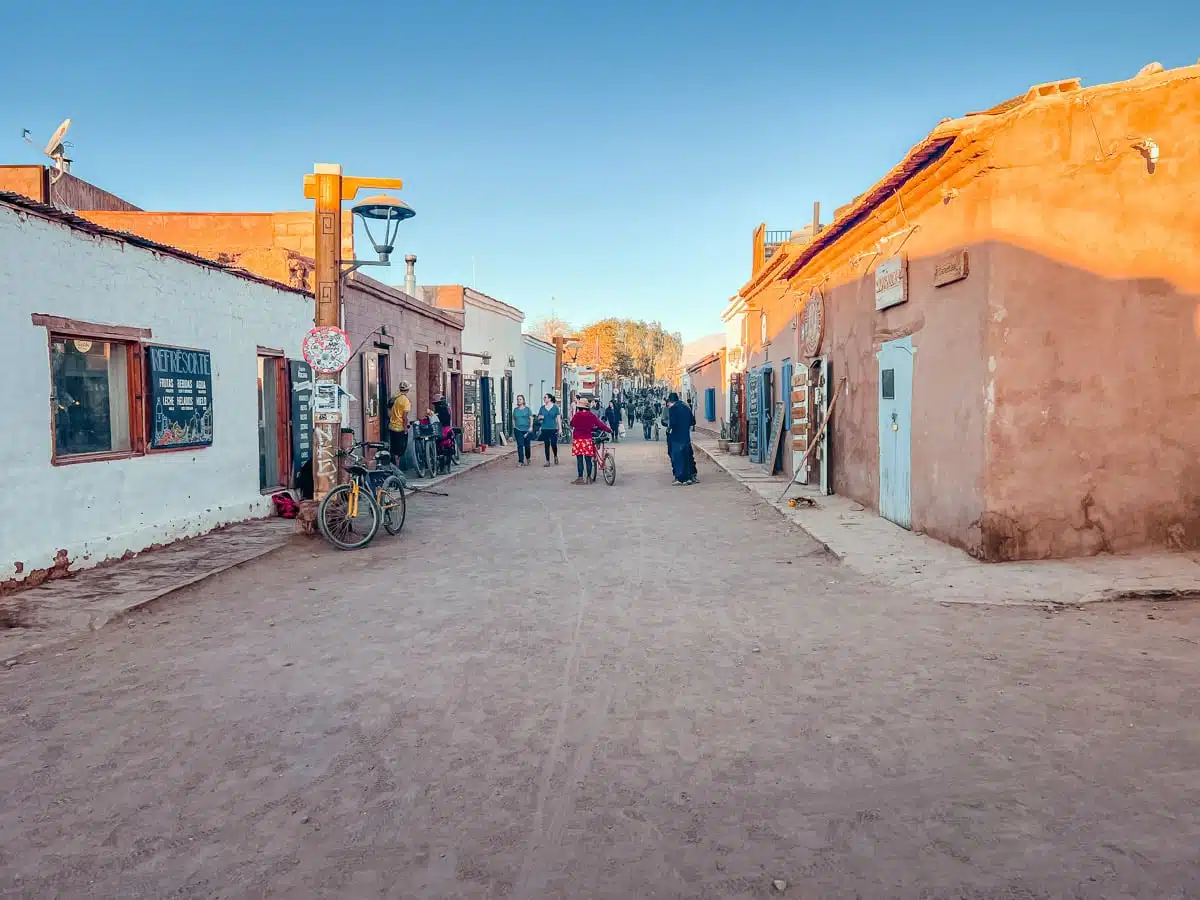
Fly to Calama, and journey to San Pedro de Atacama , where you will lodge for the night. San Pedro is pretty tiny and congested (to be honest, it’s not our favourite place) but it makes a good base for exploring the Atacama Desert by taking tours.
If you want a completely unique experience, hire a campervan or a car to explore the Atacama at your own pace.
If you have the money, another (much pricier but also fabulous) alternative to staying in San Pedro is basing yourself in one of the high-end lodges dotted around the area such as Explora Atacama and Nayara Alto Atacama .
Perfect if you’re looking for a touch of luxe for the trip.
Nayara Alto Atacama – Read My Full Review Here
Days 3-7: The Atacama Desert
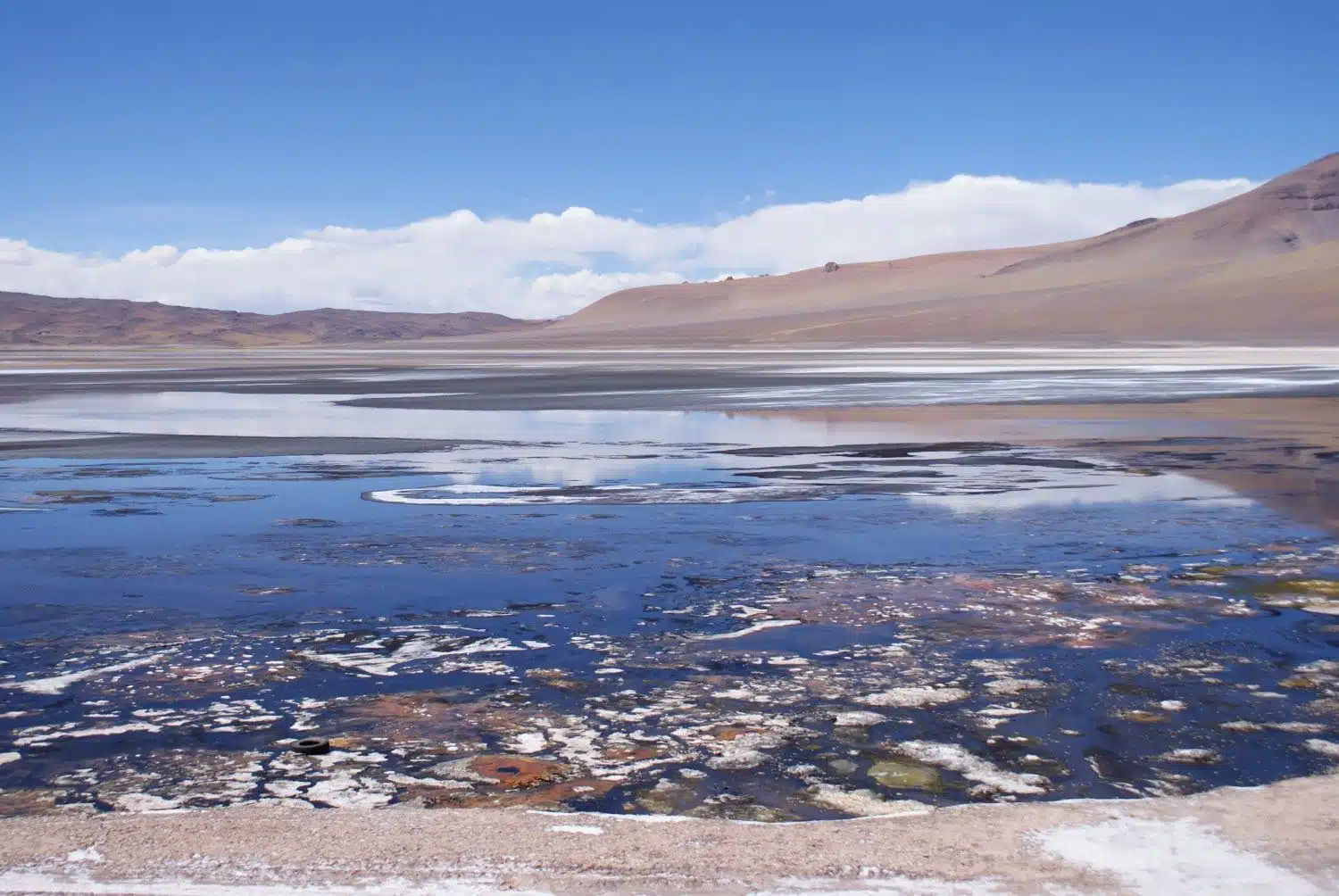
Spend a few days taking tours or driving yourself around the Atacama Desert .
Be sure to see the highlights such as El Tatio Geyser Field and the Valle de la Luna . The Laguna Cejar , where you can float in the salt water, is another must-see.
Get off the beaten track in the Atacama Desert and you’ll be well rewarded… High altitude lakes such as the Salar de Quisquiro and Salar de Capur look like they’re straight off of another planet.
Don’t forget to bring your binoculars – the Atacama has some of the clearest night skies in the world and the stargazing is unrivalled .
The Perfect 3-Day Atacama Itinerary
Days 8-12: The Bolivian Altiplano
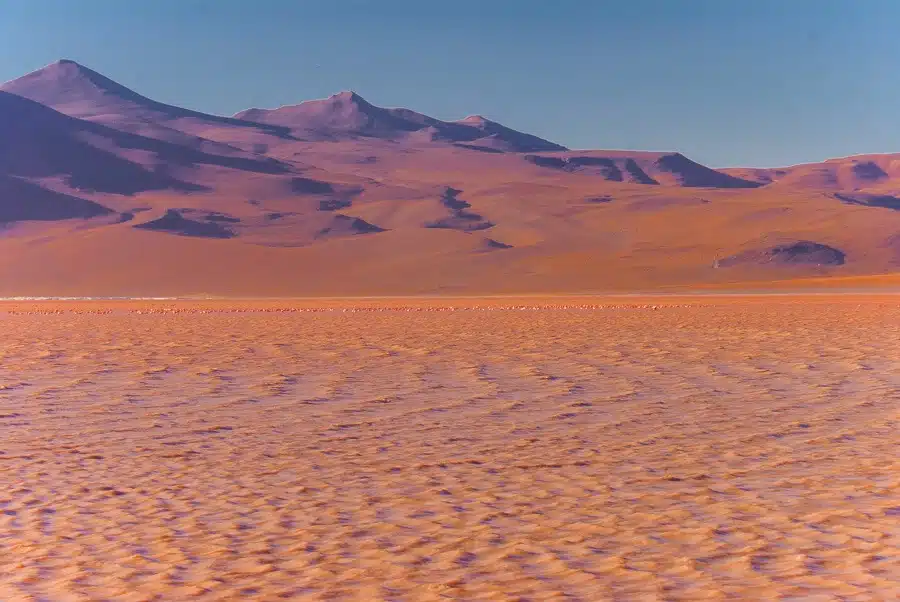
Hop over the border to Bolivia to the small Bolivian town of Tupiza to start a four-day adventure across the Bolivian Altiplano .
Visitors tend to take tours along this route, though it is possible to drive a rental vehicle (this will need to be a 4×4 – the terrain is very rough).
Either way, you’ll see thrilling Bolivian landscapes such as the Laguna Verde (Green Lake), the Quebrada de Palala and the surreal Laguna Colorada (Red Lake).
Day 13: The Salar de Uyuni
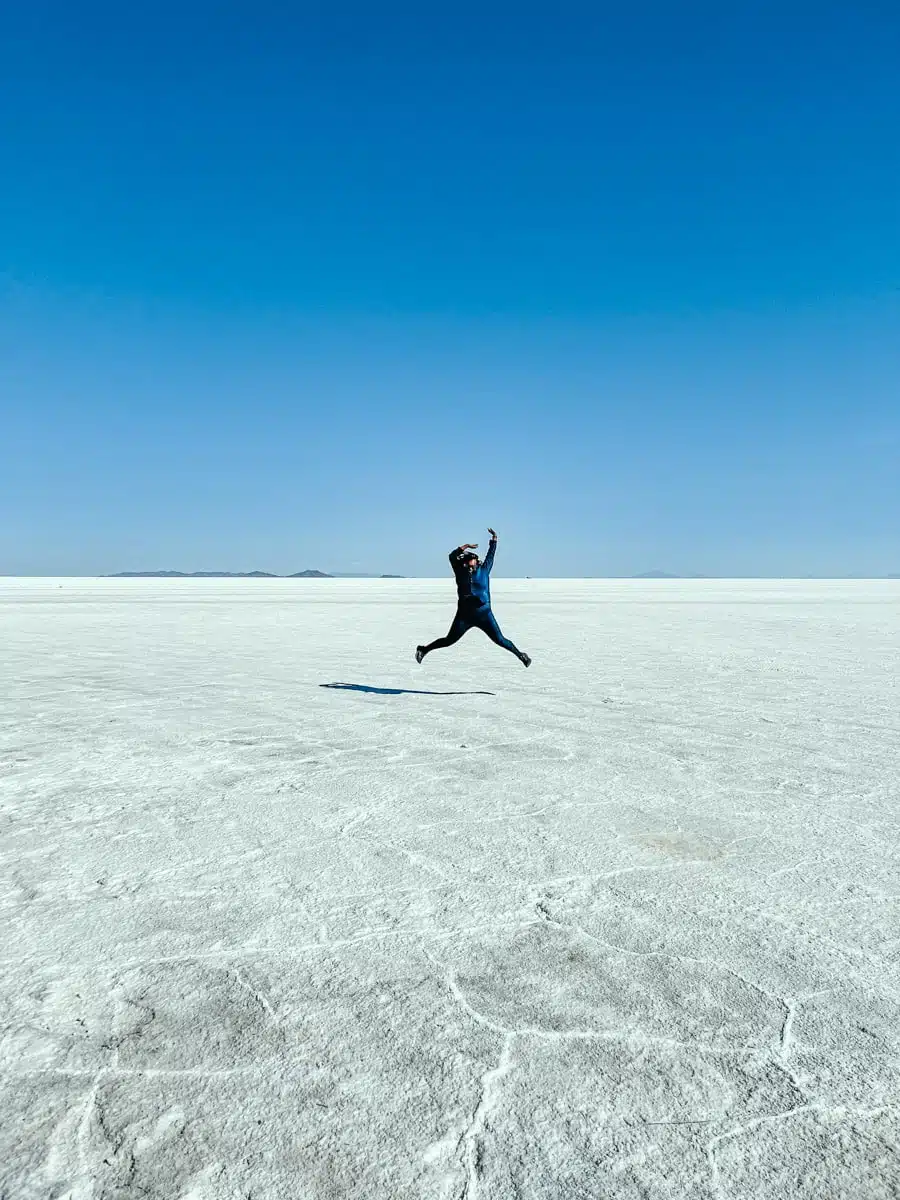
Carry on to explore the Salar to Uyuni (Bolivian Salt Flats) , the world’s largest salt flat (a place we love so much, we’ve written a whole guide on it: when to visit the Bolivian salt flats ).
Having met with the locals at the village of San Cristobal, walk up the Valle de las Rocas, and see unparalleled views of the Ollagües Stratovolcano and the flamingo-lined Hedionda shores.
Spend the night at the luxurious Salt Palace, the world’s first salt hotel.
Palacio del Sal
Day 14: Calama and Home
Your two weeks in South America are almost over.
The last day of this South America itinerary consists of walking along the never-ending salt-flats, and stopping at Incahuasi Island to see the remains of the once-submerged volcano.
You’ll return to Calama and then take a flight to Santiago for your journey home.
2 Weeks in Patagonia
Destinations: El Chaltén, Mount Fitzroy, Lago Argentino, Perito Moreno Glacier, El Calafate, Puerto Natales, Torres del Paine
Countries: Chile and Argentina
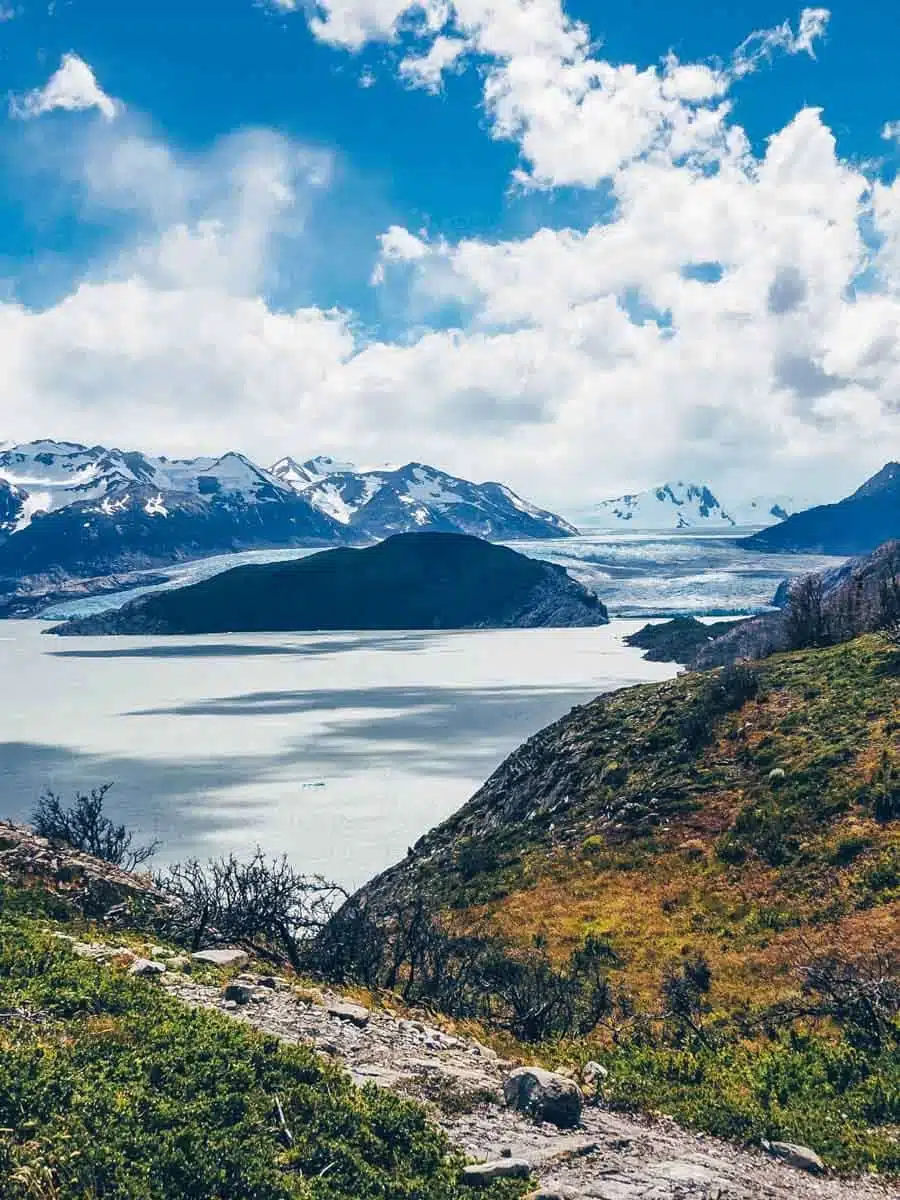
Patagonia needs no introduction – tucked away in the southernmost region of South America, its vast landscapes and barren seascapes are like something out of your imagination. Except this is definitely real life and you can go there.
Once, Patagonia was only inhabited by glaciers and wildlife – something that’s difficult to forget when you look out at empty sceneries and wide-open views.
You could reasonably spend a lot longer in Patagonia but we’ve created the perfect Patagonia 2 week itinerary to showcase the region’s highlights.
Day 1: El Chaltén
Kick off your South America two week itinerary in Patagonia in the small but thriving backpacking town of El Chaltén in Argentina.
This tiny hamlet has expanded over recent years and now boasts some good hotels and cool restaurants and bars – make sure to check out La Tapera and Mathilda.
Travel to El Chalten and recover from your journey: you’ll need your energy for tomorrow.
Don Los Cerros Boutique Hotel & Spa
Days 2 + 3: Mount Fitz Roy
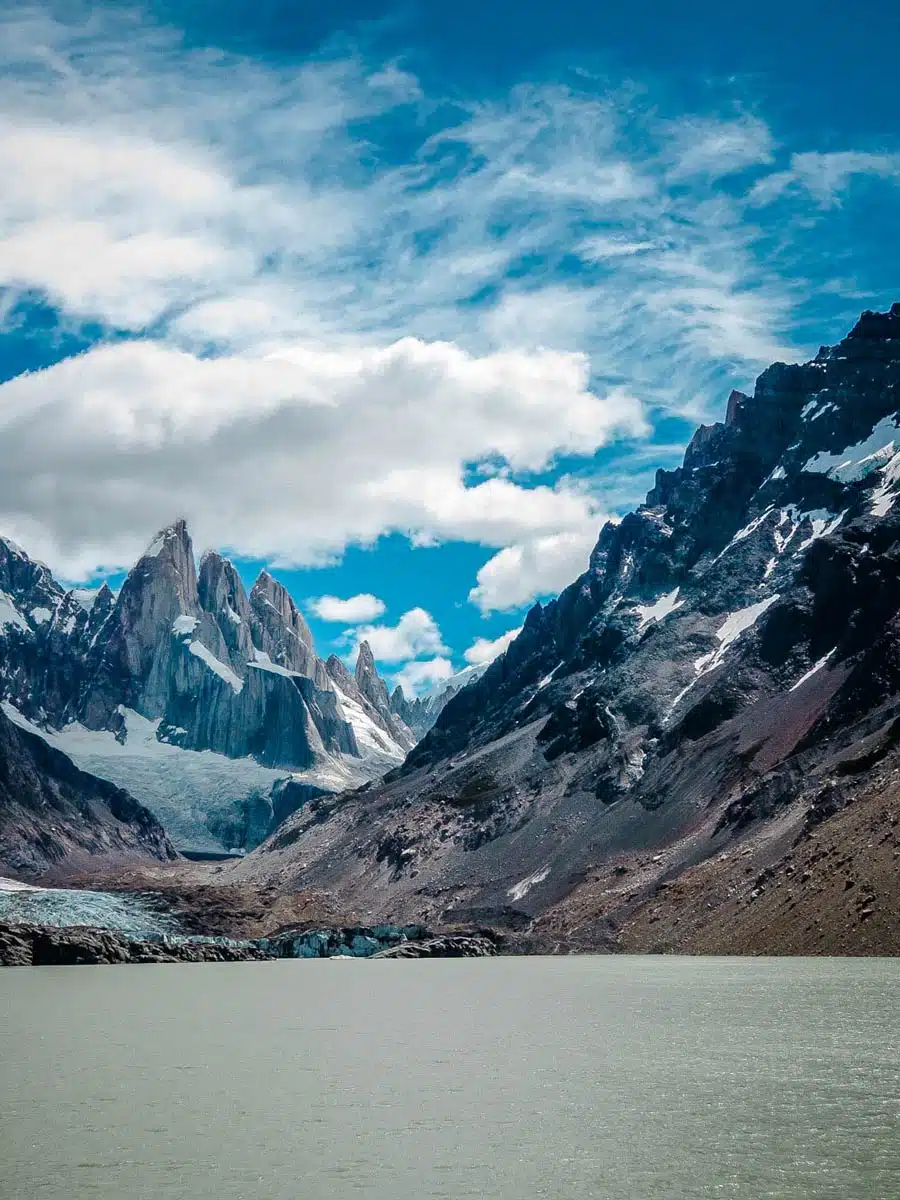
Time to roll out the big hiking legs to head on a two-day trip to Mount Fitz Roy, which takes about 4 hours hiking each way, setting camp at Campamento Poincenot overnight.
Mount Fitz Roy is on the border between Argentina and Chile and was first climbed in 1952 by Frenchmen Lionel Terray and Guido Magnone.
Expect to see stunning rocky outcrops giving way to gorgeous blue covered lagoons and snow-capped peaks in the near distance.
After your camp, you’ll head back to El Chaltén for another night before you move on.
Campamento Poincenot
Days 4 + 5: Lago Argentino
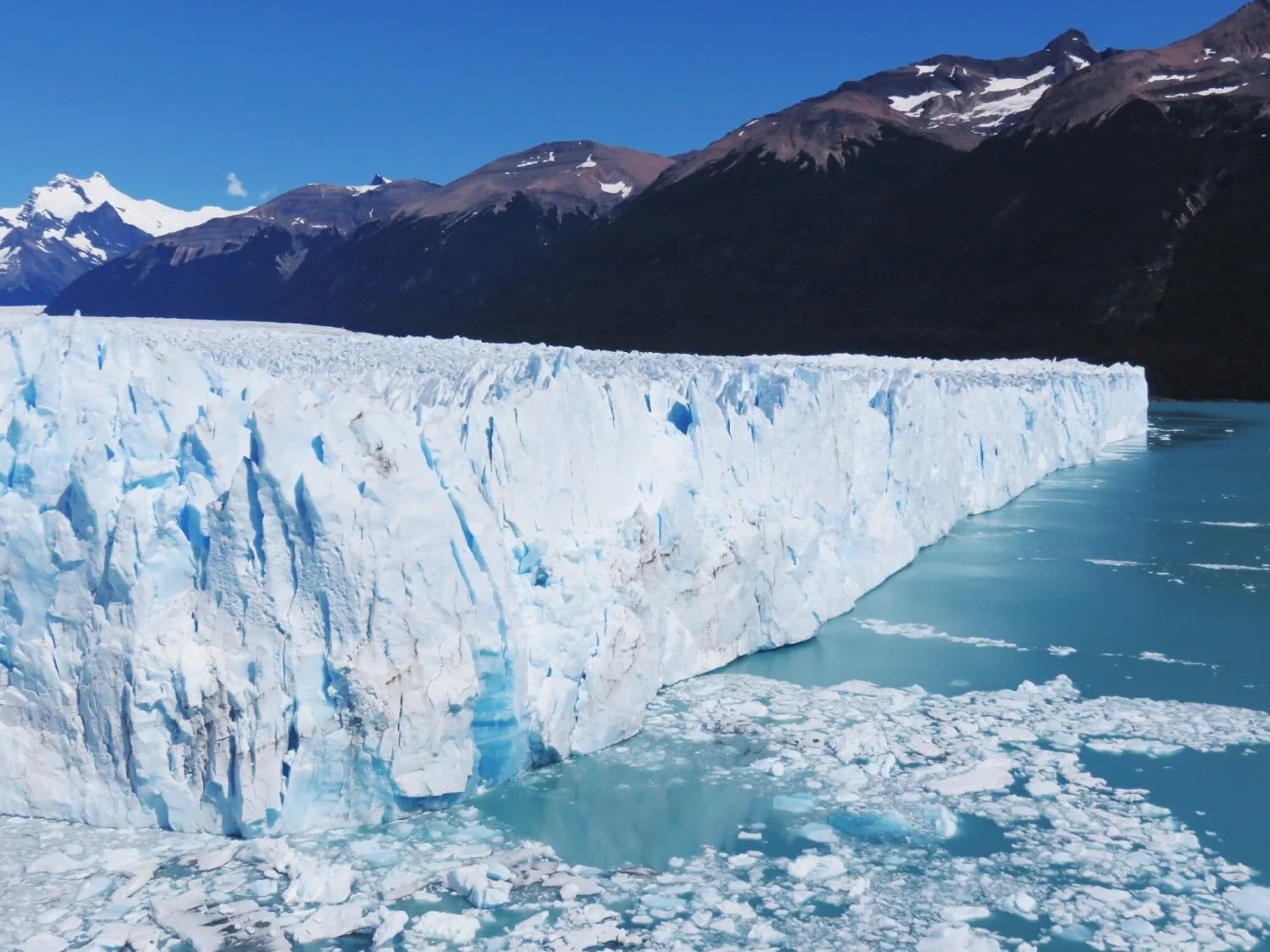
Stunning as El Chalten and its surroundings are, you’ve barely scratched the surface. It’s time to transfer to Lago Argentino, partly via Ruta 40, Argentina’s most famous highway. Once there, keep driving to the Lago Roca campsite (in the Parque Nacional Glaciares) on Route 15 for the night.
The next day you will then hike to the breathtaking Perito Moreno Glacier , one of the most beautiful glaciers in the world, before heading to Puerto Bandera for a boat ride to the glacier’s edge.
Have your cameras at the ready as you’ll see sights you’ve never seen before on this incredible cruise.
Day 6: El Calafate
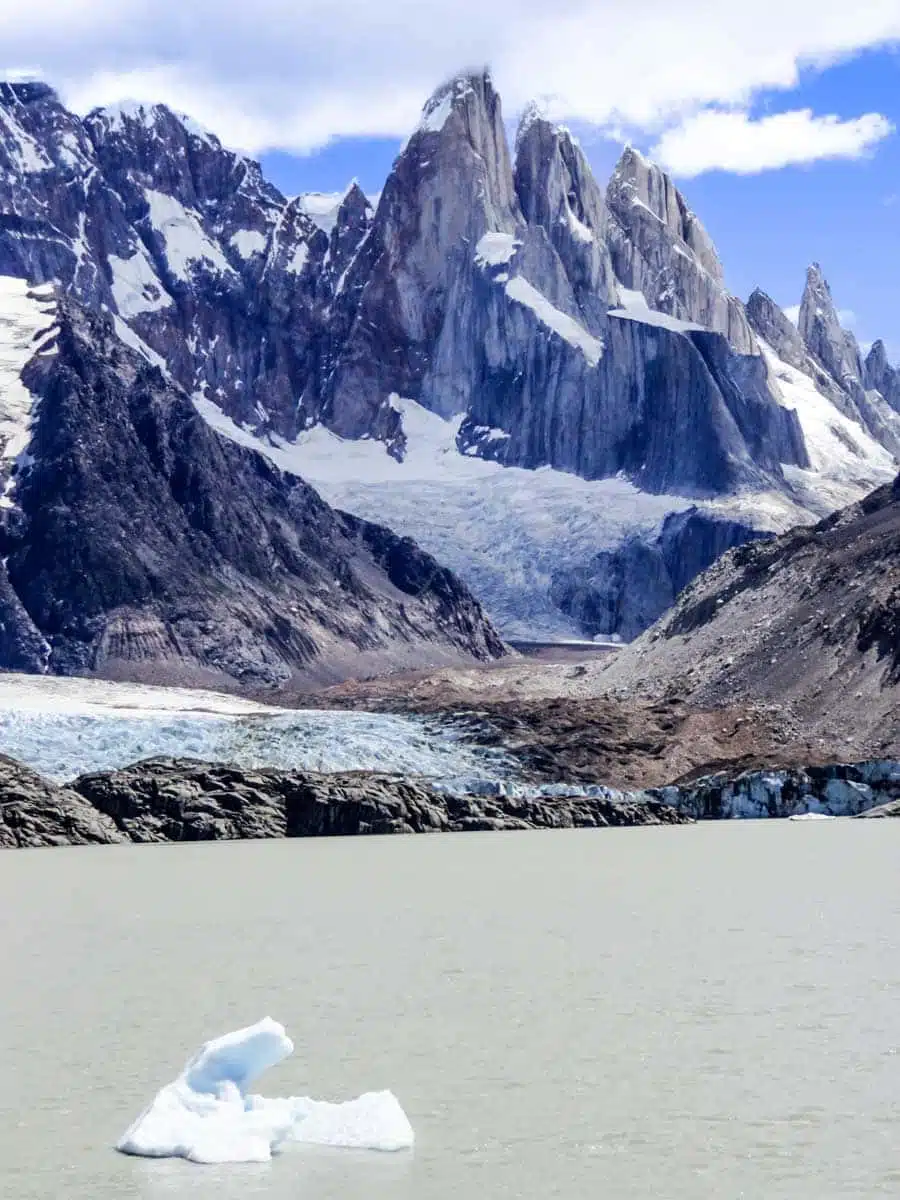
Take a road trip to El Calafate , 51 km east of Puerto Bandera. El Calafate is well connected – making it the perfect overnight stop.
The town also has a range of accommodation, from luxury hotels such as Esplendor El Calafate , to more budget hostels and campsites depending on your budget ( Hostel America Del Sur is a fabulous choice and puts on an incredible Asado feast once every few days).
While you’re in town, take some time to walk out to the spectacular Reserva Natural Laguna Nimez – it’s a great place for spotting flamingos and other birdlife.
Esplendor El Calafate or Hostel America Del Sur
Day 7: Puerto Natales
Hop on a minibus across to the Chile border at Rio Turbio and stop in the lively port city of Puerto Natales, where you will stay overnight.
Hostel-wise The Singing Lamb gets our vote – if you’re looking for something a little more upmarket, go to Hotel Indigo or The Singular for a high-end option.
There’s not a huge amount to do in Puerto Natales – it’s a relatively quiet spot with a nice atmosphere. If you get there early enough, the talk at Erratic Rock about the W Trek is worth attending as they’ll talk you through the conditions in Torres Del Paine and what to expect on the hike.
Otherwise, attractions such as the Municipal Historical Museum lie in the city, which displays artefacts from the region’s indigenous population.
The Singular Patagonia Hotel
Days 8-13: W Trek, Torres del Paine National Park
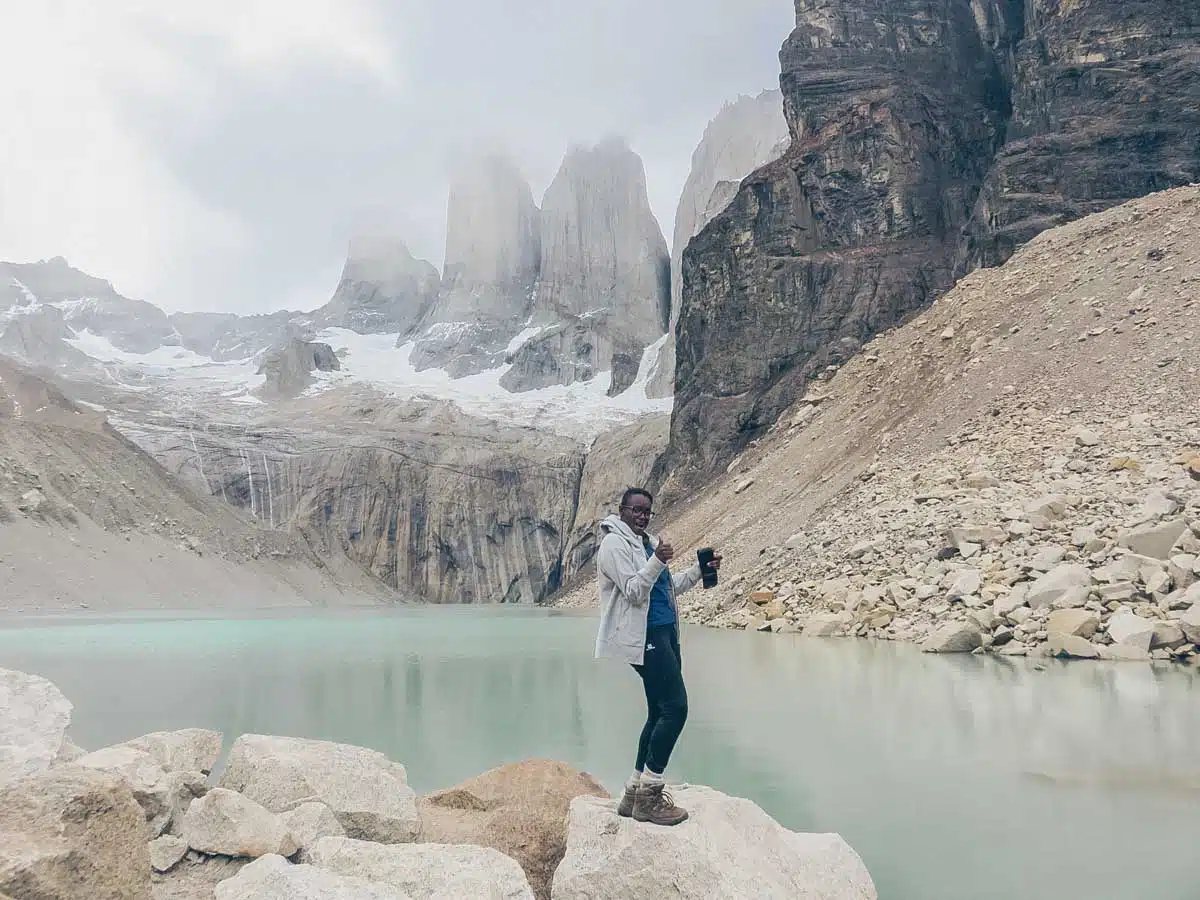
Eep – if you’ve always dreamt of hiking in Torres del Paine National Park, today’s the day that dream becomes a reality. Take a transfer to the park, where you will then take on the 5 day hike on the W Circuit .
The hike is often quoted as one of South America’s best, thanks to a range of mountain, glacier and lake views, ending with the spectacular Torres del Paine themselves.
If you have a little more than two weeks in South America, you can do the 8-day O Trek, which extends the route to a quieter section of the park.
You can camp or book the basic but pleasant refugios on the W Trek, if you opt for the O, you’ll have to camp.
Either way, you’ll want to check out this Torres del Paine packing list .
Day 14: El Calafate
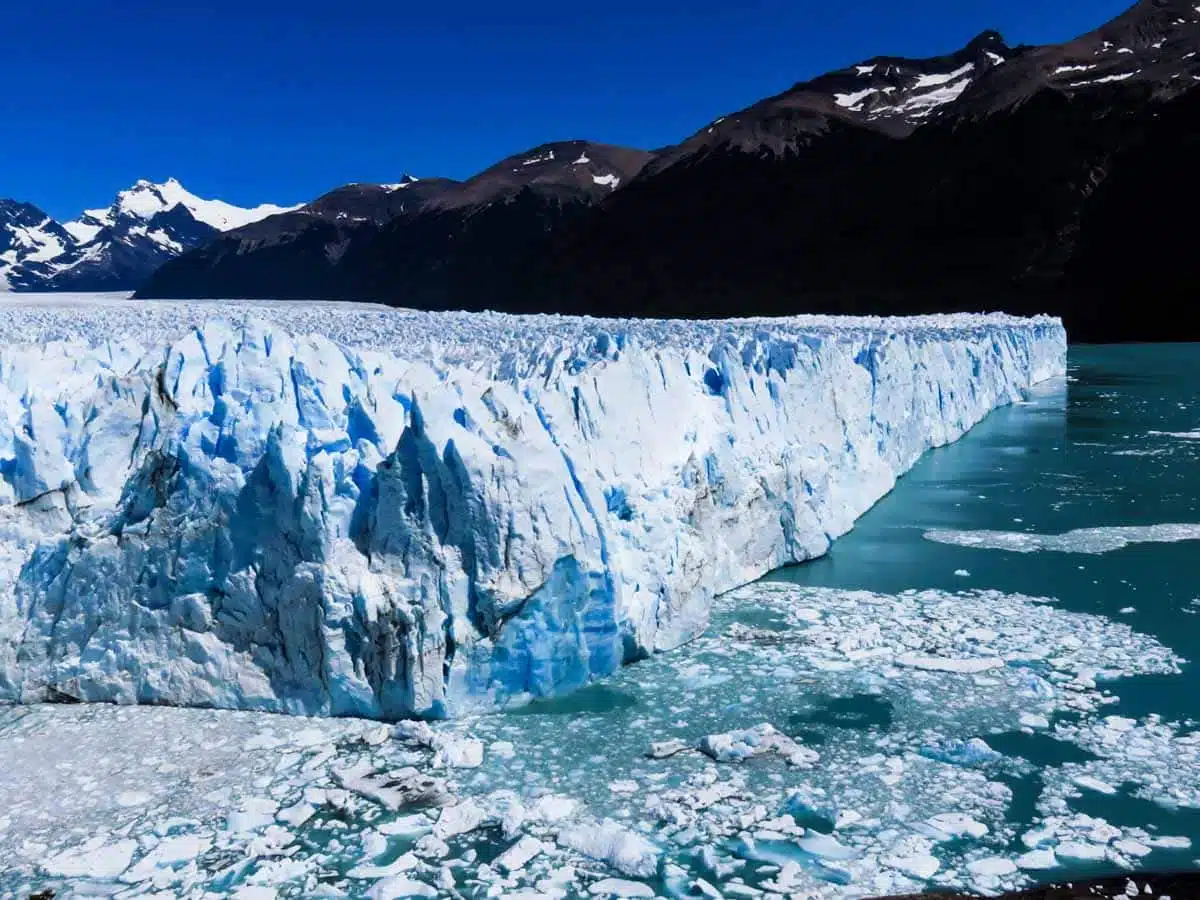
On the last day of your two weeks in Patagonia, head back to El Calafate to have a rest and perhaps a night in a luxury hotel to unwind and relax (with some steak, of course) before going back to reality.
Exploring the Incan Empire and Lake Titicaca
Destinations: La Paz, Copacabana, Lake Titicaca, Puno, Cuzco, Inca Trail, Machu Picchu
Countries: Peru and Bolivia
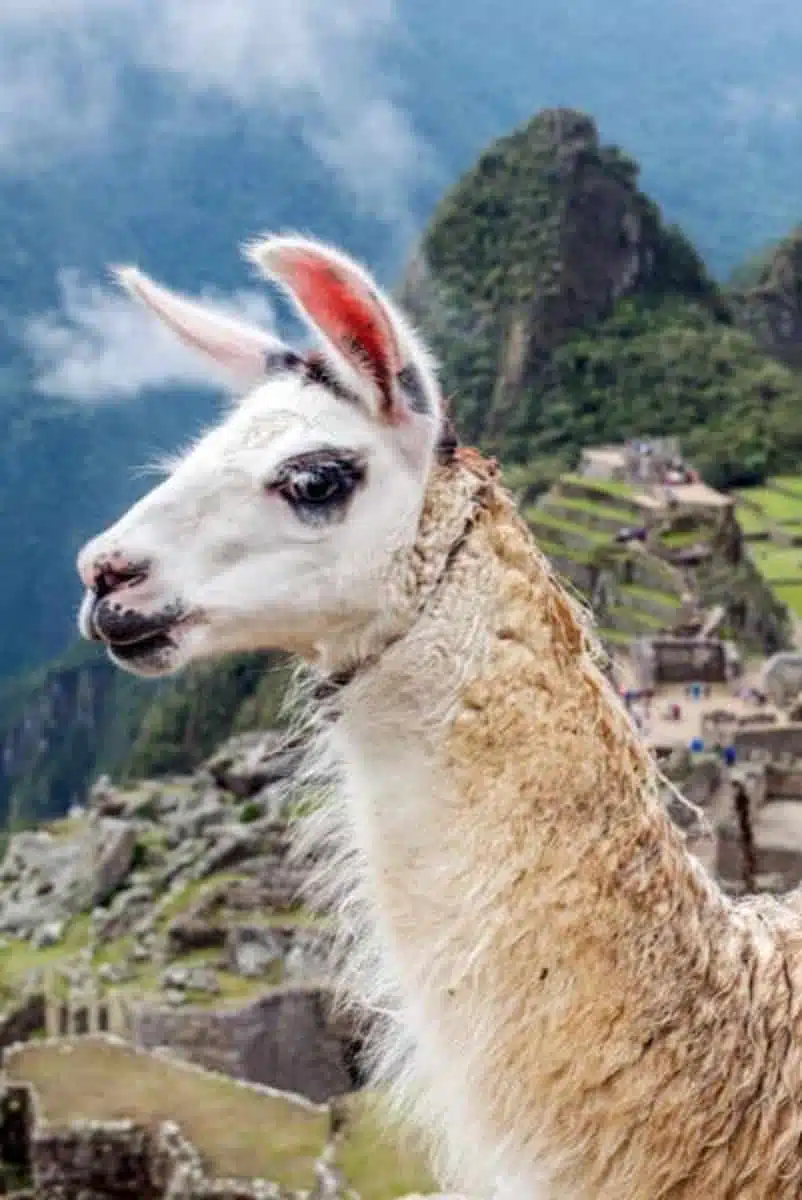
Our second itinerary for two weeks in South America takes you through the inner parts of the Incan Empire, witnessing the relics of the Quechua and Aymara nations of Bolivia and Peru .
This route not only gives you an insight into the culture of the Incan peoples, but also some incredible landscapes including Machu Picchu and Lake Titicaca, neither of which should be missed.
Days 1 + 2: La Paz
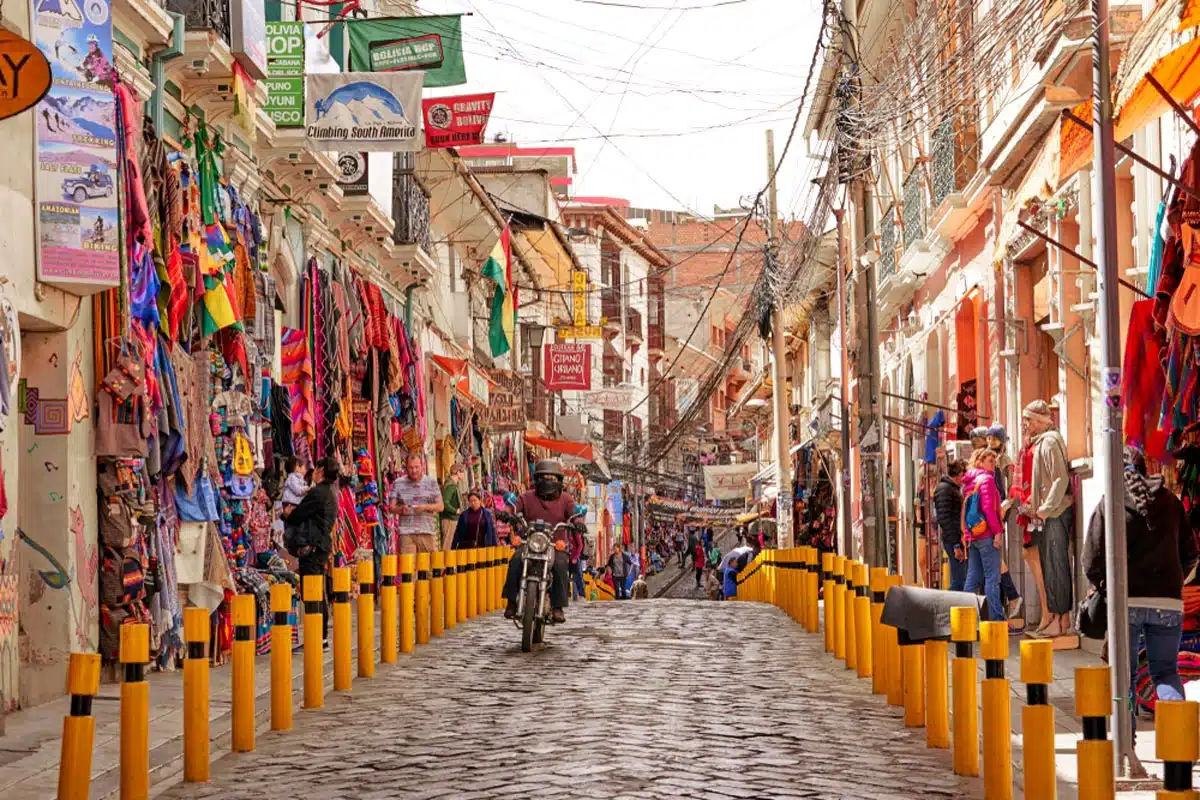
Arrive in La Paz , your base for the next 2 nights of your South America trip itinerary. La Paz sits on top of the Andes’ Altiplano plateau, more than 3,500m above sea level, and boasts Mount Illimani as its dramatic backdrop.
It is also home to the world’s longest and highest cable car system, named the ‘Subway in the Sky’. With fabulous local cuisine, Andean music, and a range of accommodation, La Paz is a great place to stop before you begin your big adventure.
Casa Grande
Day 3: Copacabana, Lake Titicaca
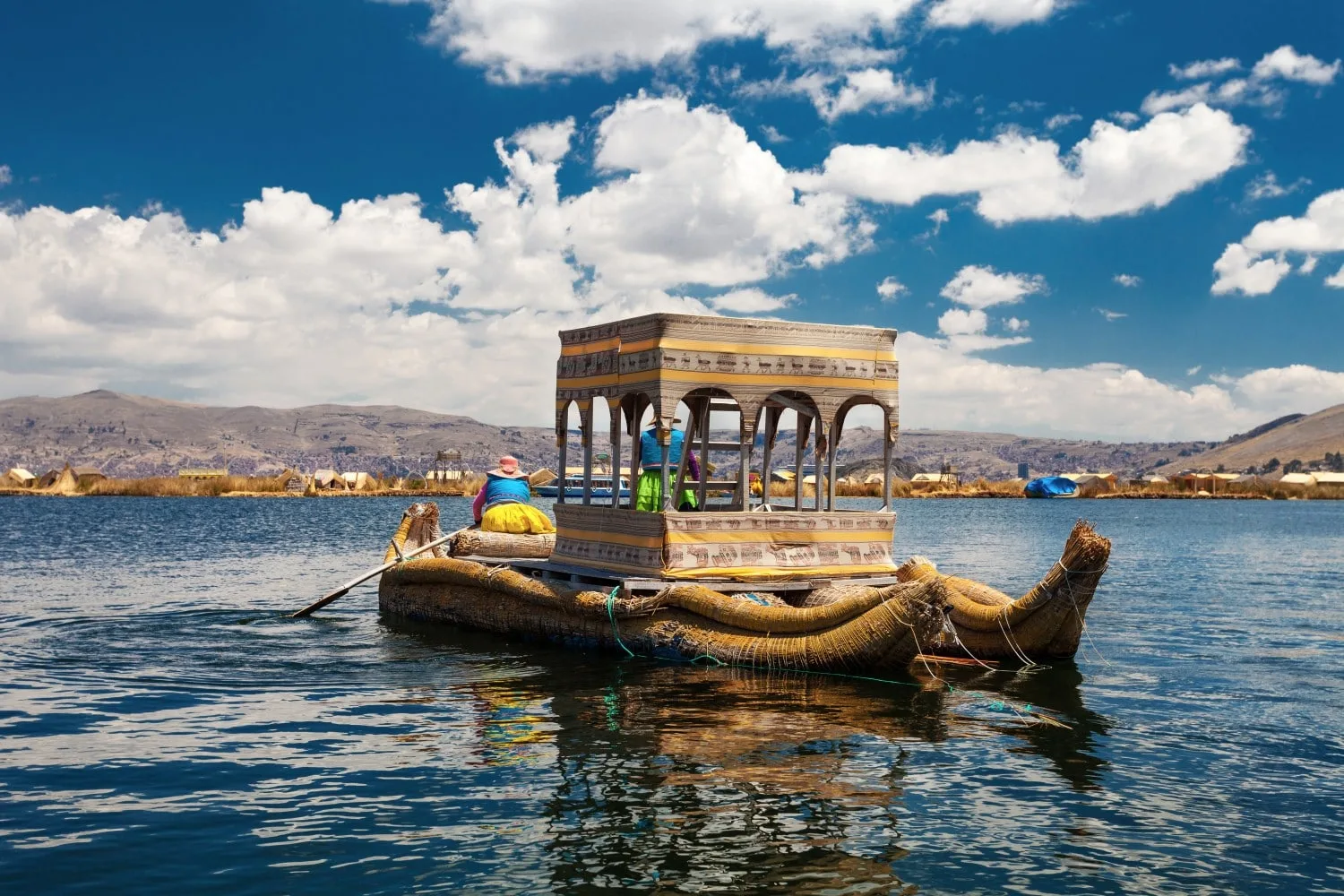
From La Paz, hop on a bus trip to Lake Titicaca , which passes through Copacabana, a lakeside resort where you will stay for the night.
Take a day trip out on the lake, which also happens to be the highest navigable body of water recorded on Earth, to the Isla del Sol, which inhabits many pre-Columbian ruins.
Interestingly, Lake Titicaca is said to be home to the birthplace of the Incas and there are plenty of ruins to explore, as well as Titicaca National Reserve which protects rare aquatic wildlife, including giant frogs.
Hotel Onkel Torres
Day 4: Puno, Lake Titicaca
Take a boat ride to Puno. From here, you can take boat trips to the totora-reed islands, man-made islands built by the indigenous Uros using totora reeds.
Then head back to Puno to see the sights; we recommend the beautiful Cathedral Basilica of St. Charles Borromeo. If you’re lucky and in town at the right time, you can enjoy one of the city’s traditional festivals featuring Peruvian music and dancing to celebrate its label as Peru’s “folk capital.”
Hotel Lago Titicaca
Days 5 + 6: Cusco
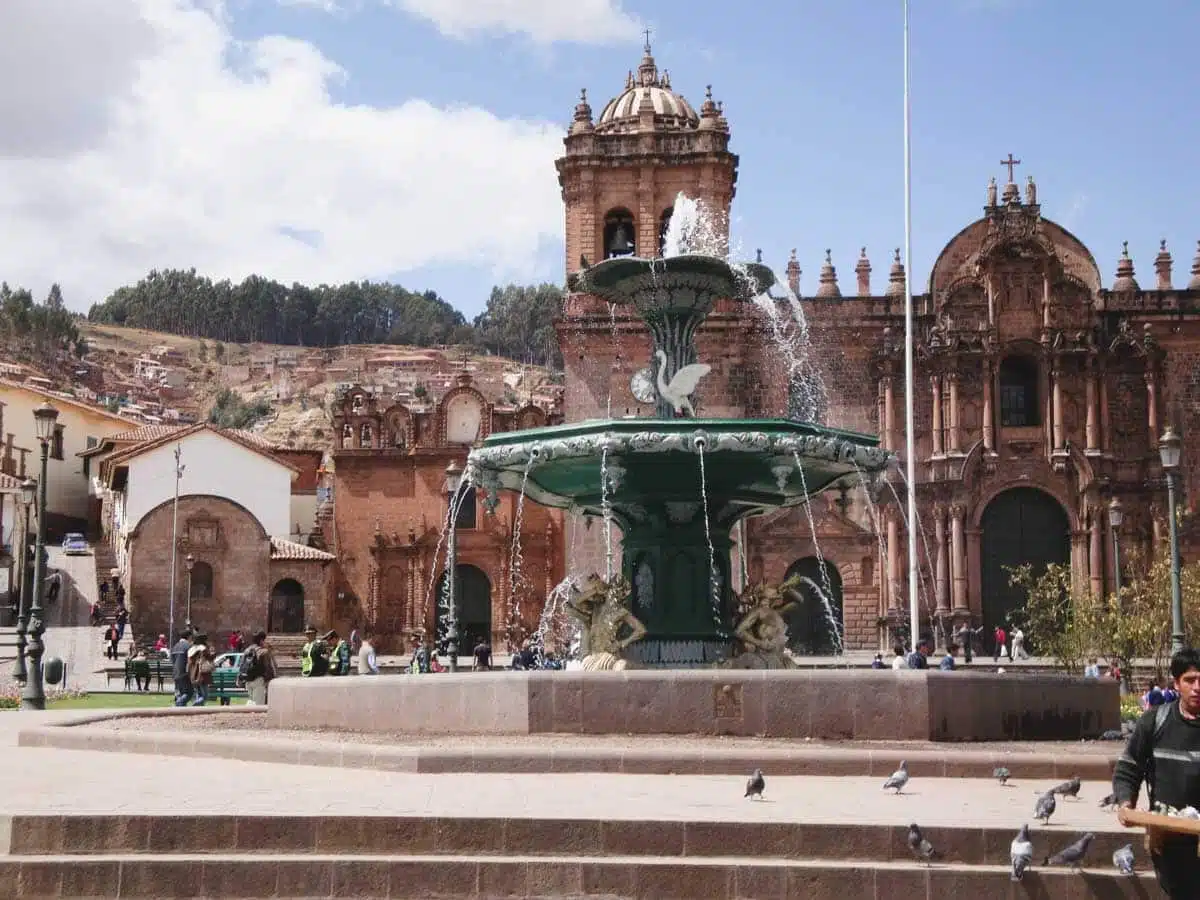
Puno to Cusco! Known for its architecture and history, and named Inca’s ‘navel of the world’, Cusco is home to the region’s best hotels, along with exciting bars, restaurants and museums.
We think that staying here for two nights is best, as there’s a lot to see. Check out our pick of the best things to do in Cusco .
You’ll be 4,000 metres above sea level here, so don’t be surprised if you feel a little out of breath at first. It takes a little while to fully acclimatise to the altitude.
Antigua Casona San Blas
Days 7-10: The Inca Trail
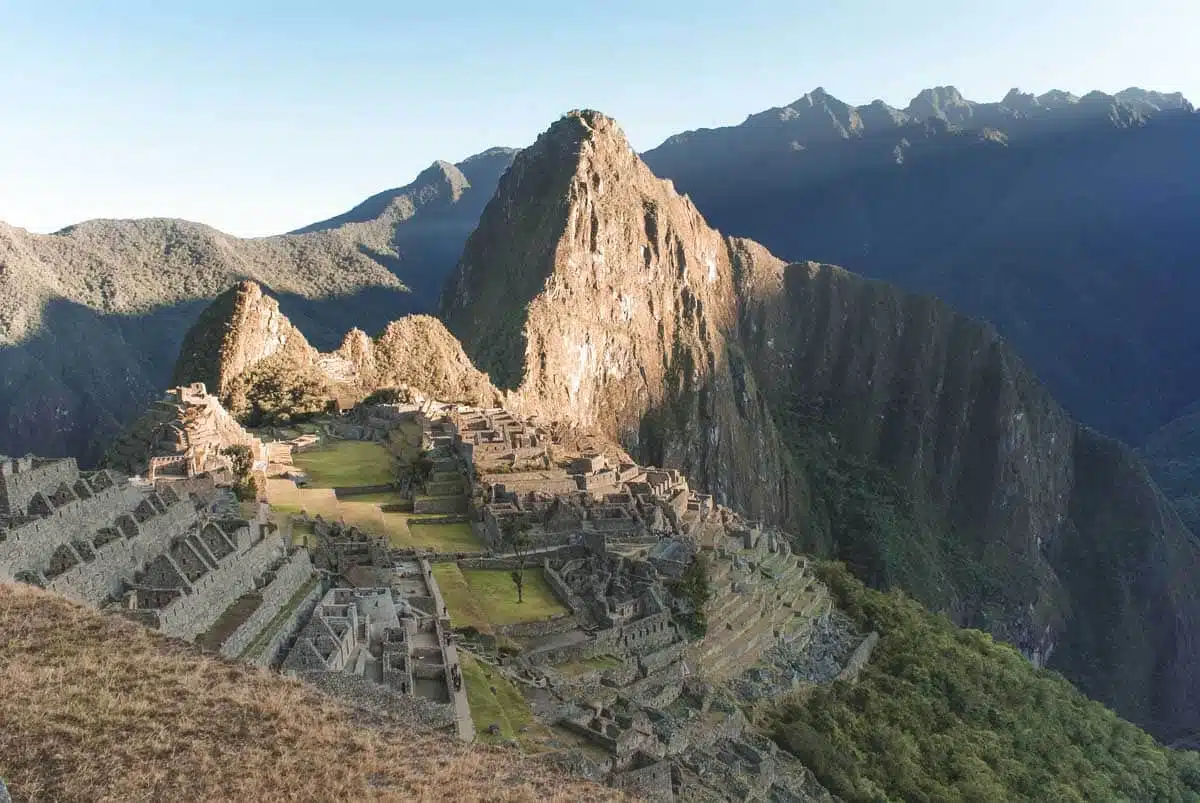
You will be picked up from your hotel early in the morning, and taken on a 3 hour trip to Kilometre 82, the start of the 4-day Inca Trail to Machu Picchu. Rated one of the 5 best treks in the world, this is a 100% must for your bucket list.
The Inca Trail trek has to be booked well in advance – if you don’t nab a space, alternative treks such as Salkantay and Lares are worth looking into.
If you don’t fancy those, explore more of Cusco and its surrounds before heading to Machu Picchu Pueblo (also called Aguas Calientes) to go directly to Machu Picchu.
Salkantay vs Inca Trail: Which is Better?
Day 10: Aguas Calientes/Machu Picchu Pueblo
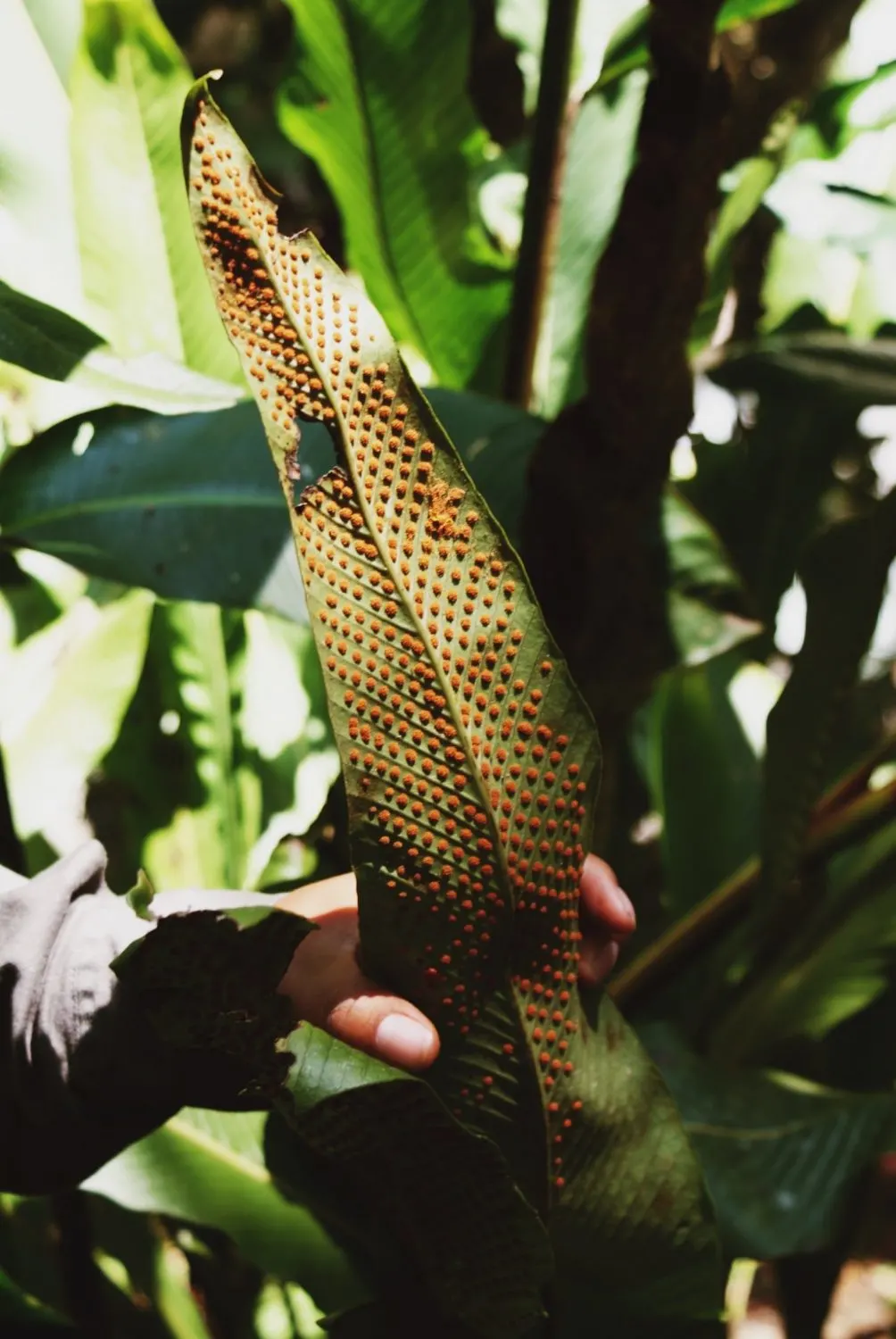
After having explored Machu Picchu, hike down to Aguas Calientes, where there are a number of hotels to wind down at for the night.
Aguas Calientes isn’t the most relaxing of towns, so unless you have a burning desire to head out and sample the nightlife, take some time to decompress and relax after your strenuous hike.
Inkaterra Machu Picchu Pueblo
Day 11: Poroy to Lima
Take a train from Aguas Calientes to Poroy, marvelling at the Sacred Valley on the Vistadome Train or the more luxurious Hiram Bingham train. After a 25 minute transfer, you’re back in Cusco. Fly to Lima.
The Lot Boutique Hotel
Days 12-14: Lima + Home
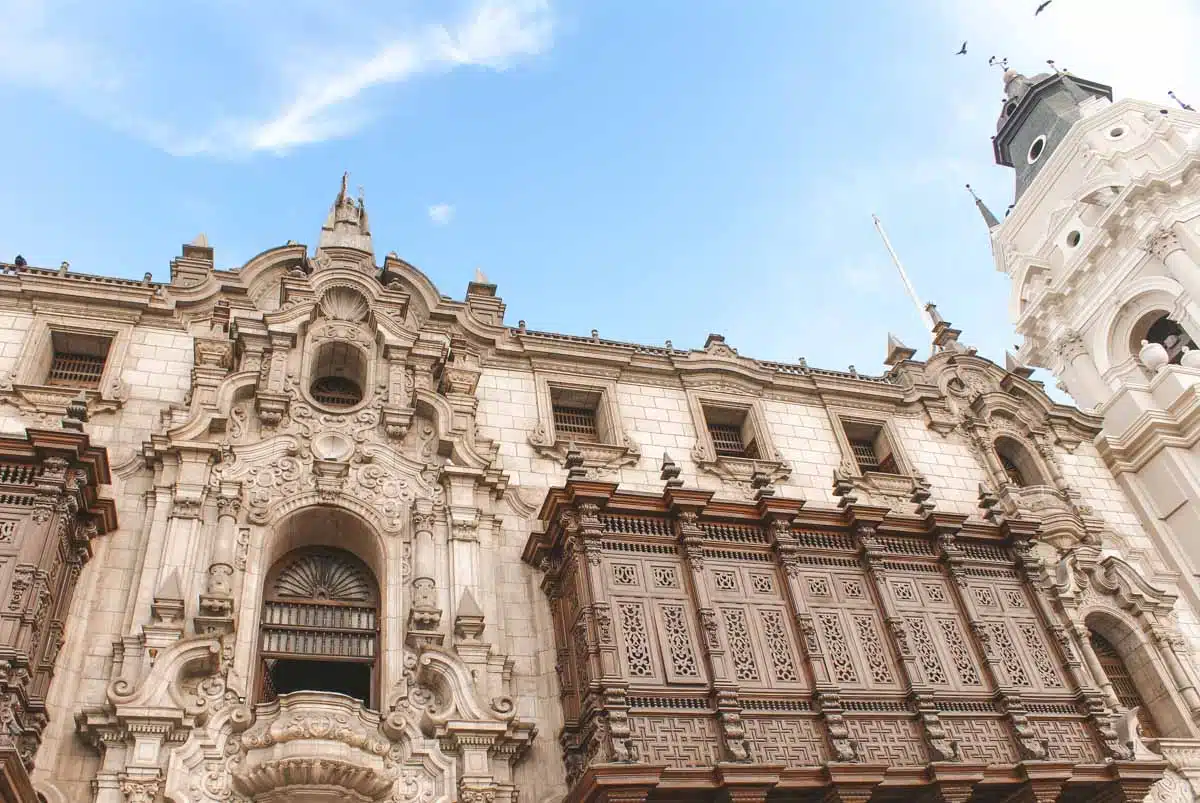
Take a whirlwind tour around Lima, the Peruvian capital. Stroll along the Malecon, visit the old town with its majestic cathedral and the striking Monasterio de San Francisco.
Street art lovers should head to Barranco – the centrepoint of Lima’s street art scene.
Don’t forget to try a few pisco sours and hunt out the best ceviche in Lima along the way.
Unmissable Things to do in Peru
Amazon Adventure
Destinations: Manaus, Tabatinga, Leticia, Iquitos
Countries: Brazil, Colombia, Peru
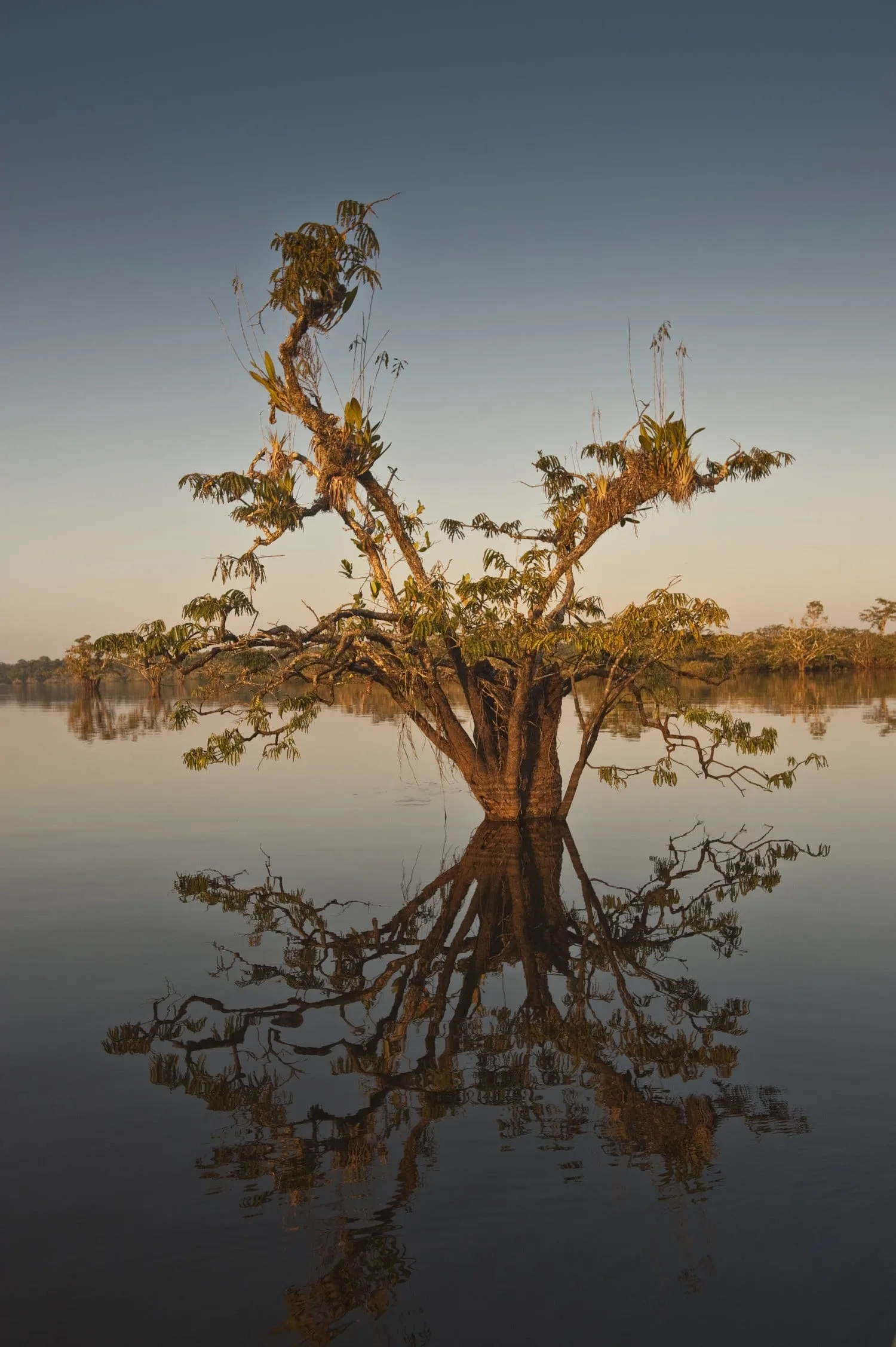
In my humble opinion, this is the best South American itinerary. People visit the Amazon for the mosaic of different plants and wildlife that can’t be seen anywhere else.
This two week South America itinerary gives you time to explore the world’s most famous rainforest and plenty of time to relax on slow boats as the time and the views pass by.
Bring plenty of insect repellent, you’ll regret it if you don’t.
Days 1-2 Manaus
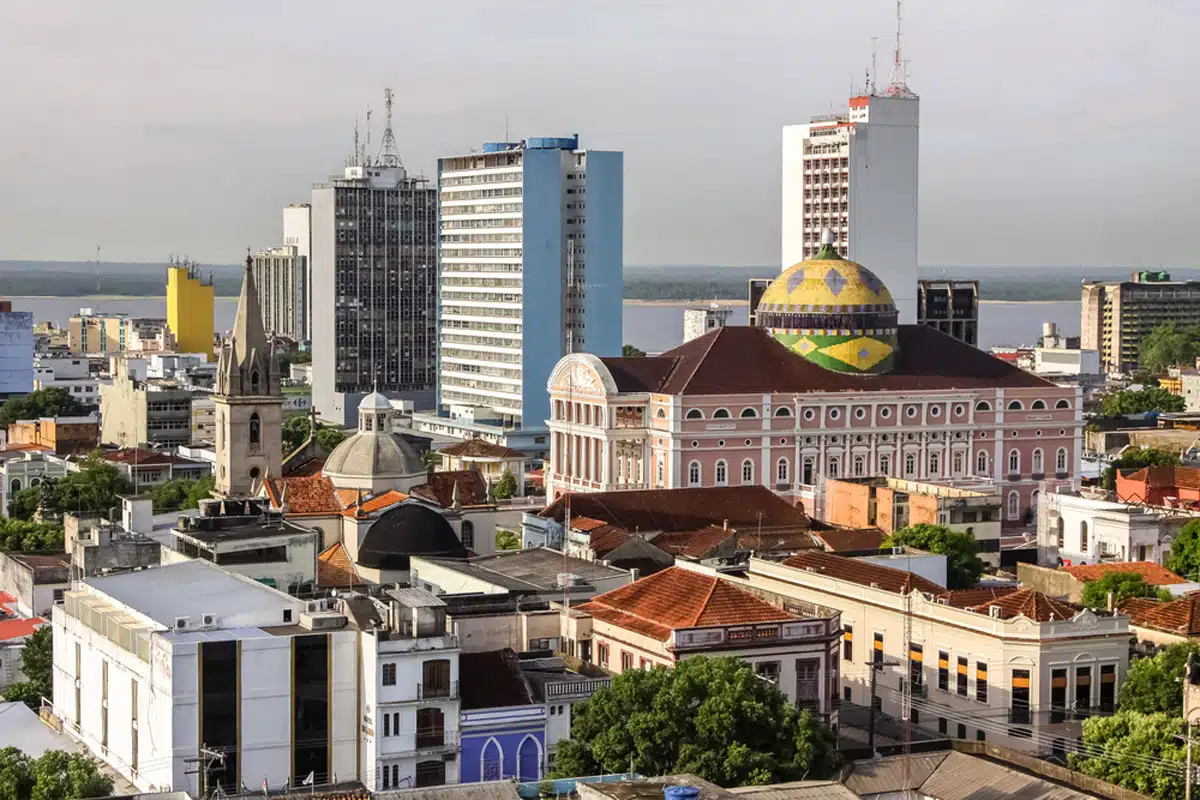
Start in the opulent city of Manaus, the capital of the Amazonas state.
The city was built at the height of the rubber boom at the end of the 19th century and is a testament to the riches the industry brought to the region at that time.
Broad roads, spacious piazzas and the famous Teatro Amazonas opera house are just a few of the relics dating back to that time. We highly recommend taking a one day river trip on the Amazon to spot some wildlife and the meeting of the waters.
Other brilliant things to do in Manaus include learning about the history of the region at the Palácio Rio Negro, and visiting the CIG Zoo to spot Harpy Eagles and Jaguars, before picking up traditional, hand-crafted souvenirs in Taberna do Chef Procópio market.
Hotel Adrianopolis
Days 3-7 Boat journey from Manaus to Tabatinga
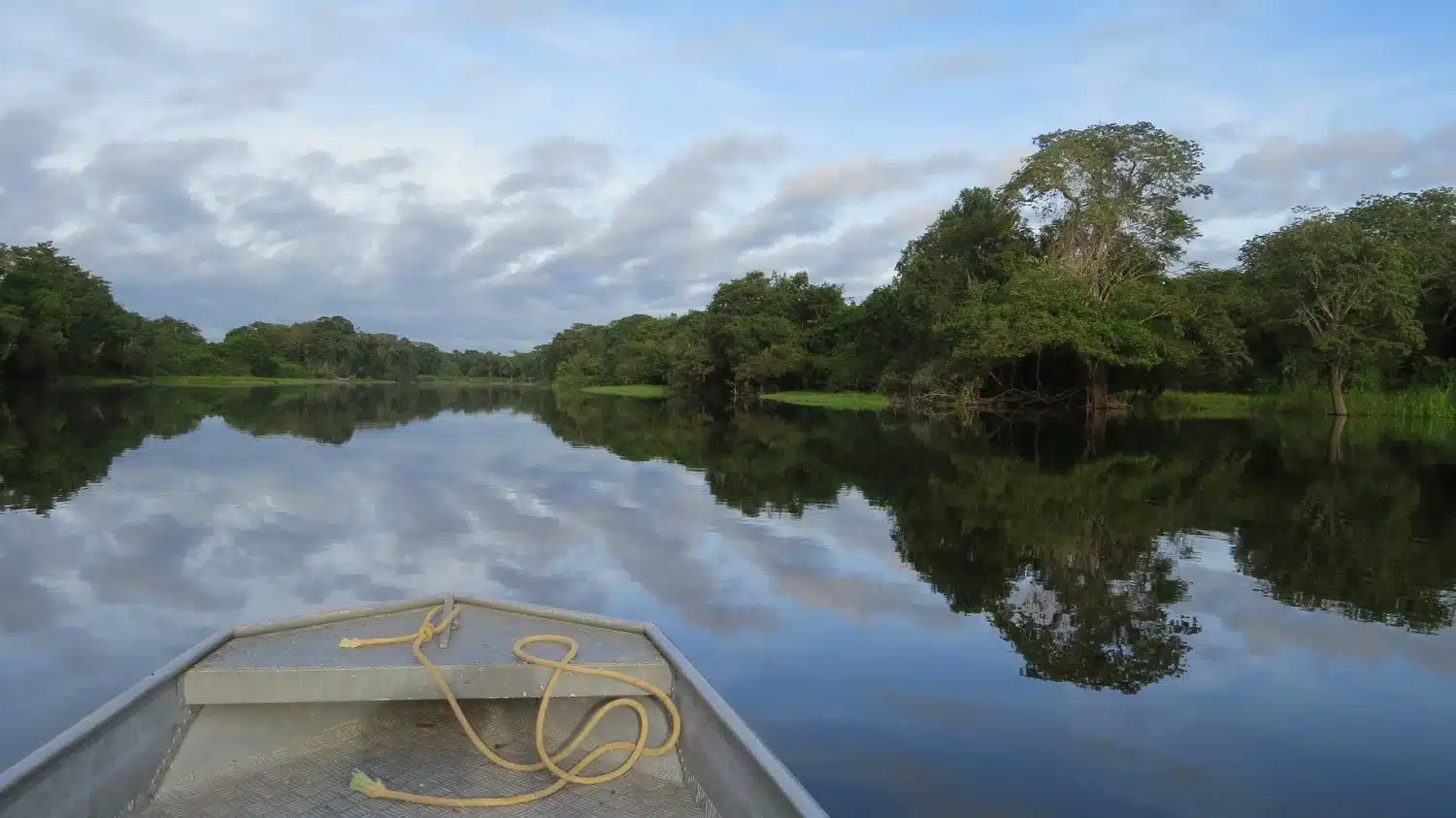
Book yourself onto the mammoth seven-day journey up the Amazon river to Tabatinga at the Brazilian/ Colombian/ Peruvian border. You can either book to sleep in a hammock on deck, or reserve a private cabin.
Take some time to relax, catch up on your travel reading and generally marvel as you float through the jungle.
Make sure you have your cameras at the ready, you’ll find yourself wanting to take plenty of photos as you cruise of the local wildlife and scenery.
Days 7-9 Leticia and surrounds
Boats from Manaus generally terminate at Tabatinga, a slightly shabby border town. Leticia is just over on the Colombian side and a better choice of base for the next few days.
Take a jungle tour to the Parque Nacional Amacayacu where you can spy pink river dolphins and over 500 species of bird among many other things.
We’d recommend spending the night in a hammock in the parque before returning to Leticia for your onward journey – this is where your insect repellent will come in extra-handy.
Decameron Decalodge
Days 10-13 Slow boat from Leticia to Iquitos
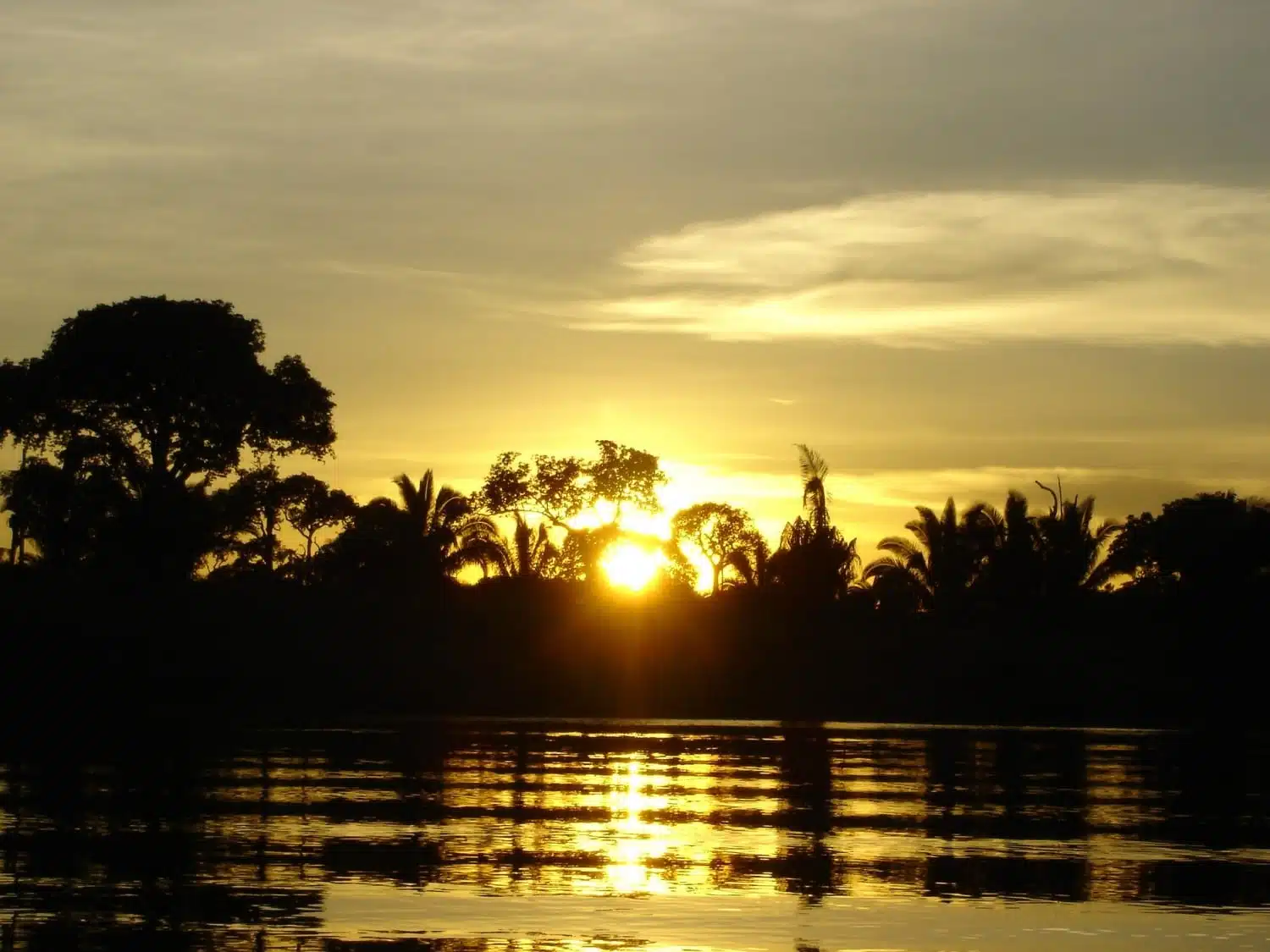
Time for the second slow boat, this time from Leticia to Iquitos in Peru.
You could take a speedboat, which will do the journey in 12 hours – but where’s the fun in that?
Instead, book a space on one of the barges that crawl their way along the Peruvian Amazon to the large city of Iquitos. Lay back, relax, and once again, drink in the astonishing views of this world-famous waterways at a leisurely pace that will help you relax.
Day 14 Iquitos and Home
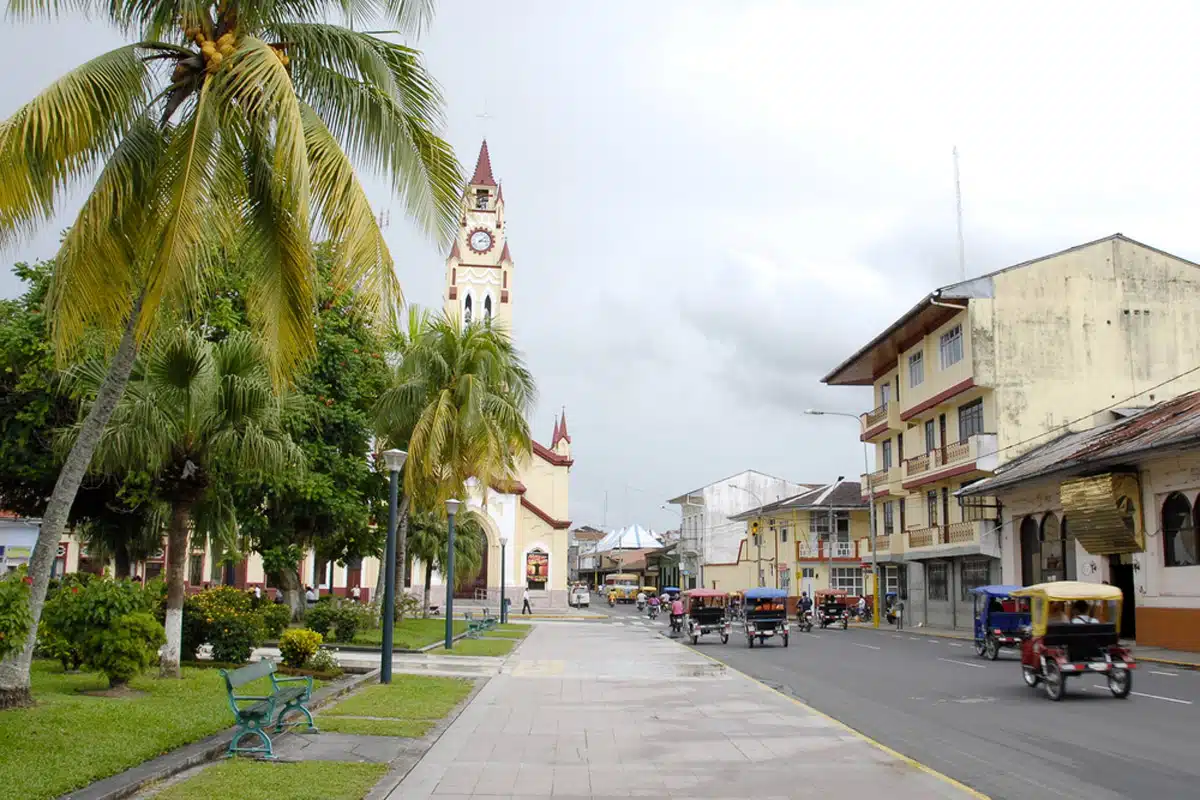
Disembark at Iquitos, another city that benefited hugely from the late 19th century rubber boom.
Check out the elegant architecture and intricate decor in buildings such as The Casa de Fierro, Iglesia Matriz and Casa Khan.
Decompress in one of the laid-back bars and savour the excellent local cuisine before heading home. You can’t leave without trying the Sopa de Motelo (turtle soup) or Tecina con Tacacho (salted pork with mashed fried green banana).
Época Iquitos
You can also explore the Ecuadorian Amazon – read one traveller’s account of his Ecuador Amazon tour.
Beach Lovers’ Itinerary
Destinations – Santos, Guarujá, Ilhabela, Ubatuba, Catuçuba, Paraty, Ilha Grande, Rio de Janeiro, Salvador, Fernando de Noronha, Recife
Countries: Brazil
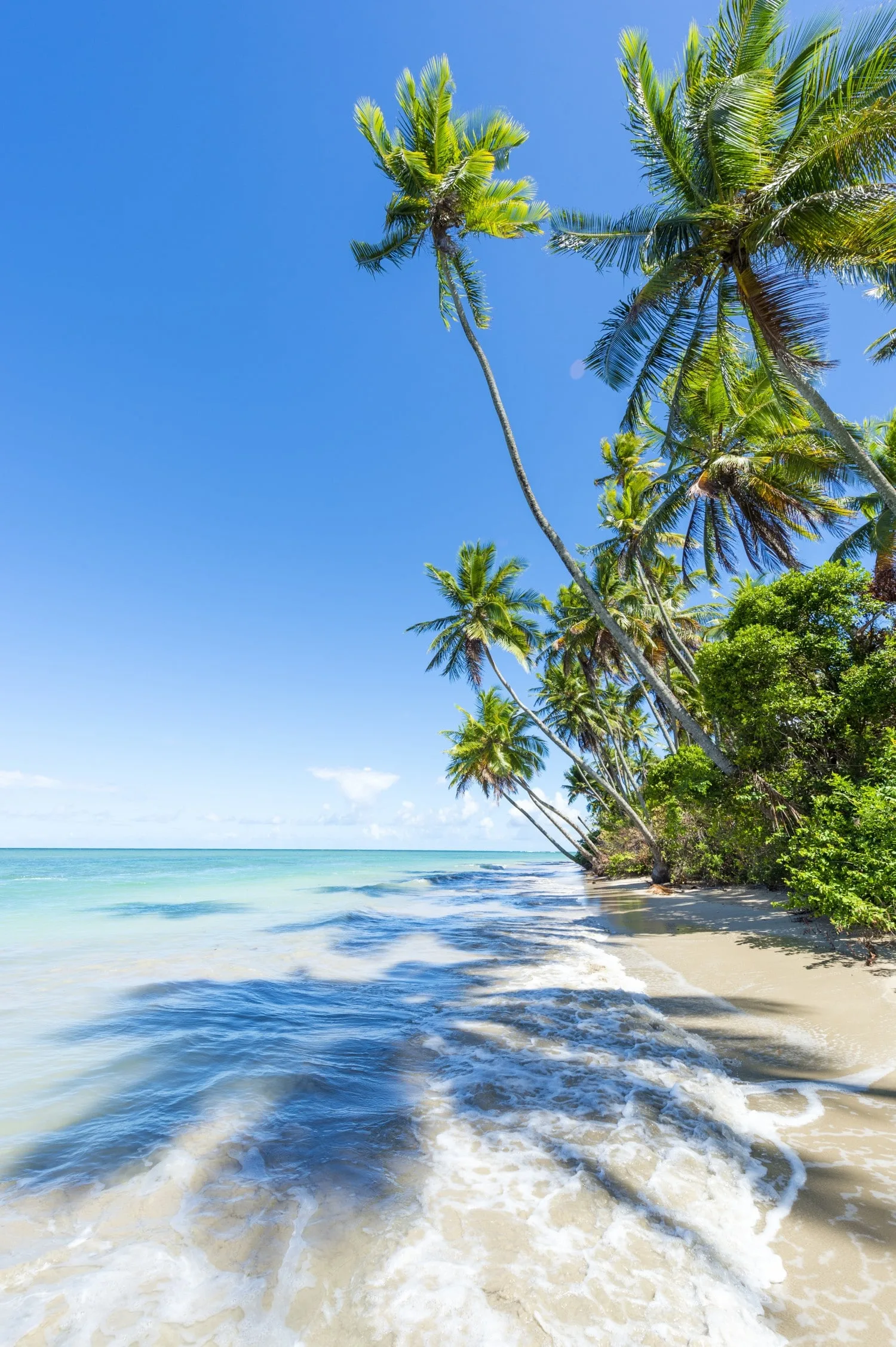
Calling all beach lovers! You think you’ve seen it all? Well, you’re in for a big shock. Just wait until you see the beautiful beaches of Brazil.
You’ll spend two weeks exploring the best beaches in a country that certainly isn’t lacking in sandy spots to flop and drop.
Day 1: Santos
Arrive in Santos, Southern Brazil, home to Brazil’s biggest port.
Spend your first night in Guarujá, a coastal town near São Paolo, and travel on the old latin-style street cars before settling down with shrimp in pumpkin sauce and a refreshing dip in the sea.
Best beach: Iporanga Beach, 25km from the city centre. If you want to extend your trip, there are plenty of things to do in Sao Paolo .
Casa Grande Hotel & Spa
Day 2: Ilhabela
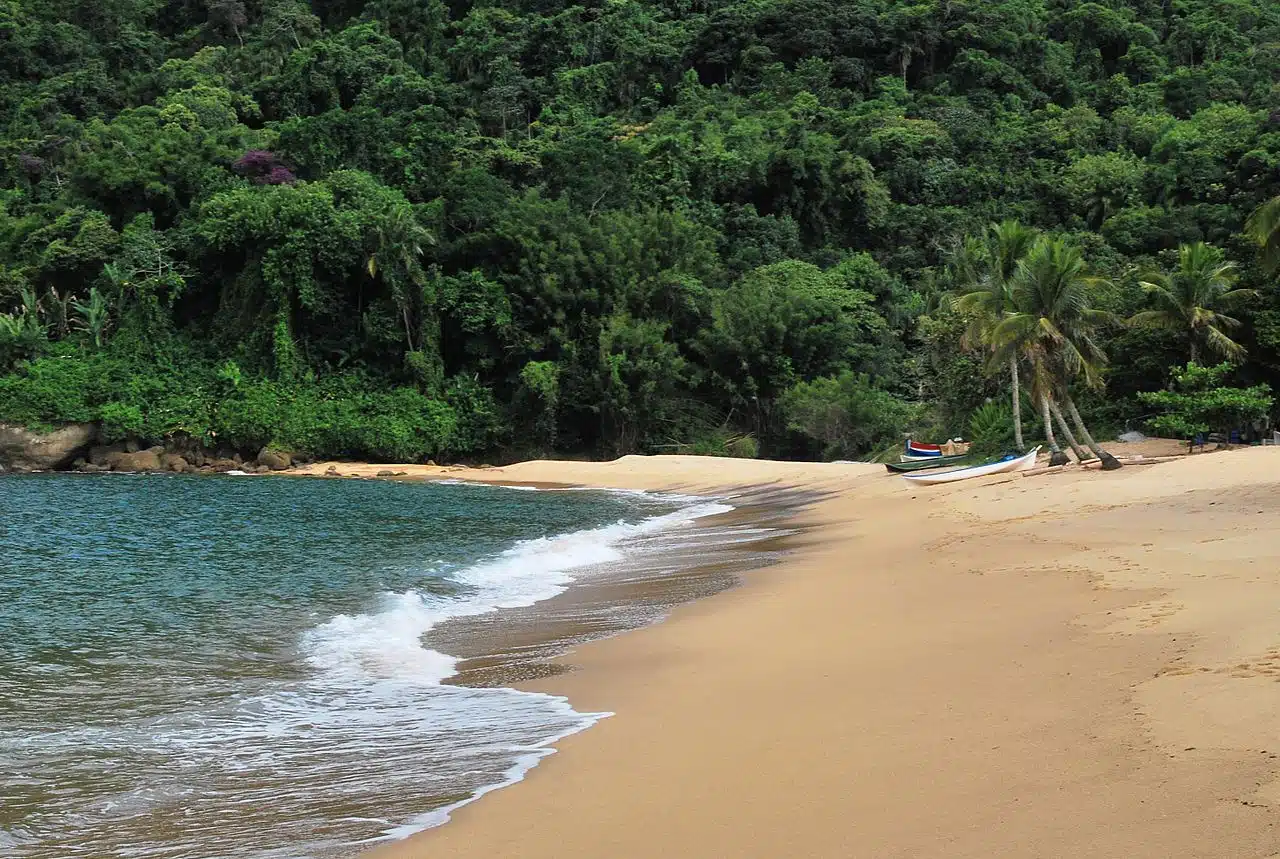
Travel up to the BR101 by car, and take a ferry to the island of Ilhabela, where you’ll spend the night. Portuguese for ‘beautiful island’, Ilhabela is a city 4km off the coast.
It boasts the perfect combination of untouched tropical jungle (protected by UNESCO) and pristine beaches where the young and beautiful are known to party.
Best beach: Bonete.
Hotel Mercedes
Days 3 + 4: Paraty
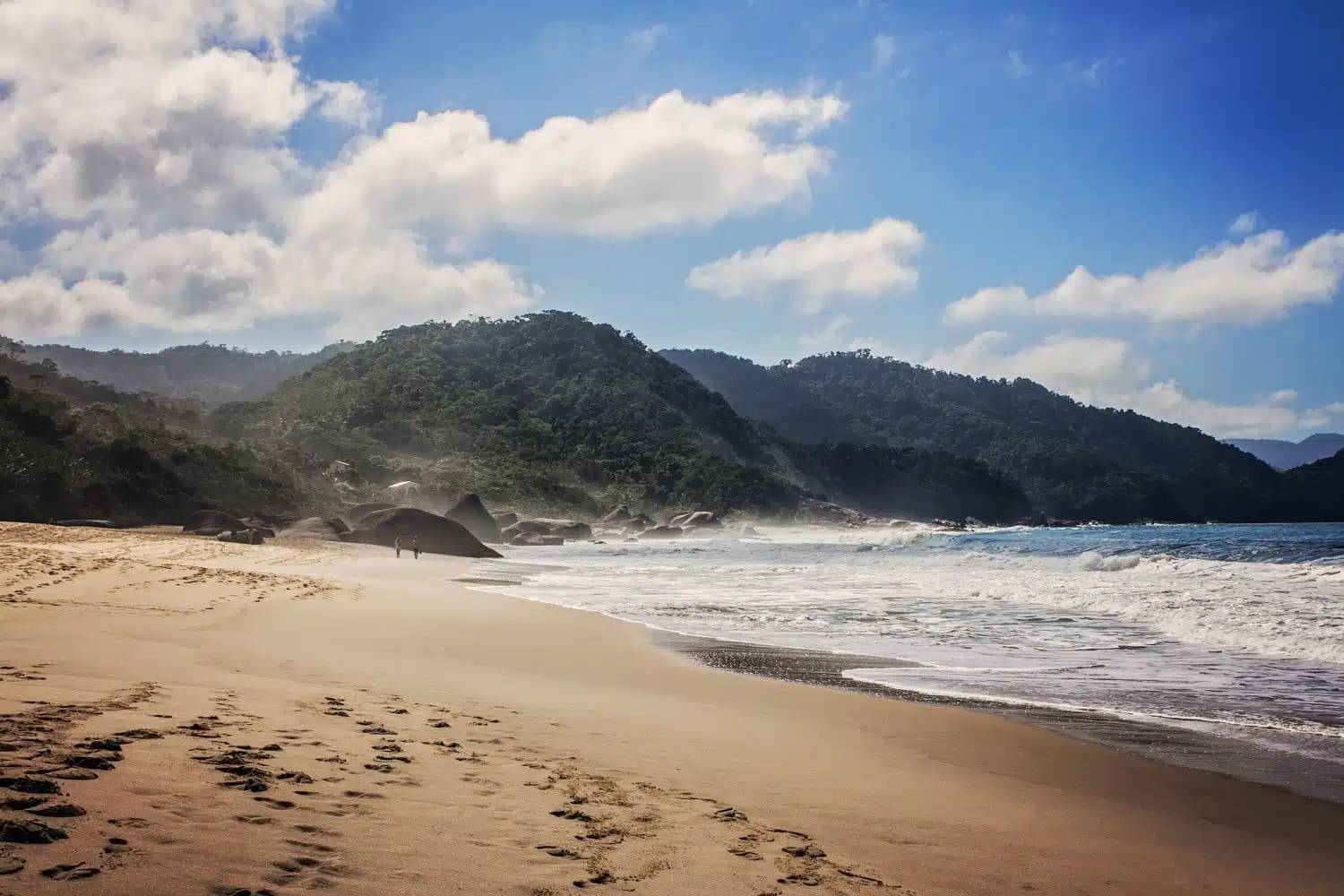
Take the ferry back, and drive up to Ubatuba, where the road climbs up through the mountains of the Serra do Mar to Catuçuba. You’ll be able to grab some stunning shots here for your Insta feed.
Relax at the local ranch, and even horse-ride in the hills if you fancy. Before it gets dark, carry on your drive to Paraty, where you’ll stay 2 nights.
Paraty is Southern Brazil’s most picturesque city, with a quaint colonial centre combined with beautiful beaches. There’s none of the modern high-rise architecture that you’ll find in Rio or Sao Paulo, instead this UNESCO city centre remains a step back in time to a quieter age.
Head to one of the local distilleries and try Cachaca, a distilled spirit made from fermented sugarcane juice, island hop through some of the 62 islands and 200 beaches around the city, or simply just sit back and chill on Lula or Vermelha beach with a good book.
The hotels and dining are also terrific.
Best beaches: Lula beach and Vermelha beach.
Pousada do Ouro
Day 5: Ilha Grande
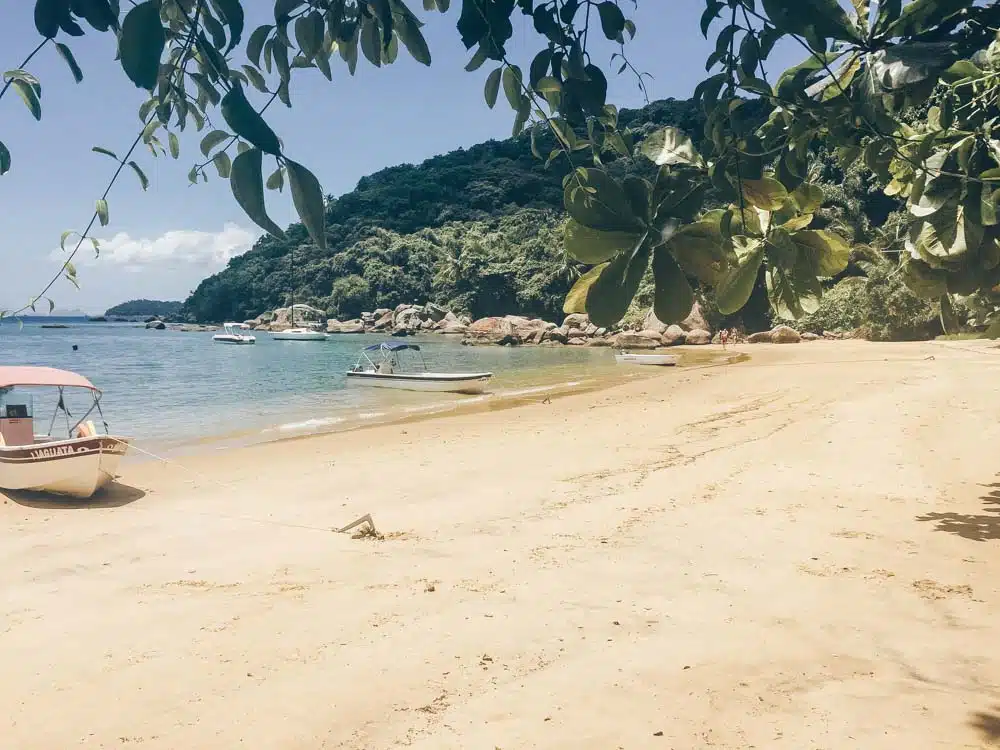
Drive to Angra dos Reis, and catch a ferry to Ilha Grande , a lush green island full of beautiful beaches and forests.
Beach hop or hike around the island; we love Parrot Peak, a hike in the forest that leads to the top of a parrot-shaped rock formation – it’s tough but well worth it for the views.
Best beach: Lopes Mendes.
Hotel Riacho dos Cambucas
Days 6 + 7: Rio de Janeiro
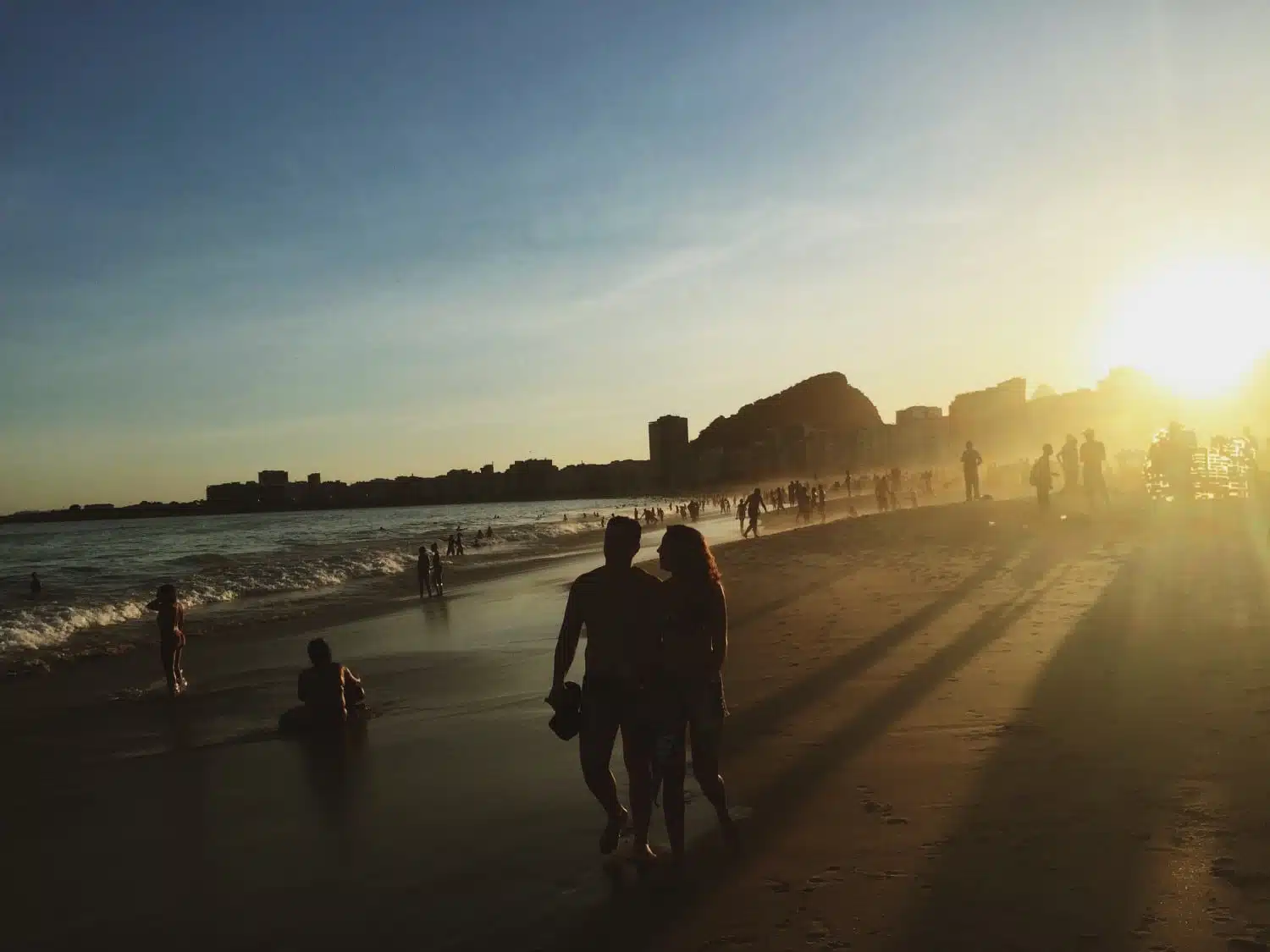
Make your way to Rio de Janeiro . Having arrived in Rio, head to the stunning beaches on its coast. Our favourites are Copacabana, the true city beach, and Ipanema.
We recommend spending 2 nights in Rio to visit both of these beaches and explore the rest of the city.
For something a little different, the stunning beaches of the Barra da Tijuca neighbourhood wind their way along miles and miles of coastline, fringed with some of the city’s most upmarket bars and restaurants.
If you want to get out of the city, head to Buzios, a Riviera-esque beach only a day trip from Rio, which has been famed for its St Tropez chic ever since a bikini-clad Brigitte Bardot visited here in 1964.
Vila Santa Teresa Hotel & Spa
Days 8 + 9: Salvador
Catch a flight to Salvador , and spend a day exploring Bahia’s vibrant and exciting capital.
While Salvador’s beaches aren’t the best in Bahia, take the two hour boat ride to the island of Morro de São Paulo for a slice of the beach life.
There are so many things to do in Salvador, from exploring the Museum of Modern Art which highlights Salvador’s history through modern artwork to scoffing pupusas in the main bustling market in town (delicious fried pancakes filled with meat, cheese, or beans and served with cabbage).
The island’s enchanting beaches and laid-back attitude captures the heart of many a traveller – we wouldn’t blame you if you spent an extra few days here.
Zank Boutique Hotel
Days 10 – 13 Fernando de Noronha
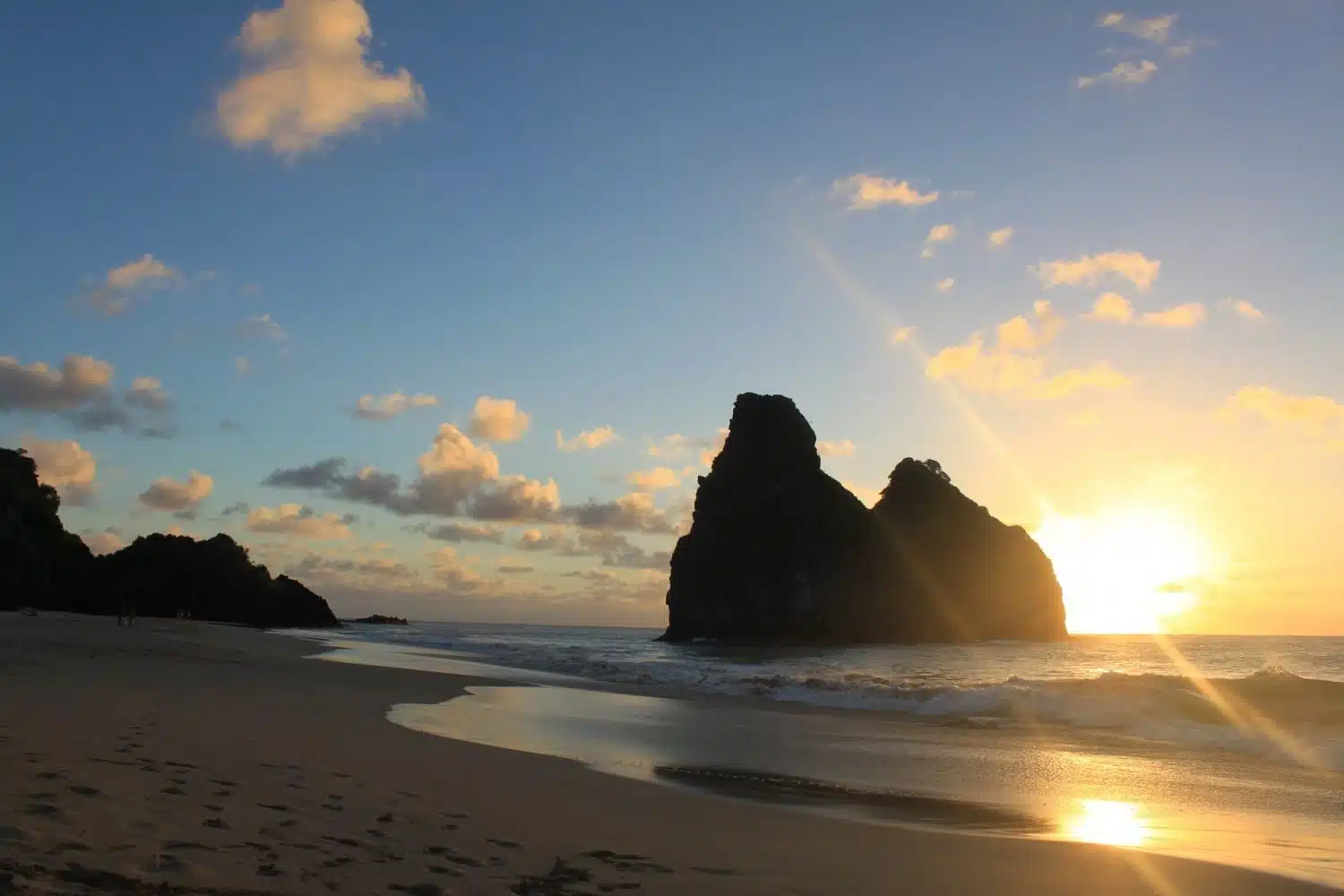
Return to Salvador and fly up to Recife, further north. From Recife, take a flight to Fernando de Noronha, a small island archipelago that’s often named as home to Brazil’s best beaches.
If you’re feeling active, take some time to explore the rich underwater life surrounding the islands – the diving is first-class. Alternatively, take a Catamaran tour around the archipelago and see some of the stunning sea life without getting wet.
Sample the nightlife at Vila dos Remedios and the Forst Nossa Senhora dos Remedios to capture some of the most stunning sunsets you’ll find anywhere.
Dolphin Hotel
Day 14: Recife and Home
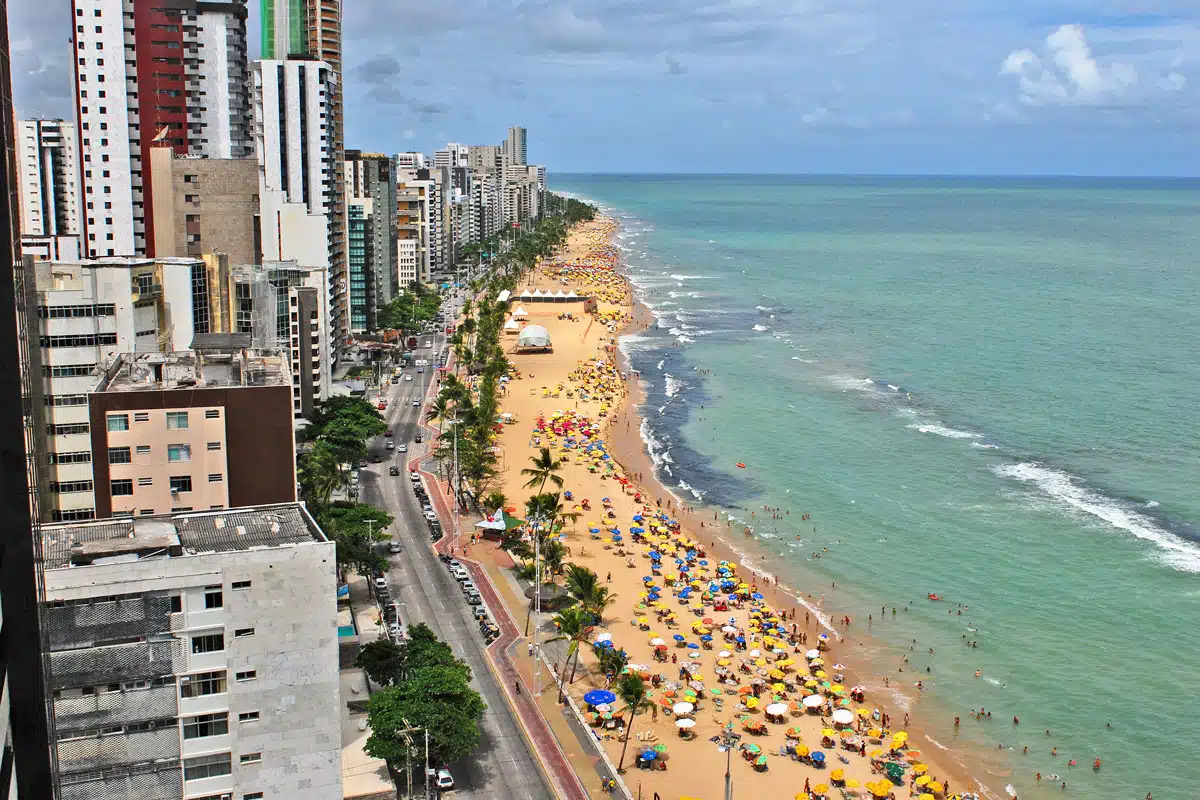
Return to Recife. If you have a few extra days, make your way to the UNESCO Heritage town of Olinda, one of the prettiest in the country.
Olinda is known as an artist’s town, and so it’s no surprise it boasts plenty of tiny art galleries and gorgeous buildings. Make sure to check out the Saint Benedict Church and its magnificent (that’s truly the only word to describe it) main altar.
Otherwise, it’s time to go home.
Ecuador & The Galapagos
Destinations: Quito, Mindo, Otavalo, Cotopaxi, Santa Cruz Island, Darwin Bay, Santiago Island, Fernandina Island, Isabela Island
Countries: Ecuador
Ecuador is one of the most underrated jewels in the South American crown, often overlooked, yet, in my opinion, one of the most beautiful and interesting countries in South America.
This cool 2 week itinerary allows you to spend a week exploring the mainland before heading out to sea and explore the incomparable natural climes of the Galapagos Islands. Come away truly understanding why this incredible archipelago so wowed Charles Darwin, just as it will wow you.
Days 1 & 2: Quito
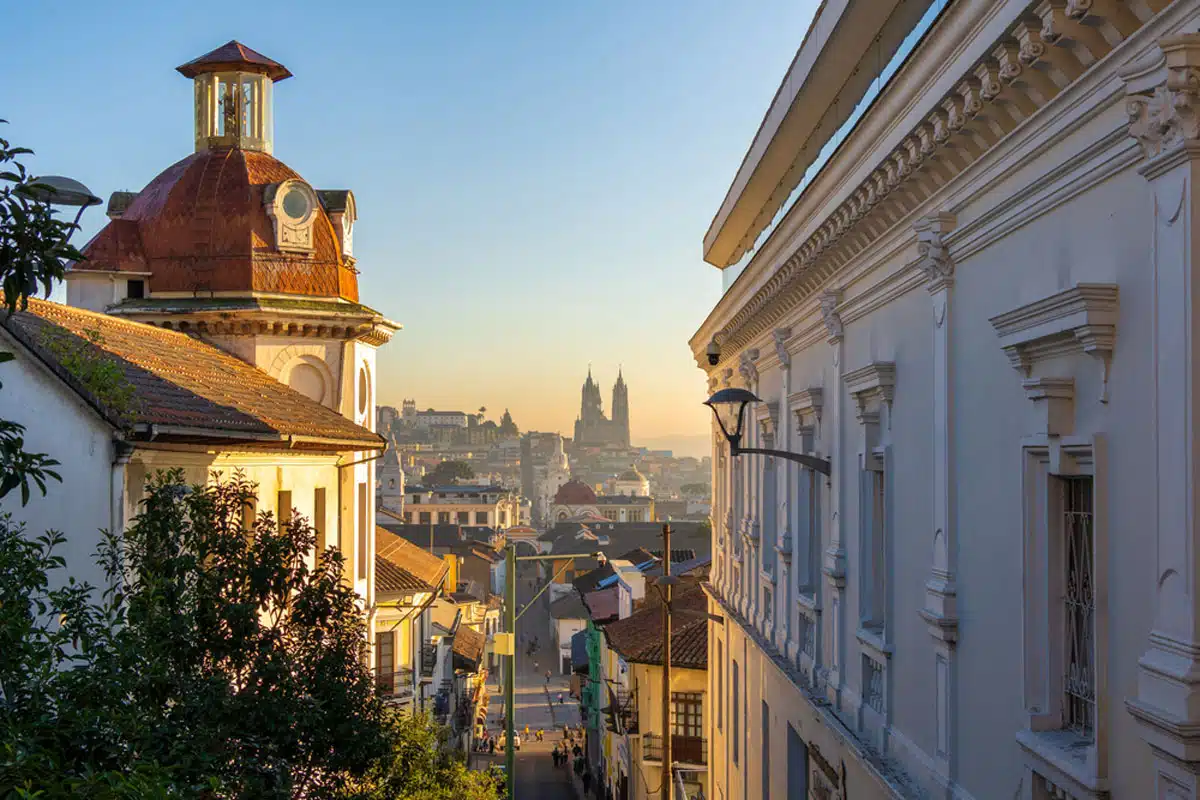
Arrive in Quito, the Ecuadorian capital and spend a couple of days exploring this beautiful city.
Independence Square is home to the city’s Cathedral, yet it’s the Church of San Francisco dating back to the 16th century and its stunning golden interior that will really charm you, while the 17th-century chapel of La Iglesia de El Sagrario is a more muted, but equally beautiful spot.
Be sure to check out the awesome street art dotted around the city, and experience a walking tour complete with culinary highlights.
Vista del Angel Hotel Boutique
Day 3: Mindo
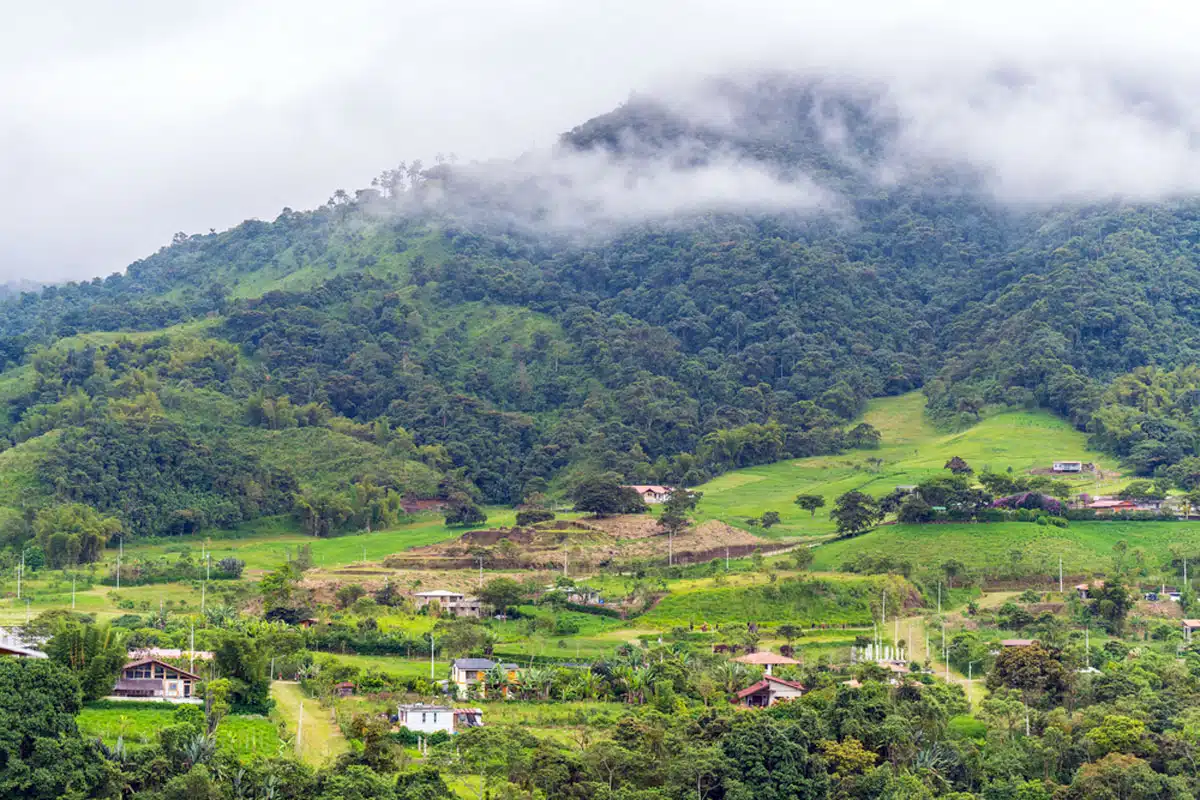
Make your way out to the western slopes of the Andes to visit the eco-diversity of Mindo, home to thousands of plants and animals.
Although it’s only a couple of hours out of Quito, you’ll feel as though you’ve been dropped in the middle of a tropical jungle paradise, with flora, fauna, and birds of all conceivable colours.
Head to the stunning Cloud Forest to get the best of the natural surroundings, and make sure you grab a glass of the spicy boozy drink Canelazo while you’re in town.
Tarrabambu Lodge
Day 4: Otavalo
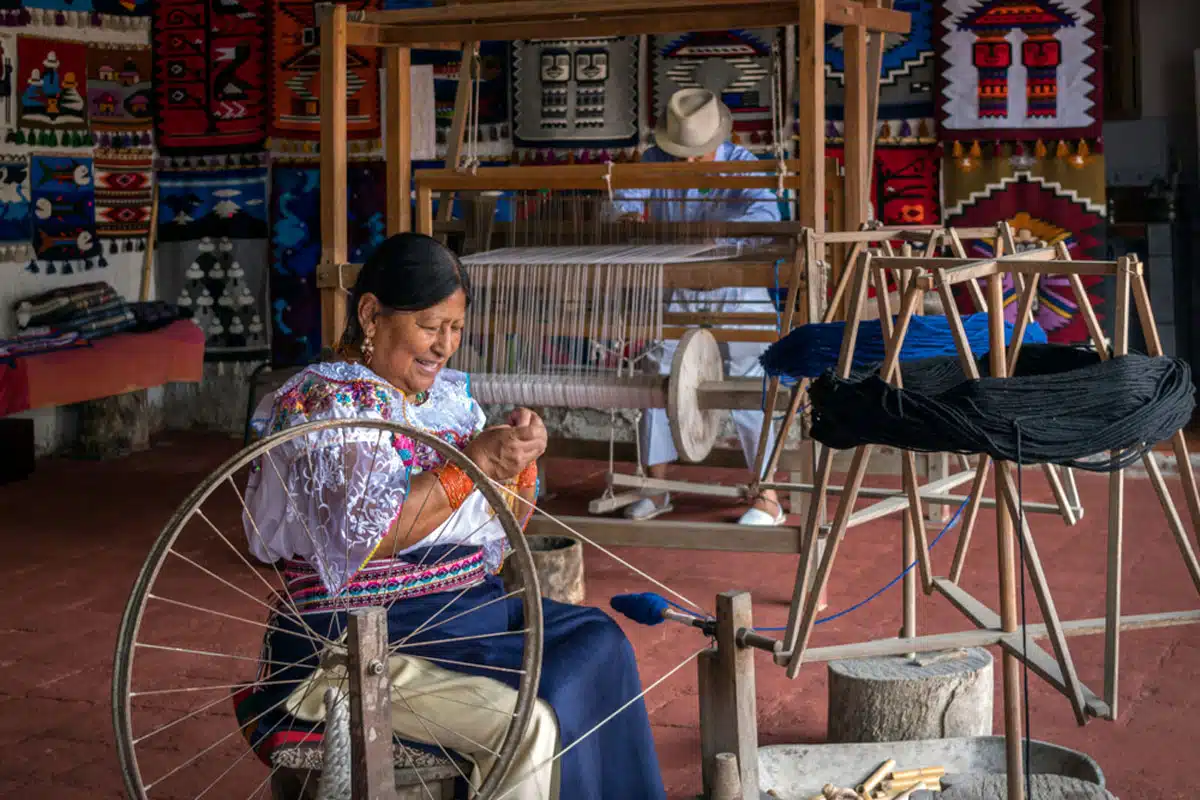
Otavalo is the next stop, a few hours north of Quito and near the active Cotacachi volcano. If you can wangle it to visit here on a Saturday, you can enjoy the sights, sounds, and colours of the Otavalo market which is an unmissable cultural experience.
Then, spend a couple of hours visiting the stunning Cuicocha Lake , which sits in a crater of the Cotacachi volcano. This gorgeous natural spot is sacred to locals and there are annual celebrations of traditional rituals taking place here every year.
Hotel El Geranio
Days 5 & 6: Cotopaxi and the Avenue of the Volcanoes
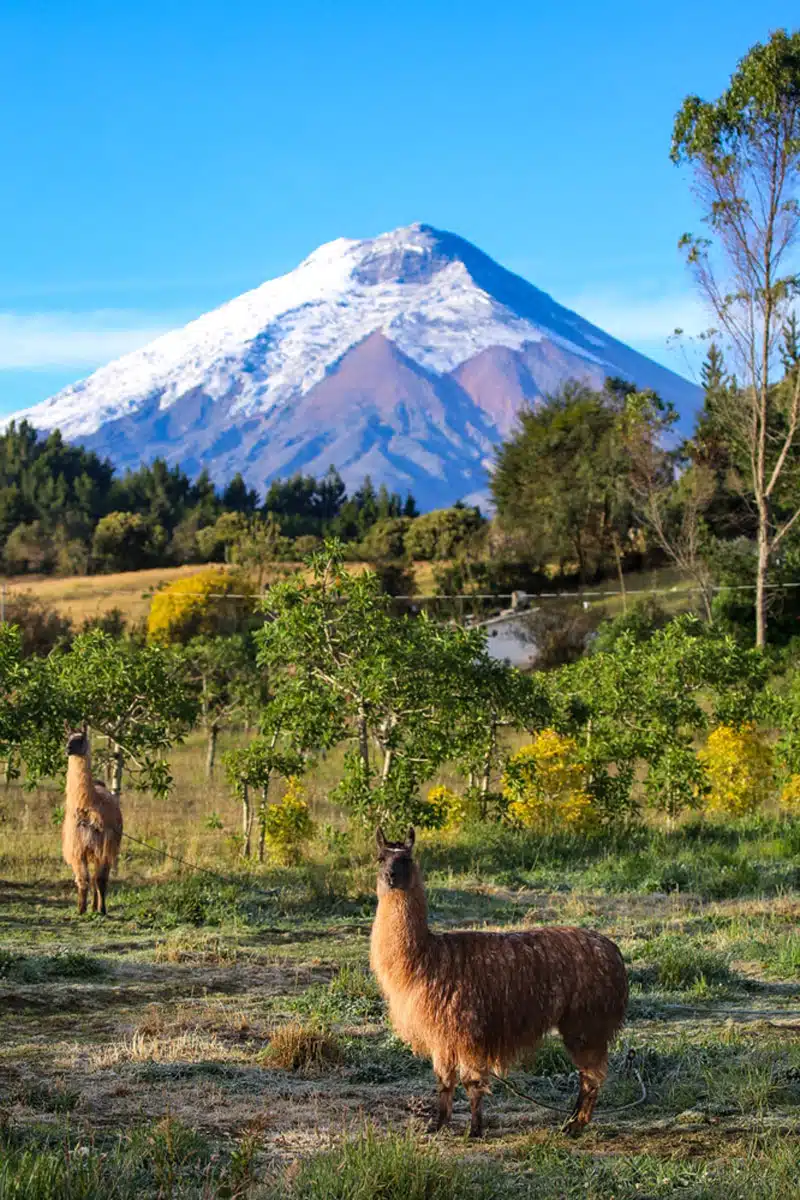
Heading south towards the Cotopaxi province, stop off at the Antisana Ecological Reserve . This enormous protected area spans a whopping 460 square miles and is home to a diverse range of awesome wildlife.
In addition, you can marvel at, and photograph the wonderful landscape around the Antisana volcano and beautiful Mica Lake.
Then, head 12,000 feet above sea level to Cotopaxi for your overnight stay ahead of the treats that lay ahead.
On day six, head to the Avenue of the Volcanoes, home to some of the most diverse scenery you’ll meet on this itinerary, with wild grasses intermingling with volcanoes, including the world’s highest active volcano, Cotopaxi. Trust me, this is the experience of a lifetime, especially if you’re on horseback !
Chilcabamba Lodge
Day 7: Santa Cruz Island
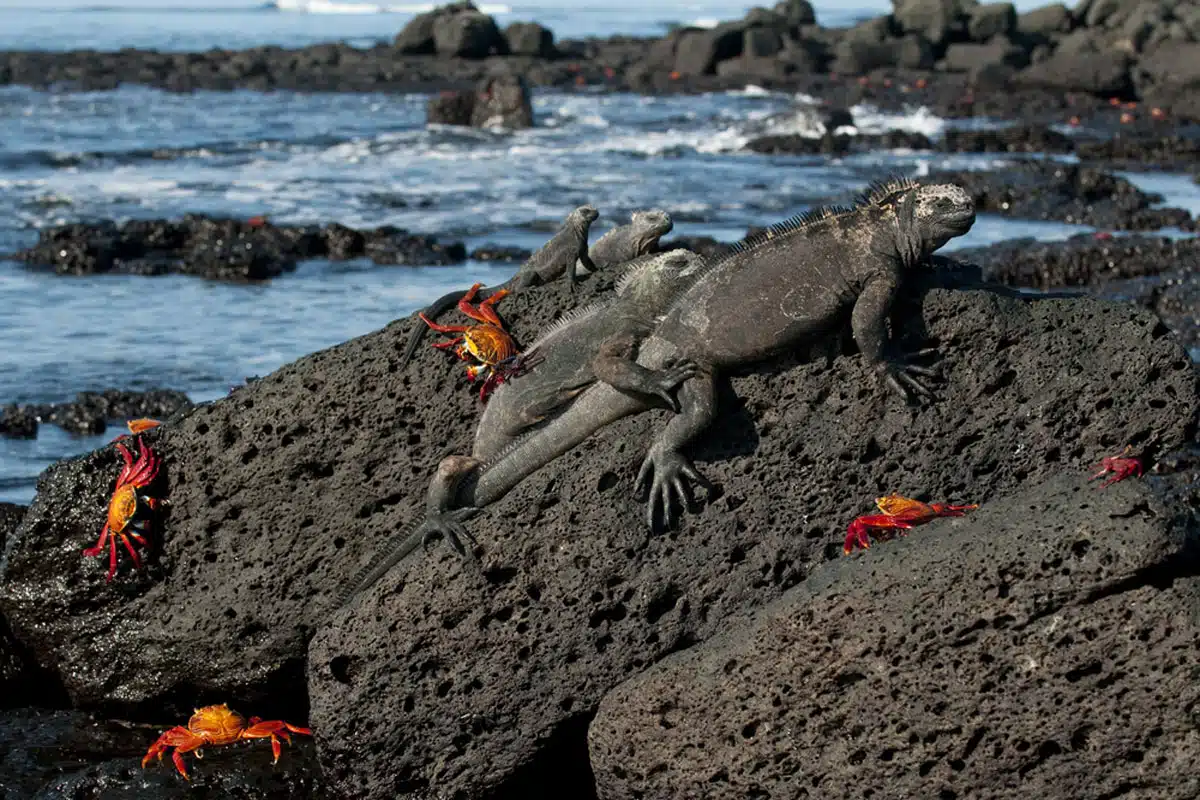
Fly out to Baltra, around 150 metres from the northern part of Santa Cruz Island and take the ferry across the small channel. If you’re lucky, you may end up travelling aboard The Beagle , named after Darwin’s famous ship.
Here, you’ll meet your first of the famous animals of the Galapagos, with flamingos, iguanas and the famous bright red Sally light-foot crabs. Take some time to relax on the gorgeous white-sandy beaches ahead of your island-hopping adventures.
El Arco de Darwin
Day 8: Darwin Bay
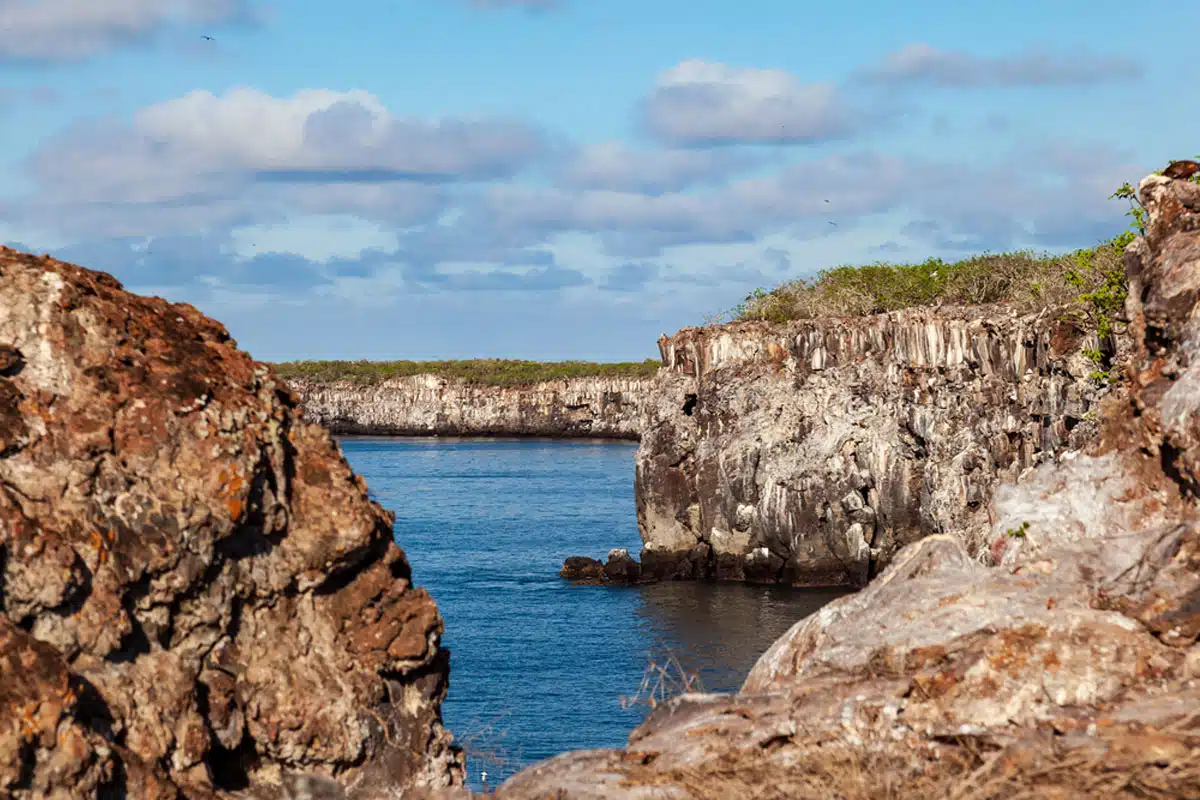
Take a day trip across to Genovesa Island and head to Prince Philip’s steps. Try and get up as early as you can to make the most of the visit, since you can see a stunning array of birds as you walk here, from black frigate birds recognisable with their inflated bright red pouches, to short-eared owls.
If you enjoy going underwater, take a snorkel trip where you may come face to face with dolphins and sharks, before heading to Darwin Bay after lunch when the local wildlife is at its most plentiful.
Day 9: Santiago Island
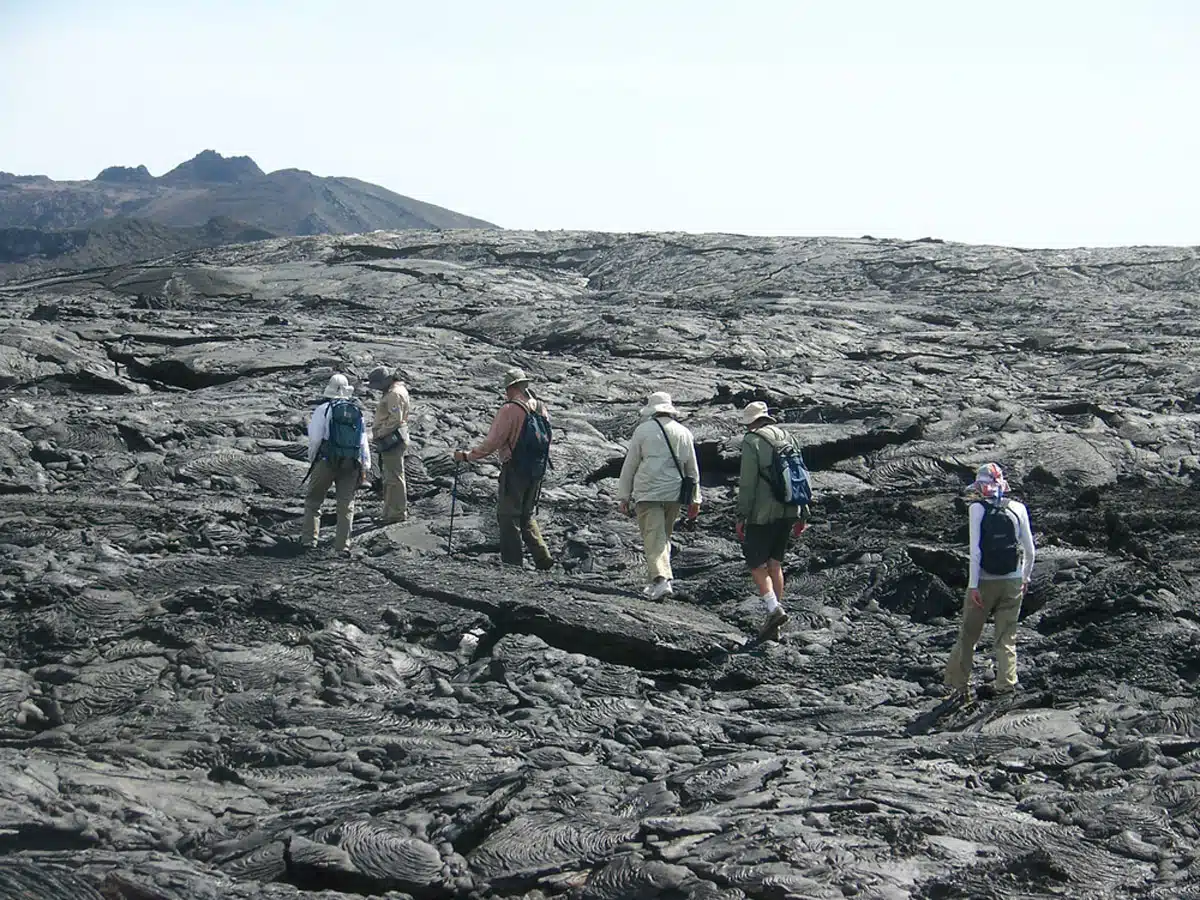
Santiago Island is the next stop on this island-hopping part of the itinerary. Originally called James Island in honour of King James II of England, the island’s name has changed, but one of its main attractions, James Bay, hasn’t.
This black-sand beach forced from volcanic ash has some incredible tidal pools to witness, along with a plethora of sea birds and jet black iguanas the like of which I’ve never seen before. This is the best spot to watch sea lions as well, just a few yards from where you stand – yet another awesome addition to your Insta feed.
Day 10: Fernandina Island
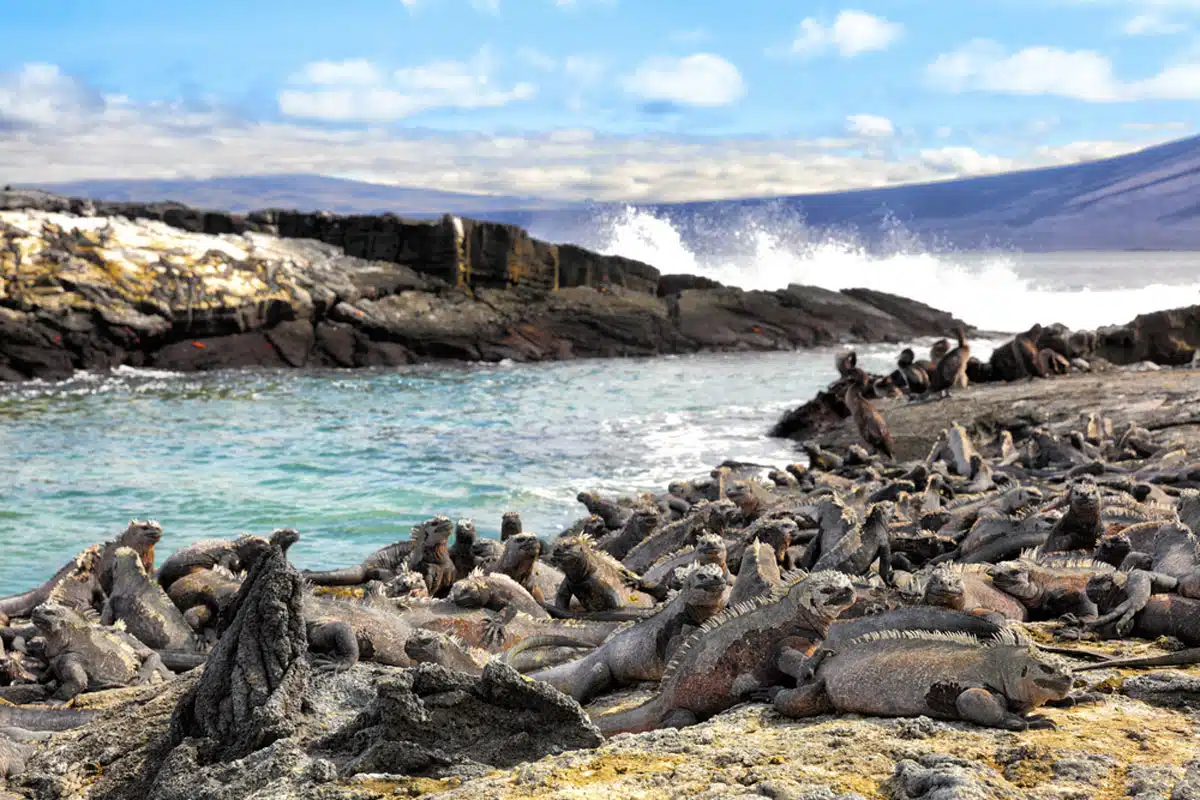
Leave your Santiago Island base to head across to the island of Fernandina Island and its lava-based landscape that’s dotted with marine iguanas in their dozens. You may have to squint to see them as they blend in nicely with the ground, suntanning themselves.
Then go climbing over the gorgeous lava flows at Punta Moreno to go birdwatching.
Once you’re ready to leave, head to Isabela Island, your base for the next few days.
Day 11 to 13: Isabela Island
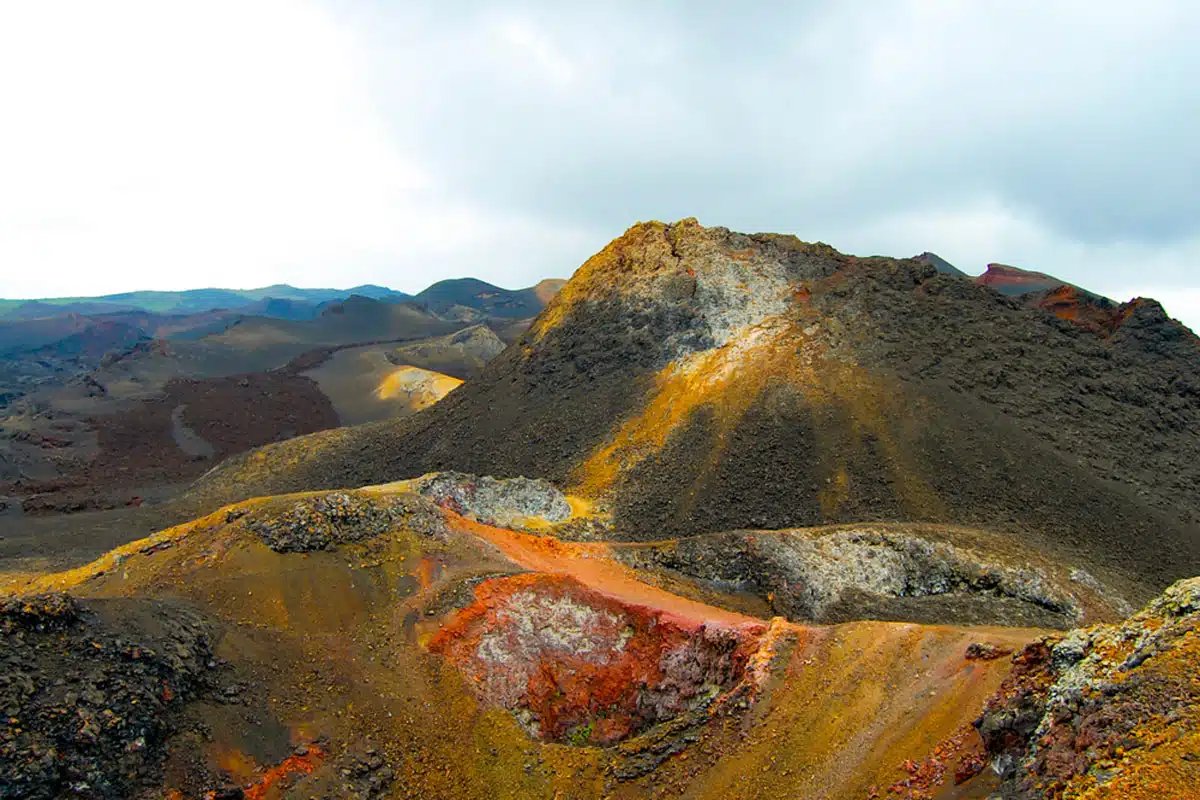
You have three full days to explore the glorious surroundings of Isabela Island, and believe us, you’ll need every minute.
Punta Vincente Roca are stunning rocky outcrops home to penguins, seals, and the blue-footed booby, then head out for a snorkel to see the sea lions and penguins too. Then wander and check out graffiti left by whalers, pirates, and other explorers.
Then check out the giant tortoise breeding centre that preserves some of the most famous residents in the Galapagos before visiting the Sierra Negra volcano, and the second largest volcanic crater in the world.
The town of Puerto Ayora is a great spot to go souvenir shopping and experience some excellent Galapagos food.
Hotel Galapagos by Bar de Beto
Day 14: Quito and home
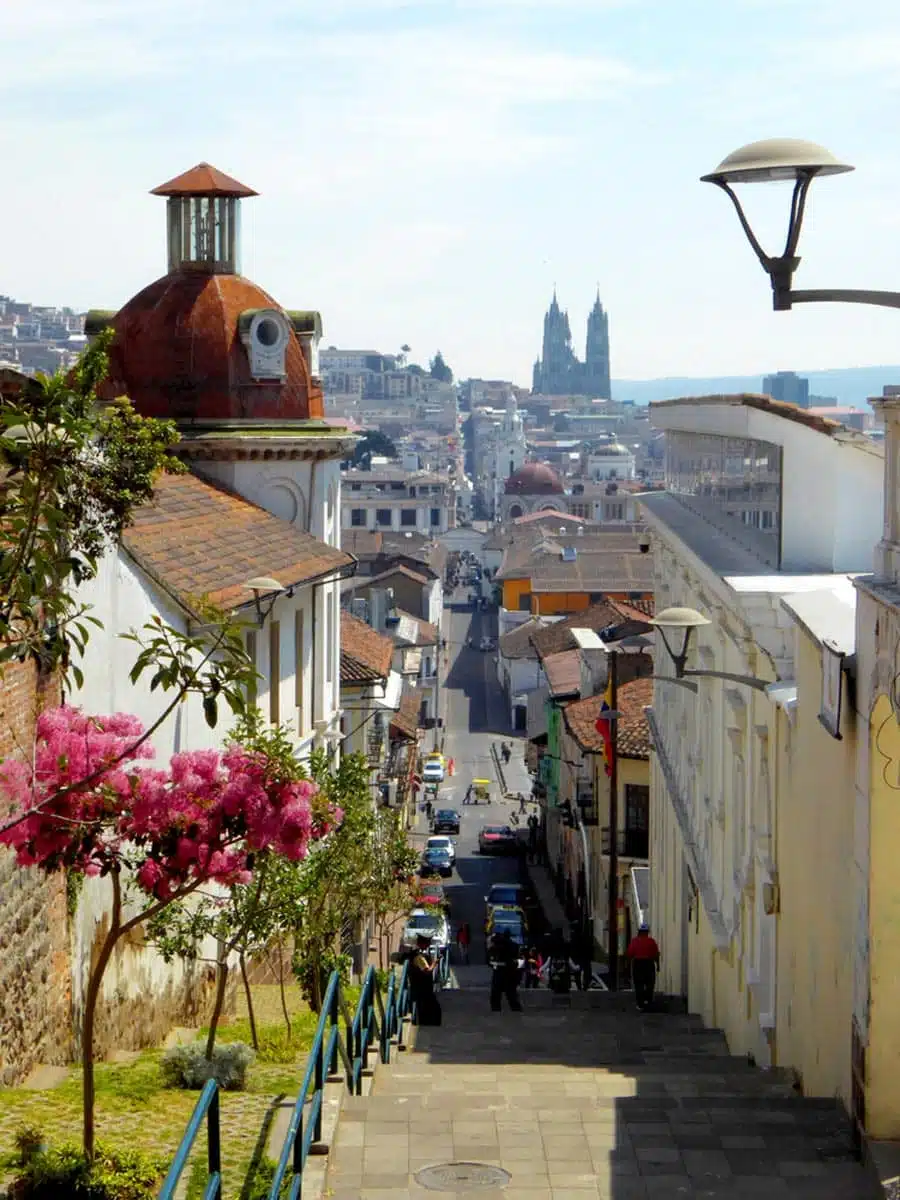
On your final day, head back to Quito and spend time ticking off anything you missed out on from your first couple of days on this itinerary before travelling to the airport and returning home.
Which is your favourite 2 week South America itinerary?
Discover More South America Guides
- Things to do in South America – The Ultimate South America Bucket List
- Torres del Paine W Trek Patagonia: A Step by Step Guide
- 12 Extraordinary Things to Do in Chile
- Stunning Places to Visit in South America
Love This? Save and Share on Pinterest
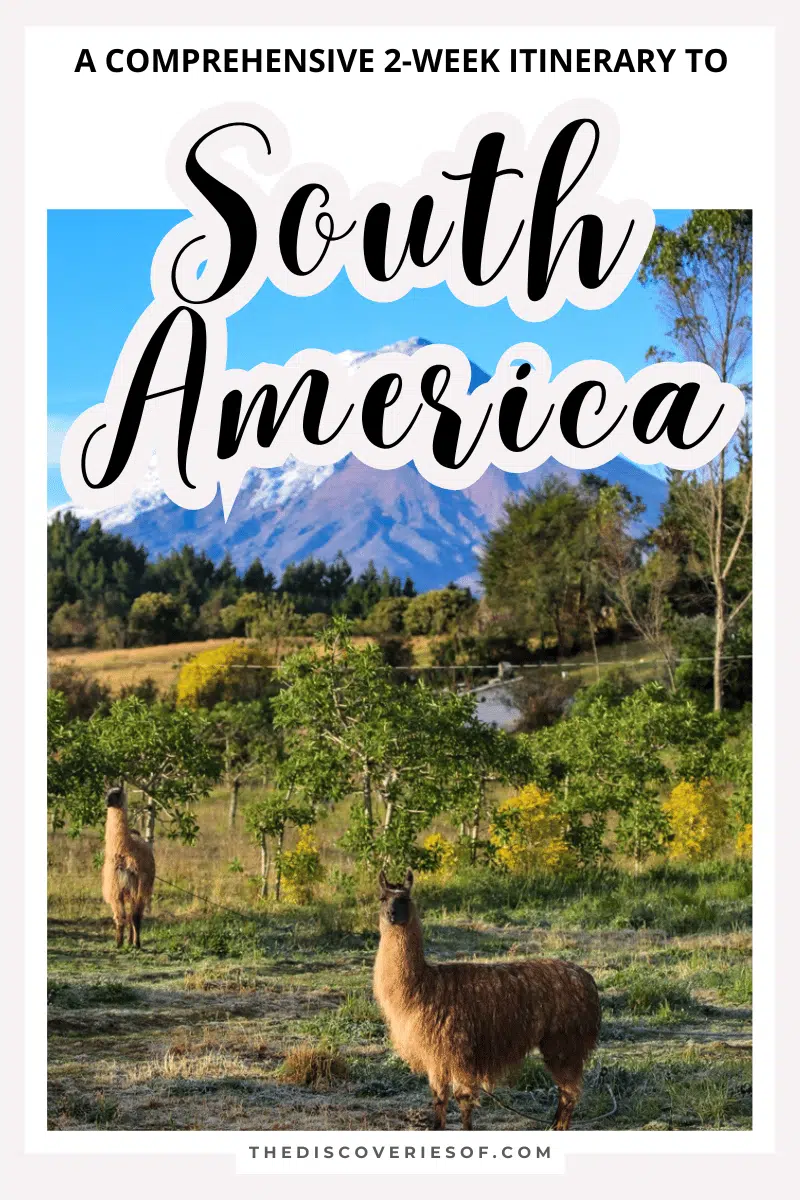
I’m Julianna Barnaby - a professional travel writer and geek extraordinaire. I started The Discoveries Of to help you to discover the best of new destinations from around the world.
Discovering new places is a thrill - whether it’s close to home, a new country or continent, I write to help you explore more and explore differently.
Related Posts
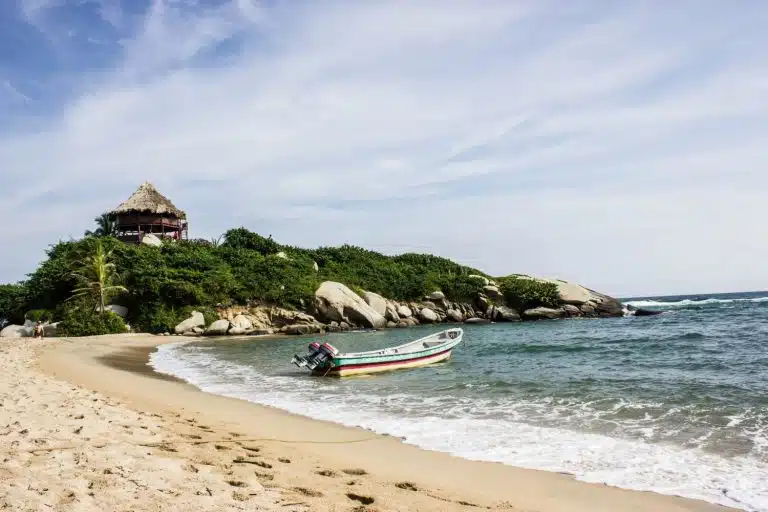
The Best Things to do in Colombia: 11 Unmissable Attractions
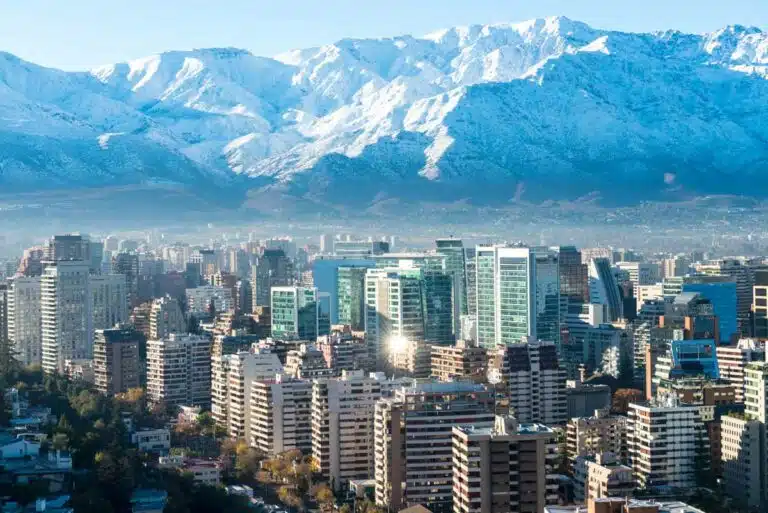
One Day in Santiago, Chile: The Perfect Santiago Itinerary
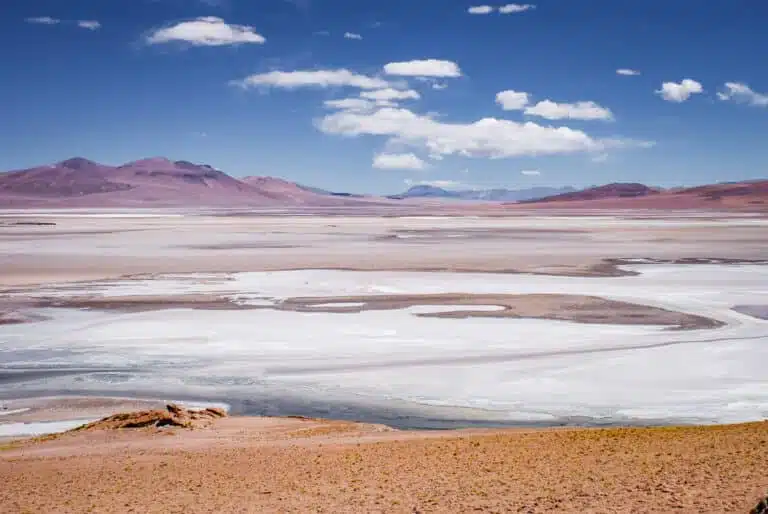
10 Incredible Photos of the Atacama Desert To Blow Your Mind
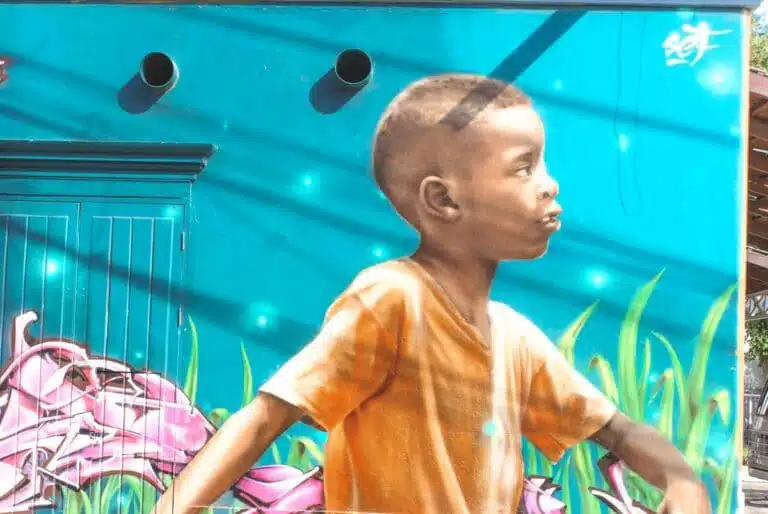
Street Art in Lima: Checking Out The Peruvian Street Art Scene
24 comments.
Amazing itineraries for South America. I still haven’t been anywhere yet in SA so this will be super helpful when I finally get there! I think the Patagonia trip may be towards the top of my list! Thanks for taking the time to write these.
Thanks Mike. Just can’t get enough of South America – you’ll be totally blown away by Patagonia. Always happy to help with tips and advice!
I have only visited Chile on the list but I absolutely fell in love and I can’t wait to visit the other countries on your list. What was your favorite?
I think it’s a close call between Chile and Argentina. The hiking and sceneries in both are just astounding!
I can’t wait to see South America! Has always been a passion of mine (and I’ve never even been there haha!) Thanks for the awesome tips and plans, your photos are amazing!
So glad we’ve helped inspire your travels! Totally should go!
Amazing itineraries! I would love to visit Brazil soon, will definitely reach out the next time I plan a South American trip — you know your stuff! x
Please do – always more than happy to help!
Omg your pictures are ridiculous! Need to go to this part of the world. Saving this post for later as reference!
Hate to pick favourites but it’s totally my favourite travel destination overall. Enjoy if you do go!
These pictures are giving me some serious wanderlust! I’ve never been to South America but some of these places have been on my radar for ages e.g. Patagonia. Loved these sample itineraries, great post!
Thank you so much Helena – hope you find them useful when you do go!
Incredible photos! I will be travelling to South America for the first time in early 2018 so this is a great resource! Bookmarked for later 🙂
Thanks Melissa – you are going to have such a great time – I’ve been so many times and can’t stop going back. Shout up if you have any questions or need tips – plus we’ve written loads of South America articles too.
Great post! I love how you have group different areas according to specific interests. South America is such and vast and rich continent that sometimes it’s hard to choose where to go first. In my case, I still have not been to the Amazon; so that would definitely be my next adventure.
Thanks – I’ve always found it really difficult to pick where to go on shorter trips so thought doing it that way would help people out! Always more adventures to have.
Great article,I love it.Thanks for sharing this article with us.
Really glad you enjoyed it – hope that you find it useful.
Thank you, Julianna! My husband and I would love to visit Patagonia, Machu Picchu, and have a couple of beach and historic city days. I’d love your thoughts to see if that could be doable in 2.5 weeks, while still being relaxing?
Hi Kate – really glad that you liked the article. You’re going to have such a great time! I would say that 2.5 weeks is going to be relatively tight to head to Patagonia, Machu Picchu, explore both and still have time to head to the beach (are you thinking a beach in Chile/ Peru?) and any city other than Cusco. You can do it if you take flights, but I don’t think that it will be that relaxing. Perhaps you could spend a week and a half exploring Patagonia, fly up to Cusco and spend a few days there before going to Machu Picchu on the train (spending a night in Machu Pichu Pueblo)? I’m actually starting to do one-off custom itineraries for South America – drop me an email on [email protected] if you’re interested.
I read your 2 week itinerary article and loved so many of your suggestions. You had mentioned that you are now doing one-off for a custom plan. I would be interested in this! My son will be in Buenos Aires attending school and I plan to meet him on July 10th. We will then travel for the next 2 1/2 weeks. I have been studying our options but honestly on overload with all the choices and the distances. I am really what to make the most of out time.
We love nature, hiking, kayaking, beaching, adventure and sight seeing. For sure…. I would like to include Machu Picchu and the Galapagos….and possibly the Iguarza falls.
Please let me know if you are available? Where are you located? I am in Dallas Texas.
Thanks Carol Stone
Hi Carol, Thanks for getting in touch – very glad to hear that you found the itineraries useful. Unfortunately, I’m no longer doing custom South America itineraries but here are a few tips to help you along the way. I think most importantly, you want to focus on a few destinations that preferably are quite easy to travel between – the distances are far and even when you fly, it can take a lot of transit time getting from a to b (Machu Picchu being the perfect example). I’d say if you go to Machu Picchu and the Galapagos you will probably have to skip Iguazu and instead focus on Peru/ Ecuador. The first time I travelled in South America, I tried to cram way too much into a short period and ended up spending a lot of time in transit – I’d always recommend going to fewer places and seeing more in each of them. I hope that you have a wonderful trip. All the best,
In 2011 I visited Colombia with my two children. We enjoyed visiting the Caribbean coastline and old town of Cartagena. Then in 2012 we went back to South America for a longer trip. We had time in Argentina, Chile, Brazil and Uruguay. One of the best things was seeing the tropical birds.
So glad to hear it Maxine – there’s so much biodiversity across the continent – absolutely incredible to see.
Leave a Reply Cancel reply
Your email address will not be published. Required fields are marked *

Follow me on Instagram for travel inspiration, tips, and guides.
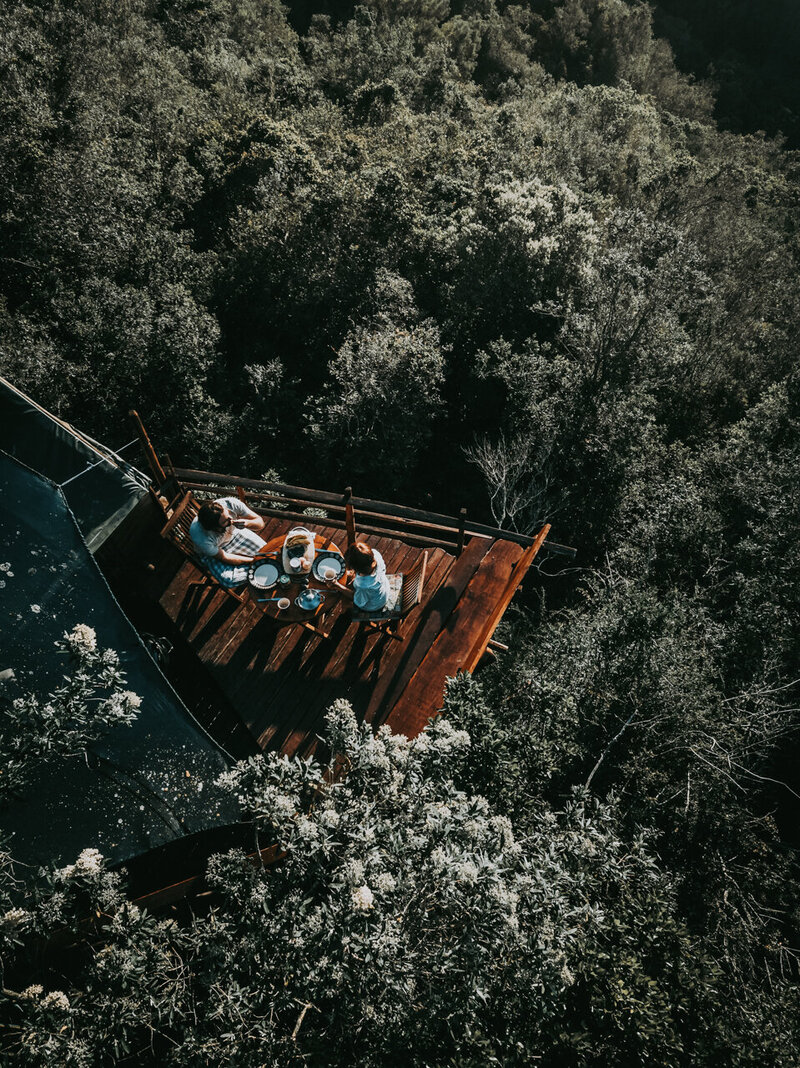
We're the sisters who founded Across South America 15 years ago... and we're here to help you fall in love with South America just like we are!
This is a great place to start if you plan a trip to South America!
South America has so much to offer that choosing where to go is extremely difficult.
There are, however, some places that no traveler should forget to add to the must-visit list when planning a first trip to the charming South American countries.
There are many different ways to plan your perfect two weeks South America itinerary, depending on your interests. Visit the highlights, Go off the beaten path, more adventurous trips, and trips for wildlife lovers and wine lovers…
If you are planning a trip to South America and have two weeks, we have three itinerary ideas for you that cover some of the most incredible destinations and Experiences in South America.
South America is such a vast continent that with two weeks we suggest including no more than three countries to make your trip experience the best experience.
👉For more tips about traveling to South America and more itinerary ideas, make sure you Get our free South America Travel Guide here.
Table of Contents
Our 3 suggested south america itineraries (2 weeks each).
So, here are the three different ways to plan a two-weeks South America Itinerary
1- Two Weeks in South America Highlights: Our Charming South America Itinerary
2- Luxury South America for foodies and wine lovers
3- South America Adventure & spa trip with Australis Expedition Cruise to the End of the world
#1 Two Weeks in South America: Our Charming South America Itinerary
This is our “classic” 2 weeks South America itinerary, where you visit the most popular spots in South America.

Top destinations on this itinerary include Rio de Janeiro in Brazil; Iguazu Falls and Buenos Aires in Argentina; and Peru, Lima , Cusco, and Machu Picchu.
For first-time visitors to South America, visiting the wonderful city of Rio de Janeiro with its stunning views, going to the Iguazu falls, exploring Buenos Aire’s rich culture, and seeing the magnificent Machu Picchu Ruins usually make the “must-see” list.
With two weeks in South America, you have enough time to visit these destinations. You can see how to do this, in this Two weeks in South America Charming Itinerary.
DAY BY DAY ITINERARY:
DAY 1: Arrive in Brazil
DAY 2: Corcovado Mountain and Christ Redeemer
DAY 3: Sugar Loaf and Samba School
DAY 4: Fly to Iguazu – Visit the Brazilian side of the falls
DAY 5: Visit Argentina’s side of the falls.
DAY 6: Fly to Buenos Aires
DAY 7: Visit Buenos Aires
DAY 8: Explore Buenos Aires countryside
DAY 9: Fly to Cusco, Peru
DAY 10: Sacred Valley
DAY 11: Train from Cusco to Aguas Calientes – Visit Machu Picchu Ruins
DAY 12: Train to Cusco
DAY13: Visit Cusco and Fly to Lima
DAY 14: Visit Lima
DAY 15: Fly back home
👉 Read the full itinerary here
#2 Luxury South America for foodies and wine lovers
If you are foodie and love wines and you are looking for a luxury trip, check out our South America for foodies and Wine lovers Luxury itinerary , including a food experience in Rio de Janeiro in Brazil, an eco-lodge experience in the Iguazu Falls, Buenos Aire’s rich culture and gourmet trip, a Visit to Mendoza and to Santiago de Chile Wine Lands.

two weeks south america itinerary
Top destinations on this itinerary include Rio de Janeiro in Brazil, Iguazu Falls, Buenos Aires and Mendoza in Argentina, Santiago, and the wine valleys of Chile.
If you are a foodie and wine lover who want to explore the delights of South America, this trip is for you!
Here is an overview of this two-weeks itinerary. Below you have the detailed itinerary of this South America trip: Luxury South America for foodies and wine lovers
DAY BY DAY ITINERARY
DAY 1: Arrive in Rio de Janeiro Brazil
DAY 2: Christ Redeemer & Sugar Loaf
DAY 3 Hidden Treasures of Rio & the most memorable food experience in Brazil
DAY 4: Fly to Iguazu Falls, Argentina. The Awasi Experience
DAY 5: Awasi eco-retreat experience
DAY 7: Visit Buenos Aires – Barbecue experience
DAY 8: Buenos Aires Food, art, and Tango experience
DAY 9: Fly to Mendoza – wine lodge experience
DAY 10: Vineyards: winemaker for one day and cooking class
DAY 11: Best Wineries of Valle de Uco and Francis Malmann 7 fires dinner experience
DAY 12: Land Crossing to Santiago de Chile
DAY 13: Chile wine route: Viña Vik Experience, cocktails and barbecue
DAY 14: Vineyards and Vik Experience
Want more inspiration for your trip to South American wine country? We’ve got you covered!

#3 Exclusive South America trip with Australis Expedition Cruise to the End of the World
If you like the idea of going more off the beaten path in South America and searching for a more adventurous trip, we suggest a trip to the End of the world, our Patagonia with Australis Expedition Cruise trip . You will explore Buenos in Argentina and Santiago de Chile and include an Expedition Cruise to the fjords of Tierra del Fuego and the exploration of Torres del Paine National Park.
DAY 1: Arrive in Buenos Aires
DAY 2: Buenos Aires
DAY 3: Buenos Aires Countryside
DAY 4 Fly to Ushuaia, the “End of the World” city
DAY 5: Explore the “End of the World” in 4X4WD
DAY 6: Tierra del Fuego National Park & embark on Australis Expedition Cruise
DAY 7: Australis Cruise: Cruise Chilean fjords between Cape Horn & Wulaia Bay
DAY 8: Australis Cruise: Pía Glacier – Garibaldi Glacier
DAY 9:Australis Cruise: Agostini Sound – Águila Glacier
DAY 10: Australis Cruise: M agdalena Island – Punta Arenas – Puerto Natales in Chile
DAY 11: Exploring Torres del Paine: Adventure spa experience
DAY 12: Exploring Torres del Paine: Adventure spa experience
DAY 13: Fly to Santiago de Chile
DAY 14: Santiago de Chile
DAY 15: Chile, end of your trip
Which one will you choose?

HOW TO PLAN YOUR TWO WEEKS SOUTH AMERICA ITINERARY
What to do BY SEASON
First of all, when thinking about the best time to visit South America, you need to think that the seasons correspond to the southern hemisphere, which means that:
- Summer runs from December to March;
- Autumn from April to June;
- Winter from July to September;
- and then Spring from September until November;
Also, you need to consider the wet and dry seasons, which are essential facts to understand which places are better to visit, such as the Amazonas or the Deserts in Chile and Bolivia.
SUMMER – December to March

What is it Perfect for, and what to expect?
The beaches in Uruguay – José Ignacio and La Pedrera, are my favorites.
✨At the same time, it’s the best time to visit Patagonia: Hike in Patagonia – Fitz Roy in Chalten or the classic W of Torres del Paine and trek the spectacle that is Perito Moreno glacier .
Wildlife in Patagonia and Antarctica – penguins in Peninsula Valdes and Ushuaia, all the diversity of the marine fauna in Antarctica at its glory.
Carnival festival and New Year’s Eve in Rio de Janeiro – are both massive colorful celebrations.

AUTUMN – April to June
Autumn is the best time to visit South America if you want to explore the cities; temperatures ease slightly from hot summers, and fewer tourists are around. When it comes to Patagonia, this is the best time to go as well; after the summer and high season but not as cold yet as the winter to come, it makes perfect for exploring as it is a shoulder season and hotels are less expensive.

✨Iguazu Falls is an ideal time to explore this jungle experience; the weather is delightful, so enjoying the fantastic falls is much better .
✨ City escapes in Buenos Aires – With more pleasant weather, it’s the perfect time to explore the city and walk its streets in San Telmo, Recoleta, and Palermo.
✨ City escapes Rio de Janeiro – the temperature eases from the hot summer, and although you have to expect the rain to continue (10 days per month approximately), it’s a lovely time to see Rio and its natural side with a lot fewer tourists
✨ Galapagos – although any month is excellent for this destination, June, for example, is fantastic because it offers cooler temperatures and clear sunny skies.
✨ Mendoza and wine route – If you want to avoid the crowds, March and April are charming months to visit Mendoza. In fall, many vineyards are finishing the harvest and starting the winemaking process, making it an enjoyable time to taste grapes and get into winemaking.
✨Trekking Patagonia – stunning photos while saying goodbye to crowds are the main reasons to choose this time of the year to trek in Patagonia.

WINTER – stunning from the end of June until mid-September.
Winters are generally pleasant and warm in the north and cold in the southern parts, especially in Patagonia in Chile and Argentina, experiencing frequent frost and snow.
However, winter weather is not as severe as in the northern hemisphere. In the southern part of South America, temperatures could go a bit below 0 °C (32 °F). On the other hand, the Andes Mountains in Peru and Ecuador offer dry winters, so it’s ideal, for example, to visit Machu Picchu. If you want to visit Galapagos, you can enjoy cooler weather and see more dolphins and whales.
✨ The Pantanal in Brazil – it’s the best time to see animals since it’s the dry season, running from April/ May to October.
✨Winter sports in Argentina and Chile – from Las Lenas in Mendoza to Bariloche and Ushuaia in Argentina, you can either enjoy skiing at the end of the world or head to Chile’s Valle Nevado ski resort.
✨ Machu Picchu & Inca Trail – Warm days, cool nights, and lowest rainfall of the whole year: the winter months are known as the ‘dry season ,’ and you’ve got a very high chance of encountering a sunny day.

✨Tango world festival in Buenos Aires – Tango can be enjoyed throughout the year. However, August is predominantly important since the Tango’s International Festival and Dance World Cup take place this time of the year.
✨ Pachamama Festival in San Antonio de Los Cobres, Salta , this wonderful and local tradition celebrating the “Mother Earth” happens every August at the Quebrada de Humahuaca, a magical place located in the northwest of Argentina.
🌟I love this Itinerary for winter in South America: Charming South America in 14 days
Springtime: lovely from september until the end of november..
It’s the dry season in the Amazon, making for OK wildlife watching. Fewer crowds and lower prices make visiting Buenos Aires and Rio de Janeiro a good time. Patagonia is less expensive than summer and also a great time to visit the region since trekking and hiking are now possible thanks to the end of the winter.

✨ Wildlife in Peninsula Valdes – Sea lions, seals, killer whales, and the Southern Right Whale are the other main characters during this time of the year.
✨ Wildlife in Amazon – low water season is from June to November, so the jungle trails are not flooded during winter or spring, which allows the naturalist guides to get deeper into the jungle by foot and also escorted by fewer mosquitoes than during the high water season. ✨ Polo Open Buenos Aires takes place from November until December each year, and Argentina has the greatest players in the world.
✨Copacabana time ! Yet not so warm as in the summer months, so it allows enjoying the beach of Rio de Janeiro like a local in Copacabana – gives beach volley a try!
🌟Here is an ideal itinerary for springtime in South America: Cruising the Amazon.
What to do by experience.
When it comes to South America, there are so many places to visit and so many experiences to live. We’ve built a list of 5 unique experiences that I want to share with you, trusting it will inspire you, your family, your partner, or your friends, to look beyond the classic and go a bit off the beaten track. I hope you enjoy it!
#1 The Best Countryside Experiences in Argentina & Uruguay
Estancias play a massive part in Argentine and Uruguayan culture. To stay on one gives you the opportunity to experience the unique gaucho culture in a tranquil, beautiful setting of untamed countryside.
At an Estancia, you will get the chance to participate in activities with the gauchos, including horse riding, herding, and tending to cattle. Additional activities usually include hiking & fly fishing, and birdwatching, all with the backdrop of stunning countryside.

Estancias are also known for their excellent food and wines, especially the traditional barbecues called “asados.”
If you’re hoping to immerse yourself in nature, relax and unwind, learn about the culture and history, and taste the best wines and food surrounded by the most stunning landscapes, Argentina & Uruguay will offer a unique and unforgettable countryside Experience.
READ MORE 👉 The Best Countryside Travel Experiences: Argentina & Uruguay
#2 Wine and Gourmet Experiences in Argentina, Chile & Uruguay
There is no doubt that South American Winelands is a must for all wine lovers, and sleeping in a charming vineyard will make this a once-in-a-lifetime experience.

Maybe it’s the pleasant climates, wide-open spaces, or the fantastic views — but for whatever reason, there’s nothing quite like a vineyard-hotel getaway in South America!
Read more 👉 The best wine hotels to stay in South America
#3 Wildlife and Eco nature Amazon lodge Experience in Ecuador
The Amazon jungle is a giant ecosystem running through 9 countries in South America. Although Brazil accounts for the largest share of it, it’s not the only way to experience the Amazon rainforest. You cal also explore the famous Amazon Jungle during your escape to Ecuador. Combining a visit to Galapagos Islands with a lodge in Amazon Ecuador is a unique experience for wildlife viewing.
#4 Glamping Experience in Patagonia
Glamping in Patagonia, Torres del Paine Combines the best of the outdoors with the best of the indoors of Patagonia. Imagine waking up with the colorful sunrise images of Torres del Paine and enjoying the fresh air and natural beauty. Glamping is a new way of enjoying nature’s beauty without giving up pampering yourself during your vacation. It’s a modern twist on a traditional camping experience; it offers you the chance to combine the best of the outdoors with the best indoor comfort. It’s a mix of natural delights and luxury hotel comforts for anyone wishing to get inspired and reconnect with nature.
READ MORE: The Best Glamping Experience in Patagonia

#5 Ibera Wetlands Off the beaten Path Experience
If you are passionate about nature and want to get closer to South America’s most incredible places, begin your South American expedition with a visit to the Ibera Wetlands.
Floating islands of vegetation, unique wildlife, shallow water lagoons, and the fantastic network of lakes will amaze you while you explore this Argentina’s natural wonder. A must-visit for any wildlife enthusiast!
Read more: How to Travel to the Ibera Wetlands in Argentina
Continue reading More about our suggested Itineraries, experiences, and tips to help you plan your trip on our free South America Travel Guide .
Do you want a Custom trip to South America?
These itineraries are a good starting point for designing your own South America custom trip. For a custom trip, consider booking your trip Consultation Call with us . We would love to organize your custom trip to South America!
Maria Barciela Founding Partner & Director Across South America
PS. If you have any questions regarding your trip to South America, our services, or how we work. Contact us here or send us a message on Instagram ; we would love to know about your South America trip plans.
PSS Read Here about our traveler’s testimonials and learn more about how we work 😉
Share this:
Two weeks in south america — our 3 most charming itineraries.
March 14, 2024
Best Mendoza Luxury Hotels to Stay in 2024
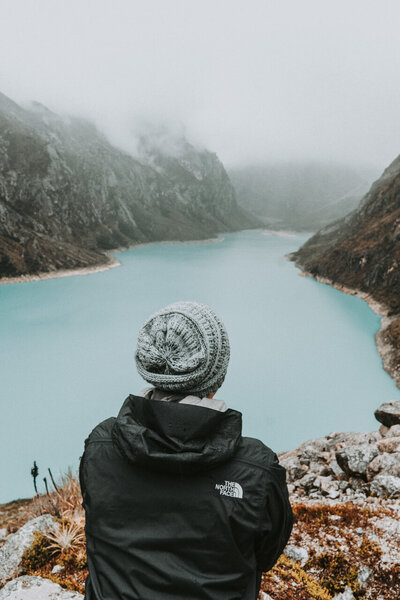
Maria Barciela
March 7, 2024
Mendoza Wineries – Our Ultimate 2024 Luxury Travel Guide
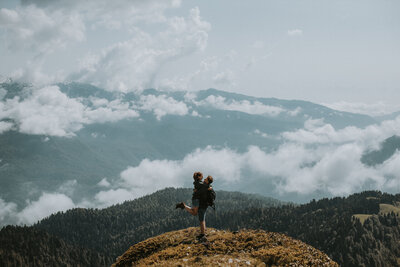
Clara Barciella
January 31, 2024
Best Things to Do in Rio de Janeiro, Brazil: Go Off the Beaten Path
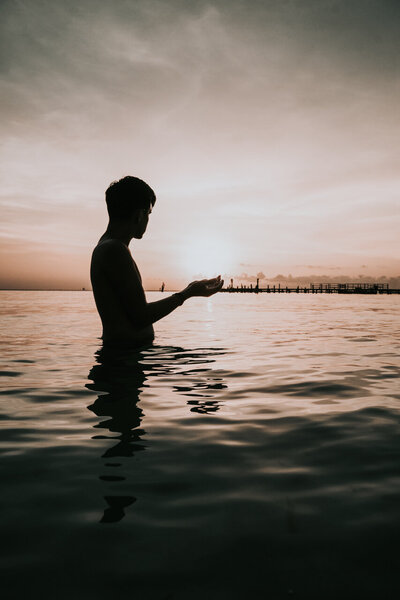
Clara & Maria Barciela
January 5, 2024
Summer in Peru: A Guide to Sun-Soaked Luxury Adventures
December 12, 2023
Best Places to See Wildlife in South America: Our Expert Guide
November 23, 2023
5 Best Places to See Penguins in Patagonia
We want you to truly experience the place we call home... and love it as much as we do. We're sharing six of our favourite South American destinations with you so you can start envisioning the experience of your dreams.
EXCLUSIVE DESTINATIONS IN SOUTH AMERICA
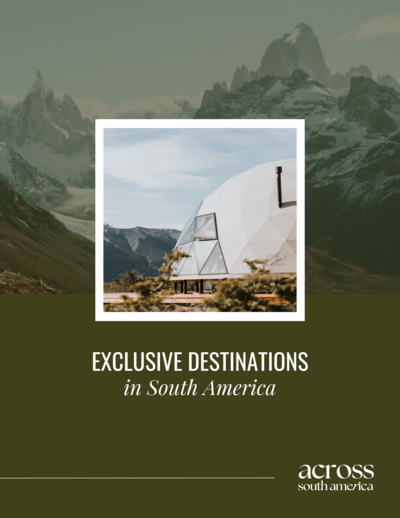
Luxury Travel Planning Guide
GET THE GUIDE →
Elevate your travel experience — download the ultimate luxury guide for an incredible journey!
Diverge from the typical tourist destinations in favor of unique luxury experiences curated by South American locals. We create trips that are custom tailored to your needs & dreams!
© 2024, Across South America. Privacy. Terms and conditions. Site crafted with love by Knap Creative .

Best of South America Tour
Perú - Buenos Aires - Iguazú Falls - Brazil
- Travel to South America and discover Peru, Argentina, and Brazil.
- Tour Machu Picchu, enchanting Buenos Aires, Iguazú Falls, and famous Rio de Janeiro in a 2-week itinerary.
- Best time to travel: All year round
Travel to South America: The Sacred Valley - Cuzco

- Transfer from Cuzco airport to your hotel in Sacred Valley – Day at leisure
Your 2-week South America trip starts in Perú in the amazing region known as Sacred Valley. Upon arrival at Cuzco airport, we’ll drive you to your hotel in Sacred Valley and you’ll have the rest of the afternoon to start your tour and explore this enthralling Andean spot.
Say Hueque Tips
- Why is Sacred Valley famous in Perú?
The Sacred Valley was a truly special place for the Inca civilization. Its many rivers and gorges, along with the fertility of their valleys, make this the most productive agricultural spot—the best corn in Peru grows here.

Pisac and Ollantaytambo Fortress - Sacred Valley

- Full-day tour to Pisac and Ollantaytambo Fortress
Continue exploring the Sacred Valley, and visit Pisac, famous for its craft market where you’ll find the most exquisite pieces of jewelry, ceramic, and textile craftwork. We’ll continue our trip by visiting the archeological site of Pisac to admire the stone terraces built by the Incas, and last, we’ll head to Ollantaytambo to visit its stunning fortress. Admire the remaining towers and walls that used to keep the citadel and the royal guests that it used to host.
Visit the Incredible Machu Picchu

- Train to Aguas Calientes, the base town to visit Machu Picchu
Your tour to Machu Picchu begins with a 4-hour train ride to Aguas Calientes. This town is also known as “Machu Picchu Pueblo” and is the last stop before entering the remains of the most important archaeological site in Peru. Machu Picchu means “Old Mountain” and is considered a World Heritage Site by UNESCO.
- Tour to Machu Picchu, the Inca citadel
You’ll finally reach Machu Picchu (the ancient sanctuary and retreat for the Inca Pachacutec) after a short transfer by bus through the mountains.
Here, when we arrive at the exact destination that is the highlight of your South America trip , we will have those special moments that will most certainly be cherished forever.
Some of the places you can visit include the Intipunku, or “Sun Gate”, where the sun rises every day through a stone passageway, or the Inca Bridge, an incredible stone building that served as the entrance and exit of the citadel.
At the end of the tour, you will take a bus back to Aguas Calientes and have lunch at ¨Cafe Inkaterra¨ in Machu Picchu. Enjoy your leisure time during the rest of the afternoon and a restful sleep in the town of Aguas Calientes.
Aguas Calientes - Day at Leisure - Travel Back to Cuzco
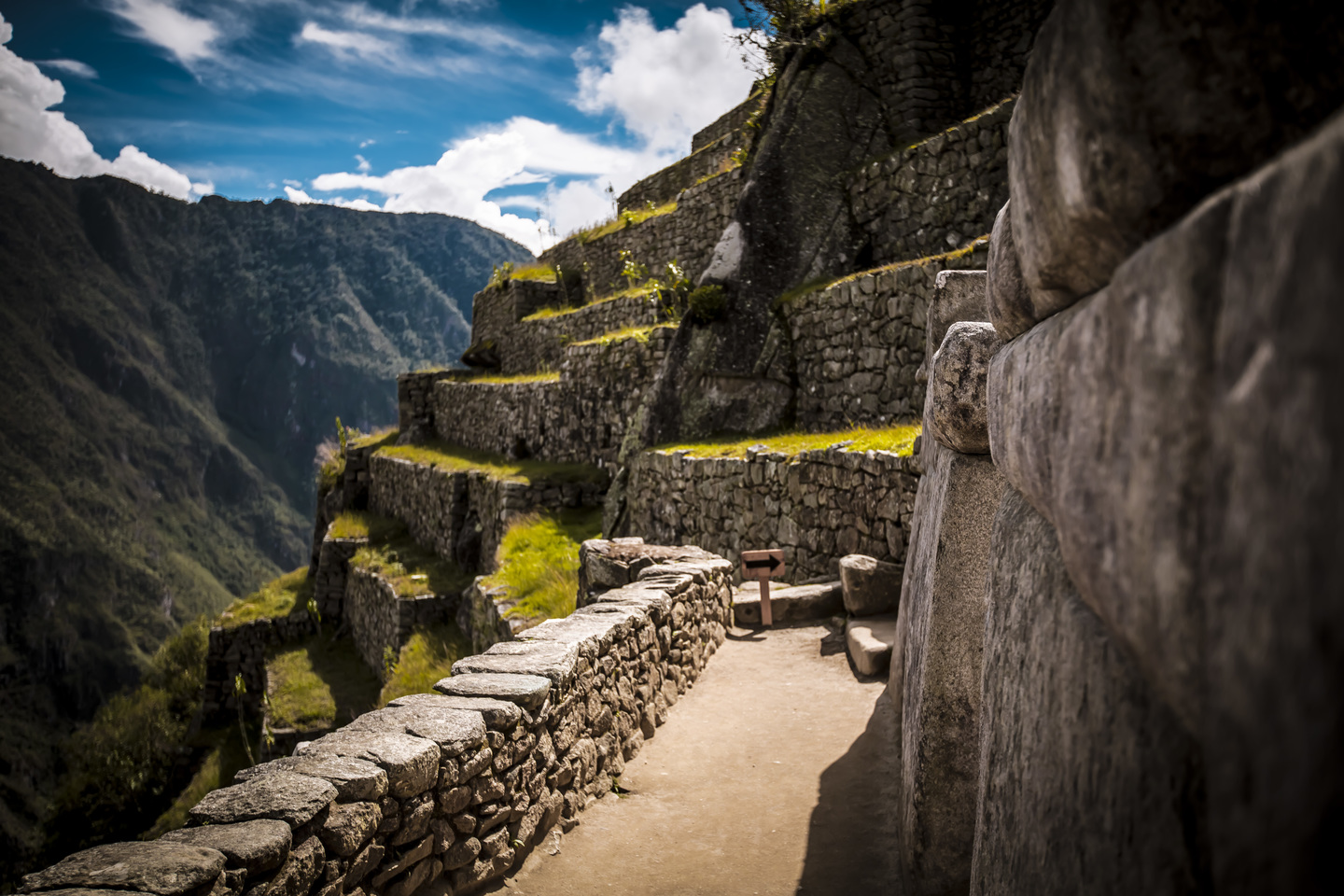
- Optional tour: Wayna Picchu hiking
In the morning we suggest that you return to Machu Picchu and continue exploring some of the many attractions of the citadel. On this second visit, you can climb Wayna Picchu (subject to space availability), which means “Young Mountain” as opposed to Machu Picchu, the “Old Mountain”. This ascent takes about an hour and its main attraction is the “Temple of the Moon”, a complex of underground structures likely to have been used by the elite.
- Train to Cuzco
In the afternoon you will head to the train station in Aguas Calientes and take the train to Cuzco where you’ll go by your own to your hotel.
- Optional free activities in Aguas Calientes
If you don’t want to add any optional tour, take the day to visit the interesting town of Aguas Calientes, its historic Plaza de Armas, and the many local markets nearby. In these markets, you can find various types of local handcrafts, typical food, and even different potions for finding love or keeping good luck on your side.

City Tour and Archaeological Sites - Cuzco

- City tour and archeological sites of Cuzco
In the afternoon, we’ll pick you up at your hotel to start your Cuzco city tour with a visit to the Coricancha, also known as the “Temple of the Sun”, the construction of which was ordered by Inca Pachacútec (1438-1471) when he was a powerful Incan leader. This is where the Sun (Inti, in Quechua) was worshipped during the reign of the Inca Empire.
Declared a UNESCO World Heritage Site in 1983, Cuzco contains the top examples of Incan architecture, which is based on their multiple uses of rock as the main building material. Machu Picchu is the most famous example of this practice.
We’ll continue to visit the Cathedral, the most important building in the Main Square (construction lasted almost a century) and one of the most breathtaking Spanish colonial churches in America.
Our next stop will be the Sacsayhuamán fortress, an emblematic Incan piece of work, which protected the Holy City. It was built with giant megalithic blocks, the transportation and construction of which continue to be a mystery.
This day will end with a visit to some archeological main attractions. You’ll visit Qenqo, located just over 2 miles away from Cuzco City (where it is believed that agricultural rituals took place), to finish with the visit of the vestiges of Puka Pukara, the “red fortress”, located 4.5 miles away from Cuzco.
At the end of this full historical and natural immersion in Cuzco’s heritage, we’ll drive you back to your hotel.
Continue With Your Travel Itinerary to South America - Buenos Aires

- Transfer from your hotel in Cuzco to the airport
Today, we’ll pick you up from your hotel and drive you to the airport to take your flight to Buenos Aires (via Lima), your next destination in your South American travel itinerary .
- Transfer from Buenos Aires airport to your hotel – Day at leisure
Welcome to Argentina! Upon arrival, we will drive you to the city and you’ll have the rest of the day to enjoy Buenos Aires at your own pace. Buenos Aires is a marvelous, energetic, cosmopolitan city, full of color and different styles of architecture.
The capital of Argentina, and described as the Paris of South America, Buenos Aires proudly embraces its title, and also shows off plenty of its own culture! Argentinians are usually eager to host visitors; if you walk the streets with a map, someone will surely stop and ask if you need directions…that’s just our spirit!
- Our recommendations for your first day in Buenos Aires
Don’t know where to start? Don’t worry, che! (“che” means “guy” in Argentina). For this first day, feel free to wander the cobblestone streets lined with outdoor cafes, enjoy the mouthwatering aroma of world-famous Argentine beef sizzling on an open parrilla (barbeque), and browse the local antique and artisan markets that offer plenty of bargain shopping.
Buenos Aires
- Half-day city tour through Buenos Aires
In the morning we will pick you up from your hotel to enjoy our 5-hour Buenos Aires city tour—you will be swept away by the highlights of our beloved Buenos Aires! Over the course of a half-day, you will have the chance to visit the historical and political center of the city; Plaza de Mayo, and the Pink House (the presidential house).
Next, we’ll move on to San Telmo, with its cobblestone streets and the oldest residential neighborhood, and then to La Boca where Buenos Aires turns colorful and tango is ever-present. Come walk Caminito Street and dance with the locals. The next stop is the chic and aristocratic Recoleta, where the big palaces remind us why Buenos Aires is called the “Paris of the South”.
- Dinner and tango show
In the evening we’ll pick you up from your hotel to take you to a mystical place where you’ll discover one of our most ancient traditions. Tango is more than our national dance… tango is our immigrant origins, the talent of our local artists, the sensuality of Argentine women, and our way of dealing with a broken heart; dancing our way through tragic, and yet eternal, love stories.
Tonight you will enjoy a 3-hour professional display of tango and music with a group of local artists onstage immersed in an elegant and alluring place. The manners, ambiance, clothes, and dance steps that tango-lovers used to practice 100 years ago will come to life again and you will travel back in time for a night.
This spectacular tango show in Buenos Aires will be accompanied by delicious Argentine and international cuisine. Dinner is all-inclusive, beverages included so you can lose yourself in the ethereal taste of Malbec wine. At the end of the evening, around midnight, you will be driven back to your hotel, fully in love with the bohemian spirit of our incredible city.
- What you have to know about tango culture in Buenos Aires
Tango is, all in all, a cultural experience that’s deeply rooted in Argentine hearts. Where do regular people go dancing tango? There is an immense number of dance halls or milongas in Buenos Aires. Some of our favorites are La Viruta -beginner-friendly- and Salon Canning -with more advanced clientele- in the Palermo neighborhood. Tango has evolved a big deal in the past years, and now there are also LGBT milongas that encourage a most inclusive practice.
Travel Through South America. Time to visit the Falls! - Iguazú Falls

- Transfer from your hotel to the Buenos Aires airport
Today you will say goodbye to the big city and fly to the jungle; we’ll bring you to the airport to take your flight to Puerto Iguazú.
- Transfer from the airport to your hotel in Puerto Iguazú – Day at leisure
Upon arrival in Puerto Iguazú, we’ll drive you to your hotel, where you will have the afternoon to relax and enjoy the tropical climate and jungle setting. The small border town of Puerto Iguazú is the gateway to visit the impressive Iguazú Falls, one of the Seven Natural Wonders of the World and a UNESCO World Heritage site, making it a must-see destination for any traveler visiting Argentina.
- Our recommended activities to explore and learn about Puerto Iguazú.
If you’re eager to explore the town, you can visit the “Hito tres fronteras”, a viewpoint west of the town center that stands high above the turbulent reddish-brown junction of the Iguazú and Paraná rivers, which also form the Triple Frontera, or Triple Border between Argentina, Brazil, and Paraguay.
The Güirá Oga (the house of birds in the native Guaraní language), the sanctuary for animals hurt by illegal hunting and trapping, is the best option for wildlife enthusiasts.
For a true adventure, we recommend that you take a bike tour through the rainforest with a specialized guide. You will discover the flora and fauna, the sounds of the jungle, the trail of little native mammals, and the traditions of the Guaranies.

Iguazú Falls National Park - Argentinian Side

- Wander Iguazú Falls National Park and meet The Devil’s Throat
Today you will visit Iguazú Falls, definitely another highlight of this 2-week travel itinerary through South America. In the morning our driver and bilingual guide will pick you up from your hotel and drive you to the National Park, on the Argentinian side. Enjoy a 7-hour tour wandering through the rainforest!
The falls are surrounded by a humid subtropical forest where the exuberant vegetation is home to many different animals and birds. Our guide will help you spot some of them: antbirds, toucans, manakins, parrots, and coatis, just to name a few of the most common birds. Lower and upper walkways weave in and around falls permitting up close and personal experiences with this magnificent spectacle of nature.
The Argentine side of the falls is filled with a myriad of paths walkways and stairways which allow you to have an experience from many different perspectives. You will have the chance to meet “The Devil’s Throat”: the largest of the falls and for many the most spellbinding. To get to the “Devil’s throat” you take the ecological train and then walk out along boardwalks. After walking and taking pictures of animals and plants, you will have some free time to eat lunch in this amazing environment. At the end of the experience, we will drive you back to your hotel.
- Would you love to have a “Great Adventure”?
The “Great Adventure” (gran aventura) is an optional tour you can add on this day. You will take an open-air jeep through the rainforest and then a zodiac open-air boat ride up the river to the base of the falls (there is a 100% chance that you will get soaking wet on this boat trip, so be sure to take some extra clothes!).
Iguazú Falls, Travel to Río - Brazilian Side & Rio de Janeiro

- Visit the Brazilian side of Iguazú National Park
Your South America tour also includes a 4-hour visit to the Brazilian side of Iguazú Falls National Park. After breakfast, we’ll pick you up from your hotel to start the day. You’ll be crossing borders today so please, don’t forget your passport!
While Argentina has 80% of the falls on its side, Brazil has the best panoramic view. Prepare to fully appreciate the immensity of Iguazú Falls. Take your time to enjoy it and feel it, to stroll the different walkways and feel the spray of water on your face. Take the boardwalk over the Salto Santa María; it feels like walking on the water. Get closer to the “Devil’s Throat” and experience the power of the water! Although you’ll be looking into Argentina, your feet will be on the ground in Brazil! Where does Argentina start and Brazil end? Well, it’s time to walk the line.
Back from the footbridge, you’ll have some free time to use the restrooms, visit the gift shop, and take a special elevator to an especially high viewpoint. At the end of the tour, we’ll drive you back to your hotel.
- Transfer from your hotel in Puerto Iguazú to the airport
In the afternoon, we’ll drive you to the airport to take your flight to Rio de Janeiro, and start your exploration of Brazil, the land of happiness!
- Transfer from Rio de Janeiro airport to your hotel – Day at leisure
Upon arrival at Rio’s airport, we’ll be waiting to drive you to your hotel. Enjoy your leisure time today exploring this vibrant city — you have just arrived in one of the powerhouses of South America!
Many people think of Brazil as merely an amazing paradise beach… and they are not entirely wrong. But, this mysterious and passionate corner of the globe is much more than just a pristine sandy utopia…
Rio de Janeiro (‘River of January’ in Portuguese), which was classified as a Cultural Landscape by UNESCO, is a metropolitan gem tucked between the mountains and the sea. Rio is best known for its bossanova (sultry Brazilian music genre), mouth-watering feijoada (a traditional bean and pork stew), refreshing caipirinhas (classic Brazilian cocktail), and the beaming smiles of its people.
- What to do in Rio de Janeiro?
The perfect place to try all these Brazilian classics is the bohemian Lapa neighborhood which sits at the edge of the historical downtown hub. Enjoy the day mingling with locals in this incredible part of the city — stop by the Aqueduto da Carioca to take a picture with its magnificent white arches, and visit the Escalera de Selaron (Selaron stairway), a 215-step stairway decorated with tiles from all around the world. Find the beautiful images and messages hidden throughout its multicolored steps! Discover even more ideas on how to spend your time in the city in our Rio de Janeiro Travel Guide.

Santa Teresa, Corcovado & Tijuca Forest

- Discover Corcovado, Tijuca Forest and Santa Teresa
Today you will travel to the spellbinding Corcovado Hill, home to the famous Christ the Redeemer statue, which has achieved celebrity status around the world through each postcard sent by visitors from Rio!
After breakfast, we’ll pick you up at your hotel in a jeep and take you on a 4-hour tour of Corcovado Hill, the rocky, 2329-foot guardian of Guanabara Bay. We’ll pass by the Cosme Velho neighborhood, one of the most elegant places in Rio, and take the red cog train up to Corcovado Hill, crossing the dense vegetation of the Tijuca forest.
From here you’ll start having your first taste of incredible views of the bay and the city! At the end of the track, the granitic giant awaits. Christ the Redeemer stands on the top of Corcovado Hill with arms wide open, praying for the wellbeing of Rio de Janeiro.
From this privileged spot, you will also see Sugarloaf Mountain (another classic destination for travelers), the beautiful Southern beaches, and the Rodrigo de Freitas Lagoon, whose waters support a gigantic floating Christmas tree during the holiday season.
At the end of this day trip, you’ll return to the cog train through the forest and back down the mountain. On our way back to your hotel, we’ll stop to discover the traditional Santa Teresa district, with its artisanal galleries and historic bonding (an old-school trolley car).
- Which beaches you must visit in Rio de Janeiro?
Enjoy the rest of your leisurely evening mingling with some carioca beachgoers on the famous Copacabana Beach, where people from all around Rio gather to bath and play some beach sports, or relax in the ethereal Playa Vermelha, one of the most peaceful beaches of Rio, where you can walk the Claudio Coutinho trail and spot titi monkeys.

Visit to Sugar Loaf - Rio de Janeiro

- Half-day Sugar Loaf tour – Discovering the other side of Rio
Today you will discover the other side of Rio de Janeiro, nicknamed Cidade Maravilhosa or “Marvelous City”. We’ll pick you up at your hotel to start a 4-hour city tour through downtown Rio, passing by cultural icons such as the Sambadrome and the Metropolitan Cathedral.
Get to know the traditional Cinelândia Square with its historical buildings, the Municipal Theater, the National Library, and the National Museum of Fine Arts. After traveling through the verdant Flamengo Park (Aterro do Flamengo), we’ll take you to the neighborhood of Urca, which is home to Sugarloaf Mountain (Pão de Açúcar). The only way to the top is by taking a cable car!
The first cable car transports passengers up Urca Hill, which is more than 700 feet high and overlooks Guanabara Bay and its islands, the Rio-Niterói bridge, and Corcovado Hill. From this point, you’ll take a second cable car to the very top, reaching a height of approximately 1,300 feet above sea level. At the end of the tour, we’ll drive you back to your hotel.

The End of Your 2-Week Travel Itinerary to South America - Rio de Janeiro

- Transfer from your hotel to Rio de Janeiro airport
Time to say obrigado (thanks) for all these precious travel memories! Today we’ll pick you up to drive you to the airport, where you’ll take your flight to your next destination. If you’re not ready to throw in the towel just yet, take some trip-extension ideas from our comprehensive travel itineraries and keep on exploring other incredible travel destinations in South America.

Request a quote
- Prices in US Dollars.
- Valid until April 2025 (ask for prices at Christmas and New Year).
- Prices are per person, based on 2 people in double occupancy. Single rates are available on request.
- Flights are not included in the price but can be arranged on request.
- 2-night accommodation in Cuzco
- 2-night accommodation in Sacred Valley
- 1-night accommodation in Aguas Calientes
- 2-night accommodation in Buenos Aires
- 2-night accommodation in Iguazú
- 3-night accommodation in Rio de Janeiro
- Daily breakfast.
- Meals according to the itinerary: lunch on day 3; dinner on day 7
- Tours and transfers are mentioned in the itinerary.
- Tickets to: Corcovado and Sugar Loaf, Qoricancha Temple, Monastery of Santo Domingo, Cusco Cathedral in Cusco, Moray archaeological remains, Maras salt deposits, Awana Kancha, Pisac Market, Ollantaytambo Fortress in the Sacred Valley, and Machu Picchu.
- Bilingual guide (English / Spanish)
- International or domestic flights
- National Park entrance fees
- Travel / Medical Insurance
- Brazilian VISA: Citizens of some nationalities are required to present a tourist VISA to enter Brazil. Please check the requirements on your country’s consulate website. If you need any other information check this link
- Iguazú Eco Fee: This is a mandatory tax that you have to pay once you get to your hotel in Iguazú. It’s about $5 usd per guest, per night, and it varies according to your hotel category. Only cash is accepted
ESTIMATED COST FOR THE FLIGHTS ON THIS TRIP: Local flights cost from $150 per person per segment. We offer special rates on flights for this tailor-made itinerary.
Customize Your Adventure:
Share your trip plans, and we’ll tailor it to your needs and budget.
We deeply care about our planet, just like you do. When you book with us, you’re not only fulfilling your travel dreams but also leaving a positive impact on the destination you’re about to discover. We are proud to plant 10 trees in damaged zones of Patagonia for every traveler. It feels good to do it right. Let’s move beyond sustainable!

Complete the form and a member of Say Hueque's team will get in touch with you in about 48 hours
You can accelerate the process by reserving "Best of South America Tour" right now!
I wanted to express our gratitude for your exceptional assistance in planning our recent trip to Argentina and Chile. The experience exceeded all expectations, and we are incredibly thankful for your recommendations that played a significant role in creating lasting memories for our family.
Here are some highlights from our trip that we wanted to share: Glacial trek, Aldebaran Hotel - a unanimous favorite for its post-trek relaxation and rejuvenating massages, El Chalten hikes and the New Year's Eve dinner
We had an incredible journey, and your contributions made it truly special.
Thank you once again for your excellent planning and support. We look forward to working with you in the future.
Best regards
My brother and I had a fantastic time in Patagonia and are so grateful for everything you did to make this such an amazing trip!! The itinerary you put together for us was perfect and we especially enjoyed the Laguna de los tres hike and big ice trek on the Perito Moreno glacier. Thank you so much for squeezing us into all the activities and accommodations. We are already looking forward to coming back and I've attached a few pictures of us :).
The trip was absolutely fantastic. We had such a great time! The guides were all knowledgeable and enthusiastic and a lot of fun to spend the days with. I want to give personal recognition to the tours/groups in Buenos Aires, El Calafate, Puerto Madryn, Peninsula Valdes, and the jeep tour on day 1 of Rio de Janeiro. Thank you for your hard work and support for setting up this trip. The Vamos app is also fantastic and really helped throughout the trip!
I hope to keep in touch for any future trips!
Gracias y saludos a todos!
The most remarkable aspect of the expedition was, undoubtedly, the breathtaking wildlife. The landscapes were a sanctuary to an array of unique creatures. Majestic whales gracefully breached the icy waters, while adorable penguins waddled along the shores, seemingly unfazed by our presence. Observing these creatures in their natural habitat was an experience that words cannot fully capture. It's a memory that will forever be etched in my mind.
the service on the cruise was exceptional. The crew’s knowledge and passion for the region were evident in their informative lectures and their willingness to share their expertise. They ensured our safety while also going above and beyond to make our journey comfortable and memorable.
This cruise to Antarctica was an incredible expedition. Adventure, natural beauty, and wildlife encounters were the main stars. Luckily we enjoyed a smooth sail through the Drake Passage, so we could admire the astounding wildlife, and the outstanding service made this journey a once-in-a-lifetime experience that exceeded all expectations. If you seek an adventure that stirs the soul and leaves an indelible mark, an Antarctic cruise is an absolute must.
The opportunity to step foot on the untouched Antarctica was a privilege. The glaciers, the icy terrain, and the absolute stillness were both humbling and invigorating. Exploring via zodiac boats allowed us to get up close to the landscape and wildlife, providing an intimate experience of this raw, unspoiled wilderness. Thanks to every member of the crew that made this adventure an unforgettable experience!
I specially want to thank Antonella and Lucia for their hard work and dedication towards our very successful holiday. Your dedication and eye to detail was very much appreciated.
Celia our guide for our two days at Iguazu falls was exceptional.
We will definitely recommend Sayhueque to our friends back in Australia.
We enjoyed our trip very much
Sayhueque did an amazing job from start to finish.
You guys helped me provide my husband with a truly unforgettable experience for his 50th birthday, and I can’t say thank you enough.
The trip was really great, everything went smoothly and I had a great time! The organisation was great and I have nothing to really complain about.
I would rate this trip 9.5/10 and definitely recommend it to others if they wanted to go to Patagonia. The activities that you chose were very good and the organisation was great. Also because of the 24/7 emergency contact that responded very quickly. Felipe, our travel advisor was great help!
Thanks for everything

Machu Picchu - Lima - Cuzco - Colca Valley - Sacred Valley - Puerto Maldonado

El Calafate - Ushuaia - Buenos Aires - Iguazú Falls
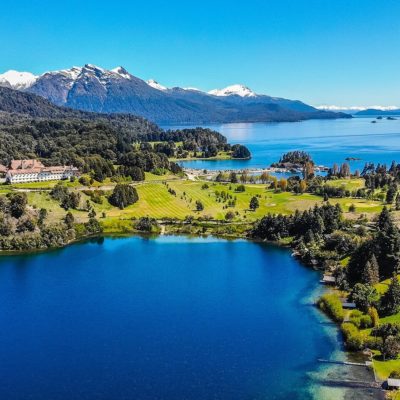
Buenos Aires - Iguazú Falls - Mendoza - Bariloche

Buenos Aires - Calafate - Chaltén - Ushuaia - Torres del Paine

Buenos Aires - Puerto Madryn - Ushuaia - El Calafate - Iguazú
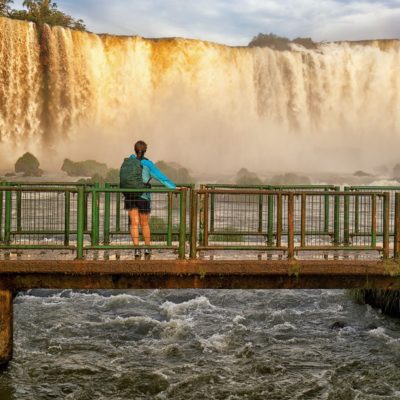
Buenos Aires - Calafate - Mendoza - Iguazú - Ushuaia
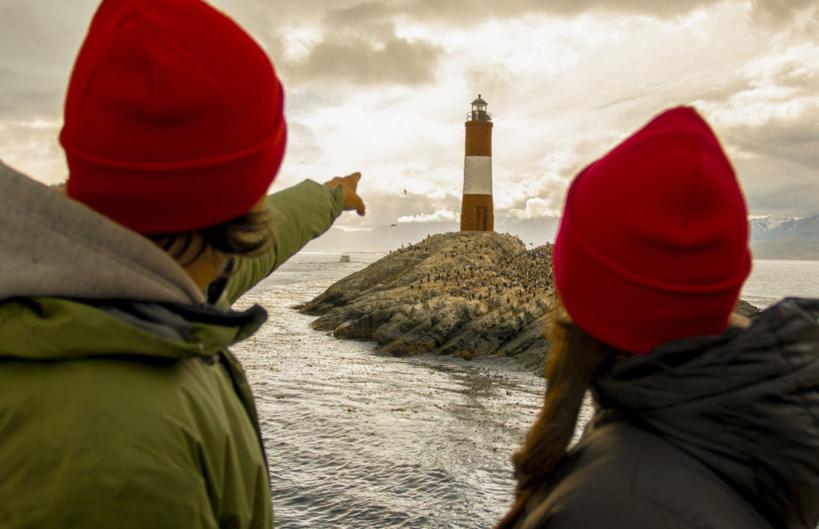
Buenos Aires - Iguazú - Ushuaia - Calafate

Buenos Aires - Salta - Jujuy - Iguazú Falls - Iberá Wetlands

Buenos Aires - Northern of Argentina - Santiago de Chile - Atacama Desert - Uyuni Salt Flats
In these hand-picked articles from our Travel blog you will find useful information for your next trip

Top 3 Destinations in Argentina for Kayaking
A surface area of near 2.8 million square kilometers allows Argentina to be a more than an appealing destination for […]

Top Buenos Aires Milongas
The art and passion of tango lives in the spirit of Argentina, and some say that a trip to Buenos […]

Buenos Aires to Rio de Janeiro: Know How to Do it
Rio de Janeiro, Brazil is the single most visited city in the entire southern hemisphere. Besides the perfect weather, beaches […]
Once the payment and availability are confirmed we will proceed with bookings, and you will receive a confirmation in 24 working hours
Select a type of payment

Let's keep together & connected through our social media channels:
The website uses cookies to enhance your experience. By continuing, you agree to our Cookie Policy
Fill out the form, and our Travel Specialists will craft your quote within 48 Hours
Complete the form and our Travel Specialists will craft your quote within 48 Hours
- South America Tours
- South America 2-Week Itinerary And Tours
South America 2-Week Tours and Itineraries
See the top South America 2-Week tours and itineraries. Select from 72 2-Week tours in South America with a total of 147 genuine reviews. Each of Bookmundi's 2-Week South America itineraries are carefully handpicked.
- South America Travel Guide
73 South America 2-weeks itineraries and tours

- Starts Ushuaia, Argentina
- Ends Ushuaia, Argentina
Quest for the Antarctic Circle
- Best price guaranteed
- No booking fees
- Tour Type Group Tour
- Activities Photography tours & Wildlife Photography tours , Wildlife , Trekking and Hiking , Kayaking and canoeing , Cultural, religious and historic sites , Sailing, yachting and motor boating & Safari 'data-more-tripid='5312'>+5 more
- Accommodation Hotel & Ship Cabin
- Transport Bus, Private Vehicle & Cruise Ship
- Age Range 12-95 yrs
- Operated in English
- Dec 21 Only 2 seats left
- Feb 08 Only 4 seats left
- View More Jan 1, 2019 Jan 2, 2019 Jan 3, 2019

- Starts Buenos Aires, Argentina
Crossing the Circle: Southern Expedition
- Tour Type Cruise Tour
- Activities Cruise & Polar expeditions and cruise
- Accommodation Camping, Hotel & Ship Cabin
- Transport Cruise Ship & Flight
- Age Range 8-99 yrs
- Operated in English, German, French
- Jan 06 Only 1 seat left
- Feb 04 Only 1 seat left

- Starts Cusco, Peru
- Ends Cusco, Peru
The Salkantay Trek
- Tour Type Small Group Tour
- Activities Trekking and Hiking & Adventure
- Accommodation Hotel, Camping, Lodge & Tent
- Transport Train, Bus & Boat
- Age Range 16-95 yrs
- Brochure Price: US$ 4,048
- Special Deal (5%): - US$ 193
- Total Price from: US$ 3,855
- Jun 23 Only 7 seats left
- Aug 18 Only 8 seats left

- Ends Buenos Aires, Argentina
End of the Earth
- Activities Wildlife & Trekking and Hiking Wildlife , Trekking and Hiking , Explorer & Safari 'data-more-tripid='5145'>+2 more
- Accommodation Hotel & Camping
- Transport Boat, Bus, Ferry, Taxi & Private Vehicle
- Oct 12 Only 5 seats left
- Oct 19 Only 8 seats left

Journey to the Antarctic Circle (Ocean Endeavour)
- Activities Polar expeditions and cruise & Wildlife
- Transport Cruise Ship
- Brochure Price: US$ 11,100
- Special Deal (10%): - US$ 1,110
- Total Price from: US$ 9,990
- Feb 04 Only 5 seats left
- Feb 25 Only 4 seats left

- Starts Quito, Ecuador
- Ends Quito, Ecuador
Inland & Amazon
- Activities Rainforest and jungle visits & Cultural, religious and historic sites
- Accommodation Hotel, Lodge & Hut
- Transport Bus, Flight, 4WD Jeep & Private Vehicle
- Brochure Price: US$ 2,199
- Special Deal (30%): - US$ 660
- Total Price from: US$ 1,539
- Apr 20 Only 6 seats left
- May 04 Only 10 seats left

- Starts Lima, Peru
Peru: Ancient Cities & the Andes
- Activities Trekking and Hiking & Cultural, religious and historic sites Trekking and Hiking , Cultural, religious and historic sites & Explorer 'data-more-tripid='5248'>+1 more
- Accommodation Hotel, Home-stay & Camping
- Transport Bus, Train, Flight & Private Vehicle
- Age Range 18-39 yrs
- Brochure Price: US$ 2,399
- Special Deal (30%): - US$ 720
- Total Price from: US$ 1,679
- Apr 21 Only 3 seats left
- May 05 10+ seats left

- Ends Guayaquil, Ecuador
Machu Picchu & Galapagos
- Activities Cultural, religious and historic sites & Trekking and Hiking Cultural, religious and historic sites , Trekking and Hiking & Natural landmarks sightseeing 'data-more-tripid='11421'>+1 more
- Accommodation Hotel, Yacht Cabin & Lodge
- Transport Train, Flight, Bus, Boat & Yacht
- Oct 01 Only 8 seats left
- Oct 15 Only 8 seats left

Luxury Food and Wine Tour of Argentina & Chile in 14 days
- Trip customizable
- Tour Type Private Tour
- Activities Wine tasting tours & Natural landmarks sightseeing Wine tasting tours , Natural landmarks sightseeing , Volcanoes , Food tours , City sightseeing , Local culture , Cooking classes , Museum and gallery visits & Horseback riding 'data-more-tripid='15226'>+7 more
- Accommodation Hotel
- Transport Flight & Private Vehicle
- Age Range 5-79 yrs

- Starts San Jose, Costa Rica
- Ends San Jose, Costa Rica
Costa Rica Coast to Coast Ride
- Activities Bicycle tours
- Accommodation Hotel, Lodge & Resort
- Transport Boat, Coach & Bus
- Aug 10 Only 4 seats left
- Oct 12 Only 8 seats left

- Activities Polar expeditions and cruise & Wildlife Polar expeditions and cruise , Wildlife & Safari 'data-more-tripid='7811'>+1 more
- Accommodation Ship Cabin
- Transport Flight & Cruise Ship
- Age Range 18-95 yrs
- Feb 04 Only 8 seats left
- Mar 04 Only 8 seats left

Basic Costa Rica: Coastlines & Cloud Forests
- Activities Wildlife & Cultural, religious and historic sites Wildlife , Cultural, religious and historic sites , Explorer & Safari 'data-more-tripid='4640'>+2 more
- Accommodation Hotel, Hostel & Home-stay
- Transport Boat, Bus, Private Vehicle, Taxi & Ferry
- Brochure Price: US$ 1,299
- Special Deal (25%): - US$ 325
- Total Price from: US$ 974
- May 05 Only 1 seat left
- May 12 Only 4 seats left

Adventures in Patagonia
- Activities Active and outdoor & Walking tours Active and outdoor , Walking tours , Wildlife , Adventure & Safari 'data-more-tripid='21832'>+3 more
- Accommodation Hotel, Lodge & Villa
- Transport Ferry, Bus, Flight & Boat
- Age Range 16-79 yrs
- Oct 19 Only 6 seats left
- Oct 26 10+ seats left

Andes to Amazon
- Activities Cultural, religious and historic sites & Natural landmarks sightseeing
- Accommodation Hotel & Lodge
- Transport Boat
- Sep 06 Only 5 seats left
- Sep 27 Only 8 seats left
South America 2-Weeks Tour Reviews
- South America budget tours
- Eco tours in South America
- South America guided tours
- South America family tour packages
- South America honeymoon packages
- South America luxury tours
- South America private tours
- South America self-guided tours
- South America small group tours
- South America solo trips
- South America tours for senior citizens
- South America tours for young adults
- South America group tours
- South America last minute deals
- South America travel deals
Other Durations
Best price guaranteed - No booking fees
Sign-in to unlock instant trip discounts. Create wish lists and save up to USD 1,500.
- Travel Planning Guide
The Best 2-Week (14-Day) Tours in South America

Searching for the ultimate 2-week getaway to South America ? Look no further! We've meticulously analyzed an array of 14-day guided tours, taking into account factors such as price, service, comfort, guest ratings, and activities so that we could find the absolute best. These handpicked 14-day tours to South America offer the ideal balance of relaxation and adventure, allowing you to make the most of your holiday. From exciting excursions that immerse you in the local culture to moments of pure tranquility, these epic tours are designed to provide the perfect timeframe for an unforgettable experience. Get ready to embark on a two week journey to South America that will leave you refreshed, invigorated, and with a newfound love for exploration.
- Buenos Aires - Iguazú - Salta - Bariloche - Calafate & Ushuaia 14 Days, $1799.00
- Volunteer in Peru 14 Days, $571.16
- Amazon, Incas & Titicaca - 13 days 13 Days, $3655.00
Which 14-day tour options are available in South America?
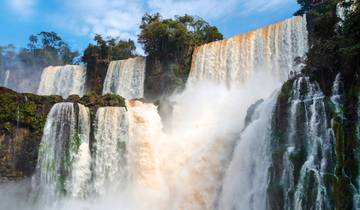
Here are the important factors:
- 60 trip options analyzed
- $325 average price per day (USD)
- 13 to 14 days in length
- 4.59 of 5 average rating
- 26 people or less on average
Curious about the diverse range of tours lasting 2 weeks? Prepare to be amazed by the array of options available to suit every traveler's preferences. It comes as no surprise that visitors adore these tours, given their exceptional average guest rating of 4.59 out of 5 stars. When it comes to group sizes, the average maximum capacity stands at 26 people, allowing for a comfortable and sociable experience. The shortest tour is 13 days, while the longest is 14 days. As for physical activity options, the tours are thoughtfully categorized as easy, moderate, serious, and heart-pumping, with the most being easy. For transportation , the tours are marked as ocean cruise and coach / bus, with a prevalent number on ocean cruise tours. With a comprehensive analysis encompassing 60 tours lasting 2 weeks, you can rest assured that South America has something tailored to your interests and preferences, promising an unforgettable experience for all.
(All tour prices are in US Dollars before taxes, and come from a base price that is reported by TourRadar. Peak season prices can vary significantly, particularly in destinations where seasonal travel fluctuates dramatically.)
So, let's get to it and see...
The 10 Best 2-Week Tours in South America
Buenos aires - iguazú - salta - bariloche - calafate & ushuaia.
- Great Value: the daily price is lower than average for tours lasting 2 weeks.
Check out this incredible voyage that has received a 4.3 out of 5 rating from previous guests, visiting Argentina and Brazil. With a duration of 14 days, this journey ensures an intimate group size of 10 people, and is good for travelers from 3 and up. Traverse through 10 enchanting destinations, with El Calafate, Perito Moreno Glacier, Ushuaia, and Puerto Iguazu among the must-see stops along the route. Buenos Aires marks the starting point, while Ushuaia stands as the final stop on your incredible journey. This fantastic option, organized by Receptivo Aborigen Tours , presents an unbeatable value at just $129 per day.
- Sightseeing
Volunteer in Peru
- High Quality: guest ratings are higher than average.
Spanning over 14 days, this voyage has a maximum size of 30 individuals. Welcoming travelers from 18 to 25 years old, it is organized by Plan My Gap Year , a very popular company with plenty of great reviews. Cusco kicks off your expedition, serving as both the starting and finishing point. Available at an unbeatable price of only $41 per day, this option also has a rating of 5 out of 5 stars from previous guests.
- In-depth Cultural
- Volunteering
Amazon, Incas & Titicaca - 13 days
Here's your chance to take off on an exceptional journey, visiting Peru and Bolivia, that has garnered a 5 out of 5 rating. With a duration of 13 days, this jouney will have 24 participants, and it warmly welcomes travelers from 18 to 70 years old. Expertly organized by On The Go Tours , this amazing trip is an incredible value at just $281 per day.
Colombia & Galapagos Express 13 Days Tour
This memorable voyage, visiting Colombia and Ecuador, is offered by GUIDEcuador Travel which has received plenty of positive reviews. The trip itself has a guest rating of 5 out of 5 stars, and is priced affordably at $404 per day. Explore 11 incredible locations on this trip, including San Cristóbal Island, Leon Dormido, Santa Cruz Island, and Zipaquira. Bogota marks the starting point, while Quito stands as the final stop on your incredible journey. The maximum group size is 12 people, welcoming travelers from 12 to 80 years old.
Pure Brazil
Set off on an extraordinary journey that has been awarded a 4.4 out of 5 stars by previous guests. With a duration of 14 days, this voyage offers an intimate group setting, accommodating 16 individuals, while extending a warm welcome to travelers from 16 to 85 years old. Discover a journey that spans 6 destinations, with notable stops in Cuiaba, Pantanal, Foz Do Iguacu, and Manaus. Beginning in beautiful Salvador, you'll have a terrific journey that ends in Rio de Janeiro. Brought to you by Explore! , this exceptional deal is an incredible steal at a mere $461 per day.
Patagonia Hiking Adventure
With this option you can experience an unparalleled journey for 14 unforgettable days, visiting Chile and Argentina. It ensures an intimate group setting with 14 participants at most. This trip takes you on an adventure to 10 destinations, including Puerto Natales, Torres del Paine National Park, El Calafate, and Perito Moreno Glacier. Punta Arenas will mark the start of your journey, while El Calafate will serve as its final destination. Active Adventures , the organizer of this journey, extends a warm invitation to guests travelers from 16 to 90 years old. Hiking and sightseeing are just a few of the activities on this terrific journey. This extraordinary opportunity offers exceptional value at only $571 per day.
- Hiking & Trekking
The Richness of Southern Peru
This fantastic voyage has a rating of 5 out of 5 stars. With 14 destinations to explore, you'll get the chance to see Uros Reed Islands, Taquile Island, Pucara, and Andahuaylillas, and more. Lima marks the starting point, while Cusco stands as the final stop on your incredible journey. Lasting 13 days, the maximum group size is 16 people, and it's good for travelers from 10 to 90 years old. Organized by LimaTours , this is a great deal because it's only $152 per day.
Simply Peru
With a stellar 4.5 out of 5 rating, this extraordinary journey is the perfect choice. Along the way, this journey encompasses 11 destinations, including Arequipa, Chivay, Canon del Colca, and Puno. Beginning in beautiful Lima, you'll have a terrific journey that ends in Cusco. Spanning across 14 days, the journey accommodates 16 individuals, and is suitable for travelers from 16 to 85 years old. Offered by Explore! , this remarkable journey is priced at just $143 per day. Don't miss out on this incredible experience.
Buenos Aires to Rio
This exceptional trip offering by Explore! has received a 4.5 out of 5 rating. On this 13-day voyage, visiting Argentina and Brazil, you can unwind while also making new memories. This itinerary covers 7 captivating destinations, with stops in Ilha Grande, Iguazu Falls, Foz Do Iguacu, and Sao Paulo, among others. Buenos Aires will mark the start of your journey, while Rio de Janeiro will serve as its final destination. With a group size of 18 people, it's suitable for travelers from 16 to 85 years old. This remarkable trip is priced at an unbeatable $310 per day.
- Coach / Bus
The Best of Southern Peru + Ballestas Islands, Ica - Huacachina Oasis & Nazca
Check out this trip that has received rave reviews, earning a stellar 5 out of 5 rating, visiting Peru and Bolivia. Immerse yourself in a travel experience that includes 22 destinations, featuring Uros Reed Islands, Taquile Island, Pucara, and Andahuaylillas. Lima marks the starting point, while Cusco stands as the final stop on your incredible journey. And since the priority is on local culture and family-friendly activities, this tour is a great choice. Spanning across 14 unforgettable days, this voyage offers an intimate group experience with 20 participants, and it's great for travelers from 6 to 70 years old. Brought to you by the renowned Peru Trek 4 Good , this exceptional opportunity is priced at an incredible $175 per day - an unbeatable value.
See also The Best Family-Friendly Tours to South America , The Best Wildlife Tours to South America , The Best Hiking & Trekking Tours in South America , The Best Historical Tours in South America , The Best 10-Day Tours in South America , The Best One Week (7-Day) Tours in South America , The Best 3-Day Tours in South America , The Best 3-Week Tours in South America , The Best 4-Week (1-Month) Tours in South America , The Best Extended Trip Tours in South America, One Month or Longer , The Best Bicycle Tours in South America , Tours for Outdoor and Nature Lovers in South America , The Best Christmas & New Years Tours in South America , The Best Coach Bus Tours in South America , The Best Adventure Tours to South America , The Best Eco Tours in South America , The Best Thrill-Seeking Tours in South America , The Best Cruise Tours and Packages in South America , The Best Sightseeing Tours in South America , The Best Cultural Tours in South America , The Best Vineyard & Wine Tours in South America , The Best Food and Culinary Tours in South America , The Best Music Tours in South America , The Tours for Animal Lovers in South America , The Best Photography Tours in South America , The Best Camping Tours in South America , The Best Romantic Tours for Couples in South America , The Best Self Drive Tours in South America , The Best Nightlife Tours in South America , The Best Walking Tours in South America , The Best Honeymoon Tours in South America , The Best Jungle Trekking Tours in South America , The Best Tours Under $1000 in South America , The Best Luxury Tours to South America , The Best Budget Tours to South America , The Best Tours for Seniors to South America , The Best Contiki Tours to South America , or The Best G Adventures Tours to South America for more tour ideas. With so many options, there's a guided tour or vacation package for every type of traveler.
How much do 14-day tours to South America cost?
Visitors will find a large range of terrific options for tours lasting 2 weeks when planning a visit to South America. The price of these specific trips can vary according to length, destinations, and travel style. The average price of tours lasting 2 weeks in South America based on data from 60 options is an affordable $325 per day. If you're interested in more information about tours here, see our guide to tour prices in South America .
Subscribe to our Newsletter
By signing up for our email newsletter, you will receive occasional updates from us with sales and discounts from major travel companies , plus tips and advice from experienced budget travelers!
Budget Your Trip

Some of the links on this website are sponsored or affiliate links which help to financially support this site. By clicking the link and making a purchase, we may receive a small commission, but this does not affect the price of your purchase.
- Privacy / Terms of Use
- Activities, Day Trips, Things To Do, and Excursions

- Amazon River
- Galápagos Islands
- Indonesian Archipelago
- Mekong River
- Irrawaddy River
- India Cruises
- Machu Picchu
- Iguazu Falls
- South America Tours
2 Week South America Itineraries & Tours
Looking for the best 2 Week South America Itineraries & Tours? Choose from the finest tours available in South America, expertly crafted by our destination specialists. The tours here are just examples of what we can create for you – all our tour packages are bespoke and completely customizable to your tastes and budget

Machu Picchu & Galapagos

Buenos Aires, Iguazu & Rio

Inca Trail & Galapagos
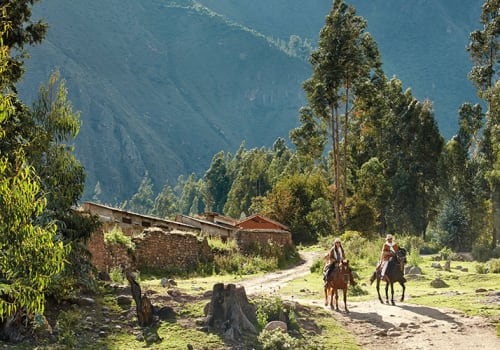
Cusco, Machu Picchu, Puno & Amazon
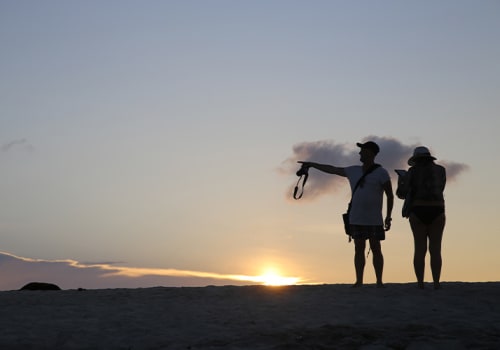
Best Of Ecuador & Galapagos
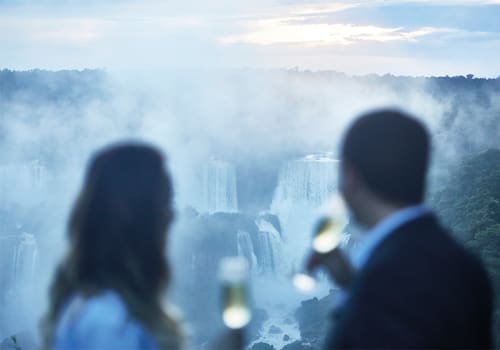
Best Of Brazil
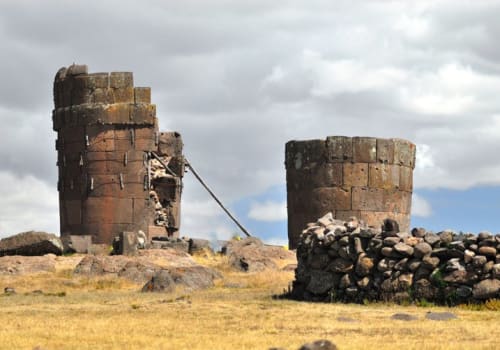
Best of Peru
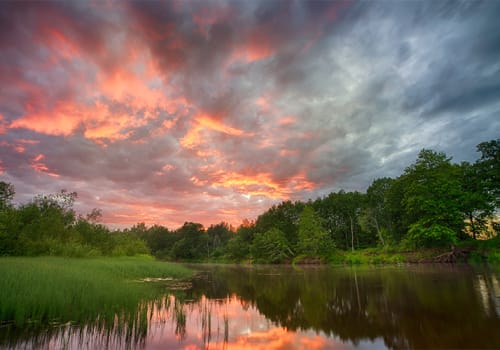
Galapagos & Amazon

- Privacy Policy
- Terms & Conditions
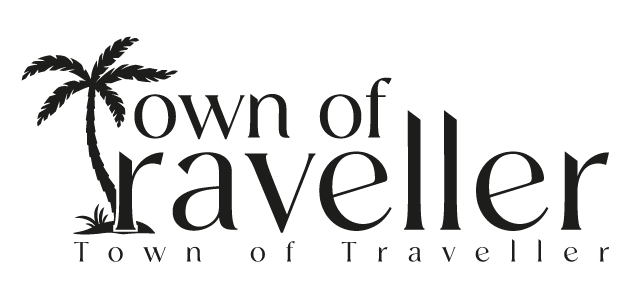
- United States
- Destinations
- Travel Tips
- Activities to do while travelling

2 Weeks in South America: A Journey of Adventure and Culture
2 Weeks in South America
Planning a 2 weeks in South America is like embarking on a thrilling expedition filled with diverse landscapes, rich culture, and unforgettable experiences. This article will guide you through the best destinations, activities, and tips to make the most of your 2-week journey in this captivating continent.
Table of Contents
2 weeks in south america, day 1 – arrival in lima, perulima.
The capital city of Peru, is a great starting point for your 2 weeks in South America adventure. Upon arrival at Jorge Chávez International Airport, you can take a taxi or a bus to your hotel. It is recommended to book your accommodation in advance to avoid any inconvenience.
After checking in, you can start exploring the city. Lima is known for its rich history and culture, and there are plenty of things to see and do. Here are some suggestions for your first day in Lima:
- Visit the historic center of Lima, also known as the Plaza de Armas. This is the main square of the city and is surrounded by beautiful colonial buildings, including the Government Palace and the Cathedral of Lima.
- Take a walk along the Malecón, a scenic coastal promenade that offers stunning views of the Pacific Ocean.
- Visit the Larco Museum, which houses a vast collection of pre-Columbian art and artifacts.
- Try some of the local cuisine, such as ceviche, a popular seafood dish, or lomo saltado, a stir-fry dish made with beef, onions, and tomatoes.
Lima is a bustling city with a lot to offer, and you can easily spend a few days exploring it. However, if you’re short on time, you can move on to your next destination the following day.
Day 2 – Discovering Cusco
located in southeastern Peru, is a city known for its rich history and culture. Formerly the epicenter of the mighty Inca Empire, this city has since achieved the distinguished status of being a UNESCO World Heritage Site. To get to Cusco from Lima, you can take a flight or a bus. The flight takes about an hour and a half, while the bus takes around 20 hours.
Once you arrive in Cusco, you can start exploring the city. Here are some suggestions for your first day in Cusco:
- Visit the Plaza de Armas, the main square of the city. It is surrounded by beautiful colonial buildings, including the Cathedral of Cusco and the Church of the Society of Jesus.
- Take a walk along the narrow streets of San Blas, a bohemian neighborhood known for its art galleries and handicraft shops.
- Visit the Qorikancha, also known as the Temple of the Sun. It was once the most important temple in the Inca Empire and is now a museum.
- Try some of the local cuisine, such as cuy (guinea pig) or alpaca steak.
Cusco is also a great starting point for exploring the Sacred Valley and Machu Picchu. You can take a train or a bus to Aguas Calientes, the town at the base of Machu Picchu, and then hike or take a bus up to the ruins.
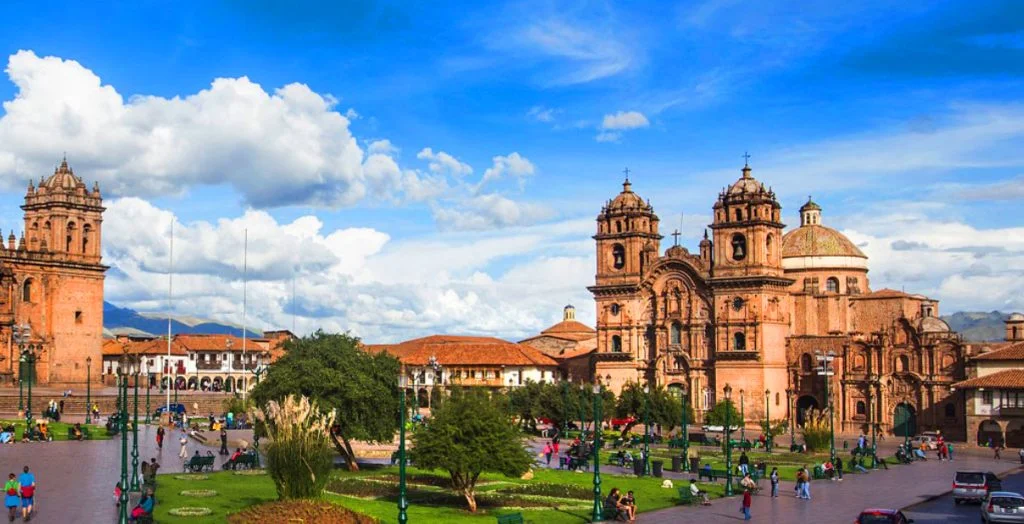
Day 3 – Sacred Valley Adventure
The Sacred Valley, located near Cusco, is a must-visit destination in Peru. It is home to many Inca ruins and offers stunning views of the Andes Mountains. Here are some suggestions for your day trip to the Sacred Valley:
- Visit the Pisac Ruins, an Inca archaeological site that features terraces, temples, and a cemetery. It is located on a hilltop and offers breathtaking views of the valley.
- Explore the town of Pisac, which is known for its handicraft market. You can find a variety of souvenirs, such as textiles, ceramics, and jewelry.
- Visit the Ollantaytambo Ruins, another Inca archaeological site that features a fortress and a temple. It is located on a hilltop and offers stunning views of the valley.
- Take a train ride from Ollantaytambo to Aguas Calientes, the town at the base of Machu Picchu. The train ride offers beautiful views of the Andes Mountains and the Urubamba River.
Day 4 – Majestic Machu Picchu
Machu Picchu stands out as a top-tier tourist attraction in South America, and this distinction is well-deserved. It is a stunning archaeological site that offers breathtaking views of the Andes Mountains. Here are some things to do during your visit to Machu Picchu:
- Take a guided tour: A guided tour is a great way to learn about the history and significance of Machu Picchu. You can hire a local guide or join a group tour.
- Hike Huayna Picchu: Huayna Picchu is a mountain located next to Machu Picchu. It offers stunning views of the ruins and the surrounding mountains. The hike is challenging but rewarding.
- Visit the Sun Gate: The Sun Gate is an Inca ruin located at the entrance of Machu Picchu. It offers stunning views of the ruins and the surrounding mountains.
- Explore the ruins: Machu Picchu is a vast complex of ruins, temples, and terraces. Take your time to explore the site and appreciate its beauty and significance.
It is important to note that Machu Picchu is a fragile site, and visitors are required to follow certain rules and regulations to preserve it. For example, you are not allowed to touch or climb on the ruins, and you must stay on the designated paths.
The Sacred Valley is a great place to learn about the Inca culture and history. You can also enjoy the beautiful scenery and take part in outdoor activities, such as hiking and biking.
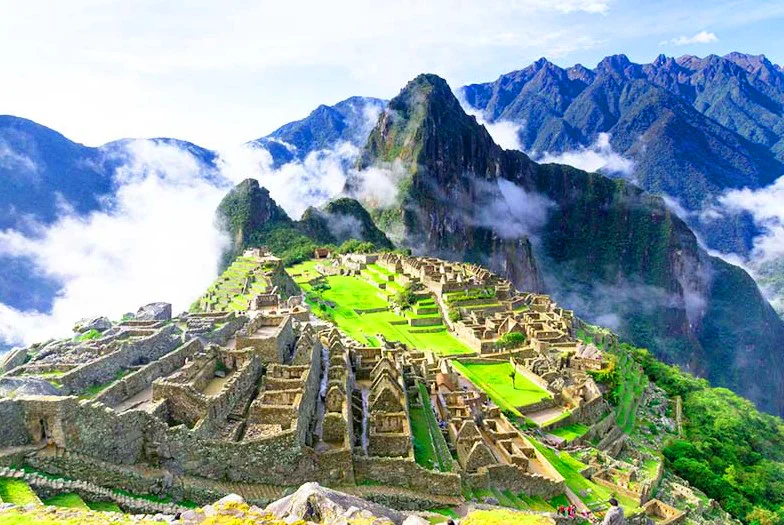
Day 5 – Return to Cusco
After spending a magical day at Machu Picchu, it’s time to head back to Cusco. You can take a train or a bus from Aguas Calientes to Ollantaytambo, and then take a taxi or a bus to Cusco. The journey takes about four hours.
Once you arrive in Cusco, you can take some time to relax and reflect on your trip. Cusco is a beautiful city with a rich history and culture, and there are plenty of things to see and do. Here are some suggestions for your last day in Cusco:
- Visit the San Pedro Market, a bustling market that offers a variety of local products, such as fruits, vegetables, and handicrafts.
- Take a walk along the Sacsayhuaman, an Inca fortress located on a hilltop overlooking the city. It offers stunning views of Cusco and the surrounding mountains.
- Visit the Cusco Cathedral, a beautiful colonial building located in the Plaza de Armas. It houses a vast collection of religious art and artifacts.
- Try some of the local cuisine, such as rocoto relleno, a spicy stuffed pepper dish, or chicha morada, a refreshing purple corn drink.
Cusco is a great place to end your two-week South American adventure. It provides an impeccable fusion of history, culture, and the splendor of nature.
Day 6 – Lake Titicaca Experience
Situated on the border of Peru and Bolivia, Lake Titicaca claims the title of the world’s highest navigable lake. It is a beautiful destination that offers stunning views of the Andes Mountains and the surrounding landscape. Here are some things to do during your visit to Lake Titicaca:
- Visit the Uros Islands, a group of man-made islands made of reeds. The Uros people have been living on these islands for centuries and offer tours to visitors.
- Explore Taquile Island, a UNESCO World Heritage Site known for its traditional textiles and handicrafts. You can take a boat tour from Puno to Taquile Island.
- Take a boat tour of the lake and enjoy the beautiful scenery. You can see the snow-capped peaks of the Andes Mountains and the clear blue waters of the lake.
- Try some of the local cuisine, such as trucha (trout) or quinoa soup.
Lake Titicaca is a unique destination that offers a glimpse into the traditional way of life of the Andean people. It is a great place to relax and enjoy the natural beauty of the region.
Day 7 – Journey to La Paz
La Paz, the capital city of Bolivia, is a vibrant and bustling city located in the Andes Mountains. To get to La Paz from Lake Titicaca, you can take a bus or a taxi. The journey takes about four hours.
Once you arrive in La Paz, you can start exploring the city. Here are some suggestions for your first day in La Paz:
- Visit the Witches’ Market, a colorful market that offers a variety of traditional products, such as herbs, potions, and amulets.
- Take a cable car ride to El Alto, a neighboring city that offers stunning views of La Paz and the surrounding mountains.
- Visit the Plaza Murillo, the main square of the city. It is surrounded by beautiful colonial buildings, including the Presidential Palace and the Cathedral of La Paz.
- Try some of the local cuisine, such as salteñas, a type of empanada filled with meat, vegetables, and spices.
La Paz is a unique and fascinating city that offers a blend of traditional and modern culture. It is a great place to explore and learn about the history and culture of Bolivia.
2 weeks in South America Day 8 – Amazon Rainforest
Fly from La Paz to Rurrenabaque and venture into the heart of the Amazon Rainforest. From Rurrenabaque, you have the choice of a trip into the jungle or the pampas. The jungle excursion delves deep into the rainforest, emphasizing jungle treks and educational insights into the indigenous flora and fauna thriving in this environment.
On the other hand, the pampas tour involves traveling on a boat and having a look for different types of animals that can be seen along the riverbed. Whichever tour you choose, you’ll discover diverse wildlife on a jungle trek.
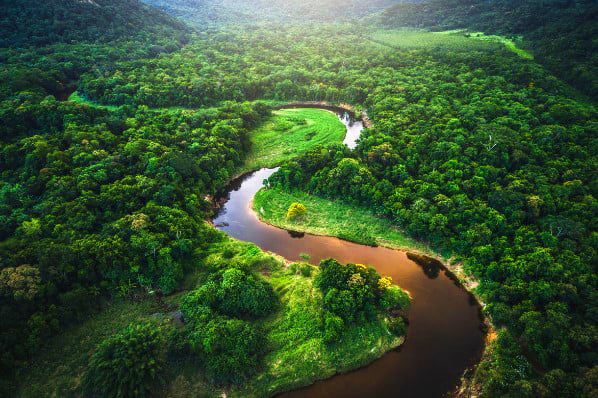
Day 9 – Pampas Adventure
Embark on a boat tour through the Pampas, where you’ll spot pink river dolphins and capybaras. While the pampas isn’t technically real jungle, it offers better wildlife spotting opportunities as the animals aren’t hidden by dense trees. You can also try your hand at fishing for piranhas and take a night walk to spot caimans. The Pampas tour is a unique and unforgettable experience that offers a glimpse into the natural beauty of the Amazon Rainforest.
Day 10 – Return to La Paz
Fly back to La Paz and have a free day to explore more of this fascinating city. You can visit some of the attractions you missed on your first visit, such as the Valle de la Luna or the Cholitas wrestling show. Alternatively, you can relax and enjoy the local cuisine, such as salteñas or chicha morada.
Day 11 – Vibrant Rio de Janeiro
Rio de Janeiro is a vibrant and colorful city that offers a unique blend of natural beauty, culture, and history. On your first day in Rio, you can take in the iconic Christ the Redeemer statue and Sugarloaf Mountain. The Christ the Redeemer statue is one of the most famous landmarks in the world and offers stunning views of the city and the surrounding landscape. Sugarloaf Mountain is a natural wonder that offers panoramic views of the city and the bay.
In addition to these landmarks, you can take a stroll along the famous Copacabana Beach and enjoy the vibrant atmosphere of the city. You can also try some of the local cuisine, such as feijoada or churrasco, and enjoy the lively beach culture.Rio de Janeiro is a city that is full of life and energy. It is a great place to explore and learn about the history and culture of Brazil.
Day 12 – Beach Paradise
Rio de Janeiro is known for its beautiful beaches, and on your second day in the city, you can relax on Copacabana and Ipanema beaches, savoring the sun, sea, and Brazilian delicacies. These beaches are some of the most famous in the world and offer a perfect blend of natural beauty and urban amenities. You can try some of the local snacks, such as coxinha or pão de queijo, and enjoy the lively beach culture.
In addition to the beaches, you can also explore the city’s vibrant neighborhoods, such as Santa Teresa. This bohemian neighborhood is known for its art galleries and colonial architecture. You can also visit the Selarón Steps, a colorful staircase made of tiles from all over the world. In the evening, you can samba the night away in Lapa, a lively neighborhood known for its nightlife and samba clubs.
Rio de Janeiro is a city that offers a perfect blend of relaxation and excitement. It is a great place to unwind and enjoy the natural beauty of Brazil while also experiencing the vibrant culture of the city.
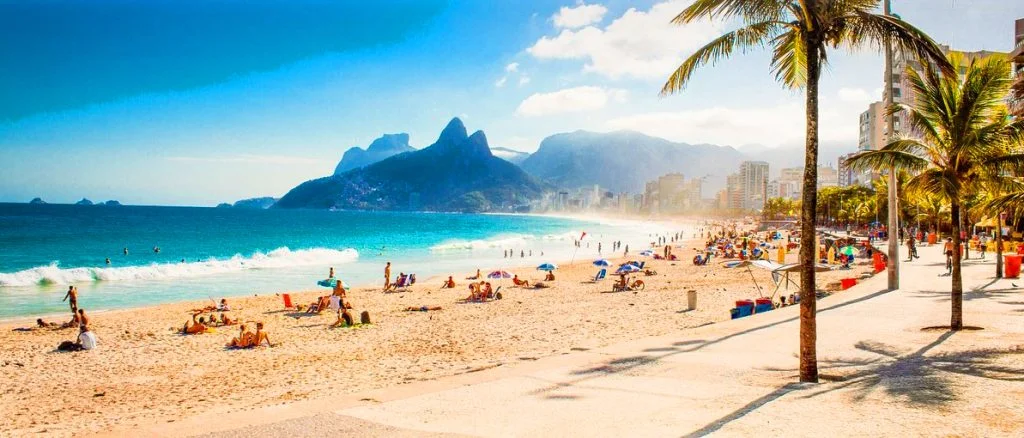
Day 13 – Explore the Marvelous City
Rio de Janeiro is a city that is full of life and energy, and on your third day in the city, you can explore some of its most iconic neighborhoods and landmarks. Start your day by visiting the historic neighborhood of Santa Teresa, known for its art galleries and colonial architecture. You can take a stroll through the narrow streets and admire the colorful houses and buildings.
Next, visit the Selarón Steps, a colorful staircase made of tiles from all over the world. The steps are a work of art and offer a unique photo opportunity. From there, head to Lapa, a lively neighborhood known for its nightlife and samba clubs. You can samba the night away and enjoy the vibrant atmosphere of the city.
Rio de Janeiro is a city that offers a perfect blend of relaxation and excitement. It is a great place to explore and learn about the history and culture of Brazil.
Day 14 – Farewell
Your South American adventure comes to an end. Take time to reflect on your experiences and cherish the memories. You can also do some last-minute shopping for souvenirs or try some of the local cuisine one last time.
In wrapping up this exhilarating journey of “2 weeks in South America,” it’s clear that this diverse continent offers an abundance of experiences. From the Andean wonders of Peru to the lush Amazon Rainforest and the vibrant streets of Rio de Janeiro, every day is a new adventure. South America is a land where history and natural beauty converge, where culture and landscapes entwine. So, plan your two weeks wisely, embrace the unique encounters, and create memories that will last a lifetime. This continent truly offers a remarkable two-week journey of a lifetime.
01. Is it safe to travel to South America?
South America is generally safe for travelers, but it’s essential to take precautions, such as avoiding risky areas and securing your belongings. Research your destinations and stay informed about local conditions.
02 . Do I need a visa to visit South America?
Visa requirements vary by country. Many South American countries offer visa-free entry to tourists for a specified duration. Check the requirements for each country you plan to visit well in advance.
03. What vaccinations are necessary for traveling to the Amazon Rainforest?
Yellow fever and typhoid vaccinations are recommended for those visiting the Amazon Rainforest. Consult a healthcare professional to ensure you have the necessary vaccinations and medications.
Related Posts
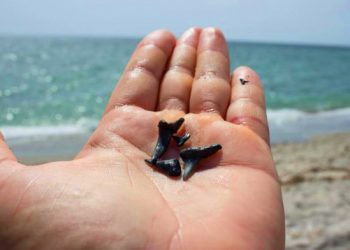
Uncovering Shark Teeth Treasures: A Guide to Finding Fossilized Finds on Venice Beach
Are you fascinated by sharks and prehistoric creatures? Do you love spending time on the beach searching for hidden treasures?...
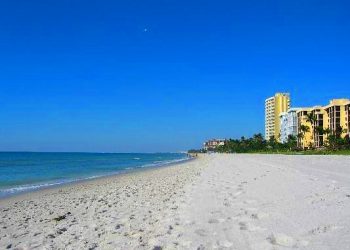
Vanderbilt Beach: A Public Paradise or Private Playground?
In this article, we will discuss the iconic Vanderbilt Beach and whether it is a public paradise or a private...
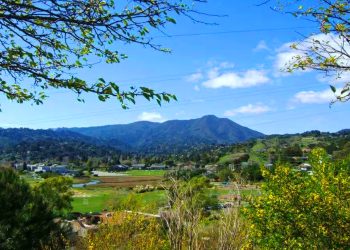
Explore the Charm of Mill Valley: 10 Must-Do Activities
If you're planning a trip to Mill Valley, California, you're in for a treat. This charming town, located just north...
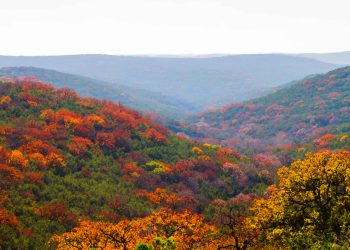
Top 10 Must-Visit Destinations in Texas this November
Are you looking for the ultimate travel destinations in Texas this November? Look no further! From vibrant cities to breathtaking...

Can I Bring a Disposable Camera on a Plane?
Facebook page, popular post.

Park City vs Breckenridge
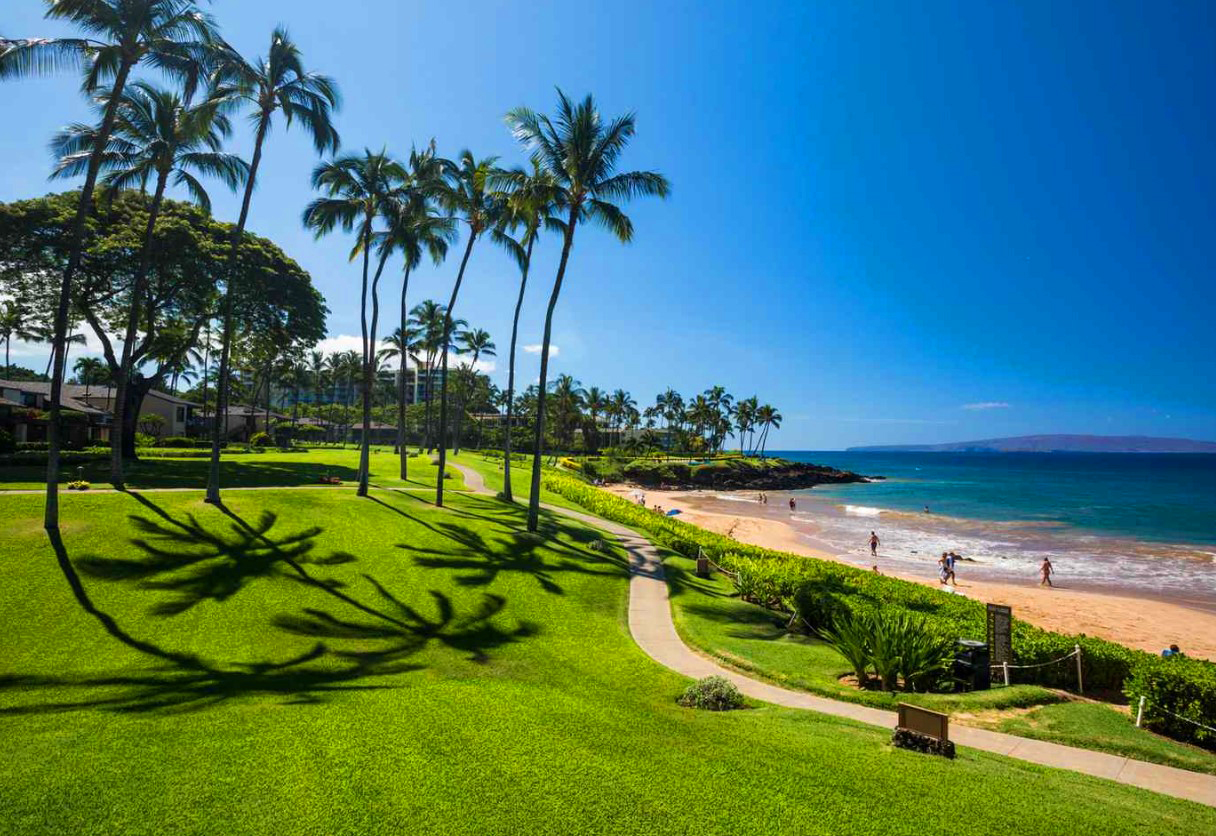
Maui Rainy Day Activities: 10 Ways to Make the Most of Your Time Indoors

Golden Buddha Resort Bali: A Luxurious Oasis in Paradise
- United State
Townoftraveller.com
- Terms of Use

- December 7, 2022
- No Comments
4 Efficient Two-Week South America Itineraries For Every Backpacker
How can i spend two weeks in south america.
Two weeks in South America is a short amount of time but there are still several itineraries that work so that you can see as much as possible without too much time spent moving around.
Each of these itineraries stick to two countries each. This gives you approximately 7 days in each country which is more than enough to see the most popular sight in each place.
For ease, each itinerary travels through countries that are neighbours . This will mean you have shorter distances and save money on flights. But if you want to visit two countries in South America that aren’t neighbours then feel free to chop up and combine any of the ones here so suit your needs.
Here are all the different options we think fit well with two weeks in South America:
- Colombia & Ecuador – The Caribbean Coast and Mainland Ecuador
- Ecuador, Galapagos Islands & Peru – Visit Quito, the Galapagos & Machu Picchu
- Ecuador & Peru – Mainland Ecuador & Cusco
- Peru & Bolivia – Cusco, La Paz & The Salt Flats
- Chile & Argentina – the best parts of Patagonia
1# Two-Week South America Itinerary: Colombia & Ecuador
Here’s the breakdown of this two-week South America itinerary that includes Colombia and Ecuador:
Day 1 - Bogata
If you are flying from the US or Europe, it is likely that you will arrive at El Dorado International Airport in Bogota.
Spend one day in the capital before moving on. There isn’t much here for backpackers and the rest of Colombia is much more interesting. You only have two weeks in South America so you have to miss out some things!
On the day you are here, find a free walking tour to help you explore the city with ease. Beyond Colombia is my personal favourite and they will give you a good introduction to the city. On top of this they offer a free food tour as well. This is a great deal as you will get fed well, see more of the city, and not spend a thing.
If you have time in the evening, walk to the top of Cerro Monserrate for an incredible viewpoint of sprawling Bogotá.
Day 2-3 - Santa Marta
From Bogota, you want to take a short 2-hour flight to the Caribbean Coast in the north. You can then use Santa Marta as a base for exploring for the next few days.
Make sure you stay at the Dreamer Hostel. This is one of the best hostels in Colombia and maybe even South America. They allow you to leave your big bags in storage whilst you explore the region.
Spend one day in exploring the cloud forests in Minca . Here you can also find coffee and chocolate farm tours. On your second day, trek into Tayrona National Park known for its palm-shaded coves, coastal lagoons, rainforest, and rich biodiversity. You can stay the night on the beach in Tayrona National Park, which is a fun experience, just make sure you book ahead before trekking all the way as spaces are often limited.

Day 4-5 - Palomino
Palomino is a quiet town in the north of the country close to Santa Marta.
It started as an off-the-beaten track town that has grown popular in recent years with backpackers. Travellers come here for a few days to enjoy tubing along the jungle rivers or to wander along the endless stretches of empty beach.
Tubing is a fun activity that starts in the jungle foothills of the Sierra Nevada de Santa Marta and ends on the beach in the Caribbean Sea. This can be a relaxing journey or depending on who you go with, it can turn into a party. If you manage to join a big crew of backpackers, then people will bring alcohol and enjoy floating through the jungle with a few beers as well.
Palomino beach , with its white sands fringed with huge palms trees is empty most of the time and you can enjoy peaceful walks up and down it without coming across another person.
Palomino is one of my favourite beaches in South America, for more, head to the list post below:
- The 8 Best Beaches In South America
Day 6-8 - Medellin
As mentioned, the only downside of this two-week South America itinerary is that it requires several internal flights in Colombia. The Andes dissects Colombia and separates a lot of the big cities which means bus journeys take a long time. You will likely have to fly from Santa Marta to Medellin to avoid a seriously long and bumpy overnight bus.
Whilst here, take a tour out to the beautiful Guatape to see the colourful town and the beautiful reservoirs and the huge celebrity mansions that back out onto them.
Also take some time to explore the city. Again, a free walking tour is your best bet so that you stick to the safe areas and learn about the rich history of the city.
This is the final part of your Colombia trip and from here you will need to fly from Medellin to Bogota to then reach Quito in Ecuador. This can be booked altogether with a stop over or you can book them separately if you want to spend a bit longer in the capital.
A flight from Medellin to Quito (with a connecting flight in Bogota) should cost around $150.

Day 9 - Quito
For one day in Quito, you will want to see as much of the city as you can.
You can start the morning off with a free walking tour to see the Old Town. Then in the afternoon, head up to the top of Cerro Pichincha – the mountain overlooking Quito.
The Teleferico cable car that will take you from 3000m at the edge of the city, all the way up to 3495m and the summit of Volcano Machachi which sits at top this mountain. From here you will get the best view of Quito and the surrounding countryside.
If you are looking for the best hostels to stay in whilst in Quito, the backpacker hostel guide below has everything that you need:
- The 10 Best Backpacker Hostels In Quito
Day 10-11 - Cotopaxi
The picturesque Cotopaxi National Park and its towering volcano is a must-see when in Ecuador and should be on every backpacker’s list.
The park is a beautiful untamed landscape covered in beautiful fields of wildflowers with herds of alpacas wandering aimlessly, all in front of the incredible backdrop of Cotopaxi Volcano.
Staying at Secret Garden Cotopaxi Hostel is one of the best ways of visiting Cotopaxi National Park, especially if you are a backpacker wanting experience an amazing hostel and meet other travellers.
At Secret Garden you will have your every need met: transportation to the park, access to great tour services, and amazing accommodation all slap bang in the middle of Cotopaxi National Park.
For more information on Cotopaxi, check out the complete guide below which details the best ways to visit the park:
- The 4 Best Ways To Visit Cotopaxi National Park
Alternatively, if you prefer a multi-day hike, you can spend one day at Cotopaxi and move on to Quilotoa where you will find the famous Quilotoa Loop trek:
- How To Hike The Quilotoa Loop

Day 12-13 – Baños
Baños is set in a lush green valley. It’s full of thermal baths fuelled by underground volcanic springs so why not start with a spa and massage day at one of the several bath houses.
El Refugio is the best choice. Along with thermal baths, they have saunas, steam rooms, and offer a range of spa services such as massages, mud baths, and pedicures.
On your second day, it’s time to ride the ‘Route of Waterfalls’ – a single main road that winds its way through the Baños Valley. This is one of the most scenic bike rides you can take in Ecuador, and you can stop at 7 waterfalls along the way – each one a different shape and size.
The best waterfall is Pailon del Diablo , an insanely powerful waterfall that plunges 61 metres (200ft) into a pool of powerful rapids.
If you want to know more about Baños, then the backpacker guide below has everything you need:
- Baños Backpacker Guide & 4-Day Itinerary
Day 14 - Guayaquil / Fly Home
It’s an 8-hour bus from Banos to Guayaquil or back to Quito. Both cities have international airports so which one you return to depends on where you’ve booked your flights from.
This will be a full travel day so unfortunately that’s the end of this two-week Colombia and Ecuador backpacking itinerary. I hope it will help you to plan a future trip to South America.
If two countries are too much for you in two weeks, then why not check out our backpacking itineraries that focus only on one country:
- The Essential Three-Week Backpacking Itinerary For Ecuador

Preparing for your first trip to South America?
Here are 22 FAQ’s to help you prepare for the trip of a lifetime:

How To Travel South America: 22 FAQs To Prepare For Your Next Trip
Planning a trip to South America can be an exhilarating adventure filled with diverse landscapes, rich cultures, and unforgettable experiences. However, to ensure a smooth and enjoyable journey, it's essential to be well-prepared on several fronts. Here are 22 frequently asked questions...
2# Two-Week South America Itinerary: Galapagos Islands & Peru
Here’s the breakdown of this two-week South America itinerary that includes the Galapagos Islands and Peru:
Day 1 - Quito
Quito is the main transport hub of the country and a starting point for most travellers before flying to the Galapagos Islands so it makes sense to spend a day here exploring the city.
Get yourself accustomed to the city by booking on to the Community Hostel walking tour . Tours start at either 9:00 AM or 2:30 PM and take 3 hours long, so plan your day around this.
The walking tour will take you to most of the main sites in the old town such as Plaza Grande and the Presidential Palace , as well as giving you a political and economic history of Ecuador.
If you prefer to do something more active, then Quito has much more to offer. You can find more activities in the post below:
- The 19 Best Things To Do In Quito As A Backpacker

Day 2-3 – Galapagos Islands (San Cristobal Islands)
You can fly from Quito to two of the three main islands in the Galapagos. Flying into San Cristobal is the preferred option as it’s only a minute journey via taxi from the airport to town.
This means that once you’re off the plane, you can be checked with backs dropped off and exploring the island within half an hour.
A short walk from the main town of Puerto Baquerizo will take you to the Interpretation Centre – a small museum dedicated to the history of the islands. From here you can visit Cerro Tijeratas viewpoint and then eventually walk to Playa Mann . sit here with the sea lions and watch the sun go down to complete your first magical day on the islands.
On your second day, visit the north side of the island to visit the Giant Tortoise Sanctuary and see these fascinating animals in a semi-natural habitat.
The best part about these two days is that all these activities are free. For more free activities to do whilst on the islands, check out the post below:
- The Best Free Activities On The Galapagos Islands
Day 4-6 – Galapagos Islands (Santa Cruz)
Early on the morning of day 4, take the early ferry from San Cristobal to Santa Cruz so that you have the whole day to explore.
Once you’ve settled in your accommodation, it’s a 20-minute walk from Puerto Ayora to get to the Darwin Research Centre . The centre is a fantastic educational space dedicated to the conservation of the rare animals that live on the Galapagos islands.
On your second day, you should rent bikes and explore the highlands of the islands. Here you can find several unique areas such as the lava caves and craters . You will also be able to explore another giant tortoise habitat.
On the final day, rent some snorkel gear and take a water taxi to the entrance of Las Greitas . Las Greitas is a high walled crevasse of volcanic rock filled with seawater and travellers come here to snorkel and escape the heat. In the afternoon, visit Tortuga Bay – one of the best beaches on the islands. Here you can spend the day relaxing, searching for turtles and baby sharks in the mangroves and rent kayaks to explore further.
Our DIY land-based itinerary has these 4-days laid out in even more detail. Head to the post below for more information:
- Galapagos Islands Land-Based DIY Itinerary for 5,7 and 10 Days

Day 7 - Quito
When returning to mainland Ecuador, the smart thing to do would be to book separate inbound and outbound flights. This means you can fly from Santa Cruz to Quito and avoid having to take the ferry back to San Cristobal.
Once you arrive back in Quito, if you have time, you should ride the Teleferico – Quito’s cable car that takes you from 3000m at the edge of the city, all the way to 3495m to the summit of Volcano Pichincha.
At the top you will have unobstructed views of the city, as well as of the many volcanoes surrounding Quito.
Our complete guide to the capital where these days are broken down into a more detailed itinerary can be found here:
- The Perfect 3-Day Quito Itinerary
Day 8 - Lima
Flights from Quito to Lima should cost around $100-150 . Unfortunately, Cusco doesn’t have an international airport so you can’t flight straight there, but you could take a connecting flight as soon as you land if you want to save a day here.
However, Lima is a great city and definitely worth exploring for one day during this two-week South America itinerary.
Peru’s capital Lima is a vibrant city set on high cliffs overlooking the Pacific Ocean and filled with world-class cuisine, lively nightlife, and fascinating cultural history. Whether you’re a culture enthusiast, surf lover or a foodie – backpackers are spoiled for choice here.
There’s something for every backpacker in the bohemian district of Barranco with tasty local gastronomy, cute coffee shops and a vibrant alternative art scene. It’s one of the city’s hippest neighbourhoods, with colourful street art, mural-covered buildings and trendy bars all set within the colonial-era mansions
There are several fun things to do in Barranco for backpackers, but the best include finding a local restaurant to get your first taste of Peruvian food or checking out one of the mansions turned bars to try a Pisco Sour.
For more on Lima:
- Is Lima Worth Visiting? 12 Great Reasons Why Lima Is Worth Visiting

Day 9-10 - Cusco
The flight from Lima to Cusco is 1 hour and 20 minutes and should cost under $100.
Once in Cusco you have two days to exploring the city and its surroundings. I would recommend one day in the city adjusting to the altitude and exploring its rich cultural heritage. A free walking tour is always the best way to do this and I would recommend Inkan Milkyway . They have the best walking tours that don’t take you to any tourist traps and focus only on the history of the city.
On your second day, take a day trip out of the city to see the beautiful Andean countryside. You can visit the popular Rainbow Mountain or one of the many other natural wonders such as Laguna Humantay at 4200m above sea level.
If you think a trip to Rainbow Mountain is for you, then head to the full guide below so you know what to expect:
- Is Rainbow Mountain Worth It? A Guide To Peru’s Best Trek
Day 11 - Aguas Calientes
On the morning of day 11, either take the bus or train to the town of Aguas Calientes. For a two-week itinerary, I would recommend the train as it only takes 3 hours in comparison to the bus which takes 9.This saves you a lot of time and means you get more time to experience Machu Picchu.
When you arrive in the town of Aguas Calientes, find your hostel and check in. I recommend Super Tramp hostel as one of the best backpacker hostels here.
If you have some time, explore the small town but make sure you get an early night as you’ll be up early to start the climb to Machu Picchu.
A couple of fun things to do in Aguas Calientes include a visit to the Manuel Chavez Ballon Site Museum and the Butterfly House .

Day 12 - Machu Picchu
Early on the morning of day 12, it’s finally time to climb the 1,600+ stairs up to Peru’s most popular tourist attraction.
When you need to leave depends on what time ticket you purchased. However, I would recommend trying to get a 6:00 AM ticket which is the earliest entry possible. Most people wake up around 4.30AM and wait outside the gates from 5:00 AM.
When the gates open you can start the hike up. The alternative is to wait and take the bus which will get you to the top quicker. Either way, you’ll be one of the first people into Machu Picchu, catching the sunrise and largely having the place to yourself (at least for half an hour, until it eventually becomes packed as more and more tour buses turn up).
Once you’ve had your fill of this incredible natural wonder, all that’s left to do is head back down. Again, you can either walk or take the bus – it’s up to you.
Whether you take the bus or the train to Machu Picchu, it’s a complicated journey and there’s lot you need to know. Luckily the guide linked below has everything you need:
- The 3 Best Ways To Visit Machu Picchu
Day 13-14 - Cusco / Lima
Once you return to Aguas Calientes from Machu Picchu, you can either stay the night there or return to Cusco. Either way, you should still get a good amount of time to see Cusco one final time.
As already mentioned, use the Cusco city day recommendations from the first itinerary to fill out your day – whether it be massages, walking tours or museums.
In the evening, you should make a reservation at Limbus Resto-bar which has one of the best views in the city. Try to get a booking around sunset and out on the terrace for incredible golden hour views of Cusco.
Our Cusco backpackers guide has all the information you need:
- Cusco Backpackers Guide & 13 Best Things To Do
Unfortunately, Cusco doesn’t have an international airport so you will have to fly back to Lima to take your international flight home.
If you have enjoyed this two-week itinerary but only have 10 days, check out the post below for a condensed version:
- Galapagos Islands & Machu Picchu 10-Day Itinerary

3# Two-Week South America Itinerary: Peru & Bolivia
Here’s the breakdown of this two-week South America itinerary that includes Peru and Bolivia:
Day 1 - Lima
Miraflores has an abundance of trendy cafes and great restaurants all situated amongst seafront parks and boardwalks. In the evening, here is where you will find thriving bars, clubs, and live music venues.
During the day, it’s the perfect place to enjoy a walk along the coast and get a feel for Lima. For a nice walk, you can start at the ‘Park of Love’ and make your way down south along the Malecon (boardwalk), all the way to Barranco if you wish.
Along the way you can stop off at the Larcomar , an open-air seafront shopping centre or sit in one of the many green spaces along the way and watch skateboarders and locals mingle.
Just make sure to be by the waterfront for sunset as you are in for a treat. Grab a spot near the edge of the cliffs and watch the sun go down as paragliders circle above and surfers catch the last waves of the day.
I’d recommend one day here as the rest of Peru deserves more of your time. If you need more information on why Cusco is better for backpackers than Lima, head to the post below:
- Lima Vs Cusco: Which One Is Best If You Are Short On Time?
Day 2-3 - Paracas
Paracas National Park is an untouched natural desert perfect for exploration and adventure. You can navigate the park by tour, bicycle , ATV, or dune buggy and checking out the park at sunset is a must!
2-days is a good amount of time here. You can take one day exploring the National Reserve and then the second visiting the Ballestas Islands . These islands are known as the ‘Poor Man’s Galapagos’. They are essentially a budget friendly way to see the incredible wildlife on South America’s pacific coast.
Check out the full backpacker guide for more information:
- Paracas City Guide & 3 Day Itinerary

Day 4 - Huacachina
Then after Paracas, it’s time to swap one desert for another with a visit to the famous oasis at Huacachina. You only have one day here but it’s going to be action packed!
Book a dune buggy and sandboarding tour as soon as you arrive. You will fly across the giant dunes surrounding Huacachina in sand buggies and then stop at one of the tallest ones to sandboard down.
Then in the evening, it’s time to watch the epic sunset over the dessert and party the night away in the crazy Wild Rover backpacker hostel.
Wild Rover in Huacachina is one of our favourite party hostels in South America so make sure you stay here for the best time.
For more information on this unique place including how to find the cheapest tours and best hostels, follow the link below:
- Is Huacachina Worth Visiting? The Complete Backpackers Guide
Day 5-7 - Arequipa
Arequipa is an amazing city for backpackers, but the real wonder here is a visit to Colca Canyon – the second deepest canyon in the world.
Colca Canyon will take two days out of this two-week South America itinerary but it’s definitely worth it. Trekking down into the second deepest canyon in the world is an experience like no other. You’ll spend most of your time picking your jaw up off the floor as you walk around in awe of the canyon’s vastness.
Then you can take the other free day to explore Arequipa. Peru’s second largest city is full of great backpacker hostels, restaurants, and bars to enjoy. Our favourite thing to do there is find a rooftop bar and watch the as the sun sets a lights up all the volcanoes surrounding the city.
For more information on this incredible city:
- Is Arequipa Worth Visiting? 12 Great Reasons To Visit Peru’s White City

Day 8-10 - Cusco and Machu Picchu
Use day 8 to relax and explore the city of Cusco before your journey to Machu Picchu.
On day 9, you have two options: taking the train or the bus to Aguas Calientes. The train takes 3 hours from Cusco to Aguas Calientes. You can take the morning in Cusco to get in another activity in if you want, or just go for a nice breakfast. I’d recommend the Bagel Café or Qura Bowl Bar.
If you are getting the bus, then best to leave as early as possible as it takes around 8 hours, and you then have to trek along the train tracks to Aguas Calientes which takes another 3 hours on top of the 8-hour bus journey. It’s a bit of a slog but the cheapest option.
Once you are in Aguas Calientes you can relax and have an early night.
For more information on booking the train, head to the post below for everything you need to know:
- How To Take The Train To Machu Picchu
After Cusco you can then get the bus to into Bolivia and straight to La Paz which takes around 12 hours or take a flight to save time.
Day 10-11 - La Paz
Once you reach La Paz you have an endless list of things to choose from such as biking down Death Road , trekking in the Valley of the Moon, or climbing Huayna Potosi.
2 days is a good amount of time to cover it all. I would recommend riding down Death Road one day and then using the others to explore in and outside of the city.
Follow our La Paz backpacking guide to help you plan these two days further:
- The 13 Best Things To Do In La Paz

Day 12-13 - Uyuni
You can either fly or overnight bus down to Uyuni. Once you arrive in Uyuni, it’s time to end this epic two-week South America trip with probably one of the best tours on the whole continent.
The 3-day Salar De Uyuni tour will take you from one unique landscape to the next, starting with the white expanse of the salt flat on day 1, to the high-altitude desert of the Andes on the next.
Your mind will be blow by all the incredible scenery and you will leave on a high.
Our Uyuni guide has all the information you need for planning this part of the journey:
- The Ultimate Uyuni Salt Flats Guide
Day 14 - La Paz
After the salt flats tour, you will be dropped back to the town of Uyuni. Take a flight back to La Paz and then it’s time for you to catch a flight home.
Well done! You’ve just seen Machu Picchu and the Salt Flats – two of South America’s best experiences – in two weeks.
However, if you would prefer to stick to one country like Bolivia and visit the Amazon instead of more places in Peru then check out our single country itineraries to see how it can work:
- Bolivia Three-Week Backpacking Itinerary

4# Two-Week South America Itinerary: Patagonia
Here’s the breakdown of this two-week South America itinerary that includes Chilean and Argentinian Patagonia:
Day 1 - Santiago
Once you land in Santiago , you have one day to explore Chile’s capital.
The best thing to do is join a free walking tour. I’d recommend Strawberry Walking Tours .
They take you to several places in the city including Santa Lucia Hill to discover where Santiago’s history began, and through the Plaza de Armas to enjoy cosmopolitan Santiago.
In the evening, head up to the to of the Sky Costerna , Santiago’s tallest building, to find the best views of the city.
Day 2 - Puerto Natales
Puerto Natales is the closest town to Torres Del Paine National Park so it’s best to fly straight here from Santiago. You need to take a flight down to Puerto Natales to start the Patagonian part of this two-week itinerary.
Take one day here to get your bearings, buy any last-minute gear for hiking, and prepare for the next 5 days of hiking on the W-trek route.
In Puerto Natales, we stayed at the Singing Lamb hostel which was super cosy. They have a huge lounge area with sofas and tables, and the shared dorms had comfortable beds.

Day 3-7 - Torres Del Paine National Park
You can use Puerto Natales as a base to travel into Torres Del Paine for day trips, but we highly recommend the W-trek.
This 5-day self-guided trek takes you in the shape of a W – in, out, and around the beautiful Cordillera Paine mountain range.
The trek is relatively easy with the first two days taking you on an easy 3–4-hour hike past Lago Grey up to the stunning Grey Glacier . Then on the final day, you will trek up to the famous towers of Torres Del Paine.
A lot of people wake up at 3AM to start trekking to reach the towers for sunrise. If the weather is good then it is definitely worth it, as the three towers are lit up perfectly by the morning sun.
If you don’t have a full 5 days to spare here, you can always visit the park for just one. Trekking to Lago Grey is one of the best single-day hikes in Patagonia but also South America. To see a full list of more of the best single-day hikes in South America, head to the post below:
- The 12 Best Single Day Hikes In South America
Day 8 - Puerto Natales
After the 5-day trek you are going to be a bit tired, so we recommend taking one extra day in Puerto Natales to recover, get clothes cleaned and get organised for the next step of the journey into Argentinian Patagonia.
If you have longer than two weeks, then head to the post below to see how to turn this itinerary into a full month of incredible travel:
- 3 Epic 1-Month Chile and Argentina Itineraries: Patagonia, The Lake District and the North

Day 9-10 - El Calafate
You are a short border crossing away from Argentina and the town of El Calafate. From here you can visit Parque Nacional Los Glaciares and the epic Puerto Morena Glacier .
You can take in the views of this huge chunk of ice from the visitor centre or take a boat to get a up close and personal. If you are lucky, you may catch a chunk of ice falling off and crashing into the water below.
All hotels and hostels in El Calafate offer tours that include both a boat trip and time at the visitor centre.
To see some alternative itineraries for this region, head to the post below:
- How Many Days Do You Need For El Calafate and El Chalten? 3 Great Itineraries For Every Traveller
Day 11-12 - El Chalten
After a short stay in El Calafate, head north to the small hiking town of El Chalten . From here you can plan more epic hikes into the beautiful Patagonian wilderness and Glacier National Park.
You can do single day hikes to Laguna de Los Tres to see the famous Mount Fitzroy or multi-day hikes combining all the different sights and camping among the mountains.
If you are enjoying this two week South America itinerary so far, you can find an extended version of it here that also includes a third country:
- The Essential 1-Month Chile, Argentina and Bolivia Itinerary
Day 13-14 - Buenos Aires
Finish up with a few city days in Buenos Aires before flying home and you are done! Two incredible weeks in Chile and Argentina complete.
Whilst we’ve completed the first part of this itinerary (Chile), coronavirus shut down the world in April 2019, and we had to fly home just after completing the W-trek unfortunately.
Crossing the border into Argentinian Patagonia and travelling back up to Buenos Aires was the second part of our trip we had planned. So unfortunately, we don’t have any guides on this part, but we hope you can use this itinerary as a rough guide to plan a trip in the future!
Exploring Buenos Aires, also known as the ‘Paris of South America’ one of many great reasons to add Argentina to your extended backpacking trip. For more great reasons, head to the post below:
- Is Argentina Worth Visiting? 10 Great Reasons To Visit In 2023

Popular South America Itineraries
If you have more than two-weeks to spare then why not check out our other South America itineraries ranging from three weeks to three months:
- 5 Expertly Curated Three-Week South America Itineraries
- 4 Epic 1-Month South America Backpacking Itineraries
- The Perfect 2-Month South America Itinerary For Budget Backpackers
- The Ideal 3-Month South America Backpacking Itinerary
- The Perfect 1-Month Peru and Bolivia Itinerary
- How Many Days Do You Need In South America – 6 Great Itineraries That Work For Every Traveller
- 4 Perfectly Planned 10-Day Itineraries For South America
- 4 Fast-Paced One Week Backpacking Itineraries For South America
- A Flashpacker Five-Week South America Itinerary
- The 8 Best Digital Nomad Cities In South America
- From North to South: The Complete 10-Week South America Itinerary
- Colombia, Ecuador & Peru Itinerary: From Two Weeks To Two Months
- Suitcase Or Backpack? Which Is Best For South America?
- Author Profile
- Posts by the Author
- How Many Days In Bariloche? [3, 5 & 7-Day Itineraries]
- 22 Free Activities On The Galápagos Islands [+4 Affordable Tours]
- Galapagos Islands On A Budget – 15 Shoestring Tips To Save!
- The Ideal Argentina Itinerary [Two Unique One-Month Routes]
- How To Get To The Galapagos Islands [From Anywhere]
- 16 Reasons Why The Galápagos Islands Are Worth Visiting

Joe Bayfield
Hi I'm Joe Bayfield, Bayf for short. I love South America and want people to visit this incredible continent. I’ve travelled through Colombia, Ecuador, Peru, Bolivia, Chile and Argentina and also lived in Lima, Medellin and Buenos Aires. I write detailed South America itineraries to help you plan your next adventure!

Travel South America Like A pro

Do You Want To See South America On A Budget?
See Machu Picchu, the Amazon and the Bolivian Salt Flats, all with this efficient money-saving itinerary
Deals of the Week European Long Weekends Up to 50% OFF
South America Tours & Trips
Book a South American tour and join in the magic of Carnival in Rio de Janeiro, or trek the Andes and marvel at the beauty of the natural sceneries that will reveal themselves to you. Discover incredible tour packages and witness first hand the beauties of South America. Find here all the South America backpacking tours , the best South America travel specialists , the best backpacking groups and the best South America honeymoon packages .
250+ South America tour packages with 11,586 reviews
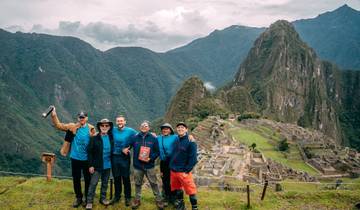
- Hiking & Trekking
- Christmas & New Year
Inca Trail to Machu Picchu + Rainbow Mountain 8 days
William, Sarah, the chefs and porters made this experience absolutely unforgettable. William & Sarah were constantly making me feel safe on the trek & were truly knowledgeable. They even made me a birthday cake on the side of the mountain and surprised me with it. I would absolutely recommend this trip to anyone & will never forget it!
- Book With Flexibility This operator allows you to rebook your dates or tours with them for free, waiving change fees.
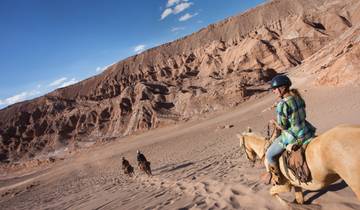
The Great South American Journey: Quito to Rio Adventure
This is the best G adventures tour I have done in terms of itinerary and people I was traveling with. I had a fantastic time with a great group of people. The only feedback I will give G is I feel the CEO guides are pressured to get 9s or 10s in their reviews and hence transmit that to us which made me not leave a review on the G website as I felt I could not be completely honest without harming the tour guides' rating. This culture should change if you want constructive feedback. I loved all 4 of my CEOs on my tour but 2 of them were outstanding (10/10s) and I felt as a result of above, I could not give them the credit they were due without causing harm to the other 2 who were also good but more 7/10s.

- In-depth Cultural
Lima to Rio: Coast to Coast
Amazing tour, I will keep great memories from it
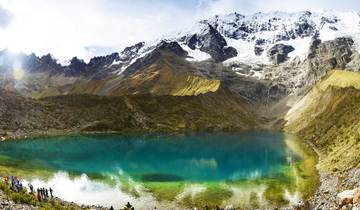
PERU EXPRESS - 10 days (Lima- Cusco & Puno) with Domestic Flights
10 Day Peru Express - Lima, Ica, Machu Picchu, Cusco & Puno + Titi-Kaka Lake with Domestic Flights with Waman Adventures was an amazing trip. Waman Adventures ran this tour smoothly and professionally. All accommodations, transportation, and most of the food were good. Every second of this trip was carefully thought out. A very informative, entertaining, and pleasant tour. You don't need to worry about anything. We learn a lot about Peru, nature, the ancient Inca civilization, and the current tribes. The tour guides Gido and Will are very professional, caring, punctual, and accurate. The hiking trips might be challenging ( for me, I have asthma) but there is an option to take a horse or bike with the driver. We highly recommend Waman Adventure Tours to everyone.
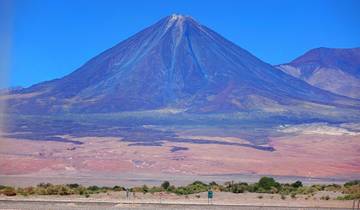
From Buenos Aires to La Paz via Uyuni (15 Nights)
Fantastic tour, with great excursions. People from HiTravel were excellent, always quickly responding to any enquiries we had. All tickets for busses were correctly issued and all travel was smooth. The selected hostels were great, the one in San Pedro was excellent! Thank you
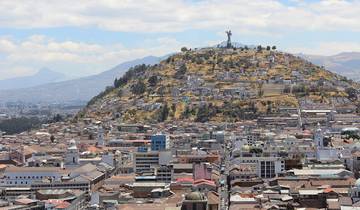
Best of Galapagos
Intrepid seems like a pretty good company. They emphasize a low impact, high quality experience that enables the traveler to experience the local culture and people.

Buenos Aires to Rio Explorer
Good variety of experiences and excellent guides.

- Jungle Trekking
- Sightseeing
Premium Peru, Chile & Argentina (14 destinations)
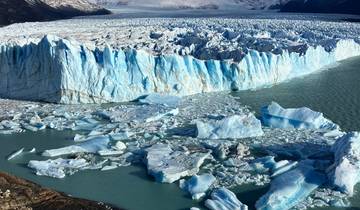
South America: Glaciers, Water Falls & World Wonders
The tour was brilliant and had great highlights to offer in every country. We particularly liked the variety of nature and big cities! In addition, everything was so perfectly organized that you really didn't have to worry about anything. This is what a vacation should be like.
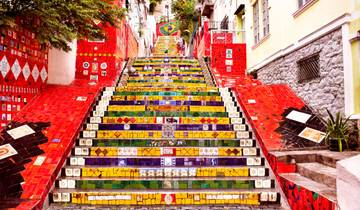
Brazil and Argentina with Iguazu Falls 4 Star
Wanderful Holidays tour company did an excellent job for us. When we arrived at Iguazu Falls, we realized we were missing one of our suitcases. It turns out, Aerolineas Argentinas had lost our suitcase. Your customer service representatives went above and beyond in assisting us and trying to help us locate our suitcase. They even had a representative go to the airport to track our suitcase down. Although, it was ultimately Aerolineas Argentinas that located and returned our suitcase, I still want to commend and recognize the wonderful customer service your team provided us during a stressful time in a foreign country. Thank you very much!
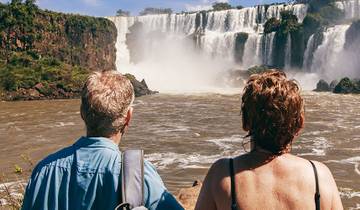
Premium Chile, Argentina & Brazil

INCA ADVENTURES - 7 Days (Lima and Cusco) with Domestic Flights
It was truly a trip of a lifetime! It is a mixture of culture, history, adventure and relaxation! All tour guides were great but Ronald was EXCEPTIONAL! Not only was he knowledgeable of the Peruvian culture, history, and attentive to everyone’s needs, he truly had a LOVE for his country and it showed, which made us love it even more! If I could, I would have Ronald be my guide around the world. Thank you so much Robald for making our girls trip a trip to remember for a lifetime! ~ Jin Yip
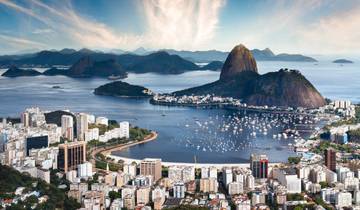
South America Discovery (Puno And Lake Titicaca, 17 Days, Intra Tour Air Buenos Aires To Lima)
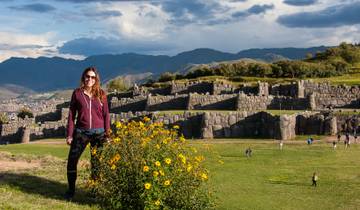
7 Day Cusco Travel Package: Cusco, Sacred Valley, Machu Picchu, Humantay Lake, and Rainbow Mountain.
Waldir was amazing in coordinating the tour, and I really enjoyed Peru! Thumbs up to the team :)

Ultimate South America
Really enjoyed getting a taste of Brazil, Argentina and particularly Peru, seeing many famous sites for myself. Our group generally got on very well, our tour director was well organised, the local guides mostly excellent, enthusiastic and interesting, the accommodation was clean and comfortable, food really good. Unfortunately most of we 24 on the tour caught a cold around the time we arrived at high altitude which meant coping with altitude sickness was extra hard for some of us. But overall the trip was a great success.
What people love about South America Tours
The company is very good, I got a whole package of different day tours, main tour - Inca Trail was excellent! Other tours were ok.
This is the best G adventures tour I have done in terms of itinerary and people I was traveling with. I had a fantastic time with a great group of people. The only feedback I will give G is I feel the CEO guides are pressured to get 9s or 10s in their reviews and hence transmit that to us which made me not leave a review on the G website as I felt I could not be completely honest without harming the tour guides' rating. This culture should change if you want constructive feedback. I loved all 4 of my CEOs on my tour but 2 of them were outstanding (10/10s) and I felt as a result of above, I could not give them the credit they were due without causing harm to the other 2 who were also good but more 7/10s.
- Family (2224)
- Fully Guided (1928)
- Personalized (1259)
- Active (1063)
- In-depth Cultural (893)
- Private (791)
- Hiking & Trekking (596)
- Self-Guided (320)
- Ocean Cruise (255)
- Custom (150)
- Sailing (83)
- Coach / Bus (65)
- Intl. Flights Included (55)
- River Cruise (47)
- Bicycle (42)
- Food & Culinary (32)
- Self Drive (12)
- Overland Truck (9)
- Health, Spa & Wellness (8)
- Jeep & 4WD (8)
- Train & Rail (8)
- Festival & Events (7)
- Honeymoon (5)
- Hop On/Off (5)
- Motorcycle Ride (5)
Destinations
- Argentina and Chile (264)
- Bolivia and Peru (176)
- Argentina and Brazil (148)
- Ecuador and Peru (102)
- Argentina and Peru (69)
- Brazil and Peru (51)
- Chile and Peru (46)
- Bolivia, Chile and Peru (43)
- Bolivia and Chile (29)
- Argentina, Uruguay and Brazil (21)
- Brazil and Chile (14)
- Argentina and Bolivia (13)
- Colombia and Peru (12)
- Peru tours (1116)
- Ecuador tours (662)
- Argentina tours (593)
- Chile tours (257)
- Colombia tours (201)
- Brazil tours (180)
- Bolivia tours (96)
- Uruguay tours (14)
- Venezuela tours (8)
- Guyana tours (8)
Travel Styles
- Small Group (1320)
- Budget (637)
- Luxury (227)
- Singles and Solo (2284)
- For Couples (694)
- Young Adults (38)
- Seniors (1456)
- 3 Day Tours (329)
- 7 Day Tours (1006)
- 10 Day Tours (554)
- 2 Week Tours (417)
- 3 Week Tours (323)
- 4 Week Tours (52)
- 1 Month+ Tours (38)
- Spring 2024 (2103)
- Summer 2024 (2284)
- Fall / Autumn 2024 (2394)
- Winter 2024 / 2025 (2217)
- Spring 2025 (1343)
- Summer 2025 (1056)
- Fall / Autumn 2025 (1022)
- Winter 2025 / 2026 (877)
- April 2024 (1958)
- May 2024 (2105)
- June 2024 (2155)
- July 2024 (2155)
- August 2024 (2172)
- September 2024 (2186)
- October 2024 (2273)
- November 2024 (2259)
- December 2024 (2123)
- January 2025 (1321)
- February 2025 (1209)
- March 2025 (1281)
- April 2025 (1142)
- May 2025 (1056)
- June 2025 (1017)
- July 2025 (946)
- August 2025 (943)
- September 2025 (948)
- October 2025 (943)
- November 2025 (921)
- 10 Best South America Backpacking Tours & Trips 2024/2025
- 10 Best Adventure Trips for Couples 2024/2025
- 10 Best South America Honeymoon Packages & Tours 2024/2025
- 10 Best South America Travel Specialists (with Reviews)
Subscribe & get your free guide to going abroad!!
9 Epic South America Backpacking Routes: The Best Itineraries and Ultimate Travel Guide
Backpacking South America is an incredible experience that will leave you with lasting memories and a yearning for more. Planning the adventure of wandering such a vast continent can seem intimidating, but this article will demystify how the adventure can be simple yet more fulfilling than any travel experience you’ve ever had. In this guide to backpacking South America you’ll discover the best options for exploring my favorite continent, tips for getting off the beaten track, and everything you need to make your trip as smooth, amazing, and memorable as possible.
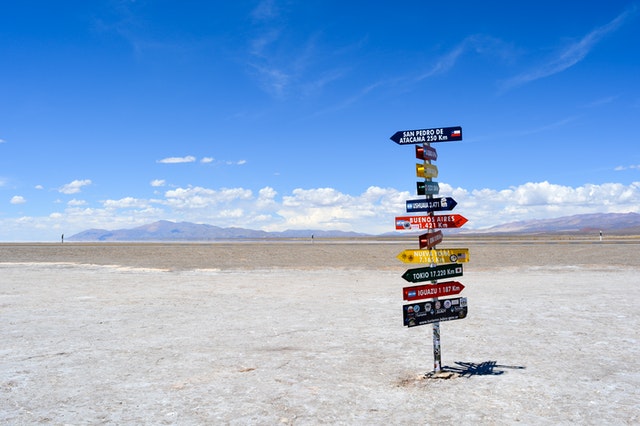
- Why You Should Go Backpacking in South America
- 2 Week Itineraries
- 1 Month Itineraries
- 3 To 6 Month South America Itinerary
- Essential Info for Your South America Itinerary
- South America Travel Budget
- Where To Start Your South America Backpacking Trip Buenos Aires Santiago Or Medellin
- How To Get Between Countries in South America
- The Galapagos Islands
- Where To Next Central America and Beyond
- What About Brazil and Venezuela
- Now That You Understand the Highlights Of Your Destination
- More Essential South America Info
WHY YOU SHOULD GO BACKPACKING IN SOUTH AMERICA
Backpacking South America is an amazing experience! You’ll experience unique cultures, hike up active volcanoes, hike through lush Amazon rainforests, raft down giant waterfalls, and explore some of the most beautiful beaches you’ve ever seen. There will be challenges, but the rewards will be well worth all of the hard work.
TOP 10 HIGHLIGHTS OF SOUTH AMERICA
- Patagonia and Torres del Paine National Park and El Chalten (Los Glaciares National Park)
- The Galapagos Islands: Living among wild animals on land and sea
- Buenos Aires : The gritty Paris of South America
- Machu Picchu: Ruins of an ancient empire
- The Lost City: An often missed highlight just as remarkable as Macchu Picchu
- Food: Lima and Buenos Aires
- Alien Landscapes: The high desert of San Pedro de Atacama and the salt flats of Uyuni
- Wine: Mendoza wine country of Argentina and the equally remarkable Chilean wine country
- Tayrona National Park with a campground nestled against the ocean and Minca highland coffee country, meer minutes away
- Hiking up snow covered volcanoes and sliding back down
- San Carlos de Bariloche and the Lake Districts and trekking through some of the most beautiful nature in the world
- The Perito Moreno Glacier, this vast icefield is the third largest reserve of fresh water in the world
Still planning your trip? Be sure to read our article on the best times to visit South America and wehere to go if you’ve already booked.
THE BEST SOUTH AMERICA BACKPACKING ROUTES AND ITINERARIES
In this article, we’ll share the highlights you need to know about all the best routes for backpacking South America and countries you need to visit on your South America trip to help you figure out the perfect backpacking route for you. However, feel free to click the links below for the perfect itinerary for 2 weeks by region, 1 month by region, and 3 to 6 months in South America.
2 WEEK ITINERARIES

2 Weeks in Patagonia
- San Carlos de Bariloche (2-3 days) and the lake district
- El Chalten (2-5 days) and trekking Parque Nacional Los Glaciares
- El Calafate and Perito Moreno Glacier (1 day)
- Puerto Natales (1+1 day) in prep for the Torres del Paine trek
- Torres Del Paine National Park (4 days for W trek, 7 days for circuit trek)
- Ushuaia (2 days) to expererience the end of the world and fly home
2 Weeks of Argentina, Chile, and Uruguay
- Optional: Montevideo and Colonia in Uruguay (2 days ) Experiencing a smaller more polite Buenos Aires
- Iguazu Falls (1 day) UNESCO heritage site that dwarfs Niagara Falls
- Mendoza (2 days) Argentine wine country experienced by biking between vineyards and wine tastings
- Santiago (2-3 days) Absorbing Chile’s capital through, art, history museums, restaurants, and nightlife
- Chilean Wine Country (1 day) Just as charming and intoxicating as Mendoza
- Pucon (2-3 days) Hike up a volcano and go where Chileans vacation
- San Carlos de Bariloche (2-4days) A trekking mecca (day hike or multi-day) that only a handful of places in the world compare to
- San Pedro de Atacama (2-3 days) : The clearest skies in the world allow you to see more stars than you’ll ever see anywhere else
2 Weeks of the Incan Experience – Peru and Bolivia
- Lima (2-4 days) : The best culinary scene in all of South America
- Cusco (2-3 days) : The gateway to Macchu Pichu against a backdrop of hipster polished Peruvian food and drink
- Sacred Valley (1 day) : A calmer, emptier way to discover the Incas
- Macchu Pichu and Aguas Calientes (1 day) : The highlight of Peru and (for some) South America
- Colca Canyon (2 days)
- Lake Titicaca (1-2 days) : The “highest navigable lake in the world”
- La Paz (1-3 days) : The highest de facto capital in the world, with a “frontier feel”
- Salar de Uyuni (Salt Flats of Uyuni)(2 days – ~3 to 5 days for SUV tour)
- La Paz (1 day) : Returning home
2 Weeks of Alien Landscape – High Altitude Deserts, the Bolivian Altiplano, and Salt Flats
- Santiago (2 days)
- Valparaiso (1 day)
- Atacama Desert + San Pedro de Atacama (2 days)
- Uyuni + Salar de Uyuni (2 days)
- La Paz, Bolivia (1 day)
- Lake Titicaca + Puno , Peru or Copacabana , Bolivia (1 day)
- Cusco (2 days)
- Macchi Picchu (1 day)
- Lima (2 days)
2 Weeks of Animals and Biodiversity – Galapagos, Volcanoes, and the Amazon
- Quito (2 days) : Acclimate to South America in this relaxed and conservative capital
- Otavolo and Otavolo Market (1 day) : Soak up local culture and shop for souvenirs at this uniquely Andean market
- Mindo Cloud Forests (1 day) : An extremely boidiverse subtropical forest that is like few other places in the world
- Galapagos – Isla Isabela (2-3 days)
- Galapagos – Isla San Cristobal (2-3 days)
- Galapagos – Isla Santa Cruz (2-3 days)
- Other options: Avenue of the Volcanoes, Antitana ecological reserve
1 MONTH ITINERARIES
1 month in southern south america.
- Buenos Aires (3-5 days)
- Montevideo and Colonia Del Sacramento (2 days)
- Iguazu (1 day)
- Cordoba (1-2 days)
- Mendoza (2 days
- Santiago (2-4 days)
- Valparaiso (2 days)
- Pucon (2-3 days)
- San Carlos de Bariloche (2-5 days)
- Puerto Natales (1 day – in prep for Torres Del Paines National Park
- Torres Del Paine National Park (4-8 days)
- Ushuaia (2 days)
1 Month in Northern South America
- Bogota (2 days)
- Medellin (2 days)
- Guatape (1 day)
- Cartagena (2 days)
- Zona Cafatera and Cali (2 days)
- Quito (2 days)
- Otavolo Market (1 day)
- Mindo Cloud Forests (1 day)
- Galapagos – Isla Isabela (2 days)
- Galapagos – Isla San Cristobal (2 days)
- Galapagos – Isla Santa Cruz (2 days)
- Sacred Valley (1 day)
- Macchu Pichu (1 day)
- Optional: Colca Canyon (2 days)
- Lake Titicaca (2 days)
- La Paz ( 1 day)
- Salar de Uyuni (Salt Flats of Uyuni (2 days)
- La Paz (1 day)
1 Month of South America Highlights
About the optimal time backpacking South America: The truth: one month aiming to experience all of South America is pushing it as that timeframe is much better suited for a single large country or a couple of small ones than experiencing a whole continent. Argentina, Chile, and Colombia can each easily take a month each when traveling at a comfortable, cost-efficient pace and absorbing the culture. Ecuador, Bolivia, or Peru could be paired as couplets for a good month of travel as well.
But for those with limited time and lots of ambition, we’ll share an itinerary, or more so a list of destinations and minimum timeframes, for blazing through the best of South America in one month.
The balance: Try to absorb the best of nightlife, food, wine, nature, history, and ruins without burning yourself out by being discriminating about your destinations.
How to use this itinerary: Highlight half of the locations that are absolute essentials for you based on your interests and bucketlist, and the 3 places/sites that are your top priority as you’ll want to spend extra time in them. For the remaining half, get comfortable with either breezing through them – to save time – or skipping them altogether – to save money and energy. As such we’ve listed recommended minimum days for each experience so you can patch together the itinerary that suits you based on the best South America Highlights for a month-long trip without burning out or wasting time.
- Buenos Aires (2 days)
- Mendoza (1 day)
- Santiago (1 day)
- Valparaiso (1 day
- San Pedro de Atacama (from Arequipa) (1 day)
- Puerto Natales in prep for Torres Del Paine National Park (1 day)
- Torres del Paine National Park (4 days) – only covers the W Trek
- Ushaia (1 day)
- Salar de Uyuni (2 days – accounting for bumpy transit time)
- Cusco (1 day)
- Maccu Picchu and Aguas Calientes (1 day)
- Arequipa (1 day)
- Lima (1-2 days)
- Guayaquil –> Galapagos Islands (5 days)
- Quito (1 day)
- Cartagena (1 day)
3 to 6 Month South America Itinerary
3 to 6 months is the perfect period of time for backpacking all of South America, with 4 months being the minimum sweet spot. The only difference between a 3 month South America itinerary and a 6 months is that we move at a slower pace and take more rest days.
6 months on the road is exhilarating, exciting, and a wonderful opportunity if you’re spending it all in South America. By being able to slow down, and spend a week in Buenos Aires , Medellin, and Galapagos, instead of mere days you’ll fall deeper into the experience and more in love with the continent. You’ll notice smaller details and absorb more as you will be in a less rushed mindset. Additionally, scheduling 1 to 2 days per week of no travel or sightseeing will leave you rejuvenated, refreshed, and a more hungry and interested traveler.
For this itinerary, we will list all of the recommended highlights of South America with the recommended timeframes for slower travelers. Be sure to take that recommended 1 to 2 days “off” per week, and don’t be afraid of getting stuck in a destination that captures your heart for a little longer than planned – just go with it.
- Buenos Aires (7 days): A perfect introduction to South America with plenty to do and great food. Consider taking Spanish lessons here
- Iguazu (1 day): Account for the extremely long bus ride in from Buenos Aires and know this waterfall will be worth the trip
- Cordoba (2 days) : Practice your Spanish in this university town surrounded by outdoorsy experiences
- Mendoza (2 days): Set aside one day for “bike and wine” tour wine tasting between vineyards of nearby Maipu, and relaxing in Mendoza proper
- Santiago (2 to 3 days): Explore Chile’s capital with heavy focus on history and art museums, nightlife, and just wandering
- Valparaiso (2 days): Explore the hills, graffiti, and nightlife one day, and soak up the towns vibe the next lounging and dropping in on beaches the next
- Pucon (2 days) : Climb Villarica volcano and slide down one day, spend the next sipping coffee and enjoying a popular Chilean vacation spot as locals do
- Puerto Natales and Torres Del Paine (11 days): Give yourself 1 day to prep, 7 to 9 days to do the “Circuit Trek” through Torres del Paine, and 1 day to recover back in Puerto Natales with a warm house and hot meal
- Ushaiia (2 days): Get the post office stamp in your passport denoting “the end of the world,” take a day trip to see penguins, and wander the city to catch “end of the world vibes.
- San Pedro de Atacama and the Atacama desert (2 days) : Give yourself time to explore by night and account for potenital hiccups on the travel to and from Atacama
- La Paz (2 days) : Explore the town, markets, and street food, then day trip to ride the “world’s most dangerous road”
- Salar de Uyuni (2 days): Experience the salt flats on a day tour fromUyuni and allow time for mishaps when arriving/departing
- Cusco (3 days): Visit the museums, do a free walking tour (or 2), and walk within and outside the city to discover ruins everywhere. Additionally, explore the nightlife and food scene thoroughly as it is just as strong as in Lima but with a Peruvian hipster vibe
- Sacred Valley (1 day) : Soak up Incan ruins without the crowds and chaos of Macchu Pichu
- Macchu Pichu (1 day) : Visit the highlight of Peru and inspiration for the character Indiana Jones
- Lake Titicaca + Copacabana/Puno (2 days) : Expereince the highest navigable lake in the world, and the culture that lives by its existence
- Lima (4 days) : Explore art, gourmet food & drink, and nightlife in this metropolis
- Guayaquil –> Galapagos Islands (7 to 10 days) : Slow travel through the Galapagos archipelago choosing as many independent and self guided experiences as possible for a richer, more pleasant experience
- Quito (2 days): Relax and wander, visit the equator, and just decompress in this relaxed and mellow stop
- Bogota (2 days) : Explore the museums (such as Museo del Oro), walking tours that cover the complex history, and nightlife including arguably the best nightclubs in South America in Colombia (and Latin America’s) financial center
- Medellin (4 days): Soak up the good life in a uniquely Colombian, vibrant, and complex place, starting with free walking tours, then visiting museums and eco-parks, following on with nightlife and (ideally) learning to salsa dance)
- Guatape (1 day): Visit a beautiful site in the mountains that looks like thousands of forested islands grew out of a lake
- Cartagena (2 days): Experience the Caribbean at its most “Caribbean” you’ll find in South America – outside of Baranquilla Carnival
- Santa Marta (1 day)
- Minca (1 day): Visit an organic and hydroelectrically powered coffee processing station and plantation
- Tayrona National Park (2 days): Hike in and camp by the ocean for at least a couple of nights
- Cali, Salento, and Zona Cafatera (2-4 days): Discover more than you ever wanted to know about coffee while basking in the home of salsa dancing, and perhaps taking some lessons
ESSENTIAL INFO FOR YOUR SOUTH AMERICA ITINERARY
Travel through South America is uniquely suited for backpacking or any long term travel experience that aims to embrace experiencing local culture, food, language, and nature in a less structured way than package tours, all on a rather small budget. Compared to that required to travel North America, Western Europe, the Middle East, and many parts of Africa, the $40 to $60 per day budget of South American countries (varying by country) is one of the main reasons I recommend South America, as well as Southeast Asia as the perfect first time backpacking destinations.
In return for flexibility of timeline and compromising on 4 star accommodation in favor of hostels, guest houses, and refugios, you’ll receive a one of a kind travel experience in return – a more contiguous expereince than Southeast Asia in culture and language, a more outdoorsy experience that revolves less around beaches and more around mountains, and lastly urban experiences that somewhat echo a gritty yet more vibrant version of traveling Europe. Architecture, food, and travel infrastructure abound but are still uniquely “Latin American” with a different indigenous touch and richness in every country and region.
Here, we’ll review some of the general and basic essentials that you should keep in mind while planning for your itinerary overall as well as each country and segment of your itinerary.
SOUTH AMERICA TRAVEL BUDGET
Travel in South America is in a very reasonable price range – between $40 and $60 a day for a backpacker style budget, averaged across all countries, assuming shared hostels, eating out once per day, and DIY traveling as much as possible.
Compared to other regions of the world, South America travel tends to be more expensive than Southeast Asia travel, which averages ~$35 per day, but slightly cheaper than traveling the Balkans, and much cheaper than traveling the USA, Western Europe, the Middle East, and Africa. In recent years, the price to travel South America has become even cheaper, relative to Europe, the Balkans and Southeast Asia as the cost of living in some of the best cities for digital nomads and backpackers in South America has dropped.
Keep in mind that Argentina, Chile, and Brazil will be the most expensive countries to visit in South America, and Buenos Aires, Santiago, and much of Brazil can become very costly if you get too caught up in the luxury lifestyle. Because of this, when planning your budget for South America plan your budget based on the amount of time you plan to spend in each country and budget much more than the $40 per day for Buenos Aires, Santiago, and Brazil in general. This way, you’ll have enough time and money for an enjoyable experience.
Tips for Saving Money in South America
- Travel by public transport between cities, specifically by bus, as much as possible, as air travel is very expensive
- Travel slower, because the longer you spend in a city, the cheaper the average cost per day becomes
- Cook at home, or at your hostel (this is common) and shop at grocery stores to “brown bag lunch” during the day to save money or order the “menu del dia” at restaurants for a cheaper option
- Quickly check the currency situation of the country you are entering next as bringing in cash dollars or Euros may garner a better exchange rate
WHERE TO START YOUR SOUTH AMERICA BACKPACKING TRIP: BUENOS AIRES, SANTIAGO, OR MEDELLIN
The best places to start your South America backpacking route are Buenos Aires, Santiago, or Medellin, due to location on the “Gringo Trail” and flight access.
Starting in Buenos Aires
Starting in Buenos Aires is the optimal introduction to South America as there are plenty of international flights arriving, the city is easily navigable and welcoming, and, with the exception of Brazil, most everything you will want to see in South America is located west and south or north making it possible to efficiently travel a loop through South America.
Within Buenos Aires, the vibe is welcoming and very European. You will be able to navigate easily in only English while you figure out the ins, outs, and idiosyncrasies of traveling in South America. Additionally, you’ll be able to take some quick and cheap Spanish lessons for a week while exploring the nightlife, robust Argentine BBQ scene, and complex history of a city that is interestingly Italian, Spanish, German, and Argentine at once.
From Buenos Aires you will be able to travel west through national parks, waterfalls, and wine country before traveling south from Santiago, Chile by bus, to hop between Chile and Argentina repeatedly and explore, trek, and camp through Patagonia until reaching the end of the world in Ushuaia.
At this point you can fly back to Santiago and proceed north, exploring Andean South America. On this leg you’ll experience the mountainous and otherworldly Bolivian altiplano, ancient Peru and the remnants of the Incan empire, the biodiverse and animal rich territory of Ecuador and the Galapagos archipelago, and the complex and vibrantly charming gem of Colombia.
From here, if you still have time on your agenda, sneak past Venezuela and explore the vast, complex, and beautiful Brazil wrapping around and ending in Sao Paulo.
Starting in Medellin
For a more direct path, start in Colombia, specifically in Medellin, to enjoy the good life, get acquainted with the vibe and way of South America, and take some Spanish lessons. Medellin is another city that is very accessible, with very cheap flights from almost anywhere in the world, easy to navigate with limited Spanish, and enjoyable while you settle in.
From Medellin, explore northern Colombia and the Caribbean as well as the Atlantic coast – extra points for timing the trip with Carnival as Barranquilla has the biggest and best Carnival outside of Rio de Janeiro and Sao Paulo – not skipping the Lost City of Colombia along the way. Then, continue falling south through Colombia, exploring coffee country and the heartland of salsa.
At the border, continue into Ecuador exploring its diversity and rerouting to Galapagos for a once in a lifetime experience.
After returning to the mainland, follow the backpacking trail south through Peru, exploring the best food scene in South America, remnants of the Incan empires, and some of the best surfing in South America.
Then, explore the rougher side of travel in Bolivia, passing through the extremely mountainous Altiplano and the salt flats.
Proceed into northern Chile and Argentina, switching from an Andean experience to a more heavily European influence, more wine, and more opportunities to camp and hike in the forested, mountainous backcountry of Patagonia instead of the rain forests of northern South America.
Continue the fall south to Ushuaia at the end of the world, potentially hopping a two-week trip by boat to Antarctica before flying up to Buenos Aires.
Spend the remainder of your trip exploring Argentina, traveling from Buenos Aires to the UNESCO site of Iguazu falls, to the university town and outdoorsy Cordoba, and the wine country of Mendoza at the base of Aconcagua, the tallest mountain in South America. Finally, hop a bus across the border to Santiago, Chile to end your South America tour.
Starting in Santiago
From the Santiago start, proceed on much the same path as starting in Buenos Aires, except travel south, Santiago to Ushuaia, then fly from Ushuaia to Buenos Aires followed by traveling west by bus, city-hopping your way to Santiago. End the South America tour traveling by bus north from Santiago to Medellin and Caribbean Colombia.
HOW TO GET BETWEEN SOUTH AMERICAN COUNTRIES
A defining characteristic of traveling South America is that it is best traveled by bus, with the flight from Ushuaia to either Santiago or Buenos Aires being the only logically necessary flight. This is partly why South America is a destination best suited for months of travel if traveling multiple countries or for a single country if traveling for less than a month, to offer sufficient time travel by bus without losing your sanity. Along the way, the slow travel of busses will allow you to soak up smaller destinations that are on the beaten path but simply less traversed.
As off-putting as longhaul bus travel sounds, the “cama,” which translates to “bed,” class of buses in South America, more common in Argentina and Chile than other places, is prevalent and consists of a large comfy seat that seems more like living room furniture and reclines completely into a bed, making overnight trips bearable and interesting but still comfy.
However, if you do decide to fly, note that domestic flights are far cheaper than flights across borders, usually by a few hundred dollars at least, even if the comparable domestic and international flights are the same length, on the same airline. Plan accordingly.
Tips for getting around South America:
- Plan on traveling by bus if possible
- Attempt to keep flights domestic to save money
- Colombia is the exception – with domestic flights being cheap and much more convenient than bus travel
- When flying to Galapagos, fly out of Guayaquil instead of Quito for cheaper prices and less headache
- Check out this article for more information on getting around South America: https://abrotherabroad.com/how-do-you-get-around-when-traveling-the-world/
COUNTRY BY COUNTRY OVERVIEW FOR BACKPACKING SOUTH AMERICA
The”Gringo Trail” through South America is one of the most scintillating and adventurous travel experiences on the planet combining urban experiences, towering mountains and ancient ruins, with friendly, vibrant culture in a way that few other destinations do. All possible on a rather small budget. As much as each country in South America embodies these traits, each country still truly has its own personality.
Argentina is uniquely European in the north, permeated with Italian culture, wine, and European architecture while having a Swiss Alpine feel in its southern experience.
Bolivia is a charmingly “rough” travel experience, taking you through high desert landscapes you might only see elsewhere in the Himilayas, and tying with Peru for its preservation of indigenous culture.
Ecuador is THE most unique place in the world to experience wild animals humanely, in a way that benefits them more than us, along with the most biodiverse landscape on the planet.
And every other country and region in South America carries its own personality and quintessential experiences.
With that said, no single itinerary or South America backpacking route is good for every traveler.
Because of this I highly recommend “getting the vibe” of each country in South America by reading our descriptions below, understanding the most easily traveled and economical route through them (the Gringo Trail) for you, starting in one of the three starting cities that interests you the most (Buenos Aires, Medellin, or Santiago) and just going.
From there, based on your passions and interests – food, wine, outdoors, architecture, nightlife, etc. – plan the travel allowing more days for the destinations and experiences you expect to love, and breezing past the destinations and experiences that just don’t get your heart racing.
In your itinerary, alot one day per activity (maximum two activities per day) and add an extra day or two of empty time in destinations you REALLY expect to love or that appear to have a lot that interests you on paper.
In the following sections, we’ll share the overview and highlights for the countries in South America you need to visit.
Click on any of the following countries to jump to our Country Quick Guides, or simply keep reading to soak it all in.
Argentina is an adventure-filled country with some of the world’s most beautiful landscapes and a great place to experience a mesh of European and Latin American culture. Backpackers should take a road trip between Buenos Aires and the Chilean border stopping at highlight cities along the way, then down South into the lake district and the Patagonian backcountry. On this simple L-shaped path you’ll enjoy the expansive, gorgeous scenery as well as its picturesque cities and easy access to the amazing food that Argentina has to offer – beef in the north and Patagonia lamd in the south.
In Argentina, real travel means experiencing one of the most poetic regions in South America: Patagonia. Throughout Argentine Patagonia, you’ll be able to hike for hours upon hours in federally protected national parks or go rafting down waterfalls through the mountain range. Backpacking Argentinian Patagonia also introduces travelers to food and cultures they likely won’t experience anywhere else in South America. The tradition of Argentine “asado” shifts from beef in the north to wild raised goat and lamb in the south. Additionally, the heritage of beer, brought by the Germans, and the establishment of mountain towns that seems remarkably Swiss and specialize in chocolate (like San Carlos de Bariloche) make for a unique experience on the Gringo trail. Be sure to try the beers by Cervezeria Austral, especially the Calafate berry ale.
Wanderers that do make it south will find endless opportunities for outdoor adventures– anywhere they go, there are infinite landscapes waiting to be discovered – from the frontier mountain of El Chalten, to just across the border in Torres del Paine National Park. while sights like El Calafate (near Perito Moreno Glacier), a quaint little fishing town that is the gateway to Antarctica due to its location near Ushuaia. Travelers in the area can rent boats for day trips onto the frozen glacier or take guided hikes with local tour operators.
There’s no shortage of activities: from trekking alongside llamas in Mendoza wine country, climbing Mount Fitz Roy (arguably one of the most
There is plenty of historic scenery and cultural heritage to explore in the north too. Buenos Aires was one of the earliest colonial settlements in South America for example. Further north “Salta La Linda” maintains an almost indigenous charm, justifying her name.
MY FAVORITES IN ARGENTINA
Buenos Aires is the capital and largest city of Argentina, as well as the third-largest metropolitan area in South America. Backpackers can take a walking tour around Buenos Aires, visiting historic districts such as San Telmo and La Boca that have preserved various architectural styles from different periods. Backpackers may also want to visit the Teatro Colon, an internationally acclaimed opera house that is home to performances from local artists and groups touring inter-America.Sa
When in Buenos Aires, Backpackers should take a walking tour around the city, visiting historic districts such as San Telmo and La Boca that have preserved various architectural styles from different periods. Backpackers may also want to visit the Teatro Colon, an internationally acclaimed opera house that is home to performances from local artists and groups touring inter-America.
Mendoza wine country offers backpackers a unique opportunity. Backpackers will find themselves surrounded by some of the most beautiful vineyards in all of South America with views of snow-covered Andes mountains in every direction. Backpackers can partake in classes about wine
Backpackers will find themselves surrounded by some of the most beautiful vineyards in all of South America with views of snow-covered Andes mountains in every direction. Backpackers can partake in classes about winemaking and tasting in Mendoza wine country. Backpackers will enjoy the expansive, gorgeous scenery as well as its picturesque cities and easy access to amazing food.
San Carlos de Bariloche and National Park Nahuel Huapi: The most beautiful and accessible hiking country I’ve seen in the world. Countless trails through forests, pasts lakes, and up mountains, with more than you could possibly do falling into the half-day category all of the way to the multi-day category making National Park Nahuel Huapi one of my favorite places in the world
El Chalten and Parque Nacional Los Glaciares: A frontier mountain town, simple and adventurous, adjacent to Parque Nacional Los Glaciares delivers a hiking and trekking experience through front country and backcountry that is somewhat of a “Torres del Paine light” experience and free – you just have to buy and pack in your food. each time I’ve visited, this has been of the most peaceful and enjoyable experiences hiking through Patagonia.
HIGHLIGHTS OF ARGENTINA
- Buenos Aires: The Paris of South America, gritty and filled with Argentine BBQ (asado)
- Mendoza and Argentine wine country: Bike tour vineyards tasting world class wines
- San Carlos de Bariloche and the Lake District: A German influenced mountain, surrounded by hiking and trekking opportunities, and the gateway to Argentine Patagonia
- Iguazu Falls, Argentina/Brazil Border: A UNESCO world heritage site, this combined waterfall has the largest flow of any in the world, taller than and twice as wide as Niagara Falls
- Patagonian Backcountry in El Chalten: A small, frontier town that sits on the edge of the Patagonia Glaciares National Park, with great free, rustic camping and trekking with a more adventurous, less refined feel
- El Calafate and the Perito Moreno Glacier: Witness the vast and impressive glacier Perito Moreno while exploring it via a series of walkways for a half day experience
- Puerto Natales, Chilean Patagonia, and Torres del Paine National Park: Hike the “W Trek” over 5 days or the “Circuit Trek” over 7 days in arguably the most impressive park in Patagonia
- Ushuaia: Experience the end of the world and the southernmost civilized city, potentially visit Antarctica
- More of Patagonia and the Wilds
- Argentine Asado (BBQ)
- Latin America meets Europe
- Best wine in Latin America
- Also Consider: El Bolson
WHAT YOU NEED TO KNOW ABOUT BACKPACKING ARGENTINA
Bring us dollars to get a better exchange rate and make your money go further thanks to the “dolar blue.”.
Due to recent history, Argentina is undergoing somewhat of an economic crisis. Though this event is terrible for locals, it doesn’t diminish the travel experience much and actually works in the traveler’s favor. The “Dolar Blue” is a “blue for an exchange rate much more favorable to you than the official rate. For example, at the time of writing this, the official exchange rate is 1 USD to to ~100 Argentine Pesos while by contrast the “Blue rate” is 1 USD to ~200 Argentine Pesos. The Dolar Blue rate alone makes traveling Argentine a great financial decision.
Comparatively, when I first traveled to Argentina in 2010, the currency exchange rate was 1 USD to 3.82 Argentine Pesos. At the current exchange rates, $1 will by you a Latte at an upscale coffee shop and $17 will buy you a ribeye steak at the best restaurant in Argentina (Don Julio’s).
To get the dolar blue, first educate yourself on the daily rate to go in informed. I’ve found https://bluedollar.net/ to be an accurate source. Next, bring your dollars.
If you don’t have any, going to Uruguay to withdraw from an ATM is a solid option, as there are many USD dispensing ATMs in Montevideo and Colonia.
Last, visit an “Arbolito” or unofficial exchange house kiosk. There are many located on the pedestrian street of Calle Florida.
Plan for long haul bus rides between cities
The distance between cities in Argentina are vast, so 12 to 20 hour bus rides aren’t uncommon. Do yourself a favor and only book “full cama” (full bed) bus rides over semi-cama and below
WHAT TO EAT AND DRINK IN ARGENTINA
- Mendoza Region Wine: Aim for Cabernets or Cabernet Sauvignon as these are their strengths
- Argentinian Steaks
- Chimichurri sauce
- Pizza, typical of Buenos Aires in an Argentine style
- Argentinean asados
- Argentine desserts Dulce de Leche and alfajores
DAILY BUDGET FOR ARGENTINA
Backpackers can expect to spend about 40 USD per day if they are traveling solo and making their own accommodation arrangements. Backpackers traveling with one other person can expect to spend about 50 USD per day on accommodations and food; those who travel with two people should
BUDGET FOR EATING AND DRINKING
Backpackers can budget about 40 USD per day if they are traveling solo and making their own accommodations arrangements. Backpackers traveling with one other person can expect to spend about 50 USD per day on accommodations and food; those who travel with two people should budget about 60 USD per
A budget for Backpacking Argentina will depend on a few factors. One factor is the time of year you go. Backpackers will have to take into account the high prices during the winter and shoulder seasons. Backpackers should also remember that accommodations are often much more expensive in the peak season (normally November to March). Other important factors in determining your budget are the length of your trip, how many people you are traveling with, and what type of accommodations you choose.
WHEN TO VISIT ARGENTINA
One of the best times to visit Argentina is during the shoulder seasons of September to November and March to May. Backpackers can explore at their own pace without feeling rushed and should be able to get a good price for accommodations. Those who want to avoid crowds may want to avoid the summer (in Patagonia) and winter months (in Buenos Aires and the North) as these are the peak travel seasons. Also consider visiting Patagonia for fall color in addition to the lighter crowds just before winter.
ARGENTINA VISA INFORMATION
Travelers can stay up to 90 days without being granted any type of permission from immigration authorities and without any fees.
GETTING TO ARGENTINA AND MOVING ON
Traveling into Buenos Aires to start any Argentina backpacking trip is the best option . A perfect Argentina itinerary and path would begin in Buenos Aires traveling the loop west then south through Patagonia and Chile by bus, and then flying from Ushuaia back to Buenos Aires to depart, or to Santiago to travel north and explore more Andean South America.
Keep in mind that as you travel south through Argentina you will (or at least should) bounce across the border into Chile to explore cities such as Santiago, Valparaiso, Pucon, Valdivia, Puerto Montt, Tierra del Fuego, and of course Puerto Natales and Torres del Paine National Park
THE ARGENTINA ITINERARY (**CITY ITINERARIES COMING SOON**)
- Buenos Aires
- Iguazu and Iguazu Falls
- Mendoza and Mendoza Wine Country
- San Carlos de Bariloche and the Lake Districts
- El Chalten (Patagonia)
- El Calafate and Perito Moreno Glacier
We’ve already mentioned that backpacking Argentina is a fantastic adventure, so it’s worth saying that Chile has just as many places and experiences worth exploring too. Backpackers who make the trip from Buenos Aires to Santiago will see the urban, cultured, and heavy European influence in Latin America, in the form of food, wine, university cities, and urban pockets, before following a more beautiful yet equally interesting path into Patagonia. The one up that Chile has is being arguably more outdoorsy and friendlier to the beach loving crowd.
Chileans, compared to Argentines and their neighbors, are remarkably more conservative, so you’re less likely to find them out at 3am on a Wednesday night going hard with work the next morning. On the other hand, thanks to the 4,000 mile coastline and landscape dominated by mountainous Patagoniw, Chileans outside of the bigger cities are know to be more outdoorsy and Salt of the earth. Take that to say Chile is the place you’re most likely to run into a local that’s a surfer, rock climber/mountaineer, and cowboy as well. And if the locals love these activities that means more opportunity for you to join in, safely ,and cheaply. If you prefer the outdoors, big night skies, and rugged landscapes to Italian influenced architecture, Chile is a place you could enjoyable fall through for months ending in legendary Torres Del Paine and Tierra Del Fuego.
By following the path south through Chile, from Santiago, “Valpo”, and Atacama, and bouncing back and forth between Argentina and Chile while falling south, backpackers can explore Torres del Paine National Park, take part in challenging climbing or make their way to Puerto Natales for an enchanting gateway town, climb a volcano (Pucon), explore the lake district on both sides of the Chilean and Argentinean border, pass through hippie towns, and more. Backcountry lovers seek out the many other less popular but equally beautiful national parks in Chilean Patagonia which tend to be more well maintained and improved than their Argentine national park counterparts.
On your way through Chile and Patagonia you’ll stumble past guanacos, pumas, and plenty of other backpackers enjoying life against a backdrop of incredible mountain landscapes while they traverse closer towards the highlight of the region – Torres del Paine National Park.
The further south you travel, the greener the landscape gets, until you’ve reached frost-covered volcanoes and the end of the world in Tierra del Fuego
Once you’ve fallen as far south as you care to, proceed north to experience the Atacama desert and some of the clearest skies in the world, perfect for stargazing in a way you will never experience anywhere else.
Chile’s long strip of land, dominated by coastline and mountain ranges, is an outdoor paradise speckled with fantastic wine. The conservative population, recently complex history (with the military junta), and lack of nightlife – compared to Argentina, Colombia, and Peru – make Chile perfect outdoors and nature lovers. EVERYONE should pass through, but plan how much extra time you spend in Chile according to your love of being outside.
CHILE HIGHLIGHTS
- Santiago: Chile’s capital, largest city, and start point for exploring Chile
- Chilean Wine Country: The Casablanca Valley is Chile’s premier wine region for crisp white wines (Sauvignon Blanc and Chardonnay) as well as Pinot Noir, located halfway between Santiago and Valparaiso. Essentially the Napa Valley to Valparaiso’s “San Francisco of South America” reputation
- Valparaiso : One of the best cities in South America according to lonely planet, Valparaiso is “Little San Francisco” with a South America twist. Hilly, artistic, and charming with its own version of “Napa Valley” (the Casablanca Valley) nearby
- Pucon: An outdoorsy lake town at the base of the permanently snow covered volcano VIllarica which is the trip highlight to trek and literally slide down after. In between you can enjoy the trendy cafes and socializing with international vacationers
- Puerto Natales and Torres del Paine National Park: The town and adventure base for arguably the best National Park in Patagonia and South America hosting a 5 day “W Trek” and a 7 day “Circuit Trek”
- San Pedro de Atacama: A high altitude desert city that boasts the clearest night skies in the hemisphere and unreal views of the stars amid a now trendy and hipster oasis
- Iquiqe: A resort town on Chiles north coast that gives the chance to sandboard HUGE sand dunes enroute to San Pedro de Atacama
- Valdivia: A past hub for German immigrants, as well as chocolate and beer, and now a lively university town with a solid nightlife and social scene
Also Consider:
- Colchagua valley for wineries – south of Santiago
- Chiloe (Region): An archipelago of 40 islands steeped in superstition and locals that are in touch with their heritage and roots of surviving in an adventurously unhospitable locale
- Puerto Varas: A quaint lakeside town that is Chiles conservative, quieter answer to Bariloche
- Central Chile: Great surf breaks, wineries, and Chilean cowboy culture
- Epic Surf Spots: Arica, Pichilemu
- Puerto Montt: The jump off point for travelers in Chile launching into Patagonia – big and busy
- Concepcion: A busy, urban port city and the second largest in Chile
WHAT TO EAT AND DRINK IN CHILE
- Chorillana: A mass of fries, cheese, hot dogs, and guilt that’s perfect drunk food.
- Teremoto: A drink legendary among college students. One drink will shake your world up
DAILY BUDGET FOR CHILE
The estimated daily budget for traveling in Chile depends on the type of traveler and the country they are visiting. Backpackers and modest tourists should expect to spend around $40 to $50 per day (shared hostel, one meal eat at a restaurant daily, self guided tours), but those who enjoy luxury can spend as much as $100 (private hotel room, eat out 3 times daily, several guided tours).
WHEN TO VISIT CHILE
Chile’s extreme climate in the south means that it has a smaller window of time each year in which it is appropriate to visit expecting sunny skies – in Patagonia. However the shoulder seasons are still great to travel Patagonia if you don’t mind surprise rain and weather shifts. Backpackers looking to experience the Patagonian summer months might try visiting from October through February for sunny weather, but expect the most tourists in December and January.
Those who want to see the snow-capped mountains of Chile should plan on visiting during its winter months which typically fall between April and September – and plan on being able to squeeze in some snowboarding and skiing. Backpackers looking to visit Chile during its spring, summer and autumn seasons (October through March) might be interested in exploring San Pedro de Atacama or Patagonia for outdoor-oriented activities.
VISA INFORMATION FOR CHILE
Travelers staying in Chile for less than 90 days will need to pay a $5 USD fee at the port of entry. Make sure your passport is valid for at least 6 months beyond the end-date of their Chilean visa Backpackers.
GETTING TO CHILE AND MOVING ON
As flights throughout South America are pricey, plan on bus travel when moving on to Argentina, Bolivia, or Peru from Chile. The land border crossing will be “interesting,” as Chile is very strict about the foods (mainly fruits and veggies) that cross the border into Chile, so ditch any fruits and vegetables before passing through customs.
ABOUT BUS TRAVEL IN CHILE
For long haul travel within Chile, for most Chileans, flights are out of the question, as they instead of for coach style “Pullman” buses, but likely not the kind you’re used to if coming from the US, Canada, or Europe.
These buses are honestly more comfortable than most plane rides – if you pick the right one. In Chile the longhaul bus classes are “cama” (meaning “bed”) and semi-cama (meaning “semi-bed”). The “Cama” seats fold down completely horizontal to create a bed comfortable enough for a 20 hour trip. I honestly love these buses for road trips as you get a seat more comfortable than any airplane I’ve been on, with the exception of a few first class rides, and a beautiful view out of the window, especially the further you travel south into Patagonia.
The bottom line: Wherever you’re traveling in Chile, go by bus and choose “full cama” for an even more enjoyable travel experience.
BOOKS TO READ ABOUT CHILE
- The House of the Spirits – Isabel Allende
- The Statues That Walked: Unravelling the Mystery of Easter Island – Terry Hunt and Carl Lipo (Rapanui)
South America itineraries commonly focus on countries, but adventures generally don’t stop at borders and Patagonia is a perfect example of that. Patagonia is a vast, wild, and a beautiful region. Located at the southern end of South America, stretching across Chile and Argentina, this legendary rugged landscape is well worth a visit.
For lovers of the outdoors that are pressed for time and craving a trip to South America, I highly recommend skipping the city life, flying directly into Ushuaia, and venturing solely through the region of Patagonia. That experience alone would be rich and satisfying enough to make Patagonia the only part of your itinerary.
HIGHLIGHTS OF PATAGONIA
- San Carlos de Bariloche + the Argentine Lake District: This Alpine style mountain filled with chocolate shops feels like and is the beginning Patagonia filled with deep blue lakes, towering green hills, and days of trekking in the epic Parque Nacional Nahuel Huapi
- Punta Arenas: The gateway to the Antarctic and a Patagonia jump off point that, thanks to its history, is worth a few days to explore its food, festivals (if time right), and character
- Pumalin Douglas Tomkins National Park: A 700,000 acre park gifted back to the Chilean people
- El Calafate: The largest city near the Perito Moreno Glacier. Though El Calafate doesn’t offer much, besides a fantastic all you can eat Patagonian BBQ joint, the city is the perfect place to base for your trip to the Perito Moreno Glacier
- El Chalten + Cerro Fitz Roy : A Patagonian frontier town in Argentina that is one of the quintessentially charming yet relaxing trekking experiences in the region as it is adjacent to the free to use Glacier National park, filled with free campsites, with the Cerro Fitz Roy mountain, the star of the Patagonia brand logo
- Puerto Natales town as a base for the Torres del Paine W and ) Circuit Treks
- Torres del Paine Torres del Paine National Park W or O Trek + Grey Glacier + Peho as the highlight multi-day treks in Patagonia
- Ushuaia: The southernmost civilized city in the world and the main “jumpoff point” for hopping a cruise to Antarctica
WHAT TO EAT AND DRINK IN PATAGONIA
- Austral Brewery Calafate Berry Ale
- Patagonian cordero (lamb) cooked Argentine asado style
- Chocolate (from San Carlos de Bariloche)
- Empanadas with a Patagonian twist
- Octopus and squid grilled on the beach
- Comparsa (deep fried corn pancakes with cheese)
WHAT YOU NEED TO KNOW ABOUT BACKPACKING PATAGONIA
- Distances are far between cities, so plan accordingly with snacks, bathroom breaks, and the potential for a bus to break down
- The weather can be unpredictable don’t think you’ll be able to travel Patagonia in the winter, and plan for sun, rain, and snow (potentially) year round
- Carry cash ATMs are fewer than in other cities in south America. Some cities only have one ATM and they’re commonly broken too
DAILY BUDGET FOR PATAGONIA
Plan on spending ~$50 per day minimum in cities throughout Patagonia not including drinks and entertainment, and significantly less when camping in places, outside of Torres del Paine Park.
Hostel Accommodation: ~$20 per night
Budget Hotel Accommodation: ~$50 per night
Transportation between cities: $20 per movement
Campsites: Free to ~$10
Food costs per day: $20
Budget for Torres del Paine National Park W Trek: ~$150 if you bring in your own food
Budget for Torres del Paine National Park Circuit Trek: ~$100 if you bring your own food
WHEN TO VISIT PATAGONIA
Patagonia is a unique place where you’ll want to go during the summer for the best weather and experience. Summertime, between December and February, the weather is pleasant and dry, but plan for Patagonia to be filled with tourists.
The shoulder season of springtime, during October and November, amd autumn,, during February and March, give other great options wherein the weather is cooler, crowds are lighter, and prices are less expensive.

GETTING TO PATAGONIA AND MOVING ON
By plane, plan to fly into Ushuaia, which has the nearest airport, and plan to bus into your preferred city, region, or destination in Patagonia from there.
For budget travelers and those already in the region, plan to take a bus, and plan your itinerary at least a week out if possible. Buses between locations and on specific routes in Southern, more remote South America only run 2 to 4 times per week, and full cama buses run even fewer days per week. To ensure you don’t spend too much more time in a destination than planned (getting stranded), check bus schedules at the town’s central bus station when you arrive, and don’t rely 100% on online bus schedules.
BEST BOOKS AND MOVIES ABOUT PATAGONIA
- Whispering Land
- 180 South (movie)
- In Patagonia – Bruce Chatwin
- The Old Patagonian Express – Paul Theroux
- Patagonia: A Cultural History – Chris Moss
PATAGONIA ITINERARY
- San Carlos de Bariloche
- Punta Arenas
- The new Patagonia National Park
- El Calafate Perito Moreno Glacier, Lago Argentino, and Los Glaciares National Park
- El Chalten + Cerro Fitz Roy for the trek past Lago de Los Torres or the 4 Day Huemul Circuit
- Puerto Montt
- Parque Nacional Pumalin (largest national park in South America)
- Futaleufú
- Parque Nacional Cerro Castillo
- Puerto Natales (fit and equip for Torres del Paine)
- What: Daily Torres del Paine W trek talk and Q&A at 3pm at Erratic Rock
- Torres del Paine Torres del Paine National Park W or O Trek + Grey Glacier + Peho
Bolivia is a country that anyone seeking to explore the natural wonders of South America should visit. Hike through incredible mountain ranges, take part in challenging climbing in the Bolivian Altiplano -(the Himalayas of South America), and visit the country’s highlands, and more to experience an extremely unique landscape and country. All with a backdrop of complex history and visibly preserved indigenous culture.
The Bolivian Altiplano carries a special beauty that is unlike anything else on earth travelers will have seen in their travels. Visitors will also experience a multitude of indigenous cultures, charming with op hats,, pet alpacas, and brightly colored traditional dress, and incredible attractions with “adventurous” transport en route.
Go by offroad ready chicken bus or SUV tour to the Salar de Uyuni, one of the world’s largest salt flats with mesmerizing optical illusions worthy of hours long amateur photo shoots.
End the trip in Bolivia, before crossing into Peru, at Lake Titicaca, which is home to a number of indigenous ethnicities and the “highest navigable lake in the world,” with man made islands made of reeds.
HIGHLIGHTS OF BACKPACKING BOLIVIA
- La Paz: The highest de facto capital in the world with the “Bolivian Himalayas” as a backdrop
- The towering Andes, the Himilayas of South America running across and towering above the vast and flat Bolivian altiplano
- Lake Titica: The “highest navigable lake” in the world, shared with Peru, with man-made floating islands constructed of Totora root.
- Salar de Uyuni (The Bolivian Salt Flats): Vast, impressive, and one of a kind experience – by day tour or multi-day SUV adventure
- Mountain Biking the most dangerous road in the world
WHAT YOU NEED TO KNOW ABOUT BACKPACKING BOLIVIA
- Keep your valuables hidden, especially passports as petty theft isn’t uncommon
- Travel as a group or in pairs to avoid being targeted
- Backpackers should invest in a reliable travel insurance plan for their trip (e.g., World Nomad)
BEST FOODS IN BOLIVIA
- Noodle chili
- Chola sandwich
- Cuñapé
- Jak’s Iawa
- Pique Macho
DAILY BUDGET FOR BOLIVIA
Bolivia is one of the cheapest countries in South America to travel costing roughly $25 to $35 per day (sometimes cheaper) for budget travelers and backpackers that don’t mind shared accommodation and avoid eating out too much. For less frugal travelers,, a budget of $50 to $65 a day for the basics, plus excursions will suffice.
Accommodation: ~$7-10 for a hostel, ~$25 for a budget hotel
Food: $10 for budget travelers, ~$15 for splurging
Transport: Averaged ~$5 per day if changing cities every 2 to 3 days
Activities: ~$10 to $30 self-guided and budget, $50 to $100+ for luxury
WHEN TO VISIT BOLIVIA
The best time to visit Bolivia is during the summer months between May and October when the dry season brings clear skies and the nights aren’t as cold. Outside of these summer months, temperatures in the highlands of the altiplano are much colder and may make hiking and camping less enticing.
VISA INFORMATION FOR BOLIVIA
Backpackers visiting Bolivia require a tourist visa, which can be obtained at any land border or airport, on arrival. The visa is valid for 30 days and costs $160. You will need 6 months validity on your passport, have proof of a flight leaving Bolivia before the expiration of your visa, and have the address for your accommodation in Bolivia.
You can find more information at the State Department website here
BEST BOOKS ABOUT BOLIVIA
- Bolivar: American Liberator
- The Lost City of Z
- Marching Powder – Thomas McFadden and Rusty Young
Peru is great for any backpacker looking to dabble into not just a rich present day culture, but deep into the past as well. The country has so much diversity in geography, culture, history, ruins, and gastronomy that it could very well be satisfying as your only destination for a 2 to 4 week adventure.
Peru is one of the cheapest places in South America to travel, slightly more expensive than Bolivia but delivering a far better living and travel standard. The Capital of Lima has a variety of restaurants, museums, and nightclubs that are not as pricey as they would be in other major cities like Rio, but just as lively, gourmet, and satisfying. Visitors can also visit Cusco for its famous Inca ruins or hike the Huayhuash circuit on one of Peru’s famous day hikes while diving into Peru’s hipster food, drink, and art scene.
HIGHLIGHTS OF BACKPACKING PERU
- Lima: Home to the best food in South America, Peruvian, fusion, and otherwise, and some of the best restaurants in the world
- Cusco: A city littered with Incan ruins, charming pockets of neighborhoods and great archeological museums, and the jumpoff point to legendary Macchu Picchu
- The Inca Trail trek or the Salkantay Trail trek: Adventurous, multi-day hikes through jungle and idigenous villages leading to the iconic, legendary highlight of Peru – macchu Pichu. Inca Trail – 4 days over 25 miles, Salkantay Trail- 6 days over 37 miles
- Macchu Picchu: The ancient and once lost city of the Incas, towering thousands of feet above sea level and the surrounding landscapes and inspired the story of Indiana Jones
- Huayhuash Circuit Trek (8 to 12 days): An often overlooked, adventurous, and enjoyable trek in Peru for outdoorsy travelers
- Colca Canyon: Another great and often overlooked trek in Peru
- Countless Archeological Sites hidden within the city of Cusco and around
BEST FOODS IN PERU
- Ceviche: Citrus “cooked” fish dish that Peru is legendary for.. Every region has a variation, so try some everywhere you go
- Lomo Saltado (Stir Fried Beef)
- Aji de Gallina (Creamy Chicken)
- Papas a la Huancaina (Potatoes in Spicy Cheese Sauce)
- Cuy (Guinea Pig)
- Causa (Potato Casserole)
- Rocoto Relleno (Stuffed Spicy Peppers)
- Anticuchos de Corazon (Grilled beef hearts)
- Arroz con Pato (Duck with Rice)
- Pollo a la Braza (Simply amazing roasted chicken)
WHAT YOU NEED TO KNOW ABOUT TRAVELING IN PERU
Bring lots of water and a sense of adventure whenever you hike, trek, or adventure in Peru. The altitude and heat will dehydrate you faster than you think.
Pack cash in order to buy food or drinks during their journey. ATMs will be rare at roadside cafes and on hiking trails.
DAILY BUDGET FOR PERU
Backpacking Peru will cost roughly $30 to $40 a day, if managing how much you eat out, and staying in hostels.
An average meal will be about $5 ( adding up to $15 to $25 per day), hostels will run $10 a night, and imported beer will run $3.
WHEN TO VISIT PERU
May to September is high season for tourism and the best time to visit Peru. Though the costs will be higher and the attractions will be crowded, this is the season to visit.
The low tourist season of January to April may offer cheaper prices and thinner crowds, but the high altitude jungles of Peru will be in the middle of rainy season and extremely rainy. Macchu Picchu and the Inca trail regularly shut down in February due to excessive rain.
VISA INFORMATION FOR PERU
For most nationalities, no visa is necessary to enter Peru, just 6 months validity on their passport. The visa is valid for up to 183 days, at the discretion of the issuing immigration officer.
BEST BOOKS ABOUT PERU
- Inca Empire: A History from Beginning to End
- Turn Right at Machu Picchu – Mark Adams
- The White Rock: An Exploration of the Inca Heartland – Hugh Thomson
- Eight Feet in the Andes – Dervla Murphy
- Last Days of the Incas – Kim MacQuarrie
Ecuador is the premier country in South America to soak in the experience of wildlife and nature. As the world’s most biodiverse country and home to the Amazon and the Galapagos Islands, few other places in the world will fill your thirst for David Attenborough styled Planet Earth adventures.
Backpacking Ecuador offers opportunities for hiking through cloud forests and active volcanoes, swimming with pink dolphins on the coastlines, taking in an aerial view of colourful villages from high vantage points and shopping from local indigenous markets. After the traditional sites, the Galapgaos archipelago offers interaction with wildlife – sea lions, sharks, iguanas, sea turtles, penguins, and seabirds – that you will unable to match anywhere else in the world.
Those who are up for a real adventure should hike one of Ecuador’s seven amazing wildlife reserves – like Mindo-Nambillo Cloud Forest Reserve – to see howler monkeys swinging on branches or quetzals (South America’s national bird) flying overhead.
Aside from Sri Lanka and Namibia and a handful of countries in Africa, nowhere else will you bring you as close to animals. And aside from Indonesia, no country will immerse you in adventures with aquatic animals like the Galapagos Islands and Ecuador as a whole.
For outdoorsy travelers, Ecuador and the Galapagos archipelago are perfect complements to Patagonia and not to be missed.
HIGHLIGHTS OF BACKPACKING ECUADOR
- Cotopaxi National Park
- Mindo-Nambillo Cloud Forest Reserve
- The Galapagos Islands (Isabella Island, Santa Cruz Island, and San Cristobal Island)
- Quilota Loop
- Other: Guayaquil
- Wildlife: In the Galapagos Islands and rainforests within the Amazon
- Rainforests
- Biodiversity
- Walking across the equator
WHAT YOU NEED TO KNOW ABOUT BACKPACKING ECUADOR
1. Get used to the altitude: The altitude in Ecuador is significantly higher than most places in North America, expect Peru. Unless you just came from Peru, plan to slowly adjust to the altitude at a low elevation while on your way to Ecuador or spend a few days in your first city (like Quito at 2,850 meters/9,350 feet) getting acclimatized. Hiking and trekking will be unnecessarily more difficult when you’re not acclimated, so take it easy and start out slow.
2. Be prepared for rain: Expect rain every day. It can come down in buckets or just sprinkle little drops, so pack optimism and a rain jacket whenever you venture out.
3. Wear sturdy shoes: Backpacking Ecuador requires a lot of walking which can add up quickly, on uneven, sometimes rocky, and sometimes muddy terrain. As such, you’ll need comfortable shoes with good ankle support. Backpacking shoes with good grip are recommended. Either some lightweight and packable hiking boots, or water friendly hiking saddles like Chacos or Tevas.
4. Fly from Guayaquil to the Galapagos Islands to save money : If you decide to go to the Galapagos Islands (which you should) then fly out of Guayaquil, instead of Quito, to save $150 on your flight and actually arrive via direct flight as most flights to Galapagos connect through Guayaquil
BEST FOODS IN ECUADOR
- Empanadas de Leche
- Guaytacos Ecuadorian dish with a variety of herbs and an avocado dressing
- Albóndigas soup
- Locro: Potato, corn, avocado, and cheese soup
- Chicha: Fermented corn drink
- Empanadas: A corn based pastry stuffed with meat, potatoes, and various vegetables
- Pisco: The local alcohol brewed from grapes and distilled for kick
- Llapingachos: Potato cakes
- Encocados: Fish served with a coconut sauce
- Seafood: A raw seafood cocktail prepared with lime and seasoned with spices and chili
- Seco de Chivo: Goat stew
DAILY BUDGET FOR ECUADOR
If staying in hostels instead of hotels, traveling Ecuador should be $30 to $40 a day. That is assuming you are traveling as a backpacker, staying in a hostel and managing how often you splurge and eat out.
Travelers who are not staying in hostels will spend about twice as much at around $60 to $80 a day, including long trips and excursions into the Amazon.
- Average meal: $5, Daily $20 to $30 (food, drinks, and snacks)
- Hostel cost: $8 for a shared room, ~$12 for a private room
- Imported Beer: $3.50
WHEN TO VISIT ECUADOR
High season for tourism is between May and September, when the weather is relatively cool and overcast with much less chance of rainfall, however, expect higher prices and more tourists. Backpackers visiting in October and November, in the shoulder season, will experience the best balance of weather and low prices.
Backpackers who want to find cheaper prices may opt to visit Ecuador in its low season of January to April – though it’s important to note that this is also when the jungle’s highland regions are experiencing monsoon season which may result in some parts of the country being flooded. Backpacking at this time is still a great call if you’re interested in seeing an active volcano and can brave the rain, or are up for some serious waterfalls hikes as the rains will “fuel up” the rivers and waterfalls making for great rafting opportunities.
VISA INFORMATION FOR ECUADOR
For most nationalities, no tourist visa is needed on arrival and a stay of up to 90 days is allowed. You simply need a passport with a minimum of 6 months of validity and your flight out of the country within 90 days.
BEST BOOKS ABOUT ECAUDOR
- The Voyage of the Beagle – Charles Darwin
THE GALAPAGOS ISLANDS
The Galapagos Islands are often thought of as one of the most impressive places in South America; and for good reason! These islands boast a natural habitat so diverse that scientists have found over a thousand unique species living with the borders of the archipelago.
You’ll find marine iguanas, land iguanas, giant tortoises, elfin forest dragons, penguins and sea lions to name just some of the bizarre animals inhabiting these islands. Backpacking to these enchanting islands is an absolutely unforgettable adventure that you won’t want to miss out on! The best part about visiting this remarkable place? Backpackers can enjoy amazing views no matter what budget they’re on making this the perfect opportunity for everyone.
WHY SHOULD YOU BACKPACK THE GALAPAGOS ISLANDS? FOR ANIMALS, ADVENTURE, AND BEAUTIFUL SCENERY
Highlights of backpacking the galapagos islands.
San Cristobal Island: The lux island, with the best accommodation, fanciest restaurants, and swankiest bars, but still with plenty of excursions you can do on your own. From snorkeling in a bay with sea lions, to hiking through nests of sea birds in an eco-friendly way. Between those experiences, swim with turtles and hammerhead sharks, and get chased in the water by sea lions pups.
Santa Cruz Island: The “backpacker island,” cheaper, packed with more nearby excursions, on island and on the ocean, and home to an amazing nightly market where you can have a lobster and seafood dinner grilled in front of you with $25 buying a lobster and the rest of a meal for 2 people.
Isabela Island: The “adventurous island” as it is the largest of the three and mostly uninhabited as it is the youngest island, and filled with lava fields on the far end. If you want a truly adventurous experience, visit, and aim for the dry season.
WHAT YOU NEED TO KNOW ABOUT BACKPACKING THE GALAPAGOS ISLANDS
- You don’t need a live aboard cruise. Hopping islands and taking day trips snorkeling is a much cheaper and more enjoyable way to experience
- For most sites, you’ll see more animals snorkeling than you will diving
- Each island has a distinct personality – one is luxury, one is normal, one is adventurous, roughing it ready, and backpacker-ish.
- There is a private flight from the remote island of Isla Isabella, that is worth it if you’re pressed for time. The price is ~$100
- Alternate between self guided day trips and paid snorkeling trips to make the most of your trip and get the most bang for your buck
BUDGET FOR THE GALAPAGOS ISLANDS
- A modest meal (lunch or dinner): $10
- Accommodation: ~$20 for a shared dorm, ~$35 for a private double room
- Snorkel tour: ~$50 to $100
WHEN TO VISIT THE GALAPAGOS ISLANDS
Though December to May are the best times to visit for pleasant temperatures and dry days, savvy travelers will want to time their experience around the movement of their favorite animals. Turtles, penguins, seals, various sharks, and various fishes all change where they live and nest throughout the year – sometimes closer to accessible areas and sometimes far away – based on breeding habits and food patterns that involve following their food supply.
To find the best time for you to visit Galapagos, decide the animals you would love to experience and research the migration patterns (closer to or further from Galapagos) and time your visit accordingly.
VISA INFORMATION FOR THE GALAPAGOS ISLANDS
Though no visa is required to entire the Galapagos Islands, because they are part of Ecuador, there is a $100 fee upon landing at the airport in order to support the maintenance of Galapagos National Park.
BEST BOOKS ABOUT THE GALAPAGOS ISLANDS
Vibrant culture, mecca of salsa dancing, the financial and tech hub of South America, former drug kingpin empires, and beachy coastline (Caribbean and Pacific) make Colombia a great country to backpack through. Travelers can see the beautiful Andes and Cordillera mountain ranges on the horizon, virgin jungle perfect for trekking, high mountain lakes with no less than six bizarre species of trout, cross bird-infested lowlands to reach pink flamingos and snow-capped peaks in just three days of wandering.
The capital city of Bogota is fun and welcoming to tourists with great nightlife and day attractions too while other nearby towns and neighborhoods within offer breathtaking colonial architecture in an environment where time seems suspended.
Medellin itself is one of the highlights of Colombia and South America, rivaling the experience in Buenos Aires while being cleaner and more functional with more down to earth locals. From Medellin you have quick access to Cartagena (by cheap flight)and islands off the coast like Malpelo and Sangral which are havens for sea lions – the largest colony of fur seals in the world can be found on Isla Clarión.
Beyond the cities, nightlife, and beaches, Colombia hides its own gem, “La Ciudad Perdida” or “The Lost City” which rivals Macchu Picchu in importance and stature. It is much more difficult to reach (adding to the adventure) and is far less visited, meaning you will likely have this remnant of the ancient Tairona civilization to yourself.
HIGHLIGHTS OF BACKPACKING COLOMBIA
- Cartagena’s walled Old Town and nearby Caribbean beaches
- The Lost City
- Zona Cafatera
- Sierra Nevada de Santa Marta National Park
- Zipaquirá
- Tayrona National Park
- Medellin and Antioquia
- Lost City – Sierra Nevada de Santa Marta
- Carnival (in Baranquilla)
BEST FOODS IN COLOMBIA
- Ajiaco (traditional Colombian soup)
- Tamales de Choclo or Plato Criollo (Colombian tamale with rice, ground beef and vegetables)
- Bandeja de Paisa
WHAT YOU NEED TO KNOW ABOUT BACKPACKING COLOMBIA
- Backpackers can feel at ease in Colombia because violence rates are lower than in many other Latin American countries – but take precautions as you would anywhere against pickpocketing and petty theft
- Keep a low profile, especially while touring the cities and avoid wearing conspicuous clothing that could draw attention to you and be a target for thieves
- Stay on public transportation when traveling between major cities. Private shuttles from airport to city center are available but can be expensive.
DAILY BUDGET FOR COLOMBIA
- Total Daily Budget: $40 for budget travel, ~$70 for more comfortable travel per day
- Accommodation: ~$12 per day for a hostel, ~$25 per night for a hotel room
- Meals: ~$4 per meal, $15 to $25 per day total
- Transportation: ~$7
- Entertainment: ~$12
WHEN TO VISIT COLOMBIA
The best time to visit Colombia is December to March when the weather is drier. The wettest months in Colombia are September and October. However Medellin is known as the “City of Eternal Spring” and even in its rainier moments I still loved that city. If you are traveling elsewhere, not on the coast, double check the season, but Medellin is a safe bet year round.
VISA INFORMATION FOR COLOMBIA
Most nationalities do not need a visa for less than a 90 day stay, however their cumulative stay cannot exceed 180 days in a single calendar year.
BEST BOOKS ABOUT COLOMBIA
- One Hundred Years of Solitude – Gabriel Garcia Marquez
THE LOST CITY AND THE 5 DAY TREK TO REACH IT (LA CIUDAD PERDIDA)
The Lost City of Colombia is an ancient city built by Tayrona Indians. Adventuroua travelers can visit the city to explore the rich heritage of the Tayrona and see grand and ancient ruins.
A new adventure that rivals the experience of Macchu Picchu and the Inca Trail trek. Whereas the Inca Trail experience can have a months long waitlist and cost $1000+, the Lost City has thin crowds and will cost ~$300 for the 26 mile trek.
The Lost City of Colombia is one of the most hidden and least visited places in all South America. It was first brought into the light by a group of Americans led by Tovar Jara who followed the ancient Inca steps up to a plateau in Ecuador where they discovered carved stone, some gold jewelery, and an Incan/Maya calendar shaped like Stonehenge.
Comparison of the Lost City and Macchu Picchu
The lost city dates back to 800 AD and was home the Tayrona Indians, while Macchu Picchu dates back from the 1400s with the Inca empire. The “Ciudad Perdida” was hidden in the jungle for over 400 years, while Macchu Picchu was “lost” for nearly 350 years.
Both treks are ~25 miles long (round trip for the lost city trek), but the Inca trail is difficult simply because of the elevation changes, the trek to the lost city is adventurous on its own, traversing through dense jungle, rivers, and more of ~5 days.
The Lost City in Colombia and Macchu Picchu are both popular tourist destinations. However, there are some major differences between these two cities. Trekkers who want to delve into Colombia’s rich history should visit the Lost City. It’s one of the oldest sites found in South America. It is believed that the Lost City was occupied by people as early as 8 000 BC before being abandoned around 1500 AD. Backpackers may have the opportunity to explore this ancient city that’s filled with ruins of a once-thriving society.
An interesting similarity between the two cities is that each was built on top of a mountain and has stone pathways up to its gates. Both were built for spiritual purposes with the intention of connecting to celestial bodies from their heights. Tourists visiting Macchu Picchu will see pre-Columbian ruins which date back to 1400 AD.
WHERE TO NEXT: CENTRAL AMERICA AND BEYOND
As you reach Colombia or Ushuaia and thus the end of your backpacking trip through South America, my guess is you’ll be leaving with unforgettably amazing memories and experiences. For most, that alone is the trip of a lifetime and worth departing with a huge smile on your face.
However, for those lucky enough to have six months to a year or more free to backpack around the world , where should you go next? I highly recommend one of four options
- Central America
- Southeast Asia
- The other four “trails” around the world
- One of the “mini backpacking routes” around the world
CENTRAL AMERICA
Being only a short plane or boat ride from Colombia, Panama and the rest of Central America are fantastic follow on destinations South America. With coast on both sides of the beautifuk strip of land and a vibrant mix of Latino and Afro-Caribbean culture, the beachy paradises that stack up to be Central America are perfect backpacking destinations. Beaches, surfing, diving, biodiverse landscapes, animals, volcanoes, the tropical “island style” nightlife you’d expect from a Caribbean paradise, and an all around “living the good life” vibe are what you’ll find no matter which country you visit.
Beyond Central America, but close in vibe and location, is a digital nomad favorite of Mexico. Mexico offers some of the most diverse and rich experiences of the region, with an amazing food scene, vast coastline, and fantastic, welcoming culture and people with depth and charm throughout.
Though the cost of travel in Central America will be more expensive than in South America, the experience will be just as rich and (in the more expensive places) will offer more of the amenities common in the US, Canada, and Mexico that are difficult to find in South America.
So, if you have a few more months on the road and want a place near South America, consider sailing to Panama and continuing north to Mexico.
SOUTHEAST ASIA
For backpackers on the “round the world” tour aiming to hit all of the backpacker highlights in the world and aiming for a cheaper cost of travel, the “ Banana Pancake trail ” popular with backpackers in Southeast Asia is the perfect way to spend three to six months of travel, with four months being the sweet spot.
So if you’re on the year long backpacking trip, I highly recommend Southeast Asia – the cluster of Vietnam, Thailand, Cambodia, Laos, Myanmar, and possibly Sri Lanka, Malaysia, and Indonesia as your next destinations.
During the wanderings you’ll experience the hub of backpacker culture, beach life, and thousands of years old cultures all possible on a budget of $25 to $40 per day.
Be sure to check out our Ultimate Guide to the Banana Pancake Trail and Backpacking Southeast Asia
THE BACKPACKING TRAILS AROUND THE WORLD
For the travelers lucky enough to have a whole year or more to explore the world, I highly recommend making the most of it by trodding off the beaten path and on to more budget friendly destinations over the popular and famed travel locales. Instead of Western Europe, travel to the Balkans, the Caucus region, and Eastern Europe. Even better, travel Arabia and the highlights of the Middle East.
As daunting as this task of hitting the major regions of the world – the Balkans via the “Balkan Walk”, Southeast Asia via the “Banana Pancake Trail”, the Middle East via the “Arabian Trail,” and Central America via the “Maya Trail” – may seem it is sctually easier than you think. Each of these paths through their respective regions are filled with friendly backpackers traveling on a self contained, conveyor belt like path if backpacker friendly infrastructure that shuttles them through the highlights of each region.
To learn more about “The Trails” approach to backpacking around the world, read our full article “ The Trails: A Guide to Backpacking the World .”
THE “MINI TRAILS” OF THE WORLD: 15 PERFECT TRIPS FOR 2 WEEKS OR LESS
If you are not lucky enough (yet) to have a year available to travel the world, the “ mini-backpacking trails ” are perfect for you. 15 countries and regional backpacking and travel paths that fit perfectly into a 2 week trip while delivering all of the pleasure, excitement, and adventure of a round the world trip.
Here are the 15 mini-backpacking trails of the world
- Vietnam : The new backpacker trail and moto adventures
- Thailand : A classicstarter for backpackers
- Philippines : Waterworld, filled with diving and liveaboard cruises
- Bali & the “Gilis” : Island meets Asia meets eclectic
- Myanmar : Ancient civilizations
- Sri Lanka : Animal safaris, tuk tuks, ancient kingdoms, and surfing
- Nepal : A mecca for trekking
- Colombia : Close to home and rich with vibrant experiences
- Argentina & Chile : A Latin American European experience wrapped in wine, steak, and outdoors
- Patagonia & the Argentine Lake Districts : Quintessential trekking experiences in South America
- Bolivia, Peru, and Galapagos : South America’s frontier at the Andean Altiplano and the “Tibet of South America”
- Turkey : East meets west dotted with history and otherworldly landscapes
- Israel and Jordan : A quintessential experience of the Middle East, safely, and easily
- Croatia & Montenegro : Coastal Europe with castles and irreplaceable views
- Albania : Mediterranean beaches and emerging experiences
WHAT ABOUT BRAZIL AND VENEZUELA?
Brazil is so large and rich in experience that it should be its own trip. Traveling Brazil properly would involve a 4 to 6 month trip, experiencing the contrast of vibrant cities such as Rio, vast cultural hubs like Sao Paulo, a plethora of Amazonian gateways, countless beach cities – ritzy like Florianopolis and far off the beaten path – and so much more to explore. Additionally, the vast distances between the numerous sites you need to see make Brazil much harder to travel than its South American siblings.
If you want a taste of Brazil, pass through Rio, Sao Paulo, Recife, Florianopolis, Porto Alegre or Manaus (the gateway to the Amazon).
Backpackers who want to visit the Amazon can stay in Manaus and then travel downriver on a boat (usually for as long as 2-3 weeks). This also offers the option of flying or taking a bus from anywhere in Brazil all the way to Manaus and exploring all they can from there. Backpackers can explore the mountains of Rio de Janeiro or head east to Salvador de Bahia, where they’ll find miles of beachfront property in one of South America’s most popular tourist destinations.
Also consider the Brazilian Pantanal in Mato Grosso do Sul. Backpackers looking for experiences that are truly off the beaten path will find them throughout Brazil, but especially in it’s northern reaches and inland cities such as Palmas or Fortaleza.
As for Venezuela…
Venezuela is chreenrly experiencing a serious economic crisis and danger as well. In my time in South America, I ran into several Venezuelans who chose not to go back to Venezuela due to security concerns – and I would advise most travelers to do the same.
Venezuela is currently experiencing instability with a corrupt government system that has poor track record for protecting travelers and that should play heavily into your decision to visit Venezuela.
I do hope things return to normal soon for the populace and travels as Venezuela is a country that matches the rest of South America in natural beauty, culture, and experience.
NOW THAT YOU UNDERSTAND THE HIGHLIGHTS OF YOUR DESTINATION OPTIONS IN SOUTH AMERICA, START WRITING YOUR ITINERARY
- Decide on how much time you have
- Decide on your budget, minus flights in and out, and divide that into a daily budget
- Review this list of countries and highlights, and visit our country specific guides and itineraries to get a better feel for each country, then list your “must-see” locations and attractions, also keeping in mind the places you can do without
- Decide your start and end points, with your start point being solid and your endpoint being fairly flexible
- Draw your rough route
- Dot your destinations along the way
- Plan the number of days you’ll need for each destination and experience, add in 1 to 2 days per week as downtime with no travel or specific exploration, then add them up to ensure they’ll fit your timeline and budget (i.e., time to bus between locations if flights are too expensive)
- Adjust your itinerary as necessary
- Understand that staying flexible is best as you will discover places and people that your timeline is worth changing for
OTHER GREAT ARTICLES ABOUT TRAVELING THE WORLD
- 11 Reasons why Buenos Aires is the perfect city for a long stay
- 5 Essential Routes for Backpacking the World and Visiting Every Continent
- The Balkan Walk: The Perfect Backpacking Itinerary for the Balkans
- 3 Months in Southeast Asia: A Perfect Plan for the the “Banana Pancake Trail”
- The Mini Backpacking Trails: 15 Itineraries Aroudn the World for 2 Weeks or Less
- The 10 Day Middle East Itinerary
(Click here to return to the Table of Contents)
More Great South America Articles
- Palermo Buenos Aires: Discover What to Do and See in Argentina’s Most Bohemian and Stylish Neighborhood
- Argentina Digital Nomad Visa: 6 Steps to Apply, Requirements, and Everything You Need to Know
- The 21 Best Digital Nomad Communities Around the World, Online, and Offline, plus 50 more…
More Great Articles to Help You Get Abroad:
- The Ultimate Malaysia Digital Nomad Visa Guide
- Moving to Malaysia: A Complete Guide
- Moving to Bali: A complete guide for digital nomads and aspiring expats
- The New Thailand Visa Exemption: Everything You Need to Know
- The New Bali Digital Nomad Visa and 5 Other Options: A Complete Guide
- Buying a House on Bali: A Complete Guide to Cheap, Easy Home Ownership in Bali
- The 51 Best Digital Nomad Jobs among Successful Nomads
- 9 Epic South America Backpacking Routes
- Backpacking the World…2 Weeks at a Time
- Is Geoarbitrage for You? An Ultimate Guide to Living Better for Cheaper as a as a Nomad
ABOUT THE AUTHOR
Carlos is a nomad, slow traveler, and writer dedicated to helping others live abroad and travel better by using his 7+ years of experience living abroad and background as a management consultant and financial advisor to help other nomad and expats plot better paths for an international lifestyle. Click here to learn more about Carlos's story.

South America Backpacking Routes: Seven Itineraries for Two Weeks to One Month
By Author Mikha Zeffertt
Posted on Last updated: 6th October 2023
South America is a truly unique travel experience, with myriad landscapes and cultures. Many new South American travellers become intimidated by how much there is to do and how little of it is familiar.
Don’t worry, once you get going, you’ll quickly fall in love with the towering mountains, long beaches, lush forests, old towns and much older ruins. Top it off with friendly people, new foods, a little craziness, and you are bound to have a great time.
When I first landed in the continent, I knew absolutely nothing about traveling here and realised I should have planned where to travel in South America, so I drew a map of the continent and started plotting potential routes.
I’ve laid out the best South America backpacking routes for you to get the most out of the time you have.
Whether you have two weeks or a month in South America, a shoestring budget or a lavish lifestyle, one of these routes will get you started with your trip ideas and help you discover all that South America has to offer.
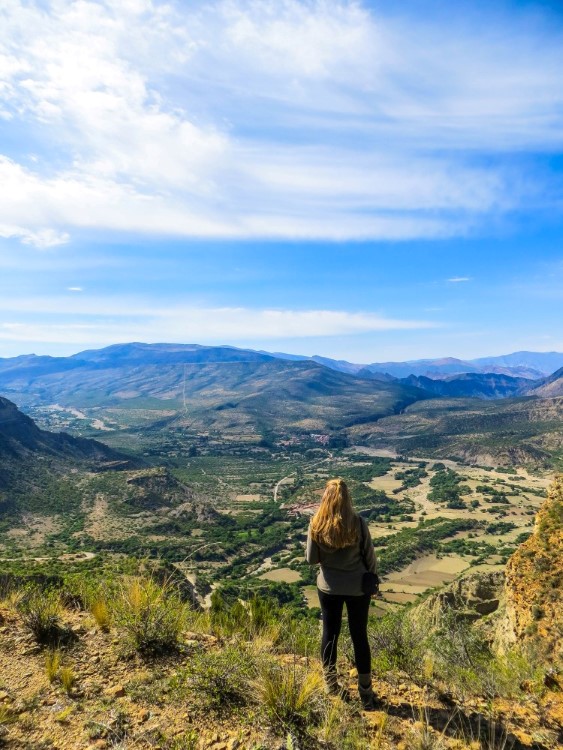
Before you dive in, it’s also worth checking out our article about what to pack for South America – a guide written after seven years of exploring the continent – as well as work out which are the best countries in South America to visit for the different interests you have , whether those are hiking, archeological sites, football or wine.
Click to navigate this article:
What should you consider before planning your South America backpacking route?
- Budget : ‘How much can you spend traveling in South America’ and ‘how much should you spend traveling in South America’ are two very different questions, and both are important. Traveling South America cheaply is possible; the cost of backpacking here is far cheaper than in most other parts of the world and it’s relatively easy to stick to a budget of $50 USD per day. My main tip would be to have a budget so that you don’t overspend but also avoid keeping the purse strings so tight that you miss out on amazing experiences. Identify what is important to you and set aside part of your budget for it before you start.
- Where you will land: This is not only important for the route you pick but also relevant when looking at flight costs and visa restrictions. Hubs such as Lima, Santiago, São Paulo and Bogota generally have the cheapest connections with countries outside of South America, as well as plenty of direct flights between these and other parts of the continent.
Argentina economy update
The Argentine economy is a huge mess at the moment, with inflation expected to hit 200% this year. Using Argentine pesos can therefore be a nightmare – and mean you lose a lot of money. The blue dollar (an unofficial exchange rate that gives you a better conversion than the official rate) is around, but if you want to avoid carrying lots of cash, you can now pay using your credit card and get an exchange rate similar to the blue dollar rate. You must choose to pay in Argentine pesos (not USD!) to secure this rate.
Both Mastercard and Visa give you what is called the MEP rate, which is almost as good as the blue dollar rate. Mastercard will charge you the official rate but refund you the money a few days later; Visa will charge you the MEP rate from the beginning.
If you do want to have some Argentine pesos for paying in cash (which I highly recommend as you will need them for some restaurants and attractions), it’s best to use Western Union, whereby you send cash to yourself using the Western Union app and then withdraw it in Argentine pesos from one of their branches in Argentina. Bear in mind, those in El Calafate and Ushuaia can run dry of notes, so it can be easiest to do this in Buenos Aires.
Additionally, you can bring USD (unmarked and untorn hundred dollar bills), which you can exchange at “cuevas” (unofficial exchange houses). These will be able to give you the blue dollar rate and any hotel owner will be able to tell you where your nearest one is. Souvenir shops in most parts of the country will be able to give you pesos in exchange for dollar bills – although they might not give you the best rate.
Avoid cash machines. Currently, the maximum withdrawal is the equivalent of $15 USD in Argentine pesos and it will cost you $10 USD in fees.
- The best time to go to South America: Remember to also think about the seasons; the best time to go to South America really depends on exactly where you’re heading. The northern countries are usually best visited in the dry season (May to September) and the southern countries in summer (October to April). Read our article for more detailed information about the best time to visit South America .
- What do you want to do: Do you want to do a five-day hike in Patagonia , learn to surf in Peru , walk the streets of Buenos Aires or dance salsa in Cartagena ? Remember to consider what is important to you to see or do, not only how much time and money you have.
- Is it dangerous to backpack in South America? No, it’s not. Travelling to South America – or any part of the world in fact – requires pre-planning and thought, so you know how to get from A to B safely and without issue. Learning Spanish before you go is helpful but not essential; what you’ll find is that many travellers follow similar South America travel routes, so you’ll quickly find and make plenty of new friends along the way.
- The best itinerary for South America: Ultimately, there is no best itinerary. What matters is that you spend your time and your money seeing destinations and having experiences that will last you a lifetime. All of the South America backpacking routes and places to visit outlined in this post have been tried and tested by myself and other backpackers, so it’s really a choice of deciding which one most appeals to your imagination.
Planning Your Trip to South America?
Save time, stress & money with a customized travel itinerary planned for you by a South America expert
What previous clients have said:
Steph’s itinerary exceeded all expectations. She provided off-the-beaten-path hikes, great restaurants and accommodations, and very helpful local contacts. Due to the weather, we had to deviate from our original plan, however, Steph quickly responded to our email during the trip with further recommendations. Her service took all the guesswork out of planning our vacation and led to the most fun and unforgettable trip we have ever had!
Ten days in South America
Very short trips to South America can be difficult. Cities and tourist attractions are far apart and fast travel (aka flying) is expensive. Good planning will help you make the most of it.
I’ve laid out one itinerary below, but you can also get inspired by the two-week itineraries for Peru and Colombia, as these can easily be adapted to a shorter duration.
Ten Days in Brazil
Brazil is huge, but this ironically, makes it a great destination for a short South American trip – let’s face it: you would never be able to see it all anyway!
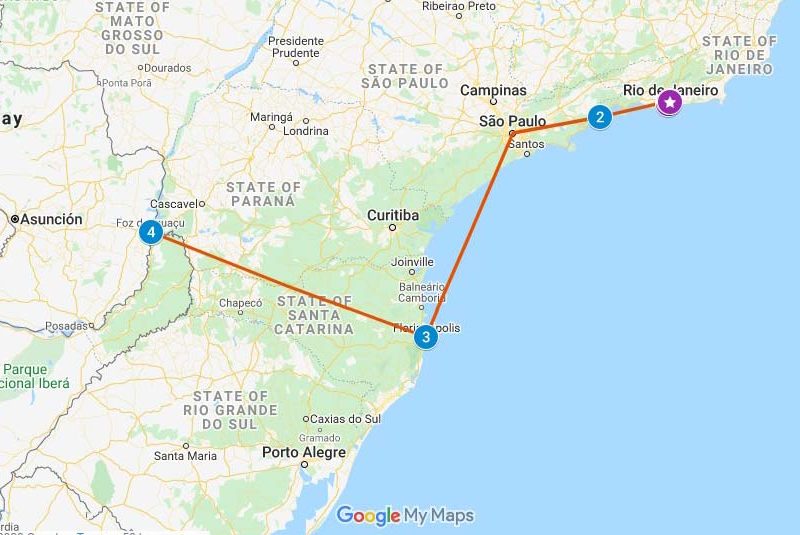
This ten-day Brazil itinerary will give you a taste of the fun, flare and beauty of this vast and extraordinary country.
Days One to Three: Start your trip in Rio de Janeiro , a city that is an absolute must-see on any Brazil trip. There is so much to do here that you will need to plan your activities in advance.
Definitely set aside some time to sun yourself on the beaches of Copacabana, Ipanema or Leblon. Hike or train up to the Christ the Redeemer statue for panoramic views of the hilly city and the glittering Atlantic Ocean below.
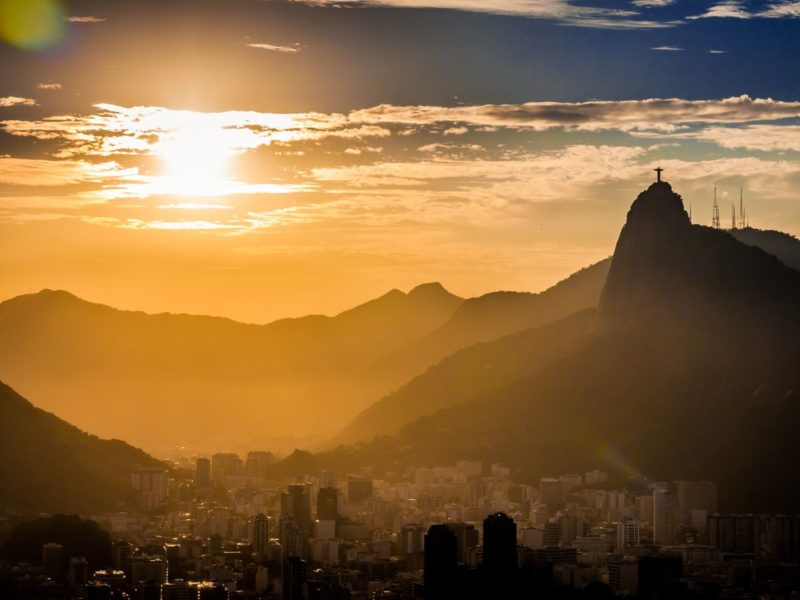
Inside the city itself, Santa Theresa is a great artistic neighbourhood to explore and Lapa is the area to experience the nightlife of Rio.
Days Four to Six: Next, take a four-hour bus to Paraty , a colonial coastal city with a laid-back atmosphere and plenty of islands only a day trip away. The old city is a UNESCO World Heritage site and is also popular amongst Brazilian holidaymakers.
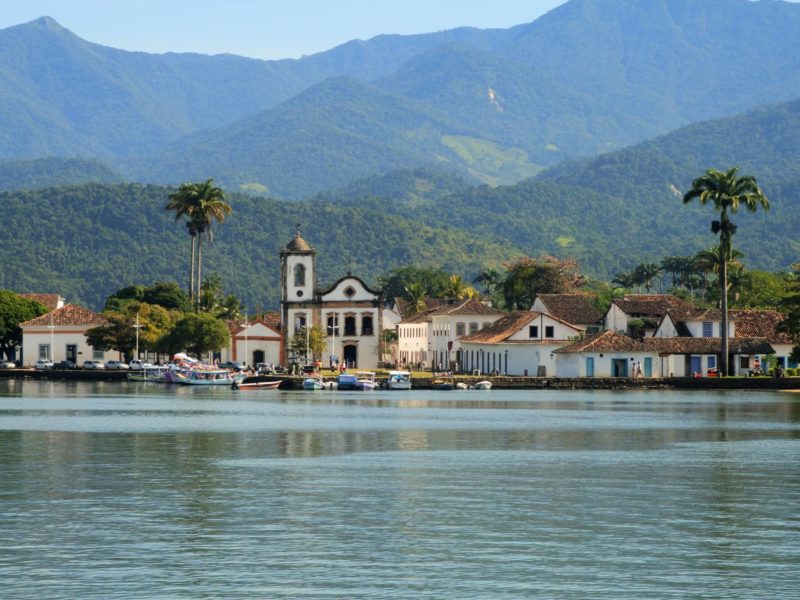
You’ll have no problem keeping yourself busy thanks to the rage of gorgeous streets, nearby waterfalls, fine restaurants and interesting boat trips.
Days Seven and Eight: Head south to Florianopolis for some relaxation. You can either take an overnight bus from Paraty or take the bus to Sao Paulo and fly from there. Once you arrive, don’t stay in Florianopolis City; instead, head straight to the island to enjoy its clean and stunning beaches.
You can easily use public transport or rent a car to explore them and the equally striking corners of this gorgeous island.
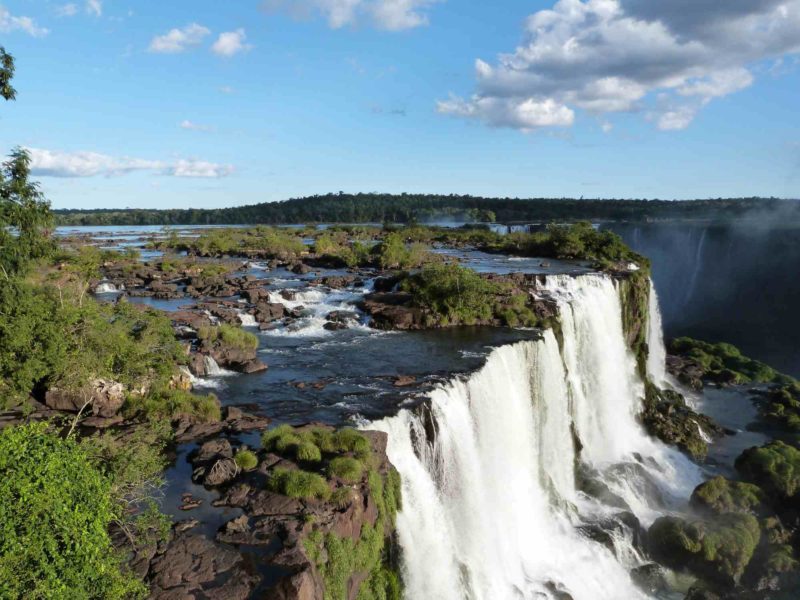
Days Nine and Ten: Your last stop is Foz do Iguacu (Iguazú Falls), an overnight bus journey from Florianopolis. Another must-see, these falls are a wonder of the natural world and are jaw-droppingly powerful.
On the border with Argentina, they can be viewed from both sides but the Brazilian side is famous for panoramic views of the entire waterfall complex, with various pathways allowing you to catch sight of all 275 falls.
The bottom line: Brazil is too vast to see on any trip that doesn’t span months, but this itinerary gives you a good snapshot of what this beautiful country has to offer.
Two weeks in South America Itinerary
While two weeks is not a lot of time for traveling in a continent as huge as South America, with some forward-thinking, you can still see a lot.
Top tip: Pick one country to explore rather than spread your time too thin. Peru and Colombia are both great places to explore in short periods of time because both are jam-packed with compelling attractions, all of which aren’t very far away from each other.
Two-week Peru Itinerary
Peru is one of the most intriguing countries to travel to in South America – it’s no surprise that it makes most travellers’ bucket lists. Between beautiful cities, fantastic food, awe-inspiring Inca ruins, and rich indigenous culture, you are bound to fall in love.
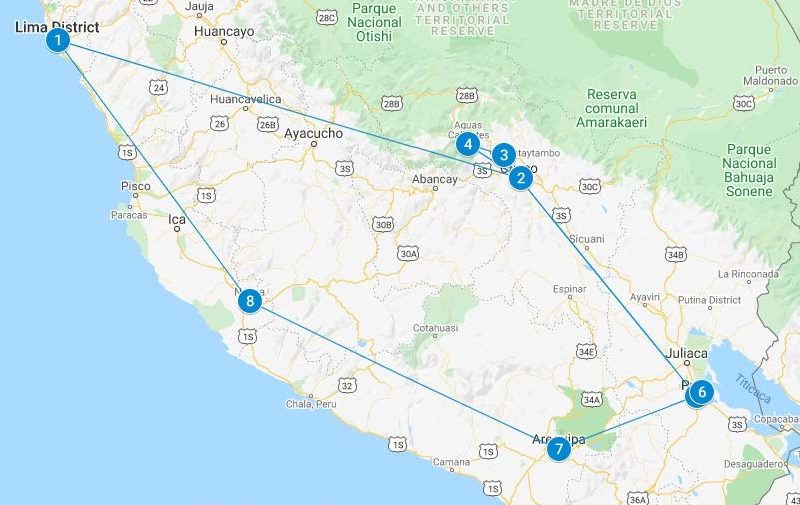
For a short trip to South America, this is definitely one of the most rewarding destinations as there are so many things to do here in Peru – in what is actually a relatively small country.
What’s more, Peru has a little for everyone: everything from culture, fine dining, ancient history and jaw-dropping scenery (not to mention, the hiking in Peru is up there with some of the best treks in the world!)
Top tip: It’s best to plan your trip in the dry season, which is May through September. This time of year is peak season in Peru but guarantees sunny days that won’t interfere with your plans.
Days One and Two: Start in Lima , the vibrant capital of Peru. Spend some time exploring the boardwalk in fancy Miraflores , the old colonial buildings in the old city centre, and the street art scene of Barranco . If you’re not on a budget, Lima is home to three of the world’s best restaurants: Cent r al , Maido and Astrid y Gastón , where you’ll modern and innovative takes on typical Peruvian dishes .
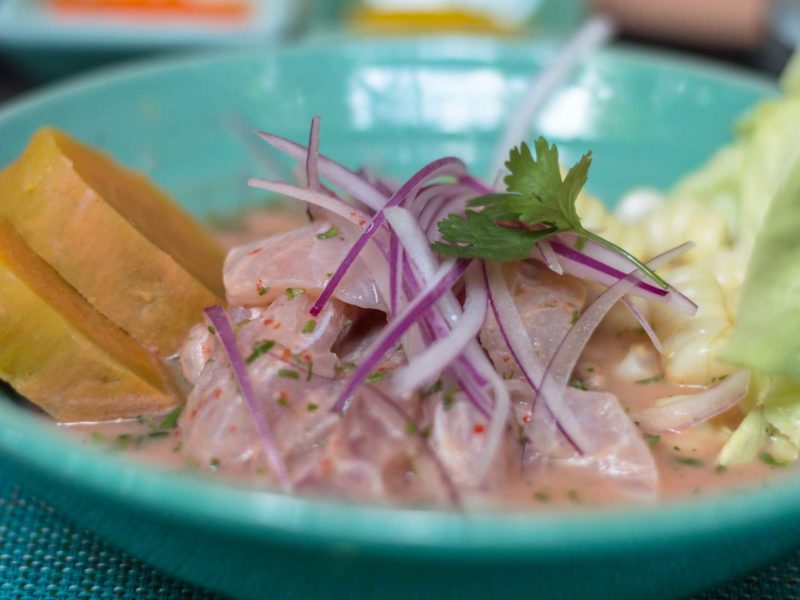
If you’re counting the pennies, try ceviche (a local dish of raw fish, lime and chilli) in Barranco and chifa (Peruvian Chinese food) anywhere.
Days Three to Five: From there, fly to Cusco , the oldest continuously inhabited city in the world. It can get pretty crowded with tourists but is definitely worth it.
Spend a day or two in a city whose history is everywhere you look thanks to the Inca (who built it) and the Spanish (who colonized it). Free walking tours are great for budgets, while souvenir shopping is not so much.
For accommodation tips, read our guide to where to stay in Cusco.
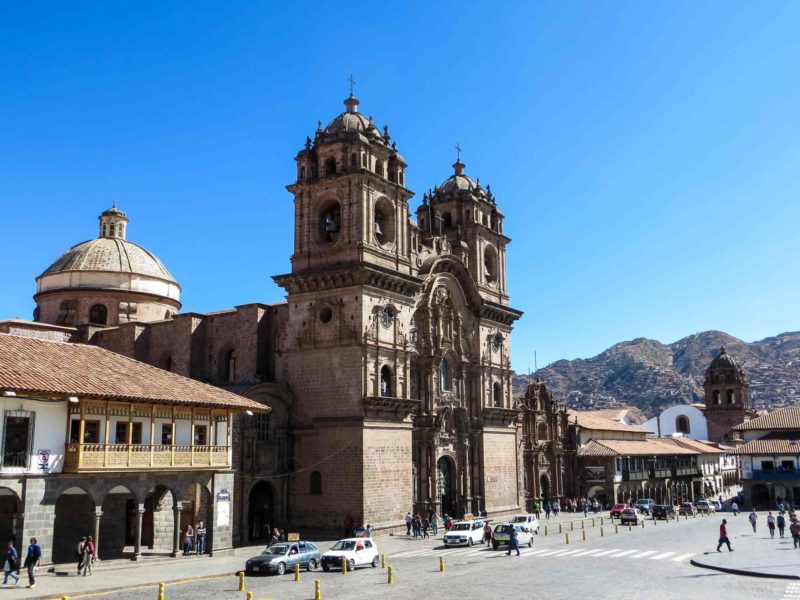
Days Six to Eight: Once you’ve acclimatized to the altitude, take a tour of the Sacred Valley , and, of course, visit Machu Picchu . The most efficient way to see the ancient Incan citadel is to take the train: it might be expensive, but it’s the fastest option for a short trip. You can stay overnight the Sacred Valley at one of its many hotels and guesthouses , too.
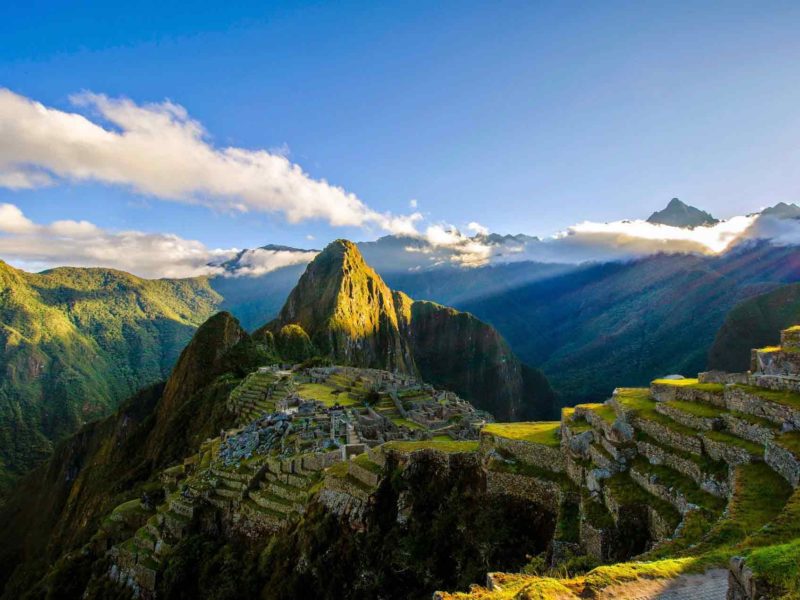
Alternatively, sign up for a two-day bus tour with an agency in Cusco or add an extra day to your itinerary and take an Inca trail hiking tour instead.
Days Nine and Ten: Take a spectacular train ride from Cusco to Puno on the shores of Lake Titicaca . Spend a day visiting the Uros floating reed islands or kayaking on what is the highest freshwater lake in the world.
Days Eleven and Twelve: Catch a bus to Arequipa , a beautiful city nestled below El Misti Volcano. Arequipa’s dazzling white and historical centre is another of Peru’s UNESCO World Heritage sites.
Days Twelve and Thirteen: Bus north up the Pacific coast to Nazca , where you can fly over the famous Nazca Lines and get back to Lima by bus in the afternoon. If you’re on a tight budget, it might be better to spend a few more days in Cusco and the surrounding areas, instead.
Day Fourteen: Get ready for the journey home and have one last plate of ceviche and a pisco sour to bid farewell to your trip South America backpacking trip.
Adapting this itinerary: If you want to make this a shorter trip, cut out Puno and Nazca, and instead head from Cusco to Arequipa and then fly back to Lima. For more details, check out our guides to visiting Machu Picchu (and the Inca Trail ), the Sacred Valley , and all things Peru . Alternatively, extend this trip with a 31-day immersive Spanish language class , which includes accommodation, the Inca Jungle trek to Machu Picchu, visits to the Sacred Valley and Lake Titicaca, plus 80 hours of small-group Spanish language classes across four and a half weeks. Use the promo code WorldlyAdventurer to get a 5% discount!
Two weeks in Colombia
Colombia is one of the best backpacking spots around. It’s cheap, beautiful and Colombians are largely extremely welcoming and friendly.
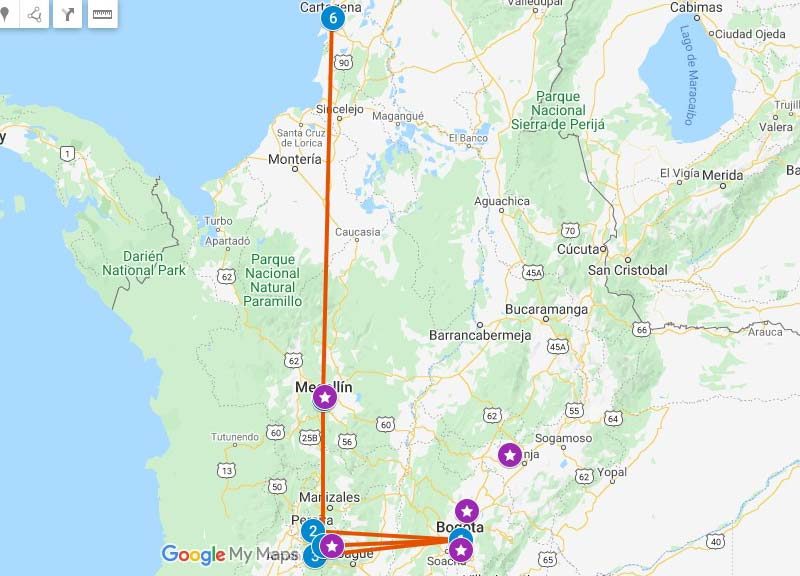
It’s up to you whether you prioritise nightlife, beaches or history but, whatever you choose, Colombia is a fantastic destination. Before you go, read our guide to the best time to travel to Colombia .
Day 1-4: Start in Bogotá . Colombia’s capital is a diverse, vibrant city filled with bright colours and a dark history. Explore the street art, old buildings, great coffee, and surprising array of brilliant restaurants in Bogota , while the world-class Museo del Oro (Gold Museum) can’t be missed.
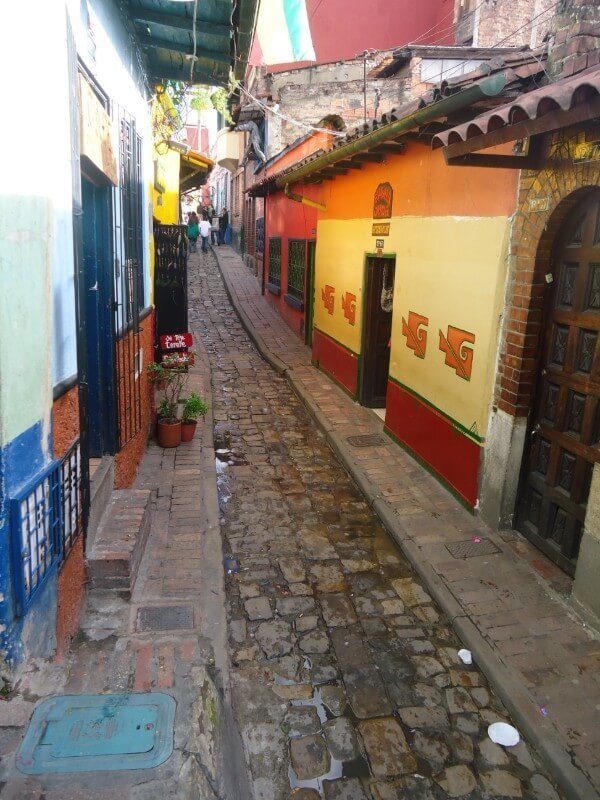
If you like to party, Bogotá boasts some of the best nightclubs in South America and day trips should hinge around Villa de Leyva, a beautiful colonial village, as well as the Salt Cathedral in Zipaquirá .
Alternatively, book yourself onto an incredible tour flying out of Bogotá to San Vicente Del Caguán visiting a part of southern Colombia that was, until recently, inaccessible for travel because of the armed conflict.
Truly adventurous travellers can join the three-day Rafting For Peace tour , where you take on the rapids of the Río Pato alongside ex-FARC militants who’ve found rafting a credible means of bringing peace to the region. Founder Steph did this and it was a truly perception-changing experience; read more in this article she wrote for CNN.
Support sustainable, responsible tourism in Colombia – and learn a tonne about the country’s chequered history along the way- by booking the Rafting for Peace tour with IMPULSE Travel Colombia and get a 5% discount by using the code WORLDLY5 at checkout.
Days Five and Six: Fly to Pereira or Armenia where you can either stay in the colourful town of Salento or in a hacienda in one of the surrounding coffee plantations.
Be sure to do a coffee tour and to play the local game of tejo , a fun traditional game that involves throwing disks at a target, with the bull’s eye being a tiny packet of gunpowder. It’s great fun.
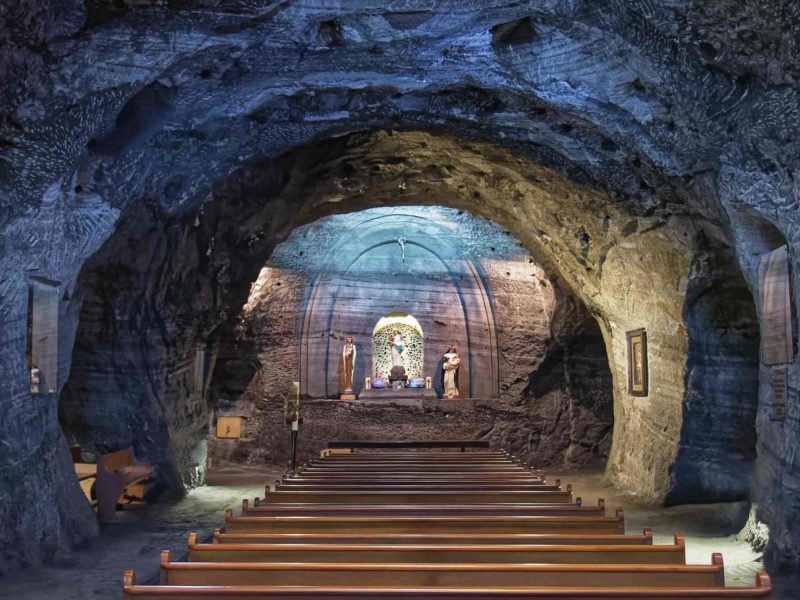
Spend a day hiking in Valle de Cocora National Par k , where you can see wax palms towering up to 60 metres above your head.
Days Seven to Nine: Fly to Medellin , a city famous for its tragic past of gangsters and cocaine. While it was once one of the most dangerous in the world, Medellin is now an innovative modern city, where the weather always feels like spring.
Explore the beautiful parks and some great museums, such as the interactive science museum, Parque Explora .
Read our guide to where to stay in Medellin for further inspiration for visiting the city.
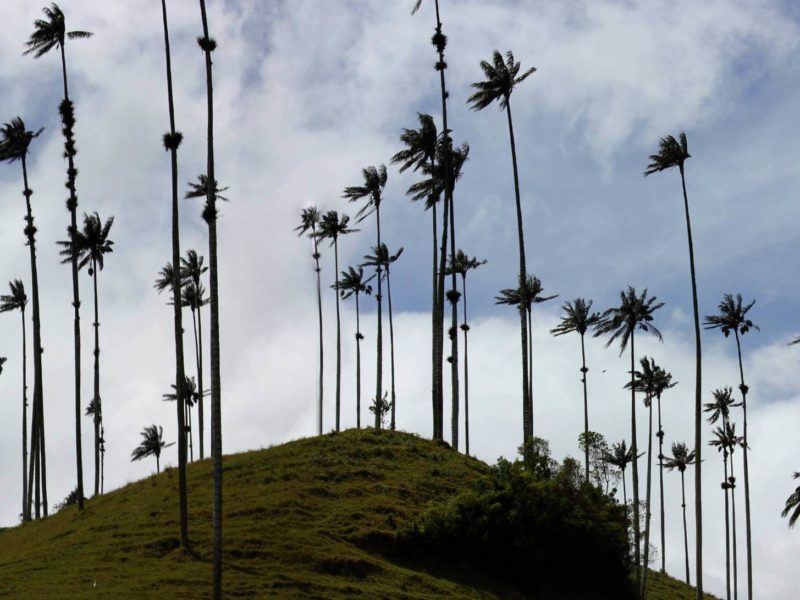
Days Ten to Fourteen: Fly up to Cartagena . The Caribbean city of Cartagena de Indias was declared a UNESCO World Heritage site for its incredible colonial old quarter.
You can spend days wandering the picturesque cobbled streets and flowering bougainvillaea. There is a lot of music and food on these busy streets, or you can take a unique tour to learn about the hidden history of Cartagena on a sustainable weaving tour with indigenous Zenú guides .
There are also several beaches and islands nearby that can be visited for a night or just a day trip from the city . We’ve also written all about our favorite places to stay in Cartagena to help you plan your time there.
Adapting this itinerary: If you haven’t had enough, or had a different trip in mind, check out what to do on the Caribbean coast in our one-month Colombia itinerary further down or explore this guide to the best places to visit in Colombia .
Two weeks in Chile
Chile is another rewarding destination to spend a two-week vacation in South America.
While it’s certainly one of the more expensive destinations on the continent, its diverse landscapes and reliable network of flights and buses make it a perfect place for a short South America trip.
And, despite protests back in 2019 and 2020, Chile is a safe and welcoming place to visit .
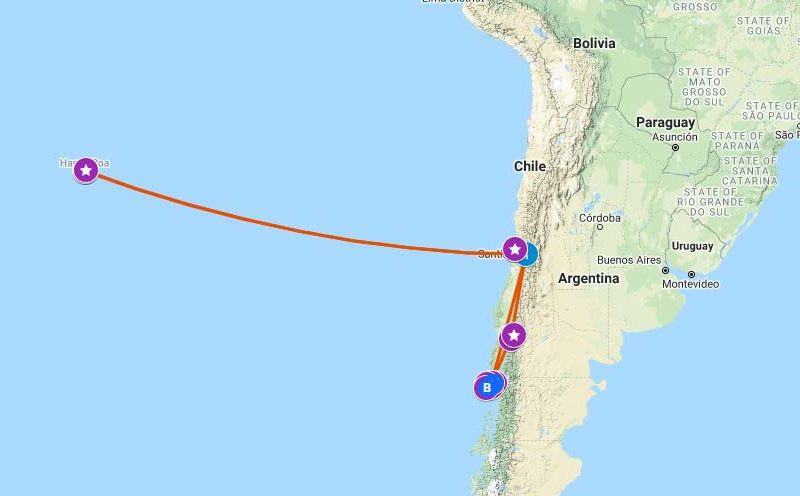
Days One to Three: Fly into Santiago , the Chilean capital city and spend a day exploring its wealth of museums about historic pre-Colombian cultures, sipping on delicious Chilean wine and getting to grips with the city’s thriving gastronomic scene in award-winning Boragó or Restaurant 040 .
Take a bus out east to the quirky, street-art daubed streets of Valparaíso , a bohemian university city cascading over a coastal hill. Take a free walking tour or graffiti tour and spend an afternoon appreciating the views from Nobel Prize-winning poet Pablo Neruda’s former residence.
Days Four to Six: Return to Santiago and take a plane six hours west across the Pacific Ocean to the fabled volcanic island, Easter Island .
Here, you can hire a car or take tours out to see the stoic moai statues that line the shore, each representing the ancestors of the local Rapanui people, as well as see the quarry from which each and every last one was carved.
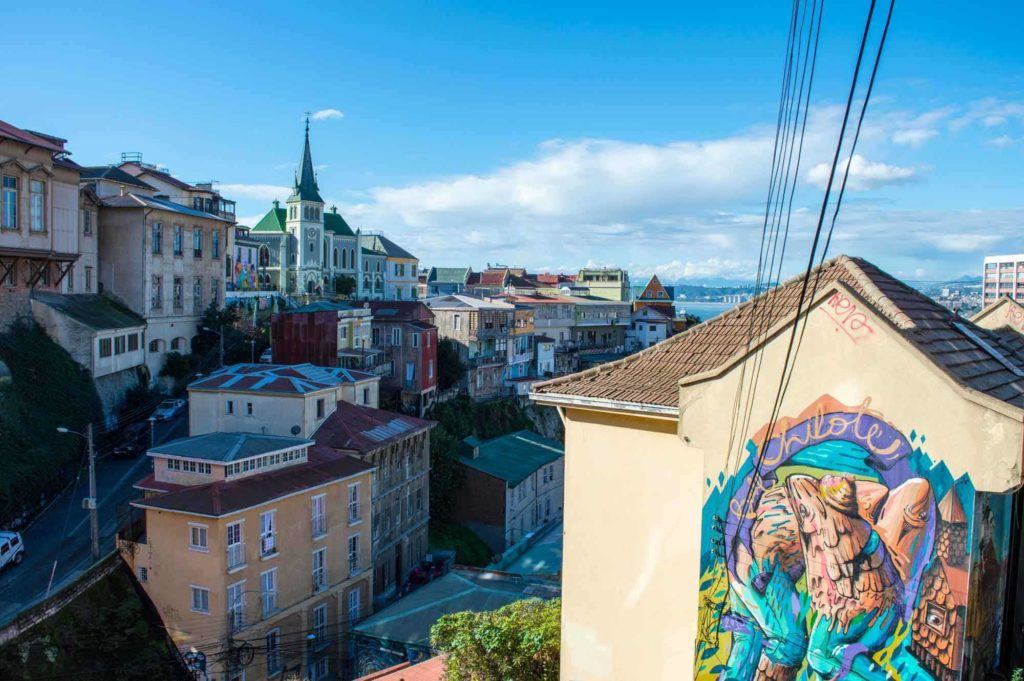
Catch a performance of Polynesian traditional dance in the main town, Hanga Roa , hike around the north-western coastline to see ruins that receive few – if any – visitors or kick back on the white sands of Anakena , a tropical beach in the island’s far north.
Stay overnight in one of Easter island’s comfortable hotels, guesthouses or campgrounds .
Days Seven to Nine: Fly back to Santiago and take an overnight bus to Pucón , southern Chile’s adventure capital. Trek up the rock-strewn and snow-dusted slopes of Volcán Villarrica before easing yourself into the hot thermal springs that dot the surrounding area.
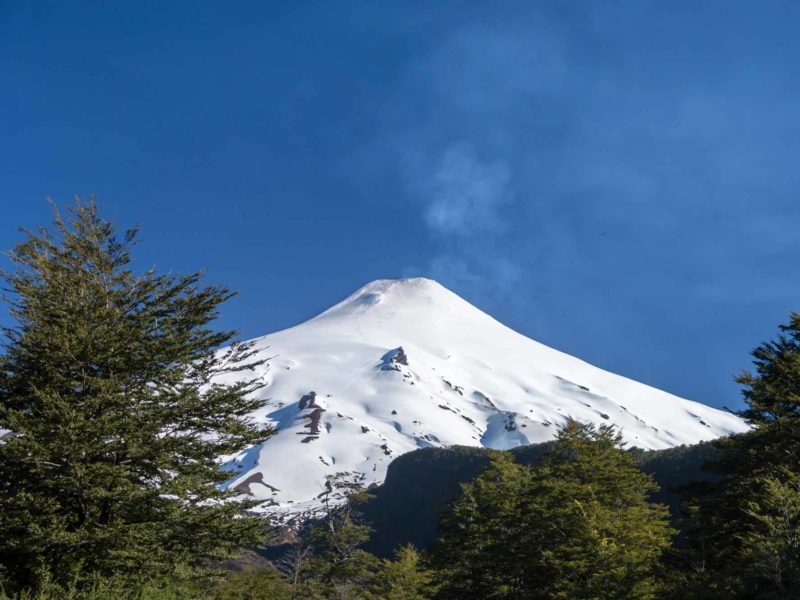
Spend a day in nearby Parque Nacional Huerquehue for glorious views of lakes and gushing waterfalls.
Days Ten to Fourteen: Hop on an overnight bus and wake up the next morning in the bustling capital of the Chiloé archipelago, Castro . Catch the city’s houses on stilts – palafitos – in the early morning light for striking photographs.
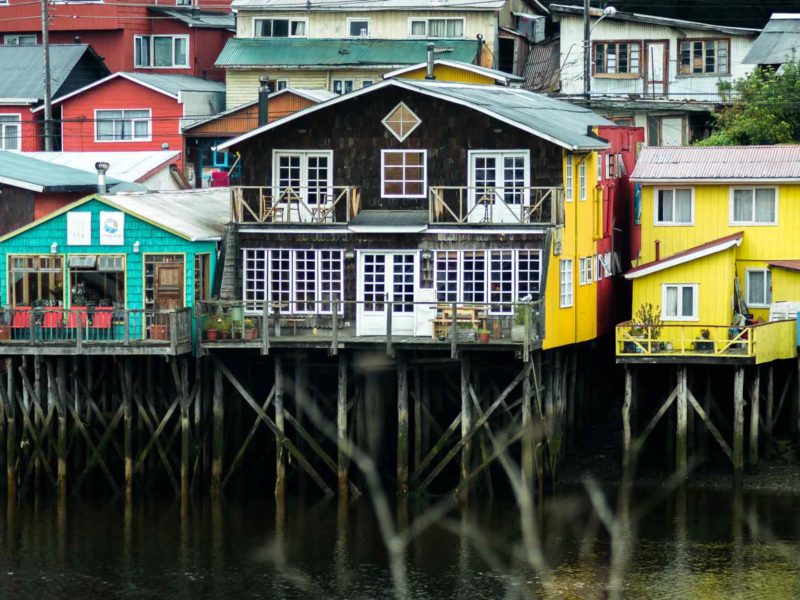
Afterwards, take rattling, old public buses between the brightly painted churches of Tenaún, Chonchi and Dalcahue and join the locals for a steaming bowl of curanto (seafood stew) in the latter’s market.
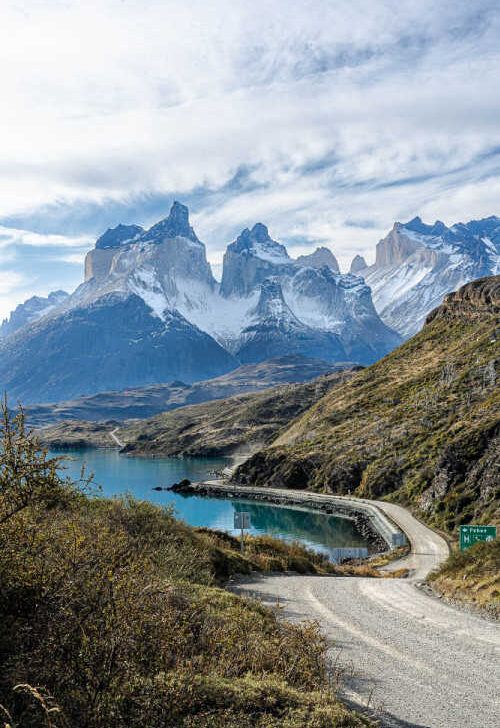
Want a custom-made Chile itinerary, but without the effort of planning it?
Get it planned by an expert (me!) with my travel itinerary planning service ; you’ll give me an overview of your ideal once-in-a-lifetime trip to Chile and/or Patagonia, and I’ll put together a custom itinerary just for you using my expert knowledge of the destination.
Alternatively, if you’re looking for a local operator to plan and book your trip, I recommend our trusted partner EcoChile Travel. They design and book tours throughout the country, such as this 12-day highlights of Southern Patagonia itinerary – and offer Worldly Adventurer readers a 5% discount on their services!
Book here to claim your discount.
Take the bus out to Parque Nacional Chiloé to hike in lush temperate rainforest and admire the island’s most startlingly empty beaches and follow the path to the Muelle de las Almas for a photograph at a cliffside side pier where you can hear the howls of the dead echo through the air.
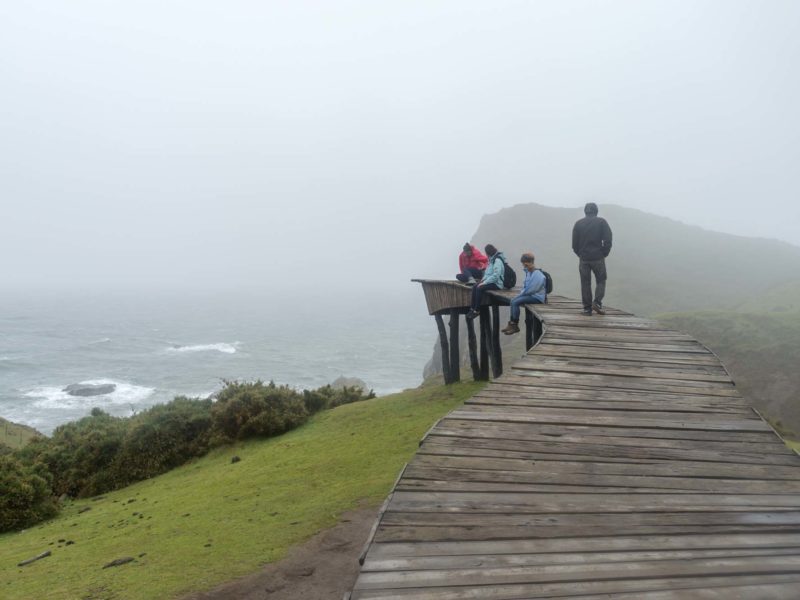
Return to Castro and fly back to Santiago .
How to adapt this itinerary: We’ve written more about Chile and how to explore this country – with plenty of alternative suggestions – in this two-week Chile itinerary and you can find itineraries to suit your budget and travel style in my brand new guidebook, Moon Chile . For the best accommodation along the way, read this guide to the best hotels in Chile .
One-month South America Backpacking Routes
My recommendation for a one-month South America itinerary is to not try and fit too much in. You don’t want to burn yourself out by trying to cram everything in, but also you need a little wiggle room for the inevitable late bus or great location that throws off your schedule.
Leave yourself a few days unplanned to use when you need a day off or you just can’t resist spending one more day somewhere.
One-month South America travel itinerary: Peru, Northern Chile and Bolivia
This is a perfect trip for seeing some of the greatest highlights of South America. This backpacking route will take you through the most beautiful and historic sites on the continent.
However, be aware that if you’re looking for a super low-budget trip, this isn’t it. Between the tickets to Machu Picchu and the many tours you will want to do in Bolivia and Chile, this is for someone who’s seeking an action-packed trip and is happy to pay for more expensive tours and transport options.
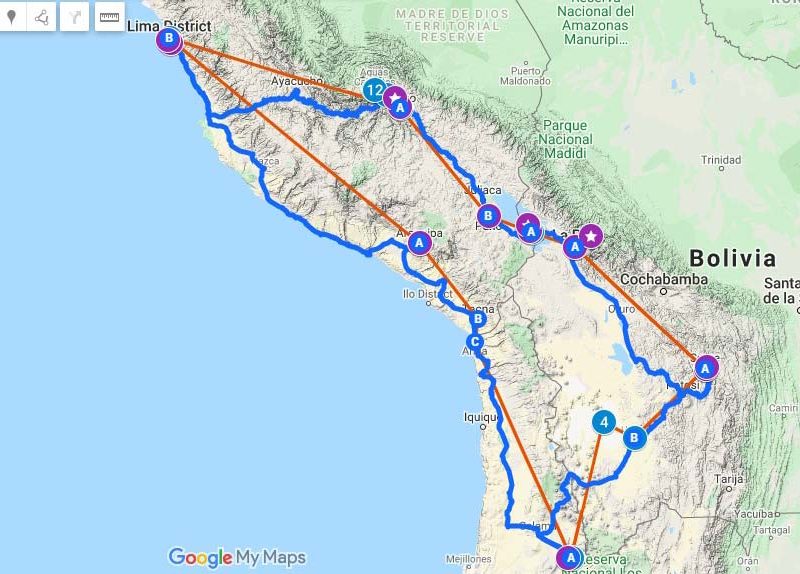
Start your trip flying into Lima , the capital of Peru. It’s both busy and huge, and possibly a little intimidating, but it’s a good introduction to traveling in South America!
Walk the beachfront of Miraflores at sunset, explore the trendy Barranco neighbourhood, and be sure to eat some ceviche, local dish of raw fish, lime and chilli.
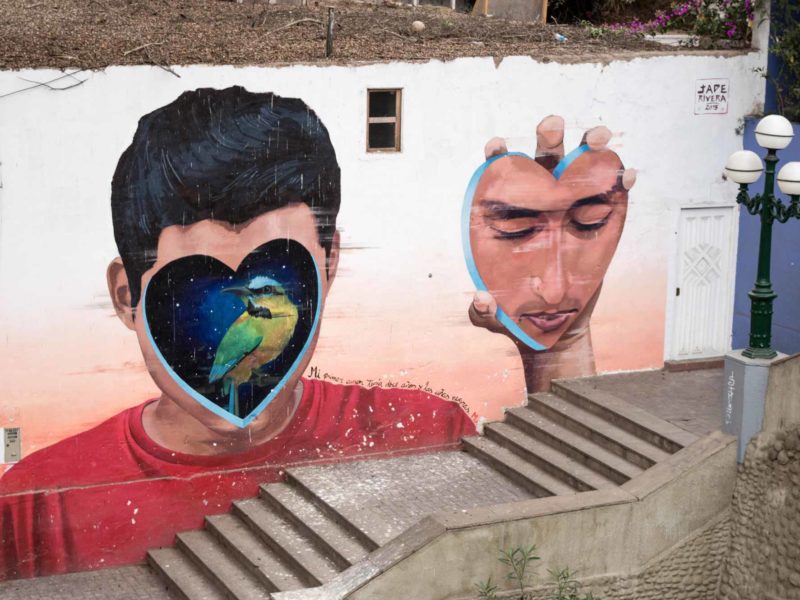
It is also worth visiting the Larco Museum to get a better understanding of Peruvian history, the beautiful 18th-century villa houses a large collection showing 5 000 years of pre-Columbian art.
From there, fly or bus it overnight to Arequipa . This beautiful colonial-style city is a UNESCO World Heritage site that sits beneath a volcano. Be sure to do a city walking tour (free, except you will have to tip your guide) to see its detailed, baroque architecture carved from white volcanic stone.
Explore what the city has to offer with our comprehensive guide to what to do in Arequipa and find a comfortable place to stay with our guide to accommodation in the city .
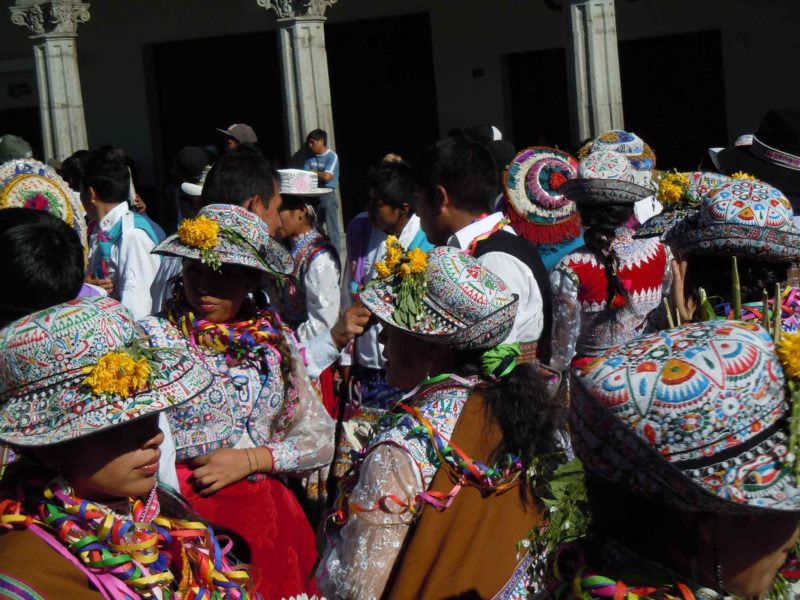
From here you can also take a two- or three-day trip to hike Colca Canyon , the second deepest canyon in the world.
Your next stop is San Pedro de Atacama , Chile. Take the morning bus from Arequipa to Tacna, cross over the border to Arica in Chile and then the overnight bus that brings you the next morning to this small desert town on the Chilean-Bolivian border.
While this place is a tourist trap of note, it’s worth visiting because it is the base for a plethora of surrounding activities. My favourites were Valle de la Luna , a truly surreal sand valley of salt and cliffs, and the stargazing tours .
You cannot understand how expansive the universe is until you see a desert night sky with absolutely no light pollution, allowing crystal clear skies with the Milky Way branching above you.
None of the tours are cheap and tour agencies will do their best to overcharge, but you can often negotiate better prices if you are in a group or booking multiple tours with one company, and it’s advisable to ask for more than one place for a quote.
Make friends in your hostel and see who’s found a good deal or is interested in the same tours you are.
San Pedro de Atacama is also the departure point for the three-day trip to the Salar de Uyuni , the picture-perfect salt flats that lie just on the other side of the border in Bolivia.
You can do a one- to four-day tour from Uyuni in Bolivia, but why not use it as a way to travel to Bolivia rather than starting and ending in the same place?
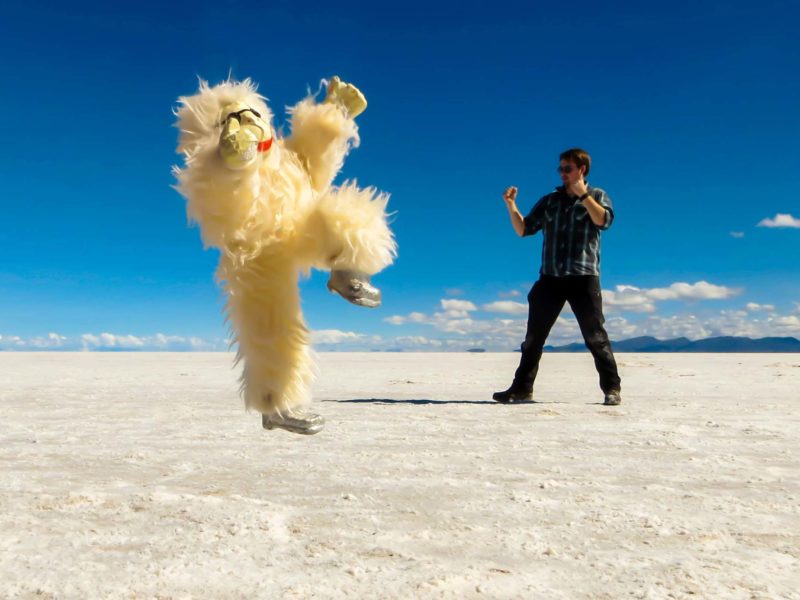
From San Pedro de Atacama, it’s a three-day tour across the border and through the blinding white plateau of the Bolivian salt flats , an experience that is definitely worth it but is far from a luxury travel experience.
The trip is entirely done in a cramped SUV-type vehicle that would have done the trip many times before you arrived and the accommodation is basic. However, the landscapes, lakes and hot springs are some of the most beautiful scenery I have seen anywhere in the world and this experience should not be skipped.
Once you make it to Salar de Uyuni , your tour will give you a day to enjoy the expansive salt flats and then take you to Uyuni before dark. Spend the night in Uyuni, get warm, have a good shower and then a bus to Sucre the next day.
This will be probably one of the worst bus rides of your life – I don’t want to lie to you, as Bolivian buses largely suck. Almost all the buses are old, with no heating, and uncomfortable seats.
Couple these with the narrow, winding rows of the Bolivian Andes, and you get quite a combination. Wear warm clothes and try not to sit at the front.
Bolivia’s capital Sucre is a colonial city with great markets and a range of cool things to do. Try and find the hilarious zebras of the zebra crossings: volunteers who dress up as zebras to direct pedestrians across the busier streets.
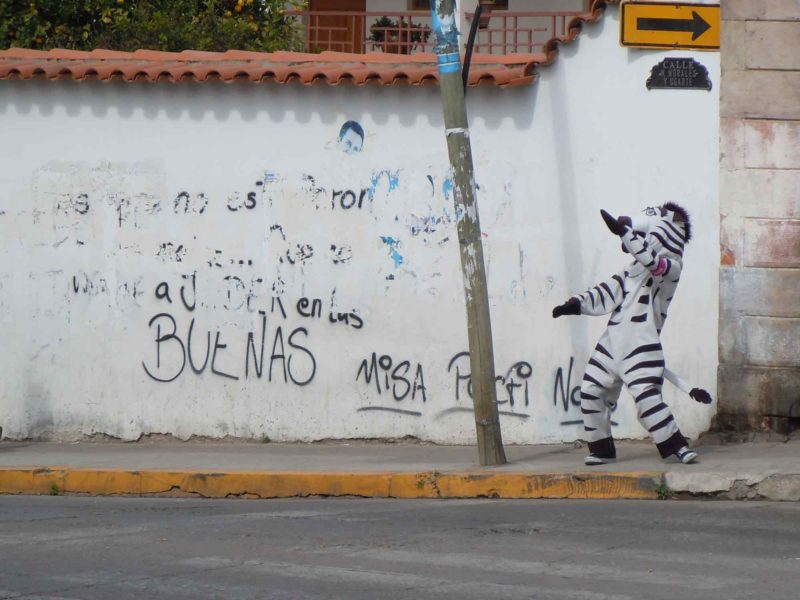
There is also a two-day hike to the Maragua Crater , where you can see the geological formations that formed around Sucre, including some truly fascinating fossilized dinosaur footprints that were exposed by an earthquake.
If you aren’t interested in the hike but want to see fossils, head over to Park Cretácico , a dinosaur museum just on the outskirts of Sucre that offers tours to the base of an entire wall of hundreds of dinosaur footprints, which was discovered accidentally in still-functioning quarry.
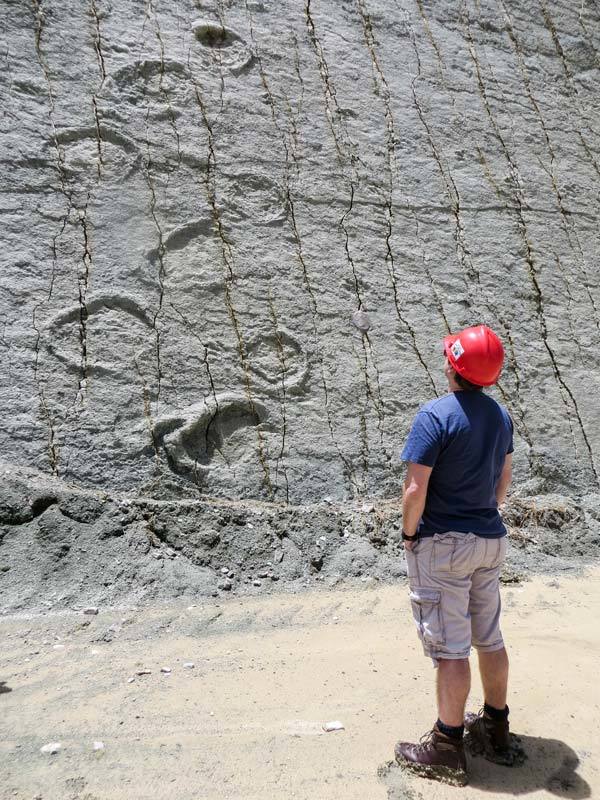
From Sucre, you can either fly or take the bus to La Paz . The capital of Bolivia, La Paz is the highest capital city in the world, sitting at 3,640m above sea level. Don’t underestimate this altitude: it will knock the wind out of you, so take it slow.
Explore the Witches Market, take a whirl at bicycling down the infamous Death Road, or just explore the endless street markets and try my favourite, api morada , a spiced purple corn drink that is drunk warm for breakfast.
Next stop is Lake Titicaca , the highest freshwater lake in the world. Copacabana is a small town on its shores and is famous for being a Catholic pilgrimage site. While the town is a bit of a tourist trap, the glittering blue lake and the expansive sunsets are definitely worth a visit.
Spend a day or two on the Isla del Sol , believed by the Incans to be the birthplace of the sun. This tranquil island has a walking path that crosses the length of it and is dotted with ruins and fishing villages.
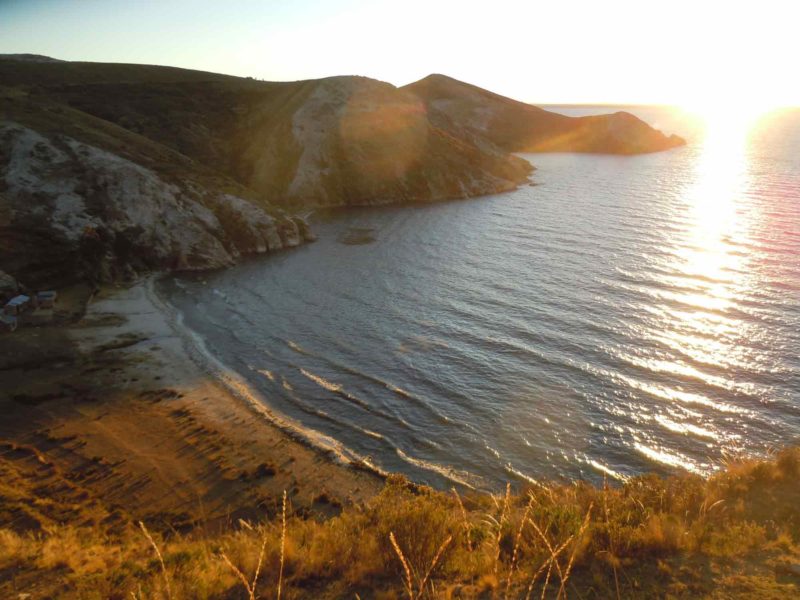
It is now time to return to Peru. Take a tourist bus from Copacabana to Cusco . You can stop along the way in Puno on the Peruvian side of Lake Titicaca to see the floating reed villages of the Uros people.
There is also an option to take a cultural bus tour from Puno where you can learn some Peruvian history and see some pre-Incan sites along the way.
There are a few companies offering the service but Inca Express are what we’d recommend.
You should be acclimated by the time you make it to Cusco , the oldest continuously inhabited city in the world. Spend a day or two here exploring the cobblestone streets and local Inca sites, like Sacsayhuaman .
Free walking tours are great for budgets, and it is a fantastic place for some souvenir shopping, but watch out for inflated tourist prices.
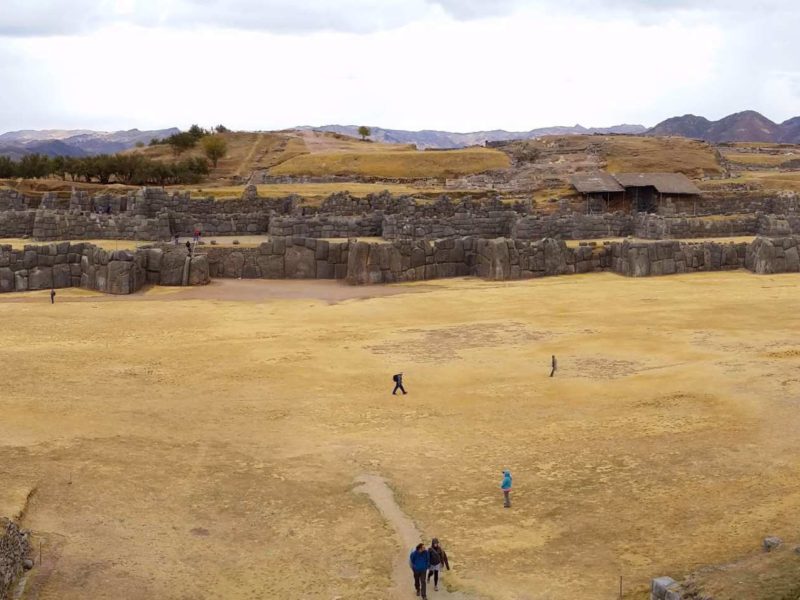
Cusco was once the capital of the Incan Empire and a large centre during Spanish colonial rule. The city has retained archaeological and architectural elements from its complex history, meaning there is so much to explore.
Be careful to leave enough time at the end of your trip to really enjoy it. You could very easily spend a week here and still have things to do every day.
When you have soaked up Cusco, head out on a tour of the Sacred Valley or stay over in Ollantaytambo . Home to a massive Incan fortress, it’s a great base for exploring the most unmissable sights and attractions in the Sacred Valley .
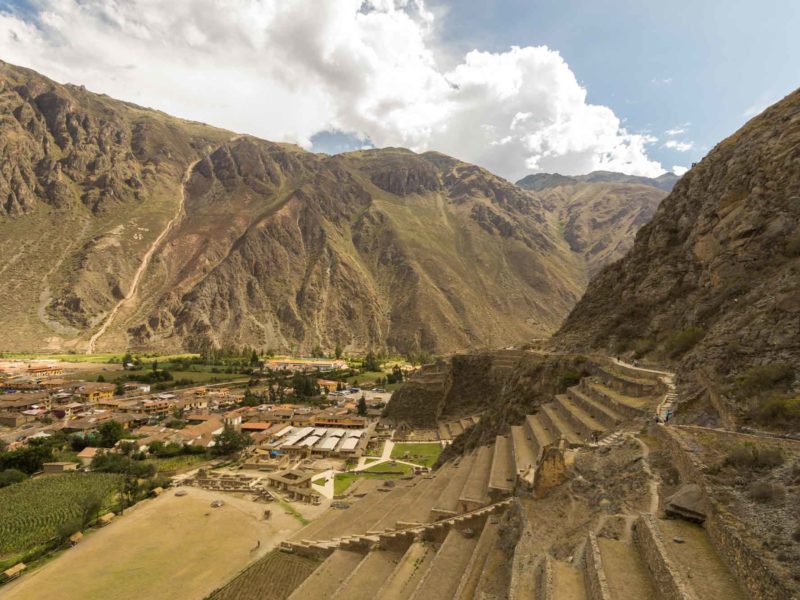
This itinerary sees you saving the best for last – the purpose for most people’s trips: Machu Picchu . The most efficient way to get to the ancient Incan citadel is to take the train.
While expensive, this method will save you a lot of time as the alternative involves multiple busses and a long walk; alternatively, consider hiking the four-day, famed Inca highway, the Inca Trail instead.
Have a day exploring the ruins and then either spend the night in the nearby town of Aguas Calientes or head back to Cusco.
The bus back to Lima is a long one, so if you can afford the flight back I would recommend it.
The bottom line: And then that’s it! It’s a lot to fit into a month but you’ll really have covered some ground and made the most of your trip thanks to this one-month South America backpacking route.
One-month South America travel itinerary: Colombia
If I had one month to travel in South America, I would choose to spend it in Colombia. It is fun, beautiful and rich in history. This trip will show you the sights and leave a lot of room for enjoying the culture of this colourful country.
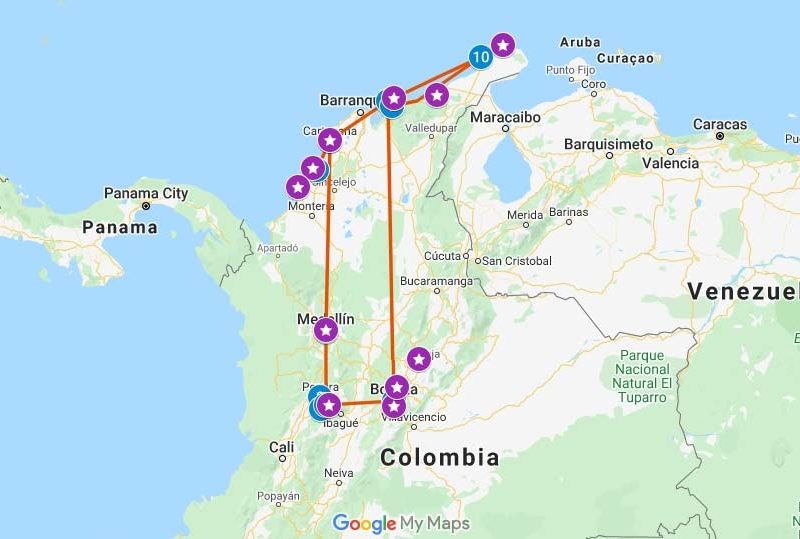
Seriously: Colombia should be on every backpacker’s South America wish list!
The two-week Colombia itinerary above can easily be extended to become one month in the country. Once you have completed this two-week route and ended up in Cartagena, spend the extra two weeks on the Caribbean coast .
The northern coast is the beautiful, picture-perfect shoreline of your beach holiday dreams. As you head east along the coast the distances between towns are small and easily crossed by local bus.
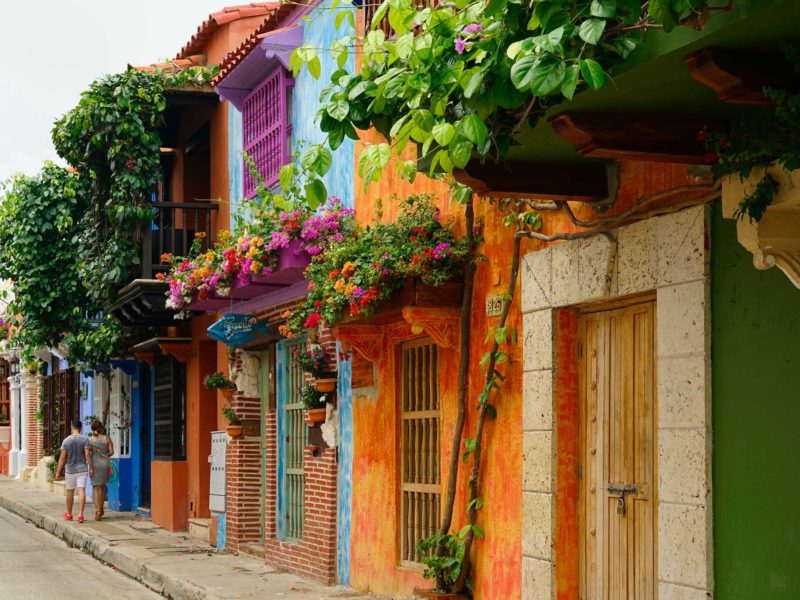
Now you’ve explored central Colombia and made it to Cartagena, you have a number of options of where to go next. If some relaxation is what you are after, consider visiting the San Bernardo islands (or one of the other attractions that are a day trip from Cartagena ).
Located only an hour’s boat ride from the mainland, this island is also home to the marvellous Casa En El Agua, an eco-hostel built as an island in a national park.
Otherwise there’s Isla Fuerte , once a hiding place for pirates and drug smugglers, which is now filled with a sleepy village, many donkeys and great open-air bars.
If relaxation doesn’t strike the right tone for you, instead, from Cartegena head east up the coast to Santa Marta for some scuba diving and to use it as a base for visiting the surrounding areas.
Just down the road is the world-famous Tayrona National Park , a gorgeous protected area where the Sierra Nevada de Santa Marta mountains meet the coast. Palm-covered coves, thick rainforest, lagoons and white sand beaches support rich biodiversity. You can hike, swim and even stay overnight in this expansive park.
If the Caribbean heat is getting to you, take a jeep from Santa Marta to the cooler climate of Minca , a jungle mountain village with some incredible hostels and waterfall hikes.
Your next stop should be Palomino , a beachfront town of cocktails and relaxation. You can tube down the river and swim offshore from long, sandy beaches.
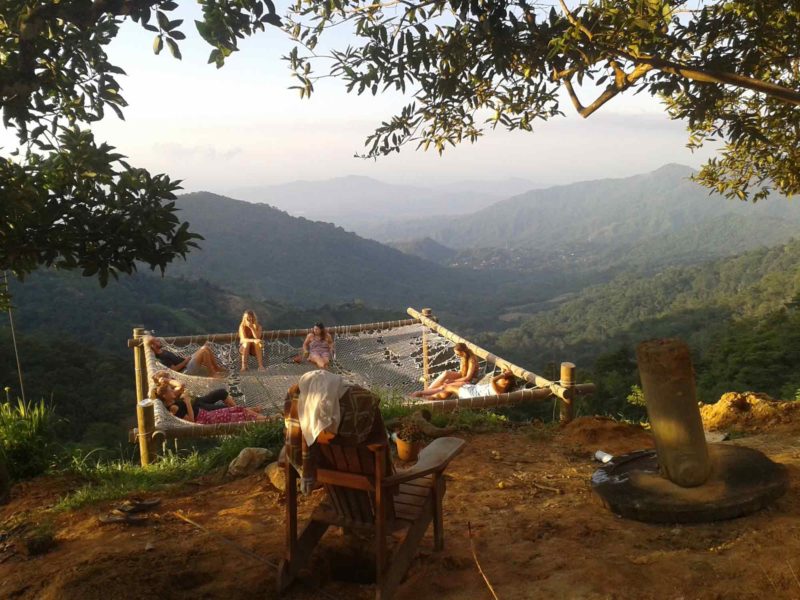
Continue on towards the desert in the North Eastern corner of Colombia. A great stop along the way is Los Flamencos Natural Reserve to see flamingos and other bird life. The last destination is Cabo de la Vela , a beach town where it almost never rains – it is in the desert after all.
Learn how to kitesurf and dine on the local langostino , a type of crayfish. Take a day trip up to Punta Gallinas , the northern tip of South America, and see the beautiful dunes of northern coast.
From there, bus back to Santa Marta and fly back to Bogota to catch your flight home.
The bottom line: This varied backpacking travel itinerary is for someone looking for a rich combination of history, beaches – and plenty of fun!
One month in Patagonia
We’re obsessed with Patagonia on this website, and we’ve got plenty of itinerary ideas to sink your teeth into.
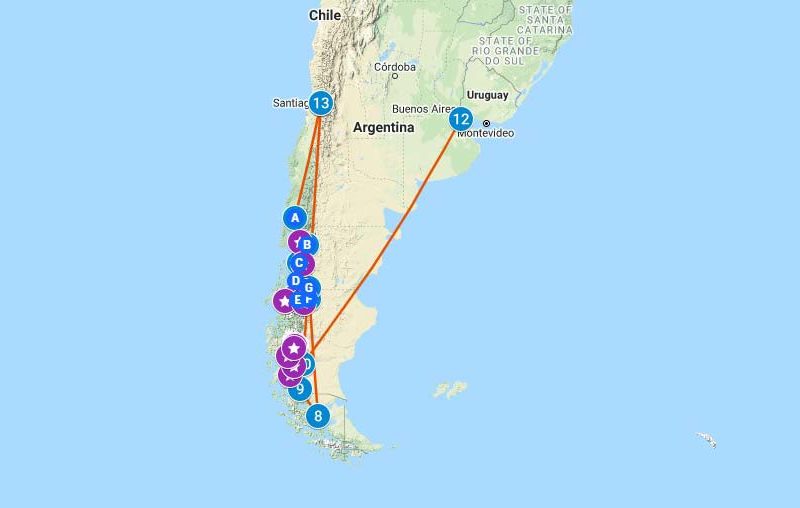
Fly from Santiago south to Puerto Montt , where you can pick up a hire car (get the low-down on driving in Patagonia before you do).
Drive south down Carretera Austral , South America’s finest road trip and stop to hike and admire the landscapes of lush, temperate rainforest, steaming volcanoes and pristine fjords.
Spend a few days trekking and relaxing in hot springs in Parque Nacional Pumalín before driving southeast to Futaleufú to experience the best white-water rafting in South America.
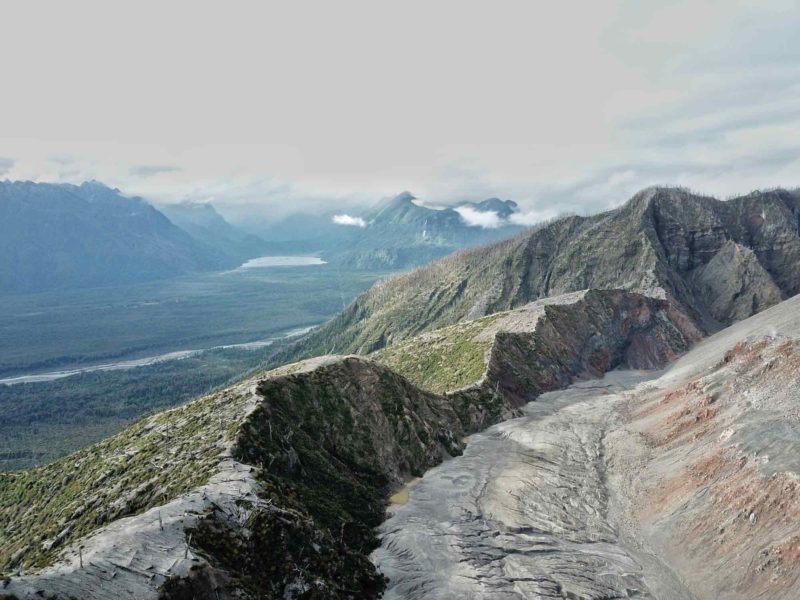
Continue the drive south via Puyuhuapi , to see the truly remarkable Queulat Hanging Glacier , and then on to Parque Nacional Cerro Castillo , for a day or even four-day traverse through one of Patagonia’s newest national parks.
Covid-19 update: You MUST make a reservation in order to visit Parque Nacional Queulat where the Queulat Hanging Glacier is located. You can do this on this website , but you will need to pay in cash (bring small notes) upon arrival. You can only enter the park between 9:00am and 14:30pm (you can stay within the park until 16.30pm) and you must bring your reservation code on your phone or printed off to show at the park entrance.
Continue on your way south, cruising along this southern highway to reach Puerto Río Tranquilo where you can take a speedboat or paddle a kayak out to the candy-cane marble caves .
Spend an extra day either ice trekking on the Exploradores Glacier or – if your budget is big enough – taking a day cruise out to the Glaciar San Rafael .
Do a loop of the mesmerizingly blue waters of Lago General Carrera , stopping at Chile Chico to visit the northern sector of Parque Nacional Patagonia , Sector Jeinimeni, for shorts hikes and outstanding scenery, before taking the boat north across the lake and return your car to Balmaceda airport.
Fly from Balmaceda to Punta Arenas and take the bus north to Puerto Natales , where you can organize your equipment and food for the four- or five-day W trek (or, if you’ve got more time, the 10-day circuit ) in Parque Nacional Torres del Paine .
If you’ve got more time, board the 32-hour TABSA ferry from Punta Arenas to Puerto Williams , the world’s southernmost settlement ($151,110 CLP ($196 USD).
It sails through the Beagle Channel and its most dazzling section: Glacier Alley – a stretch of water lined by hanging tidewater glaciers. Very expensive cruise ships normally ply this route; instead, the Yaghan ferry is the local form of transport (and priced accordingly!).
From Puerto Williams, which is home to plenty of hiking, you can cross the Beagle Channel and spend a day or two in Ushuaia before flying up to El Calafate .
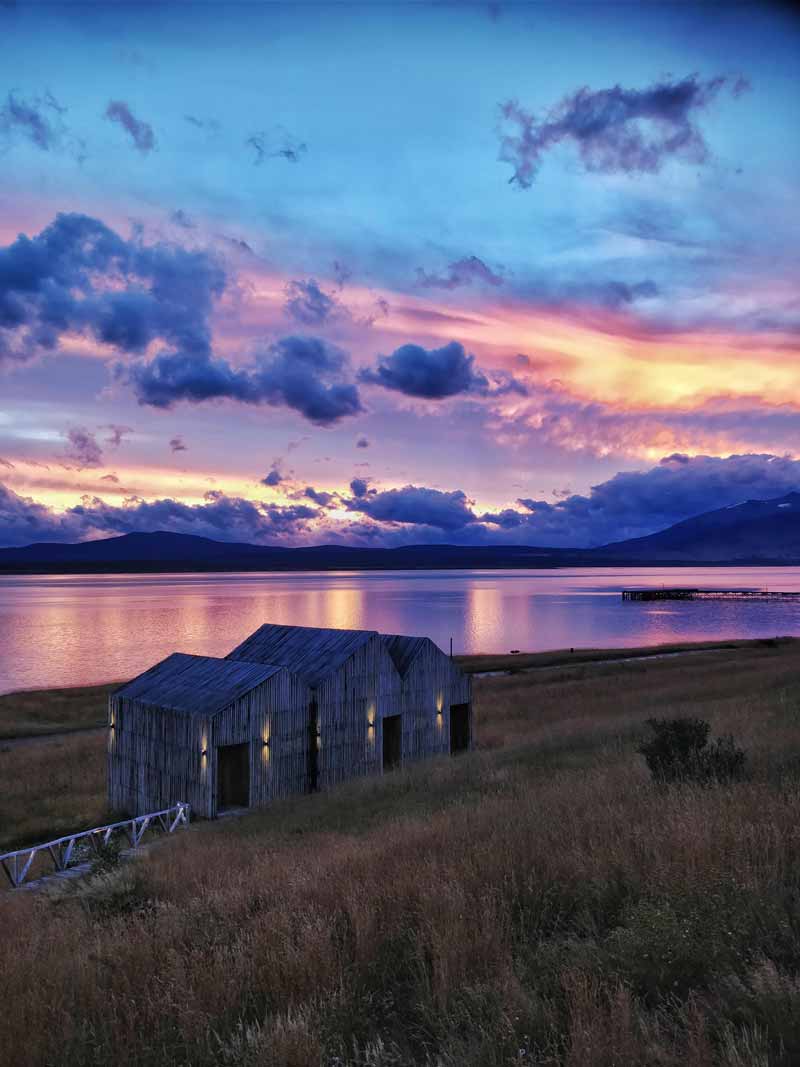
When you’ve accomplished the challenge of hiking in the remote Patagonia scenery near Puerto Natales, board a bus across the border to El Calafate , a small town in striking distance of the awe-inspiring Glacier Perito Moreno .
Take the public bus for a day tour out to the boardwalks that sit beneath the glacier’s snout.
Back in El Calafate, take a bus north to El Chaltén , Argentine Patagonia’s hiking capital.
Set on the very outskirts of Parque Nacional Los Glaciares , this town makes a great place from which to approach a range of day hikes, including to Laguna de los Tres and Laguna Torre , both of which boast splendid mountain reflections in sparkling glacial lakes.
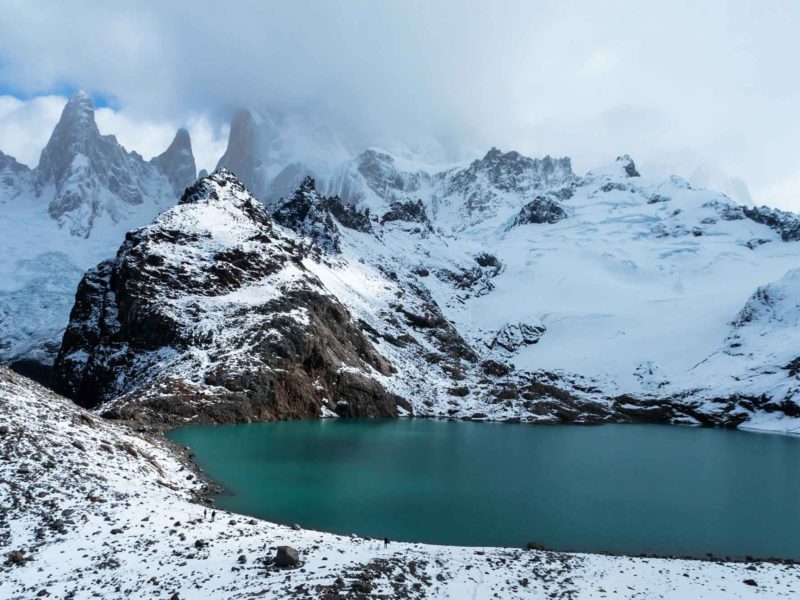
If you’ve more time and are an experienced hiker, embark on the four-day Huemul trek, which takes you in a loop of the park with stunning vistas of the Southern Patagonia Ice Field.
Return by bus to El Calafate and fly to Buenos Aires or continue on from here back to Santiago .
How to adapt this itinerary: If you’ve got less time, it is possible to explore Patagonia in just a one- or two-week vacation . For more information, we’ve gone into more depth about visiting both the Chilean and Argentine sides of this region, including the best national parks, road trip destinations and most remote areas in this comprehensive post about Patagonia backpacking itineraries . You can also add on a trip to Antarctica (check out this cruise from Ushuaia to the Antarctic Peninsula from the highly-recommended company Swoop Antarctica), just be aware the season for cruises is limited. This guide to when to visit Antarctica can help you plan.
Tuesday 12th of July 2022
Hello, Can you pls. help me with my itinerary. I will be in Bogota, Colombia from Oct. 25-27. Oct. 28 fly to Cusco, Peru for 2 days. Travel to Aguas Calientes for Macchu Picchu. Then travel to Arequipa for Calca canyon. After that I wanted to Arica, Chile. Which is the nearest city to Arica La Paz or Uyuni, Bolivia. Or which is the nearest or next to Arequipa La paz or Arica. After that I wanted to go to Rio de Janeiro, Brazil then to Iguazu falls. After that I have to be in Ushuaia by Nov. 17 or 18 for my trip to Antarctica on November 19 until November 28. I have time after my trip to Antarctica as my fly back home is Dec. 6. pls. help me to how to put together my itinerary if which route is better for me. I will appreciate your help.
Mildred Pinkihan
Steph Dyson
Thursday 21st of July 2022
Hi Mildred, I can help with trip planning if you contact me at [email protected] . You can see the prices for this service here. Steph

- X (Twitter)

8 Epic South America Itineraries – How to Spend 1 Week to 3 Months in South America
South America is a diverse continent. You can walk on glaciers, climb mountains so high they literally take your breath away or cruise on a boat through the Amazon.
The biggest difficulty when planning a trip around South America is deciding where to go. We’ve already written about the best countries to visit on this beautiful continent , but today, we want to give you more specific advice and help you plan your trip.
No matter if you’re backpacking South America, are coming over for a short vacation or are looking for a South America honeymoon itinerary, you’ve come to the right place.
We have put together not just one but a total of eight epic South America itineraries! That way, we cover all possible lengths and show you the best the continent has to offer. Plus, we have lots of practical tips for you along the way.
Table of Contents
8 Epic South America Itineraries

1 Week South America Itinerary – Peru
Putting together a South America itinerary for 1 week is not easy. If you only have a short amount of time, we highly recommend focusing on one single country.
Peru is a great destination for a short trip to South America because you can see lots of cool things in a short amount of time. Here is our suggestion:
Start your trip in Lima. Peru is famous for its colonial architecture and its fantastic restaurants. Get an introduction to Peruvian cuisine by eating ceviche or getting some of Peru’s famous street food.
We recommend spending one day in Lima , so you have time to explore the historic centre and spend some time in Miraflores, a popular seaside neighbourhood. In the centre, don’t miss the Plaza de Armas, the central square, and the nearby Saint Francis Monastery.
If you like history, you should stop by Huaca Pucllana. These ruins were left behind by the Lima civilisation, one of the many pre-Incan cultures of South America.

From Lima, you can catch a flight to Cusco. The Spaniards built this city on top of the remains of an Inca settlement, so pay attention to the pre-Columbian foundations you see while walking around.
Start exploring at the central square, where you can see a statue of Pachacuti, a former Emperor of the Inca kingdom. The nearby Cathedral and Temple of the Sun are both worth a visit.
If you have enough time, head to the Cusco Planetarium in the evening to learn about stars in the Southern hemisphere and to also understand how the Incas saw the night sky.
#3 The Sacred Valley
From Cusco, head to the Sacred Valley. You can see multiple Inca fortresses and terraces here. The ruins of Pisac are amongst the most famous and a must-see on your trip. In Pisac town, you should head to the market, where you can buy souvenirs and local handicrafts.
Try coming on a Sunday, when locals from the surrounding villages head to Pisac to sell their produce and stock up on supplies.
The UNESCO-recognised Maras salt mines are also a great stop in the Sacred Valley. The 4,500 salt pans are still used for salt production today!

#4 Machu Picchu
After visiting the Sacred Valley, spend the night in Agua Calientes. This town sits underneath Machu Picchu, so from here, you can head to the famous Inca ruins.
After the fall of the Inca Empire, Machu Picchu remained hidden until 1911. When the Incas abandoned the city, they burned the surrounding forests and trails so nobody could find its location. It wasn’t until the early 1900s that an American archaeologist stumbled upon it by accident.
The best time to visit Machu Picchu is early in the morning before a flood of tourists arrives. Tickets are limited, so make sure to buy yours well in advance.
#5 Lake Titicaca

From Machu Picchu, head to the last stop of this South America trip itinerary – Lake Titicaca. Base yourself in Puno, from where you can head to the lake.
Lake Titicaca is famous for the Uros islands. The Uro people build those floating islands out of reeds and live on top of them in houses. After you’ve visited them, stop by Taquile Island for fantastic lake views and a chance to buy some hand-knitted Peruvian textiles.
Fly home from nearby Juliaca airport, which is only around one hour from Puno.
10-Day South America Itinerary – Argentina & Brazil

If you’re looking for an itinerary for South America and have a bit more than just one week, you have many great options.
You could take the above one-week South America itinerary and expand it by flying to the Amazon from Lake Titicaca.
Or you could choose a different country. We think that Argentina and Brazil make for the best 10-day trip in South America.
#1 Buenos Aires
There are lots of things to do in Buenos Aires , so we recommend spending at least one or two days here. This will give you enough time to explore the various neighbourhoods, like Recoleta, which is famous for its architecture and gave the city its nickname “Paris of the South”. While here, stop by the cemetery.
Or head to San Telmo, which has a much more lively and bohemian feel to it compared to the more polished Recoleta. La Boca is even more colourful and worth the trip to Southern Buenos Aires.

#2 Iguazu Falls
To reach the next stop on this South America 10-day itinerary, you need to catch a plane and fly to Iguazu. The area has two airports, and since you’re coming from Buenos Aires, you’ll land on the Argentinian side.
The Iguazu Falls are the largest waterfalls in the world, consisting of a chain of more than 250 falls. You can get very close to the falls on the Argentinian side, especially if you get into a boat.
The next day, head to Brazil to explore the other side. You can’t get as close from here, but you get a fantastic overview of the falls cascading down in the middle of the jungle.
#3 Rio de Janeiro
You could easily spend all 10 days of your South America trip in Rio de Janeiro without seeing everything. But since you’re limited on time, focus on the city’s most impressive sights.
Sugarloaf Mountain is a must-visit. From here, you have the most beautiful view in all of Rio de Janeiro. You could also head up to Christ the Redeemer if you’re looking for a different perspective and want to get close to the statue.

Another highlight of Rio is the beaches. Don’t spend too much time here, though, since you’re also going to head to fantastic beaches at the next two stops. Instead, explore the city centre or head to the botanical gardens, where you can see more than 8,000 different plants.
#4 Ilha Grande
From Rio, take a bus to and ferry to Ilha Grande. Ferries leave from three towns on the mainland, but the most popular option is going from Conceição de Jacareí, as it’s closest to the island.
Ilha Grande is a jungle-covered island with perfect beaches. Come here to relax, hike and soak up lots of sunshine. Praia Lopes Mendes is one of the most popular beaches on the island, as it’s long, white and just how you imagine the perfect tropical beach.
You can come here either by boat or hike across the island. Or you catch a water taxi to one of the many other white beaches.

From Ilha Grande, take the ferry to Angra dos Reis, the town closest to Paraty, and continue by bus. Your South America itinerary for 10 days is almost coming to an end, and this is your last stop.
Paraty is famous for its white-washed houses dating back to colonial times. Walk along the cobblestone streets and admire the colourful doors and windows, or sit down for a cup of coffee in one of the many cafes.
From Paraty, you can take a boat to explore the nearby beaches. Schooners leave from the pier in the morning, and the trips usually include four stops at two different beaches and two lagoons.
From Paraty, return to Rio or head to Sao Paulo to fly home.
2 weeks in South America – Option #1 – Patagonia

If you’re wondering what to do in South America for 2 weeks, you’re in luck. We have two options for you, so you can choose between places that couldn’t be more different.
We think that two weeks is the perfect amount of time to visit Patagonia . But we also know that this is the most expensive region on the continent, so if you spend 2 weeks backpacking South America and you’re on a budget, you might prefer going to a more affordable country.
If that’s you, then scroll down and take a look at our Colombia itinerary!
But for now, let’s look into Patagonia.
#1 El Chalten
Start your South America 2-weeks itinerary in El Chalten.
The closest airport is in El Calafate, so you will either have to rent a car or take a bus to get to El Chalten . The trip takes around three hours.
While a rental car gives you more freedom, you can also easily visit Patagonia by using public transport only. We did, and we had a fantastic time.
El Chalten is known as the hiking capital of Argentinian Patagonia. The best hikes take you to the Laguna Torres or the Laguna de Los Tres. They’re both challenging, so check in with the tourist information first for more details and make sure you start early so you have enough time to return to town.

If you prefer a shorter hike, you can find lots of great trails in the area with fantastic views of the Fitz Roy mountain range.
Or you can explore points of interest in the nearby area, like Casa Madsen, a traditional ranch, or Lago del Desierto, where you can go for a boat ride.
#2 El Calafate
El Calafate is a mandatory stop on every Patagonia itinerary, as you can take a day trip to the nearby Perito Moreno glacier from here.
This glacier is the longest in Argentina, and it’s one of the most popular to visit as you can easily get close to it. The end of the glacier reaches into a lake, and wooden walkways take you close to the ice. You can also ride a boat to enjoy a unique perspective.
#3 Torres del Paine

From El Calafate, take a bus (or drive) across the Chilean border to Puerto Natales. This town is the jumping-off point for a visit to Torres del Paine national park.
This South America itinerary for 2 weeks leaves you enough time to spend a few days inside the national park. The most popular option is to hike the W , a multi-day trek that takes you past stunningly blue lagoons and fantastic mountain views.
The hike takes around four days, and you need to plan it well in advance as accommodation tends to book out. If you’re interested, make sure to check out our guide .
Another option is to book accommodation in Torres del Paine and go on day hikes from there. You can also arrange horse riding activities or explore the national park on organised tours.
#4 Punta Arenas
Punta Arenas is a convenient stop on the way down to Tierra del Fuego. The city itself has only a few points of interest , but the real highlight is nearby Isla Magdalena.

This island is home to thousands of penguins who migrate here every year to nest. You can take a boat ride from Punta Arenas and then spend some time on the island watching the penguins taking care of their offspring, going for a swim or grooming each other.
Finish your trip in Ushuaia , the world’s southernmost city.
Everything here is about being at the end of the world, and you can visit the “Museo del Fin del Mundo” (End-of-the-World museum) or take the “Tren del Fin del Mundo” (End-of-the-World train).
The train takes you into the nearby Tierra del Fuego national park, where you can go for hikes or enjoy a short walk to explore the stunning scenery.
You can also go on many day trips from Ushuaia. Check with the tour operators in town or do some research online to get more information. We recommend a trip to the lakes east of town or a boat ride down the Beagle Canal, where you have the chance to see more penguins and sea lions.
2 weeks in South America – Option #2 – Colombia

If you’re on a budget or prefer a warmer option for your 2 weeks in South America itinerary, then you should head to Colombia.
Colombia is the perfect country if you want to see tropical landscapes, find out where coffee comes from, explore the Andes and see ancient ruins. It’s also popular with backpackers, so if you’re travelling solo, you’re bound to meet other travellers here.
Start your Colombia trip in Bogota, the country’s capital. This city has a few highlights you shouldn’t miss . Therefore we recommend spending at least one full day here.
A great way to see Bogota is by joining a graffiti tour. Those tours take you past the most famous tourist attractions, but you also learn about recent history and discover lots of street art.
La Candelaria, the city’s historic centre, is worth a stop by itself. Close by, you can find the Museo del Oro, one of the best gold museums we’ve ever visited anywhere in the world.

If you still have energy, head to Monserrate to see the city from above. And if you want to spend an additional day, we recommend a day tour to see the Salt Cathedral of Zipaquira.
To get from Bogota to Salento, you either need to spend a day on buses or take a flight from Bogota to Armenia and continue from there.
Colombia might look small on the map, but the country is huge, and the Andes make travelling slow. Nevertheless, spending the time it takes to get to Salento is well worth it.
Salento is a colourful village in the coffee zone, so you can visit the nearby coffee plantation and find out how the plant is grown. Another highlight is a day trip to the nearby Cocora Valley, where you can see the highest palm trees in the world. We’ve got a guide to the Cocora Valley hike , but you can also go on a shorter walk if you have less time.
#3 Medellin

Medellin is one of the most fascinating cities in Colombia. Pablo Escobar’s home changed massively over the past years and transformed from one of the country’s most dangerous cities to one filled with innovation and hope.
One of the best places where you can witness that change is in Comuna 13. This neighbourhood was once the most dangerous one in Medellin (and likely the whole world). These days, it’s famous for its street art and escalators, which connect the steep roads.
Come here to learn more about the violence that once ravaged Medellin and to support those locals who moved away from gangs and now live off tourism.
#4 Santa Marta
From Medellin, you either need to take a long bus (around 12-15 hours) or a short flight to get to Santa Marta. To make the most out of this two-weeks South America itinerary, where your time is limited, we suggest taking a plane.
Santa Marta by itself is not the most spectacular city in Colombia. However, it has lovely beaches, an interesting gold museum, and it is a great base for trips into the surrounding area.
While here, check out the Quinta San Pedro Alejandrino to learn more about Simon Bolivar, the man who helped Colombia gain independence from Spain.

The bus from Santa Marta to Minca takes less than an hour, so you could visit this village on a day trip. We recommend staying overnight, though, so you have enough time to enjoy the countryside.
Minca is famous for the nearby waterfalls, which you can discover on a jungle hike. Bring your swimsuit to take a dip in the refreshing pools. You’ll also come across cafes and restaurants with hammocks, where you can take a break and relax.
If you love coffee, you can also take a tour through a coffee plantation.
Whatever you do, remember you’re in the jungle and bring enough insect repellent. The sandflies that live here can be vicious, so take some DEET to keep them away.
#6 Cartagena
Cartagena is one of Colombia’s most beautiful colonial cities. Nearby San Basilio de Palenque was the first town of free slaves in the Americas, and the area is great for discovering Afro-Colombian culture.
Cartagena is also fantastic if you like street food . We highly recommend taking a street food tour, but you can also explore on your own and stop at one of the many carts to try the local treats.

If you want to relax at the end of this two-weeks South America itinerary, head to a beach. Most locals consider Playa Blanca the most beautiful beach in Cartagena, and you can easily spend one or two days there relaxing in the sun.
Optional: Tayrona National Park or Lost City Hike
We know that we’ve already packed a lot into this itinerary. If you have a few more days (or if you decide to skip some of the above destinations), you could add one or two more fascinating places.
Both of them are close to Santa Marta, so they’re easy to integrate into your Colombia tour.
The Tayrona National Park is famous for its beaches. You can stay overnight, which is a fantastic experience, but if you’re short on time, you can also head here on a day trip. The best activity in Tayrona National Park is to hike along the coast, from beach to beach, and go for a swim when you need a break.

Another excellent destination is the Lost City. These ruins hide in the jungle, and you can only reach them by hiking. Going there and back takes a minimum of four days and a lot of sweat. Don’t underestimate the humidity in the jungle, it’s not unusual to get so sticky that sweat drips from your nose while you walk!
Nevertheless, the hike is stunning and takes you past hidden villages, waterfalls and mountain views. Plus, you can explore ancient ruins from the Tayrona civilisation at the end of it. If you have the time, this one is definitely worth it.
3 weeks in South America itinerary – Chile, Bolivia & Peru

This 3-week itinerary for South America focuses on Bolivia but also covers parts of Chile and Peru. You’ll spend time in the Andes, see the famous Salar de Uyuni and get to know what was once the wealthiest city in the Americas.
Just like our suggestion for a Colombia trip above, this South America travel itinerary is perfect for backpackers but can also be enjoyed by anyone else. Bolivia is one of the most affordable countries in South America , and you can get great value for your money here.
#1 San Pedro de Atacama
Start your South America in 3 weeks itinerary in the Atacama Desert. San Pedro de Atacama is the biggest town in the area, where you can base yourself to explore the desert on day trips.
The Atacama desert is famous for its unique landscapes, including high-altitude lagoons and the moon-like landscape of the Valle de la Luna. We also loved visiting the field of geysers. Trips here leave early in the morning because the geysers are only active when the outside temperatures are low. Just after sunrise is the best time to see them shoot water into the air.

Another highlight is a stargazing tour . The Atacama Desert barely has light pollution, so you can clearly see the Milky Way and learn more about our universe.
#2 Salar de Uyuni
From San Pedro de Atacama, you can take a multi-day tour to the Salar de Uyuni . Those tours cross the Bolivian Altiplano, one of the most spectacular landscapes on this planet. You can expect surreal rock formations, bright red lagoons and thousands of flamingos in a bare desert.
The trip takes you up to 4,800 metres, so make sure to spend a few days in San Pedro de Atacama to acclimatise to the altitude.
At the end of your journey, you finish in the salt flats of the Salar de Uyuni. The white landscape seems almost unreal, and it’s the perfect backdrop for taking pictures . Make sure to book a tour that takes you to Isla Incahuasi, a cactus island that rises out of the salt flats.

We deliberately included Potosi on this 3-week South America itinerary because it’s the best place to learn about colonial history.
Due to the nearby silver mines, Potosi was once the world’s most prosperous city. At the same time, that wealth came at a high price. Historians estimate that eight million indigenous and African slaves died in those mines.
And here’s the worst part – safety hasn’t improved that much since colonial times. Workers aren’t trapped underground anymore, but during the mine tour we did, the most stable shafts dated back to colonial times. Wooden beams to reinforce the tunnels are simply too expensive for most mine workers – same as masks.
Many miners die in their forties or fifties from cancer or other lung diseases or perish in terrible accidents.
Visiting Potosi is an eye-opening experience that you cannot miss.
Did you know that Sucre is the capital of Bolivia?
Everyone thinks it’s La Paz, but it’s actually Sucre, a city with white buildings and red roofs high up in the Andes. Sucre is a beautiful city , so you should spend some time wandering around its centre and enjoying the view from Mirador Recoleta.

It’s also home to many museums, so take some time to visit them.
One of the coolest attractions is on the outskirts of Sucre – the Parque Cretacico, where you can see real dinosaur footprints.
Getting from Sucre to La Paz isn’t the easiest trip. You need to either catch a plane or take an overnight bus. The bus is, of course, better for anyone who’s backpacking Bolivia on a budget, but it’s much slower and less comfortable than the flight.
If you do decide to go by bus, bring a warm blanket. Even if the bus has heating, there’s no guarantee the driver is going to turn it on and it gets below freezing in the Andes at night!
The bus ride is well worth it to get to La Paz, the largest city in Bolivia. We recommend joining a walking tour to discover the city centre and the markets of La Paz . Another alternative is to go on a food tour to get to know Bolivian food and try some dishes you haven’t had yet.
#6 Isla del Sol

Isla del Sol is the perfect location to dive closer into Bolivian culture. This island in Lake Titicaca is known for its villages and terraced hills. Spend your days relaxing in the sun, hiking or discovering some small pre-Columbian ruins.
It’s a good idea to stay overnight on the island to fully soak up the atmosphere and have as much time as possible to explore.
Your last stop on this South America 3-week itinerary takes you across the border into Peru.
Puno is a town on the shores of Lake Titicaca and an excellent base for visiting the Peruvian side of this lake. Even though you’ve already been to Isla del Sol, you’ll find Puno very different.
From here, you can visit the Floating Islands of the Uros. These reed islands are strong enough to carry houses, and the Uro people use the same reeds to make boats and houses. Around 1,300 people still live on these islands.
From Puno, you can fly home by going to Juliaca airport, which is only one hour away.
1-month itinerary for South America – Peru & Ecuador

Ecuador is an amazing destination on its own, but if you have a whole month, we recommend combining it with a trip to Peru.
This South America itinerary for 1 month will take you from Lima to Quito, passing through the Andes, spending time at the sea and discovering pre-Inca ruins. You can search for hummingbirds in the cloud forest, swim in waterfalls and explore colonial cities.
If you’re backpacking through South America, you’ll be pleased to know that you can easily do this trip on a budget. You can find inexpensive accommodation, food and activities in all of the places below.
At the same time, you can also transform this South America 1-month itinerary into a more comfortable journey by staying at better hotels and using private transport and shuttles.
Start your trip in Lima, the capital of Peru. The city is famous for its colonial centre, coastline and fantastic restaurants.
The must-try Peruvian dish is ceviche, which consists of raw fish cured in lime or lemon juice. The acids in the juice chemically cook the fish, turning it into a delicious delicacy you shouldn’t miss.
The neighbourhoods of Miraflores and Barranco are famous for their restaurants, but you also shouldn’t miss the city centre. Personally, I loved visiting the Monasterio de San Francisco, a monastery dating back to colonial times.

If you’re interested in history, visit the Huaca Pucllana to learn about the Lima civilisation. Or go on a day trip to Caral to see ruins as old as the Egyptian pyramids.
In the evening, head to the Parque de la Reserva in the evening to see the fountain show.
One day in Lima is great for seeing the highlights of the city, but if you have four weeks in South America, we recommend spending a bit more time. Plan for two or maybe even three days in Lima, so you have time to take it all in.
Huaraz is the base for a trip to the nearby Huascaran National Park. If you want to see snow-covered mountains and turquoise lagoons, you’ve come to the right place.
The most famous hike in the National Park takes you to Laguna 69, but you’ll need a few days of acclimatisation to get used to the altitude. While you’re here, we suggest going on different hikes or day trips to the mountains.
If you’re interested, make sure to visit the ruins of Chavin de Huantar. This civilisation might be 3,000 years old, but it was once so significant that it influenced all Andean cultures that came later.
#3 Trujillo

It’s time to leave the mountains and get back to the coast.
Trujillo is famous for its pre-Colombian ruins, and the highlights are visits to Chan Chan as well as the Huaca de la Luna y Huaca del Sol. The latter are particularly impressive for their colourful paintings, which have been preserved over the centuries.
Besides learning about the many civilisations that inhabited South America, Trujillo is also a great place to take it easy. Stroll around the central square, the Plaza de Armas, or head to Huanchaco to learn how to surf.
Some say that the reed boats made here on the beach inspired modern surfing, so try to get a ride on one of them if you can.
Mancora is a beach town that makes for a convenient stop on the way towards Ecuador. Come here to relax by the beach and enjoy ceviche in the evening.
If you’re getting tired of doing nothing, take a tour to see wildlife. From July to October, you can go whale watching, and all year long, you can go looking for green turtles.
#5 Guayaquil

Most travellers visit Guayaquil to then catch a plane to the Galapagos Islands , but there is a surprising amount of things to do in this coastal city.
Spend a full day here to climb to the top of Cerro Santa Ana, walk along the Malecon 2000 and explore the art galleries in Las Peñas.
If you still have energy, you should head to Santay Island, where you can stroll on boardwalks through a mangrove swamp and discover wildlife along the way.
Visiting Cuenca is one of the best things to do in Ecuador . The historic centre is a UNESCO world heritage site worth seeing for its colonial buildings.
Once you’ve explored the Old Town, book a trip to Las Cajas National Park. At lower altitudes, you’ll come across meadows filled with llamas and alpacas.

Once you go up higher into the Andes, you can then see high-altitude lakes, otherworldly forests and strange-looking landscapes. Even if you take it slow (you’ve just arrived from sea level, so it takes a while to get used to the altitude), you’ll be able to visit impressive viewpoints.
If you’ve ever seen a photo of someone sitting on a swing high above the jungle, you’ve probably seen a picture of Baños. This town is the next stop on our South America 4-week itinerary.
Besides taking cool pictures, you can hike or enjoy many other outdoor adventures in Baños. Rafting, canyoning, rock climbing, all those are options.
Once you’ve had enough of the outdoors, relax by soaking in one of the many hot springs.
Ecuador’s capital, Quito, is the highest capital city in the world. It’s also located next to the equator.
You can find lots of things to do in Quito , so you should plan to stay for a few days. Start by exploring the Old Town and visiting some of the churches. If you’re here on a Tuesday, check out the Changing of the Guard in front of the governmental palace.

Next, head to the equator in Mitad del Mundo. The exact location of the equator is a bit unclear. You can visit a monument at the spot where the first expedition marked the equator.
Close by, you can also visit the Museo Intiñan, which claims to be at the site of the “real” equator.
Whichever one is the actual one, both are cool to visit. Take pictures on both lines, and then you might have at least one that’s in the correct place.
Mindo is so close to Quito that you could visit on a day trip.
It’s much more fun to stay overnight, though, so if you have enough time left in this 1-month South America itinerary, base yourself in Mindo for a day or two.

Mindo is located in the Cloud Forest and is famous for its biodiversity. You can spot many butterflies and hummingbirds at the Butterfly Garden and learn about the cultivation of chocolate.
Mindo is also a perfect base for outdoor activities, like ziplining, hiking to waterfalls and tubing.
2 months in South America itinerary – Buenos Aires to Lima

If you’ve got two months in South America, you can see a decent portion of the continent. We’ve put together a sample itinerary for you, which we think covers some of the best places to visit, but don’t be afraid to mix it up.
You could cut the beginning short and head to Colombia instead. Or you could add in some time to visit the Amazon or Patagonia. It’s up to you to decide which areas of South America you like best.
Start your South America 2-month itinerary in Buenos Aires . The Argentinian capital carries the nickname “Paris of the South”, and while walking through Recoleta, you can certainly see a resemblance in the architecture and atmosphere.
The cemetery of La Recoleta, with its many mausoleums, is one of the most famous sights here. You should also head to La Boca and San Telmo, two of the most colourful and intriguing neighbourhoods.
In the evening, head to a steak house to try the famous Argentinian meat and watch a tango show afterwards.

From Buenos Aires, catch a plane to Iguazu Falls. Plan to spend at least two days here, so you can both see the Argentinian and Brazilian sides.
You can cross the border into Brazil on a day trip and get a different perspective on the other side. While you can get very close to the water in Argentina, you’ll have a nicer view of the falls in Brazil.
The easiest way to get to Salta is by taking another plane.
If you’re backpacking in South America and prefer to cross as much distance overland without flying, you could also head into Paraguay (we especially liked the Jesuit Missions near Encarnacion , a fantastic UNESCO world heritage site), cross the border back into Argentina and then take a bus.
The bus ride is long. It’ll likely be an overnight bus, so you won’t lose too much time, but you’ll arrive in Salta exhausted.
No matter how you get there, Salta is the perfect base for a trip into the Quebrada de Humahuaca . Expect charming villages, multi-coloured mountains and ruins of a pre-Incan civilisation.
#4 San Pedro de Atacama

You could easily spend a week in San Pedro de Atacama without getting bored. Whether you head to the high-altitude lagoons, watch the flamingos or see the sunset over the Vallee de la Luna, you’ll have plenty of things to do .
If you don’t mind getting up early, take a geyser tour. The natural wonder is only active in the first hours of the morning.
Another highlight is an astronomy tour. You’ll rarely get to a place as dark as the Atacama Desert, so you can easily see the milky way from here.
Your trip to Uyuni will be one of the highlights of your 2-month itinerary through South America. It’s a multi-day journey to get to the famous salt flats. You’ll come across brightly coloured lagoons and see many flamingos along the way.
With a bit of luck, you also get to sleep in a salt hotel before you finally reach the famous Salar de Uyuni . Spend time taking pictures, visit the mysterious cactus island and head to the train graveyard once you’ve arrived.
#6 Potosi & Sucre

In the South Bolivian Andes, you can find two towns worth visiting.
The first one is Potosi , where you should learn about South America’s history in the silver mines. The next one is Sucre , the white city which is actually the capital of Bolivia.
Both cities have stunning colonial architecture and fantastic churches you should see. In Potosi, make sure to head to the Casa de la Moneda, the former national mint of Bolivia.
In Sucre, make sure to visit the dinosaur footprints, which you can find just outside the city. Their sight is awe-inspiring, and how often can you say that you’ve seen footsteps that are more than 65 million years old?
To get to La Paz, you either need to fly or take an overnight bus from Sucre.
While La Paz isn’t the capital of Bolivia, it is the seat of its government and one of the biggest cities in the country. Join a walking tour to explore the city centre or go on a food tour to sample some dishes of Bolivian cuisine you’ve never heard of.

La Paz also features fantastic markets , which you should explore while you’re here. The most famous one is the Witches’ Market, but even the regular food markets offer great sights, like bags of dehydrated potatoes.
#8 Lake Titicaca
Your next stop should be Lake Titicaca. The highest navigable lake in the world has multiple points of interest worth stopping for.
The first one is Isla del Sol, on the Bolivian side. Stay overnight on this island, go for walks between agricultural terraces, explore some ancient ruins, and relax in the sun.
On the Peruvian side, you can base yourself in Puno, from where you can explore Taquile Island or visit the floating islands of the Uro people.

#9 Cusco & the Sacred Valley
From Lake Titicaca, cross the Peruvian Altiplano and head to Cusco. Cusco is an excellent stop for seeing the remains of the Inca cities merged with buildings from colonial times.
From here, head to the Sacred Valley to discover Inca fortresses and terraces, lively markets and the famous Maras salt mines.
#10 Machu Picchu
To get to Machu Picchu, you need to take the train to Aguas Calientes. Alternatively, you could also hike the Inca Trail, but make sure to book your trip well in advance as it books out very early!
Machu Picchu is the most famous Inca ruin. This settlement remained undiscovered for centuries, which is why it’s one of the best-preserved sites. Remember to book your ticket and train ride before your start this trip so you’re guaranteed your visit.
#11 Arequipa

Arequipa is a charming city halfway to the coast. Explore the historic centre, and make sure to stop by the Santa Catalina Monastery, a large complex with a fantastic cafe.
Depending on how much time you have left for this South America itinerary for 2 months, you can head to the Colca Canyon. The hike here takes two or three days, and you get fantastic views along the way with the chance to see a condor.

The Nazca lines are amongst the most famous sights in Peru .
Those lines, which are best observed from a plane , are around 2,000 years old and likely date back to the Nasca people. This civilisation lived around present-day Nazca, where you can also visit more of their ruins.
#13 Paracas
From Nazca, head along the coast to Paracas . The nearby Islas Ballestas are also called the “poor man’s Galapagos” because you can see sea lions, penguins and many birds here.
In fact, there are so many birds that countries once fought a war about the bird poo on those islands, which is a valuable fertiliser!

After you’ve seen the islands, head to the Paracas Peninsula and discover the national park here, with its brightly coloured beaches and remains of the Paracas civilisation.
This South America backpacking route for 2 months finishes in Lima. You’ll need at least one day in Lima to see the major sights, but it’s great if you have more time so you can properly explore the city .
Lima has a great colonial centre, and it’s also the perfect place to try Peruvian food . Head to Miraflores, a neighbourhood with great restaurants and a fantastic seaside walk, or explore colourful Barranco.
If you want to learn more about the history of South America, we suggest heading to Caral on a day trip , one of the oldest settlements on the continent. The ruins are as ancient as the oldest pyramids in Egypt!
3 months in South America itinerary – Rio de Janeiro to Bogota

Do you want to travel around South America for three months? Then we’ve got an itinerary for the ultimate backpacking trip through South America! You’ll start in Rio de Janeiro, cross the continent and then head up along the Pacific Coast from Lima to Bogota.
This 3-month South America itinerary includes three flights, but besides that, you’re mostly moving by bus (though there is the option of cutting it short in Colombia if you don’t want to spend too much time on buses).
#1 Rio de Janeiro to Sao Paulo
Start your trip in Rio de Janeiro , where you can visit Sugarloaf Mountain, relax on Copacabana Beach or hike through Tijuca National Park.
Then head westwards along the coast . The next stops are Ilha Grande, with its white beaches, and Paraty, a cute colonial town with cobblestone streets.
Finally, head to Sao Paulo. This city is more gritty than anything you’ve seen before, but there are still lots of things to do .
#2 Pantanal

From Sao Paulo, catch a plane to the Pantanal . You’ll need to fly either to Cuiaba or Campo Grande.
The Pantanal is the largest wetland in South America outside the Amazon, and it’s a great region to spot wildlife. We highly recommend taking a tour so you have the best chance of seeing animals.
If you’re in South America backpacking, you might be afraid of the cost, but we can assure you that it’s one of the activities most worth splurging on.
#3 Iguazu Falls
It’s time to catch another plane to get to Iguazu Falls. It’s cheapest to fly to the Brazilian side, but you should also do a day trip to Argentina.
In Brazil, you have a great view of the Iguazu Falls, but in Argentina, you can get much closer. If you don’t mind getting wet, take a boat tour and get sprayed in the mist.

Your next stop is Lima, which means taking another plane. Don’t worry. This is the last flight in a while, and from now on, you can continue overland.
Peru’s capital is worth staying in for at least one day , but if you have more time, there are plenty of things to discover .
#5 Northern Peru
From Lima, head towards Northern Peru.
Your first stop should be Huaraz, where you can take day trips into the nearby Huarascan National Park. You should also explore the ruins of Chavin de Huantar, which was built by a civilisation that existed around 3,000 years ago.

Next, head to Trujillo. Here, you’ll get further insights into pre-Incan civilisations. The nearby beach is fantastic if you want to learn how to surf.
Your last stop on the way to Ecuador is Mancora. Relax on white beaches or try to spot whales and turtles.
#6 Guayaquil
Your first stop across the border is Guayaquil. From here, you could catch a trip to Galapagos, but be mindful that this will add at least another one to two weeks to this South America itinerary for 3 months.
Besides that, it’s easy to spend a day exploring Guayaquil , visiting art galleries and walking through the mangroves on Santay Island.
#7 Cuenca to Quito
From Guayaquil, slowly make your way to Quito. Your first stop should be Cuenca, a charming colonial town which also serves as a base for visiting nearby Cajas National Park.

If you’re interested in high-altitude hiking, stop by the Chimborazo. Or head to Baños, where you can soak in hot springs and hike through the jungle.
Finally, you’ll arrive in Quito . Besides the historic centre, which was declared a UNESCO world heritage site, the city is also famous for its proximity to the equator.
Before crossing the border to Colombia, head to Mindo. You can visit this town in the cloud forest on a day trip from Quito, but we recommend staying overnight. That way, you’ll have the chance to see butterflies and hummingbirds (Mindo is known for its incredible biodiversity), and you can hike to waterfalls.
Mindo is also the perfect place to learn about the creation of chocolate, go ziplining and drift in a tube down a river.

Once you’ve explored Mindo, it’s time to cross into Colombia. Your first stop right after the border is Ipiales, famous for its cathedral, which stands on a huge bridge.
#9 Salento & the Cocora Valley
From Ipiales, it’s a long bus ride to Salento . If you prefer flying, skipping Ipiales and taking a plane from Quito is better.
The colourful town of Salento sits in the middle of the Coffee Region, so you should tour at least one coffee plantation while you’re here. Nearby, you’ll also find the Cocora Valley , famous for its wax palms, the world’s highest palm trees.

#10 Medellin
Medellin used to have a bad reputation, but these days, the city is worth visiting for so many reasons. Find out how one of the world’s most dangerous neighbourhoods transformed into a tourist hotspot, or head to nearby Guatape for a day out in the countryside.
#11 Colombia’s Caribbean Coast
Ah, the Caribbean coast. There are so many things to do up there that you could easily spend a week or two of this South America backpacking trip on the coast.
From Medellin, you can catch a bus or plane to Cartagena. This colourful Caribbean town with its colonial centre is also the perfect place to catch up on Colombian street food .

Next, head to Santa Marta . You’ll return to this city multiple times while you explore the surroundings. Swim in waterfalls in Minca , hike to the Lost City or relax on the beaches of Tayrona National Park.
#12 San Gil & Villa de Leyva
From Santa Marta, it’s time to head to Bogota – but not without a few stops along the way.
The great thing about backpacking in Latin America is that every area you come through is different. You’re now headed into a region of villages with white-washed houses and dark roofs, and you can also stop for a wine-tasting tour in Villa de Leyva.

San Gil is called the adrenaline capital of Colombia, so it’s a great region if you’re interested in rafting, mountain biking or paragliding. But there are also lots of other fantastic options that you can find here.
Your trip is coming to an end. After backpacking through South America for 3 months, Bogota is your last stop.
Colombia’s capital is famous for its street art, so make sure to see the best pieces of art on a guided tour. You should also explore the gold museum, and if you still have time, you can head to the salt cathedral in Zipaquira.
There are so many great things to do in South America that it’s hard to settle on an itinerary. That’s why we’ve tried to give you plenty of options, no matter how long your trip is.
Have you been to South America? Where did you go? Leave us a comment below to let us know what you explored!
Also, make sure to check out our posts about South America. After months of exploring this continent, we have an extensive collection of articles with everything you need to know:
- The best countries to visit in South America for the ultimate adventure
- Explore the coastline from Rio de Janeiro to Sao Paulo
- Take an epic trip from the Atacama Desert to the Salt Flats of Uyuni
Until your next adventure!
Like it? Pin it!
Ilona is a world traveller passionate about sharing her experiences and giving advice to fellow travellers. Having visited over 70 countries, she is always excited about her next trip.
Related Posts
Jeonju choco pie: everything you need to know, how to get to gamcheon culture village & unmissable things to do there, zurich to liechtenstein day trip – your complete guide, write a comment cancel reply.
Save my name, email, and website in this browser for the next time I comment.
Notify me of follow-up comments by email.
Notify me of new posts by email.
Cookie consent notice
Privacy overview.
Necessary cookies are absolutely essential for the website to function properly. This category only includes cookies that ensures basic functionalities and security features of the website. These cookies do not store any personal information.
Advertisement cookies help us provide our visitors with relevant ads and marketing campaigns.
Analytics cookies help us understand how our visitors interact with the website. It helps us understand the number of visitors, where the visitors are coming from, and the pages they navigate. The cookies collect this data and are reported anonymously.
Preference cookies are used to store user preferences to provide them with content that is customized accordingly. This includes the language of the website or the location of the visitor.
- Tours >
- Destinations >
- South America Tours >
- Luxury South America Tours
Filter by Style
Filter by price.
Or select specific range
Filter by Duration
Or select range of days
Filter by Savings
- Cancel anytime
- Get a full refund
Travel anywhere when it’s right for you. The new flexible way to travel given today’s reality. Access independent adventures, group tours, and private trips from 20+ top tour operators. Redeem or cancel for a refund by 2023.
Filter by COVID Safety
Filter by flexibility, filter by traveler's age, filter by accommodation, filter by physical level, filter by theme, filter by cities & attractions, filter by activities, filter by trip pace, filter by price per day (per person), filter by flights & transport, filter by brands, filter by countries, filter by continents & regions, filter by rivers & seas, filter by travelstride gives back, filter by dates.

JavaScript seems to be disabled in your browser. You must have JavaScript enabled in your browser to utilize the functionality of this website.
- Top Luxury South America Tours
- Luxury South America Attraction Guide
- Suggested Luxury South America Itineraries
- Luxury South America Landmarks
Top Luxury South America Travel Companies
Luxury south america in 2 weeks.
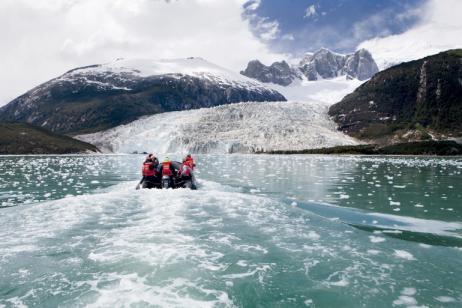
Patagonia Tour - Patagonian Overland Adventure
Flights & transport:, itinerary focus:.
- Discover Buenos Aires, the “Paris of South America” & paired lunch in a chic restaurant
- Visit San Antonio de Areco, the cradle of Gaucho’s traditions
- Explore Ushuaia, the “End of the World” in 4X4WD
- Explore Tierra del Fuego National Park, Cruise Chilean fjords between Cape Horn & Wulaia Bay
- Explore Torres del Paine National Park, Cruise The Perito Moreno Glacier
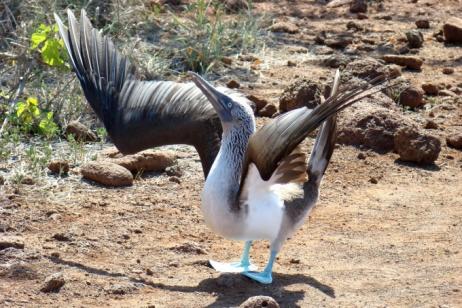
Epic Galápagos Photography Expedition
- Explore the Galápagos archipelago and undersea in great depth with hikes and Zodiac cruises
- Tour paced for photo ops and timed to take advantage of the best light.
- Shoot with and learn from top National Geographic photographers and the Lindblad-National Geographic Director of Expedition Photography
- Go on daily photo assignments to help build your personal portfolio with wildlife legendary for uniqueness and lack of fear of humans - allowing for up-close and magical photo opportunities with blue-footed boobies, sea lions, giant tortoises, marine iguanas, and more.
- Enjoy a mid-voyage photo seminar with our expert photographers and a special photography tour of the Charles Darwin Research Station.

From Rio to Trancoso – The Beaches of Brazil
- City tour of Rio de Janeiro including Sugar Loaf Mountain, Ipanema Beach and cycling through the parks
- Visit a public art installation in the favela of Rio
- Discover colonial communities near Trancoso
- Tour Salvador's Pelourinho
- Hiking and boat tours in the Fernando de Noronhua islands
- Swimming, snorkeling and diving in the Atlantic Ocean
- Relaxing on the best beaches in Brazil

Galapagos Luxury Cruise Ultimate Galapagos
- Discover Quito
- Explore Santa Cruz Island and Galápagos Islands
- Explore Puerto Ayora
- Learn about the birds and animals, geology, marine life and oceanic systems of the Galapagos Islands
- Experience snorkelling in Galápagos Islands

Polo Holidays in Argentina
- Learn from the very best Polo players in the world
- Stay at the family estancia of Adolfo Cambiasso, #1 polo player in the world
- All inclusive trips
- Tours designed to your requirements
- Luxury accommodation
- English speaking guides
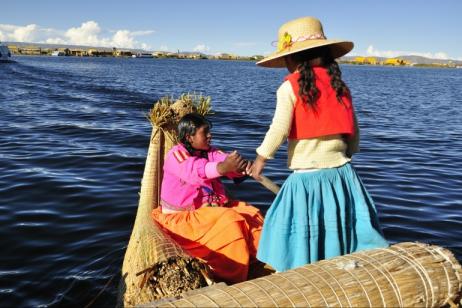
- Make a difference in a Peruvian village; renovating houses, teaching English, or providing medical care if you are medically trained
- Luxury lodge based hike to Machu Picchu
- Be in awe of Machu Picchu
- Encounter floating villages on Lake Titicaca
- View condor soaring majestically in Colca Canyon
- Marvel at the colonial wonders of Cusco and Arequipa
- Puzzle at the Nazca Lines from above
- Take a cooking class in Lima
- Explore the Amazon jungle in a luxury lodge
Want a tailor-made trip instead?

Beaches of Brazil Tour
- Explore Rio de Janeiro
- Enjoy the ride to Corcovado Mountain and its famous statue of Christ, the Redeemer
- See the Fabulous Iguazú Falls
- Drive through Praia Do Forte
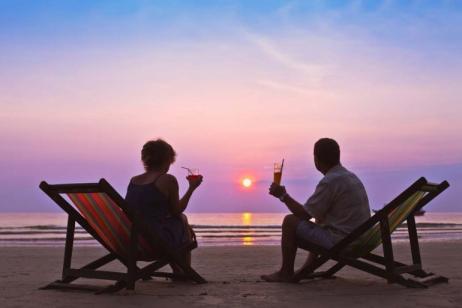
Romantic Andean Getaway
- Fall in love with Peru’s wide-eyed llamas, alpacas and delicate vicuñas at Awanakancha Living Museum.
- Walk the grounds of a stoically beautiful hacienda that specializes in corn production practices dating back to the Incas; try one of the world’s most unique corn varieties locally called choclo also known as Giant White Corn!
- Take the harrowing journey up Mountain Huayna Picchu that lovingly overlooks and protects the Machu Picchu ruins below.
- Spoil your taste buds as you embark on a journey tasting three exquisite Peruvian products: coffee, chocolate and pisco!
- Practice yoga by the shore of crystalline Lake Piuray before connecting with the still water on a stand-up paddle or kayak.
- Explore the vibrant marine life, idyllic beaches and soft sunsets of Peru’s Northern Coast.
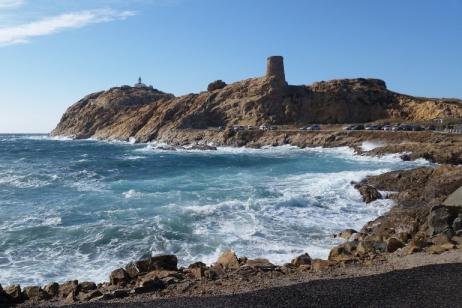
Jungle, Highlands and Islands
- Explore Quito
- Visit Napo Wildlife Center
- Discover Galapagos an impressive cliffs of Buccaneer Cove
- Drive through Genovesa Island very interesting panga ride along the cliffs.
- Experience hiking in the El Cajas National Park
- Visit renowned market of Otavalo
Member Savings

Wonders of South America
- Exploring the Sacred Valley
- Tour to Ollantaytambo, Maras & Moray
- Explore the areas around Machu Picchu or carry on exploring the ruins
- Enjoy the beautiful Cusco city and UNESCO World Heritage site
- Enjoy Iguassu Falls stunning natural wonder of the world
- Explore and enjoy Rio at your leisure

Colombia Highlights: A comprehensive overview of the country’s top sites
- Visit Bogota's historic district, mueseums and Monserrate Sanctuary
- Enjoy a scenic private transfer to Villa de Leyva, stopping visit the famous Salt Cathedral in Zipaquirá
- Visit Armenia (in the heart of Colombia’s coffee region)
- Enjoy a coffee tour and tasting at San Alberto Plantation
- Drive into the Cocora Valley and see the magnificent Wax Palm
- Relax at the beaches of Santa Marta
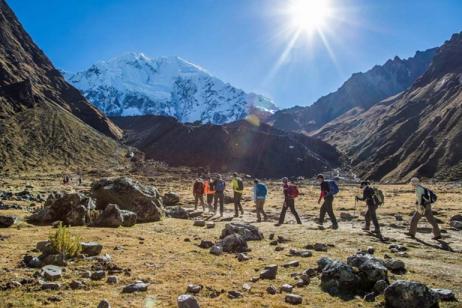
A Journey through a Fabled Past
- Take the road less traveled by hiking the lesser-known Salkantay trek to Machu Picchu, which is every bit as scenic as the Inca Trail.
- Wander the capital Incan city of Cusco with your private guide, discovering local highlights and hidden treasures at your own pace.
- Delight in luxury trek amenities, such as deluxe lodges, Jacuzzis, and nightly massages.
- Relish a luxury tour to Machu Picchu with your very own expert guide to explain the history, architecture, and theories surrounding the site.
- Discover the delights of Peruvian cuisine at the country’s finest dining establishments.
- Immerse yourself in local life with visits to remote Andean villages that are, for most travelers, uncharted territory.
- Enjoy enriching experiences with local artists at their workshops.

The Best of Argentina - Buenos Aires, The Andes and Iguazú Falls
- Visit the city through the exclusive Four Balconies of Buenos Aires.
- Explore Mendoza
- Visit the High Andes, location of the highest peak
- Visit San Carlos de Bariloche
- Drive to the city of El Calafate and see the Los Glaciares National Park
- Enjoy the fabulous Iguazú Falls
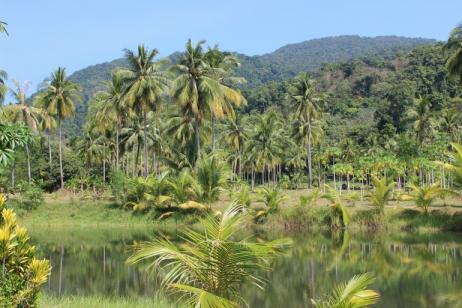
A Dive Into Nature Tour
- Visit the renowned market of the Otavalo Indian, industrious makers of the handicrafts
- Explore Cuenca
- Experience hiking in the El Cajas National Park, located on the high Andean paramo
- Explore impressive James Island
- Drive through Bartolomé Island (dry landing) for a hike to the summit
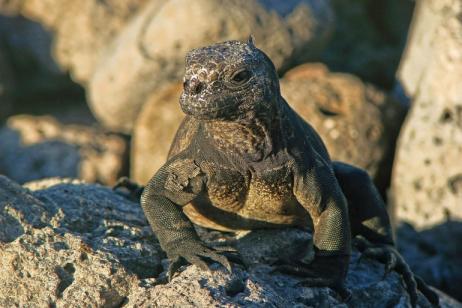
Ecuador & Galapagos Islands
- Picturesque colonial Quito
- Lush verdant cloud forests teeming with life
- The hauntingly beautiful Galapagos Islands and its unique wildlife
- Vibrant Otavalo market, overnighting in a beautiful traditional hacienda
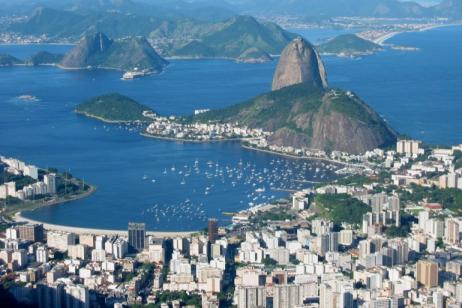
Culture, History & The Altiplano
- Explore La Paz
- You will have an opportunity to explore Tiahuanco
- Tour the World Heritage Sites of Sucre and Potosi.
- Enjoy 3-hour ride to Copacabana, a beautiful town on the shores of Lake Titicaca.
- Visit the impressive Royal Mint House, and continue to other attractions such as the Main Cathedral
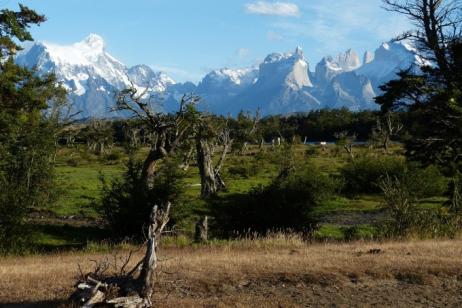
Luxury Chile Explorer
- Explore Torres del Paine
- Exploring the Wine Region
- Visit the Atacama Desert is one of the world's driest, fifty times more arid than California's Death Valley,
- Save up to 32% off trips to every continent on earth
- Redeem anytime before 2023. Last minute changes OK.
- Get a full refund.

Across The Altiplano to The Atacama
- Opportunity to see World Heritage Site by U.N.E.S.C.O like Sucre and Valparaíso
- Discover La Paz
- You will be shown interesting aspects of the geological history of the Uyuni´s Salt Lake
- Explore Atacama Desert, running over 600 miles between the Pacific Ocean and the Andes Mountains, is one of the driest regions on earth
- Visit the Cathedral Church of Santiago, rebuilt in 1748 on the very site where all four previous churches
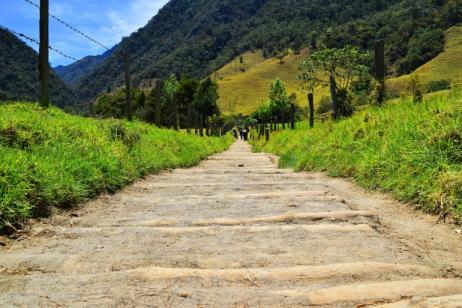
Experience Colombia Tour
- Get a spectacular view of the city at the top of the Monserrate Hill
- Visit stunning landscape and enjoy the diversity of flora and fauna
- Enjoy spotting most beautiful birds
- Visit places filled with history and mysteries
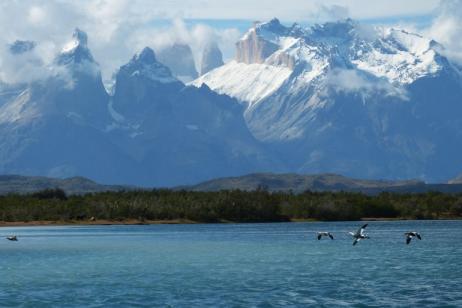
The Patagonia Explorer
- Explore El Calafate
- Experience hiking through the beech forest look out for the Magaellanic woodpecker, largest in South America
- Hike Tierra del Fuego
- Get an opportunity for 4-days cruise to Punta Arenas, Chile
- Explore Cape Horn
- See the awesome Magdalena Island, a natural reserve of Magellan penguins
Related Trips & Tours
Luxury south america reviews & ratings, why travelstride, additional details, what you should know before going on a luxury south america tour, why consider luxury travel to south america.
Luxury tours of South America offer you the opportunity to handcraft your own itinerary through this vast continent while also still getting exclusive experiences. Most South American luxury tour operators specialize in creating trips that are designed to fit your needs. They work with you from the first call all the way through your trip making sure you have the once-in-a-lifetime experience you’ve dreamed up.
Additionally, a luxury tour takes care of all the nitty-gritty details of travel. You’ll have excellent transportation for those bus rides between destinations, a local guide will meet you in your next city to show you around, and the hotels are comfortable and relaxing after your long journeys.
Luxury tours also offer exclusive experiences not normally included in backpacking or standard trips. You’ll be able to share a wine tasting with a master winemaker, private tango lessons in Argentina, or stay in a hotel just steps away from Iguazu Falls .
When is the Best Time to Visit South America?
First, most of South America - besides the Caribbean coastline - is in the Southern Hemisphere. This means that the coldest months are actually May-August and the warmest months are December-February. If you are looking to take a vacation from the colder months of the Northern Hemisphere, then South America is one of the best places to see.
Second, with such a vast difference in climates and natural landscapes, every part of the year is the right time to visit South America. Most of South America generally maintains a comfortable, cooler climate throughout the year. If you are visiting the mountains at any point of the year, it will be cold and wet. February is one of the best times to visit Peru and Chile as this is right before the colder seasons. Countries such as Ecuador and Colombia will be consistently warm throughout the year as they both sit right on the equator.
For countries such as Argentina and Chile , you’ll see a wider change in temperatures during the year because they are farther away from the equator. It’s hard to pick an exact time of year to visit South America (unlike Italy or Vietnam ) since each region of the country is vastly different from the regions. However, a good rule of thumb is that February and March may be prime time for many of the countries.
Packing List for South America
South America is enormous, that’s not an understatement. With climates ranging from tropical rainforests to snowy mountain ranges to salt flats, what to pack for South America can be a little daunting.
The first thing to figure out when packing is where in South America you will be going. If you are sticking to the Caribbean coast of the continent or the Amazon Rainforest you’ll need to pack lightweight clothes and rain jackets.
If you are hiking the trails of the Andes or Patagonia you will need wool jackets and good hiking boots. Layers are key throughout the continent. The weather can change on a dime, so you’ll want to include a few different options for those outings.
It’s best to base your packing list on where you will be going. Check your itinerary for the climates and regions you will be in to help determine what to stuff into your suitcase. A few essential things to bring with you no matter where you are: bug spray, rain jackets, warm socks, and a travel adapter.
It’s also important to remember that luxury travel in South America isn’t about ball gowns, diamonds, and pearls. While you may be treated to a nice dinner here and there - and be accommodated in nice hotels and houses - don’t worry about packing as though you’re staying at the Ritz. Luxury South America tours are more about the opportunity to have a private guide, comfortable transportation and accommodation.
Always Find the Best
Find and compare Luxury South America Tours from as short as 4 days to as long as 24 days. Travelstride searches over 1,000 websites and companies so you don't have to and found 103 Luxury South America Tours offered by 56 travel companies. 4 people reviewed these Luxury South America Tours.
In order to see Travelstride Select deals you must sign in. We’ve negotiated with many of the world’s best travel companies to save you money! Get the best experiences, save up to $700 per person, and be a hero to your travel companions!
We respect your privacy and take great care to protect your information. By joining you agree to our Privacy Policy and Terms of Use .
With FREE membership you:
- Save up to $700 per person!*
- Access private deals and offers
- See personalized trip recommendations
- Save favorite trips
Top Luxury South America Attractions
Machu Picchu
Iguazu Falls
Uyuni’s Salt Flats
Santuario de las Lajas
Easter Island
The Galapagos Islands
Top Activties in Luxury South America
Hiking the historic Inca trail to the “City in the Clouds” Machu Picchu
Visit the mysterious and remote Easter Island
Stroll the UNESCO World Heritage lanes of Cartagena, Colombia
Enjoy the natural wonders of the Amazon on a private tour
Click to send a new magic link to your inbox.
Welcome back!
By signing in, you agree to our Privacy Policy and Terms of Use
- Bookmark trips you like
- Share with your travel companions
- Track price changes
- Access private discounts on trips you save
TripFinder is a member-only feature. Dont worry, its free!
With a membership you:
Just use the email address and password provided in the email we sent.
With your free membership you:

Your travel guide dog
Searching thousands of trips by hundreds of tour companies...
Fetching your trip.
Just a moment, Rover is fetching your perfect trip.

2 Weeks in Colombia: 3 Itineraries
DISCLAIMER: This post might have links to travel services and products that we enjoy. We might make a commission from it at no extra cost to you.
If you are unsure where to go for your two weeks vacation but pretty sure you want to visit Latin America, have you considered Colombia? It’s a Caribbean country located just south of Panama and north of Ecuador.
Colombia has a diverse landscape. It features the magnificent Andes Mountain, the rich Amazon rainforest, and the ever-stunning Caribbean coast . This means that there are tons of opportunities for outdoor activities such as hiking, water activities, and even mountain biking during your 2 weeks in Colombia.
Apart from beautiful nature, Colombia is also rich in culture and traditions . It reflects both the marks of indigenous culture and the Spanish colonizers’ time in the country. Exploring this place means seeing how much influence Spain has on Colombia.
However, it didn’t fail to show the heritage of the indigenous people who lived here before the invaders arrived.
Finally, art, such as dancing, music, and street painting, is highly valued in Colombia . You will see exactly what I mean as you travel through the cities and rural areas. And, of course, you have to try local dishes and drinks during your visit to make the trip even more memorable and unique.
ALSO READ: 2 weeks in the Caribbean Island hopping
THINGS TO KNOW BEFORE VISITING COLOMBIA

Even though Colombia is a popular destination, there are still some things that you should know before you book your flight and make hotel arrangements.
In the section below, you will learn when is the best time to visit Colombia (which months to avoid), what a reasonable budget looks like, and how to get around the country.
When is the best time to go to Colombia
December to March is the dry season of Colombia, making it one of the best times to visit. However, it’s also the peak season and when the schools are on break. Hotels get booked quickly, the prices are usually higher than usual, and there are more crowds here.
For people who want to visit the Amazon Rainforest, it’s ideal to see Colombia during the rainy season, which runs from May to November . The colours in the forests are magnificent, but it’s not the best time to head to the Caribbean coast.
Overall, the best time to visit Colombia is before the dry season, around October to November or in March to April. The prices are lower, and there are fewer tourists.
Are 2 weeks enough for Colombia
14 days in Colombia is feasible . Luckily, airports are accessible enough, making the crossing between the valleys a bit faster. If you plan to rent a car and travel on land, two weeks in Colombia might be a relatively short amount of time.
Choosing 1-2 regions might be the best idea for your trip . For example, spend one week in the region of the Caribbean coast, where you will get to do boat tours and water activities – experience the ideal beach vacation.
If you want to learn the history of Colombia, you can plan to spend the second week either in Bogota, the capital city of Medellin.
Getting around
I personally find getting around Colombia relatively easy . Some flights connect major cities such as Bogota, Medellin, Barranquilla/Cartagena, and Cali at a reasonable price.
Bus travel between these cities is suitable for those on a budget . However, because the country is on the Andes Mountain, the journeys are longer, but still much more affordable than flying.
On the other hand, renting a car could also be an ideal option if you prefer that . You will have more freedom of your time and can actually discover areas that planes and buses don’t usually go to. Remember that driving in Colombia is a bit more challenging due to the mountainous terrain and poor road conditions.
You can use ride-hailing apps for going around the city, such as Uber, inDriver, and Tappsi . Using these apps avoids any chance of getting ripped off by a metered taxi.
Bottomline, the best way to get around Colombia depends on your budget, the places you plan to visit, your level of comfort, and the time you have,
Language and currency
Spanish is the official language in Colombia , and finding people who speak English outside the tourist area can be challenging. There are also indigenous languages used in Colombia, such as Quechua, Wayuu, and Kuna, to name a few.
It’s best to either learn a few phrases or make sure that you download a translator app on your phone to help with communicating with the locals. Spanish is a very useful language, which you can learn for free on Babble or Duolingo .
The Colombian Peso ($COP) is the currency used in Colombia . Although paying with a bank card is widely available in the areas where foreign visitors flock, it will be smart to c arry some cash with you for emergencies and when visiting rural towns.
Travel visa in Colombia for foreign visitors is quite easy. Most people can enjoy visa-free upon arrival, which allows a stay for up to 90 days .
This is true for travellers with passports from most parts of the Americas (North and Latin), Europe, Russia, Central Asia, New Zealand, Indonesia, Singapore, Philippines, Japan, South Korea, and Australia.
If your country is not mentioned above, but you hold a valid visa from the US and the Schengen Area , you can use those visas as a substitute visa . This is applicable to nationalities of Cambodia, China, India, Macau, Myanmar, Taiwan, Thailand, and Vietnam.
What is the average cost for 14 days in Colombia
On average, a single person should plan a budget of $1,500 for 2 weeks in Colombia . This includes a private bedroom in a mid-range hotel, eating out, booking tours, and taking public transport and taxis.
If you plan to be on a tight budget, $900 will do the job but requires you to stay in dorm rooms. This is suitable for backpackers and young travellers.
For those looking for a bit more comfort and luxury, $2,500 for 2 weeks in Colombia is a good number. You’ll enjoy staying in four or five-star hotels, booking premium tours, and high-end restaurants, and taxiing your way around.
These numbers are for an individual person and don’t include your flight to get to Colombia and out. It also doesn’t cover your travel insurance and other travel gear. If you’re a two-person travelling together, you’ll be able to save some money by sharing a room/twin room.
Other basic travel tips
You can use the following services when it comes to travel arrangements such as booking your accommodations and flights. Some of these tools allow you to cancel without a fee or for a small fee if your plan changes.
TOP THINGS TO SEE IN COLOMBIA (pinned map)
Click the icon on the top right to enlarge the map. Credit: map data: Google
2 WEEKS IN COLOMBIA ITINERARY
Spending 14 days in Colombia is a fantastic way to experience and learn about the country’s diverse culture. There are so many things to do and see during your trip, but to avoid overwhelming yourself, it’s best to have some sort of itinerary to follow or use as a guideline.
You will most likely land in Bogota , the capital city. It’s a place location 2,640 m (8,661 ft). Expect the city to be hilly and roads to be covered in cobbled stone – offering a truly European atmosphere.
If you don’t plan to stay here long, use your time to get a local sim card, cash, book your bus, pick up the car rental, and learn more about the places you want to see.
If you still need convincing if Colombia should be your next destination, perhaps this itinerary of 2 weeks in South America can help you decide.
Itinerary #1: First-timer – Bogota and Medellin
This travel itinerary is suitable for those travelling to Colombia for the first time . You will be able to explore at least 3 major cities and see the top-rated attractions of the country. Learn about the history of Bogota, explore the cobbled stone alleys of Medellin, and enjoy the Caribbean in Cartagena.
This travel plan is also slow travel , which means you can spend more time in each city and get to explore the surrounding areas.
If you’re on a budget, you can take the bus to travel from one city to another to save some money. If you prefer comfort, all these cities have major airports, so air travel shouldn’t be a problem.
Day-to-day overview:
- Day 1 : Arrive in Bogota. Look for a local simar card with data if you need it and collect some cash.
- Day 2 to 4 : Explore Bogota and surrounding areas
- Day 5 : Travel from Bogota to Medellin by air or land
- Day 5 to 19: Enjoy Medellin with a day trip to Guatape
- Day 10 : Travel from Medellin to Cartagena by air
- Day 10 to 14 : Discover and relax in Cartagena
- Day 14 : Fly back to Bogota to catch your flight home
Bogota and around for 5 days
The vibrant city of Bogota is rich in cultural heritage and has a fantastic art scene . When I landed in Colombia, I actually went and caught a flight to Medellin right away without seeing the city first. I decided I wanted to see Bogota at the end of my trip, which I’m happy I did.
I ended up with plenty of time to spend in Bogotal and around the region, which allowed me to see more than the city attractions.
If you love history as much as I do, La Candelaria is the city’s historic centre . You can walk around Plaza Bolivar and see the main square, walk through the alleys, and then visit Catedral Primada. I recommend you sign up for a city tour or walking tour, though.
A knowledgeable local can help a lot in understanding Bogota’s history. Most walking tour lasts for 2-3 hours only. This means you can schedule it for the morning and have the afternoon to do something else , probably a food and drinks tour.
For the next few days, you should make sure to visit Montserrat Hill for a nice little hike or do a day trip to Zipaquira Salt Cathedral. If you’re flying out of Bogota back home or heading to your next destination, leave the souvenir shopping for that day to avoid wasting an entire day browsing stores.

Medellin and around for 4 days
Medellin is easily my favourite city in Colombia . Also known as the “city of eternal springs”, Medellin is a mountainous city surrounded by national parks and dense forests. However, the city itself is bustling and lively.
El Poblado is the melting pot for foreign visitors . Here, you will find exciting restaurants, bars, and other entertainment. Comuna 13 is definitely something you want to visit, which you can do on your own or through a guided tour.
This community showcases colourful street art reflecting the area’s dark history because of drug cartel wars.
I highly advise you to take a day trip to Guatape , a stunning colonial town only 2 hours from Medellin. Take a photo of traditional houses and learn about the town’s history. You should also claim the massive rock formation of Piedra del Penol for an excellent view of Antioquia province.
I booked a day trip to Guatape from Medellin , which covers transport, a fantastic local guide, and plenty of stops to discover more about Colombia and its culture.
You can get to Medellin from Bogota in two different ways . The fastest and most convenient way would be to fly, which takes just a little over an hour and usually costs $50 per person.
There are two airports in Medellin you can fly into; Jose Maria Cordova International Airport (MDE) or Olaya Herrera Airport (EOH). The latter one is closer to the city centre.
Another option is by bus . I’m not going to lie, but many tourists feel a bit sketchy about taking the bus. I took the bus from Medellin to Bogota, and the experience was fine.
I know other people’s experiences are a little different, so please make a decision that suits you best . The bus ticket costs $20 to $25, and the travel time is around 9 hours.
Cartagena and around for 5 days
I almost didn’t visit Cartagena only because I spent too much time in Medellin, but luckily I was able to squeeze it in! Cartagena is the gateway to experiencing the Caribbean Sea’s beauty without spending exorbitant costs .
This coastal city in the northwest of Colombia features thrilling activities. From water excursions, visiting historical sites, hiking trails, and also dipping yourself in some volcanic mud – there is something for everybody.
You can start your day by discovering the Old Town, which is a UNESCO Heritage Site . It’s loved for its well-preserved colonial architecture and rich history. You can then make your way down to Palacio de la Inquisicions and Torre del Reloj.
Regarding water activities, sign up for the most popular boar tour, which will take you to Rosario Island, a group of 27 islands surrounded by crystal-clear water and corals. Here, you can go snorkelling, scuba diving, or just swim and enjoy the sun.
To reach Cartagena from Medellin, you can hop on a quick 1-hour flight which costs $15 to $50, depending on the airline you choose and your baggage (Rafael Nunez Airport/CTG).
You can also fly to Barranquilla (Ernesto Cortissoz Airport / BAQ), a bigger city near Cartagena. The flight ticket costs about the same, a little cheaper actually and more frequent.
You can also take a bus from Medellin to Cartagena . But the drive is very long and honestly not cheaper than flying. The journey is around 17 hours, and a bus ticket costs between $35 to $45 per person.
Itinerary #2: Complete – Bogota, Medellin, Barranquilla/Cartagena, Cali
Now, this itinerary for 2 weeks in Colombia covers all the major and significant cities in the country . This travel plan will take you to various places, highlighting Colombia’s culture, history, heritage, cuisine, and more.
The number of days in each city is shorter than in the first itinerary above. This is a tight schedule, but perfect for people who want to see everything in one visit . With the right planning, you can maximise your time in Colombia.
- Day 1 : Land in Bogota, arrange an airport transfer , get some essentials
- Day 2 to 4 : Discover Bogota
- Day 5 : Get from Bogota to Medellin by air
- Day 5 to 7 : Travel around Medellin
- Day 8 : Get to Barranquilla or Cartagena from Medellin by air
- Day 8 to 10 : Enjoy Barranquilla or Cartagena
- Day 10 : Travel from Barranquilla/Cartagena to Cali
- Day 11 to 14 : Discover Cali
- Day 14 : Fly back to Bogota to get home
Bogota for 4 days
Start your trip in Bogota, the capital city of Colombia. T his city is one of the highest capitals in the world in terms of elevation . It sits at 2,640 m(8,600 ft) above sea level. It is also the political, cultural, and economic centre of Colombia.
Bogota city is rich in history. It’s been habited by indigenous Muisca people and gained even more history during the colonial period.
Apart from that, the city is also known for its natural beauty and, of course, showcases the magnificent Andes mountain range . Regarding the art scene, Bogota is home to various festivals throughout the year, and the streets are filled with amazing murals, graffiti, and public art installations.
Medellin for 3 days
The next stop is Medellin. Another mountainous city located northwest of Bogota. Medellin has a dark history, but today, it’s a beautiful and innovative city . It is situated 1,496 m (4,905 ft) above sea level in the Aburra Valley on the Andes mountain range.
Medellin is known for its progressive policies and various programs addressing poverty and education. Apart from visiting Comuna 13, take a trip down to the Museum of Modern Art, Museu of Antioquia, and Explora Park to learn about the history and culture and watch the daily life in Medellin is like.
You can take an hour’s flight from Bogota to Medellin (either via Jose Maria Cordova International Airport (MDE) or Olaya Herrera Airport (EOH). EOH airport is much closer to Medellin city centre. The flight ticket shouldn’t be more than $60 per person.
You can also reach Medellin from Bogota by bus . The trip will take longer, but a little more affordable than the plane option. A single bus ticket will be around $20-$25; the journey time is around 9 hours.

Barranquilla/Cartagena for 4 days
Barranquilla and Cartagena are not the same cities . Barranquilla is the capital city of the Atlantico region of Colombia and a much busier and more populated city. Cartagena, on the other hand, is a smaller city southwest of Barranquilla.
You can choose between these two cities where to go depending on what you like. These two cities are not too far from one another.
Barranquilla has a lively scene with many restaurants, clubs, and bars . This is a fantastic place to go if you enjoy going to dances or signing up for dance classes such as salsa, cumbia, and other Colombian-style dances.
Cartagena, on the other hand, is more calm and known for its beaches . Although there are still exciting bars and clubs, it’s a better option if you see yourself going to the beach to read a book or enjoy the water.
It’s only a 3-hour drive, around 130 km (80.7 miles) . This means you can take a day trip from one city to check out the other.
You can fly to Ernesto Cortissoz International Airport (BAQ) to get to Barranquilla from Medellin . The journey will take an hour and costs around $15 to $50.
From Medellin to Cartagena , book a flight to Rafael Nunez International Airport (CTG). It’s also an hour direct flight with a ticket price of $15 to $50.
Cali for 3 days
Do you know that Cali is also called the “Salsa Capital of the World” ? The dance, not the dipping sauce! This means that if you love dancing or want to learn more about salsa dance, Cali should be on your list during 14 days in Colombia.
Cali might be the less-known city in Colombia, but it actually features a well-designed public transportation infrastructure . Including bus lines, highways, and service roads. It’s also a place with mouthwatering cuisine, a perfect destination for foodies who are fans of empanadas, arepas, and tamales.
During your visit, make sure to check out Cristo Rey Statue, Old Town, Cauca River Valley , and attend a salsa concert and an event at Jorge Isaacs Theatre.
You can get on a plane from Cartagena or Barranquilla to Cali . The airport is called Alfonso Bonilla Aragon International Airport (CLO). The flight is short, around 1 hour and 30 minutes direct from Cartagena, and the one with a connection is around 4 hours from Barranquilla. The ticket price is around $30 to $60 per person.
Itinerary #3: Away from Tourists – Villavicencio, Santa Marta, Cali, Popayan
For those who want to avoid the wave of crowds, especially if you plan to visit during the peak season, this travel itinerary for 2 weeks in Colombia might be more suitable for you . This will take you through smaller villages yet historic and rich in culture.
You’ll most likely have to arrive in Bogota still. Perhaps you can spend a day there where you can take a beat for a moment, get a local currency, and figure out your next few days. You can also use this itinerary the other way around and start in Popayan if you want to.
- Day 1 : Land in Bogota, travel to Villavicencio
- Day 2 to 4 : Travel around Villavicencio
- Day 5 : Get Santa Marta, fly from Bogota
- Day 5 to 8 : Explore Santa Marta
- Day 9 : Travel from Santa Marta to Cali by air
- Day 10 to 13 : Travel around Cali and Popayan
- Day 14 : Get back to Bogota to fly back home
Villavicencio and around for 4 days
Villavicencio is a smaller city southeast of Bogota , around a 2 hr and 30 min drive. Exploring this city gives a different experience for foreign visitors. There are fewer tourists but there is so much to see.
If you love being around nature, you can explore the region’s national parks, go wild swimming at the rivers and waterfalls, and spot various unique wild animals such as capybaras and jaguars.
There are also a lot of adventurous activities, including white rafting, horseback riding, and mountain biking . Learning about Colombian culture is also a highlight in visiting Villavicencio.
There are buildings with colonial architecture, such as La Voragine Cathedral, where you can learn about the Eastern Plains or discover the Macarena Mountains to learn about the indigenous people of Colombia.
Santa Marta for 4 days
Santa Marta is a smaller city in the northern region of Colombia . It’s about a 2-hour drive from Barranquilla and 4 hours from Cartagena. If you want to experience the beauty of the Caribbean without spending too much and be in a more serene area, Santa Marta is a fantastic place to be,
Spend your days relaxing on the beach or going on boat tours where you can do some snorkelling, diving, and windsurfing. If you want to go on a hike, you can check out the Sierra Nevada de Santa Marta , a lovely mountain range far from the city. There, you will see a variety of plants and animal species.
For those looking for some history and culture, admire colonial buildings around Santa Marta, including Quinta de San Pedro Alejandrino, where Simon Bolivar died .
You can reach Santa Marta by flying directly to Santa Marta (Simon Bolivar International Airport) from Bogota . The flight takes an hour and 30 minutes and usually costs $30 to $40 per person.
Both Cartagena and Barranquilla have their own airport, but then you’ll have to waste hours of driving to reach Santa Marta.

Cali and Popayan for 4 days
Cali and Popayan are two cities in the southwest of Colombia . Cali is known as the home of salsa music and dance, meaning you must sign up for a class or watch a salsa show while in town. If you’re visiting in December, during the last week, there’s an annual salsa festival to which performers worldwide are invited.
You can also learn more about the history and culture of Colombia by visiting educational sites, including the Cali Art Museum, La Merced Archaeological Museum, and the towering Cristo Rey Statue.
On the other hand, P opayan is a charming colonial city famous for colonial architecture, religious heritage, festivals, and natural beauty . The local government did a fantastic job in preserving over 200 colonial-style buildings, from churches, towers, and houses dating all the way back to the 16th century.
Popayan is also known for being rich in religious heritage . It’s even called the “White City” because of many religious buildings painted in white. Finally, Popayan is also surrounded by lush forests where you can go hiking and bird watching.
The most popular spot is Purace National Parl which is popular for volcanic landscapes, hot springs, and the Coconuco thermal springs.
From Santa Marta, you can fly to Cali, but it has to connect to Bogota. You can also head to Barranquilla or Cartagena to catch a direct flight to Cali. The flight ticket usually costs $60 to $80, and the travel time is between 1 hour and 30 minutes to 3 hours and 30 minutes, depending on the connection.
Both Popayan and Cali are great places to end your 2 weeks in Colombia in such a relaxing and educating scene. If you have an international flight, you will have to travel back to Bogota to catch it.
THINGS TO SEE AND DO IN COLOMBIA (per city)
Now that you have some ideas on how to plan an itinerary for Colombia, it’s time to show you a list of must-see places in each city to help you decide which attractions and activities you want to do during your trip.
- Bolivar Square in Bogotá
- Botero Museum
- Museo del Oro
- Teatro Colón
- Iglesia de San Francisco
- Graffiti in Calle 20
- Comuna El Paraiso
- Museo Nacional de Colombia
- Parque Metropolitano Simón Bolívar
- Bogota food tour
- Jardín Botánico de Bogotá José Celestino Mutis
- Join Bogota bicycle tour
- Hike to La Chorrera Waterfall
- Coffee tour and tasting
- Salt Cathedral
- Villa de Leyva & Raquira Town tour
- Pueblito Paisa
- Hill of Three Crosses – hiking trail
- Colombian coffee farm and tasting tour
- Ride the cable car
- Bike city tour
- Parque Lleras – streets around here are filled is popular restaurants, bars, and more
- Join a pub crawl
- Guatape and El Penol Rock
- Pablo Escobar Hacienda Tour
- Paragliding over Colombian Andes
- ATV quad tour
- Zipline and waterfall tour
Cartagena/Barranquilla/Santa Marta
- Snorkel at Rosario Island Catamaran
- Torre del Reloj
- Playa Blanca
- Isla Grande
- Cartagena sunset cruise
- Zenu Gold Museum
- Convento De La Popa and Castillo de San Felipe de Barajas
- Islas del Rosario
- Get yourself a hop-on hop-off bus tour
- The Palace of the Inquisition
- Join paratriking flight
- Enjoy a bioluminescent plankton tour
- Ride the Chiva Party Bus
- Getsemani highlights and graffiti tour
- Visit La Boquilla and the Mangroves
- Totumo mud volcano
- Capilla La Ermita
- River tubing San Cipriano
- Learn Salsa Dance
- Join a Cali City tour
- El Cristo Rey statue
- Valle del Cauca Hacienda and Sugar Cane tour
- Parque Nacional Natural Farallones de Cali
- Explore the Jungle near Cali
- Plaza de Cayzedo
- Food and market tour
MUST-TRY COLOMBIAN DISHES, DRINKS, AND SNACKS
Apart from sightseeing, another thing that you have to do while in Colombia is to try local dishes . They say every food is always better from its origin, which is valid for Colombian food.
Colombian cuisine offers a multicultural blend of indigenous, Spanish, African, and other international dishes. If you want to try out the local food, there are many options to choose from.
- Bandeja paisa – rice beans, meat, avocado, plantain, fried egg
- Aijaco – soup made with potatoes, chicken, corn, avocado
- Arepas – cornmeal cakes, served as grilled and filled with cheese, meat, and other desired ingredients
- Sancocho – soup cooked with vegetables, and meat, served with rice
- Empanadas – deep-fried pastries filled with meat, cheese, and vegetables
- Aguardiente – anise-flavoured liquor
- Chicha – fermented corn drink
- Limonada de coco – coconut water with sugar and lime juice
- Mate – made with leaves of the yerba mate plant, typically a shared drink
- Tinto – traditional coffee, dark roast served black or with milk
- Flan – caramel-topped custard
- Tres leches cakes – moist cake made with three kinds of milk (evaporated, condensed, heavy crema)
- Bunuelos – deep-fried balls of dough topped with sugar or syrup (served during the holiday season)
- Torta negra – chocolate cake with caramel filling

ACCOMMODATIONS
To finish off your 2 weeks in Colombia planning, here’s a quick list of my recommended places to stay per city. Depending on your budget, you’ll also find them in categories to make it much easier.
- Affordable: La Casa De Huespedes or Republica Hostel Cabin Beds
- Mid-range: ibis Bogota Museo or Hotel San Francisco de Asis
- Luxury: Tequendama Suites or Hilton Garden Inn
- Affordable: Gaston Coliving or Key West Hostel
- Mid-range: Hotel Bolivariana Plaza or 61Prado Hotel
- Luxury: Landmark Hotel or Hotel Dann Carlton
- Affordable: Casa Hostel Shalom Adonai or Posada Barrios Mar
- Mid-range: Baluarte Cartagena Hotel or Hotel Blue Concept
- Luxury: Sophia Hotel or La Passion by Masaya
- Affordable: Hostal La Mercedes or Hava Hostel
- Mid-range: Hotel Quinta Norte Chipichape or Park V
- Luxury: Alko Hotel Casa Nispero or Hotel Intercontinental
Barranquilla
- Affordable: Hotel Aquarius or Hostel Mamy Dorme
- Mid-range: Hotel Windsor or GHL Hotel
- Luxury: Hotel Dorado Plaza Alto Prado or Crowne Plaza
- Affordable: Hotel La Herreria Colonial or Apartaestudio San Nicolas or Lienzo Hostel
- Mid-range: Hotel La Plazuela or Hotel Dann Monasterio
Villavicencio
- Affordable:
- Mid-range: Estelar Villavicencio Hotel & Centro De Convenciones or VVC Hotel’s or GHL Hotel Grand Villavicencio or Hotel Hacaritama Colonial
- Luxury: NQ HOTEL ORINOQUIA or Solev Hotel or Hotel Boutique Villas de San Sebastián
Santa Marta
- Affordable: Imagine Hostel or Dreamer Santa Marta or La Brisa Loca Hostel
- Mid-range: Apartamentos Playa Rodadero or Viajero Santa Marta Hostel or Casa Avelina Boutique Hostel or Camali Hotel
- Luxury: Zuana Beach Resort or Santa Marta Marriott Resort Playa Dormida or G rand Marina Suites Santa Marta or Casa Verano Beach Hotel
SUMMARY OF 2 WEEKS IN COLOMBIA
Deciding to spend 2 weeks in Colombia can be a rewarding and enjoyable experience since it has so much to offer. From cultural activities, incredible sights, tasty food, and friendly locals, there is no reason you shouldn’t consider Colombia your next vacation destination.
Colombia has gained lots of attention in the last decade. This means it’s a good idea to plan your trip to make the most of your time. I hope that these itineraries for two weeks in Colombia have helped give you an idea of how to plan your holiday.
TO SAVE THIS ITINERARY, PIN THIS IMAGE BELOW:

What to pack for your 2-week tour to South America
Recently updated on August 14th, 2023 at 03:35 pm
Layers, layers, layers – this is pretty much the gold standard on what to pack for your tour to South America . Before you go, get to grips with the continent’s vastly diverse climates and landscapes and you’ll quickly realise that you’ll be swapping your bikini on Ipanema for a jacket in the Amazon rainforests from one day to the next.

Two weeks isn’t nearly enough to cram in all the sights on your trip to South America. But with these packing tips, you’ll travel in style, whether you’re planning a trek to Machu Picchu or sunning yourself in Rio.
GET INSPIRED BY: South America Revealed
What to pack on your tour to South America

South America is going to test your skill in packing a versatile wardrobe. A continent of extremes, from the world’s driest place to its largest tropical rainforest, your trip to South America could include a multitude of different weather. That means you have to pack smart.
Mix and match your way through Latin America like the stylish locals do. Opt for layers you can peel off going from cold to warm, or vice versa when the chill sets in after exploring all the sights.
RELATED CONTENT: 8 tips to avoid looking like a tourist in South America
Ready to get folding? These are some of our South America packing tips:
Ultra-light down jacket

This is an absolute must if you’re travelling to high-altitude destinations like Cusco or Quito. Add a lightweight fleece and rain gear to keep you extra toasty and dry in case the weather turns.
Insect repellent
Particularly useful if you’re visiting the lower altitudes and rainforests, insect repellent will save you from the discomfort of mosquito bites. Choose a DEET-based repellent and apply it during daylight hours, and at sunset.
Sturdy walking shoes and sandals

Even if you’re not planning to trek through South America’s epic landscapes, you’ll be grateful for a pair of sturdy lace-up walking shoes. And for the beach or a night out in the city, nothing better than a pair of stylish and comfortable sandals.
RELATED CONTENT: What to pack for your tour of Machu Picchu
Hand sanitiser, wipes and tissues
Don’t get caught without these, not only to keep sanitised during times of COVID, but also for the odd bathroom emergency. Quite often, you’ll find there’s no soap or toilet paper as you frequent the public restrooms on your tour to South America.
Style and comfort

The South Americans are renowned for being stylish so you’ll stand out like a sore thumb if you dress too casually. Say no to cargo shorts and t-shirts and yes to button-up cotton shirts, sundresses and loose-fitting trousers, especially when you’re in the city. Our top style tip? Dress up your outfit with a scarf. They’re versatile and are a great layer to add to the mix when it gets chilly.
Pack light

There’s no shortage of souvenirs you could buy to remind you of your epic trip to South America. Leave those extra nice-to-haves at home and buy what you need on your travels. Woven cotton tunics in Peru, Alpaca wool socks and shawls from Ecuador and intricately Otomi embroidered bags in Mexico – throw a little retail therapy into the mix as a fond reminder for years to come.
RELATED CONTENT: No Latin America bucket list is complete without these 5 experiences
Ready to get packing for your tour to South America? Remember versatility is key on any South America trip planner. Let us know in the comments below what you’re planning to add to your packing list, or perhaps a special souvenir you just can’t wait to buy!
Want to hear more from us?
Sign up to receive inspiring travel articles, offers & news
" * " indicates required fields
Privacy Overview
Sign up for our emails.
Team Wanderlust | 15 February 2022
South america trip planner: 8 incredible routes.
Whether you want to hike the Andes, self-drive Brazil, delve into the Guianas or take the train to Machu Picchu, these eight journeys will inspire a Latin adventure...
1. Southern Patagonian Andes: Argentina & Chile
Duration: 10 days Best for: Hiking, biking, glaciers and off-road adventure Route: El Chaltén > Lago Argentino > Puerto Natales > Torres del Paine

2. Inca heartland: Bolivia and Peru

3. Under the volcanoes: Ecuador & the Galápagos

4. Costa Verde: Southern Brazil

5. Birdlife on the wild side: Colombia

6. Overland adventure: Venezuela & the Guianas

The coast road leads across lots of rivers all the way to Suriname , the former Dutch colony. Paramaribo, the capital, is approached by roads lined with churches raised on stilts to prevent any flood damage, modern factories and Chinese supermarkets, swastika-bearing Hindu temples and mosques topped by crescent moons. There’s a real cosmopolitan flavour here, and the capital has some of the best-preserved colonial buildings in all South America. The final leg of the trip – now in EU territory – passes via the atmospheric ruined penitentiary Devil’s Island and the Guiana Space Centre before arriving in Cayenne, the capital of French Guiana; a fascinating museum, excellent French-influenced cuisine and a handful of historic sites make this a curious, but comfortable conclusion to a memorable road trip.
7. Beaches and beyond: Uruguay

8. Gran Chaco & the 'other' Pantanal: Paraguay

Read more on South America:
The best rail journeys in south america, amazing south american walks (that aren't the inca trail), 9 highlights of cycling around south america, related articles, looking for inspiration.
Join our newsletter
Get the very best of Wanderlust by signing up to our newsletters, full of travel inspiration, fun quizzes, exciting competitions and exclusive offers.
Colombia 2-Week Itinerary (Complete Travel Guide)
Colombia has so many breathtaking destinations to choose from, whether it’s paradise islands off the coast of colorful Cartagena , jungle hikes in lusciously green Minca , or rooftop views from a skyscraper in Bogota . Discover some of the country’s highlights using this ultimate Colombia 2-week itinerary as you cross some of the most beautiful landscapes in the world—enjoying activities like surfing, whale spotting, and coffee tasting.
Ultimate Colombia 2-Week Itinerary
Colombia is a massive country full of diverse landscapes; it has everything from roaring rivers and luscious rainforests to arid deserts and paradise beaches. In reality, it would take months to explore. However, 2 weeks in Colombia still covers some of the highlights. This Colombia 2-week itinerary focuses on the north of the country, including a good mixture of big cities and beautiful nature.
Tip: Got more time? Explore more with our Colombia 3-week itinerary !
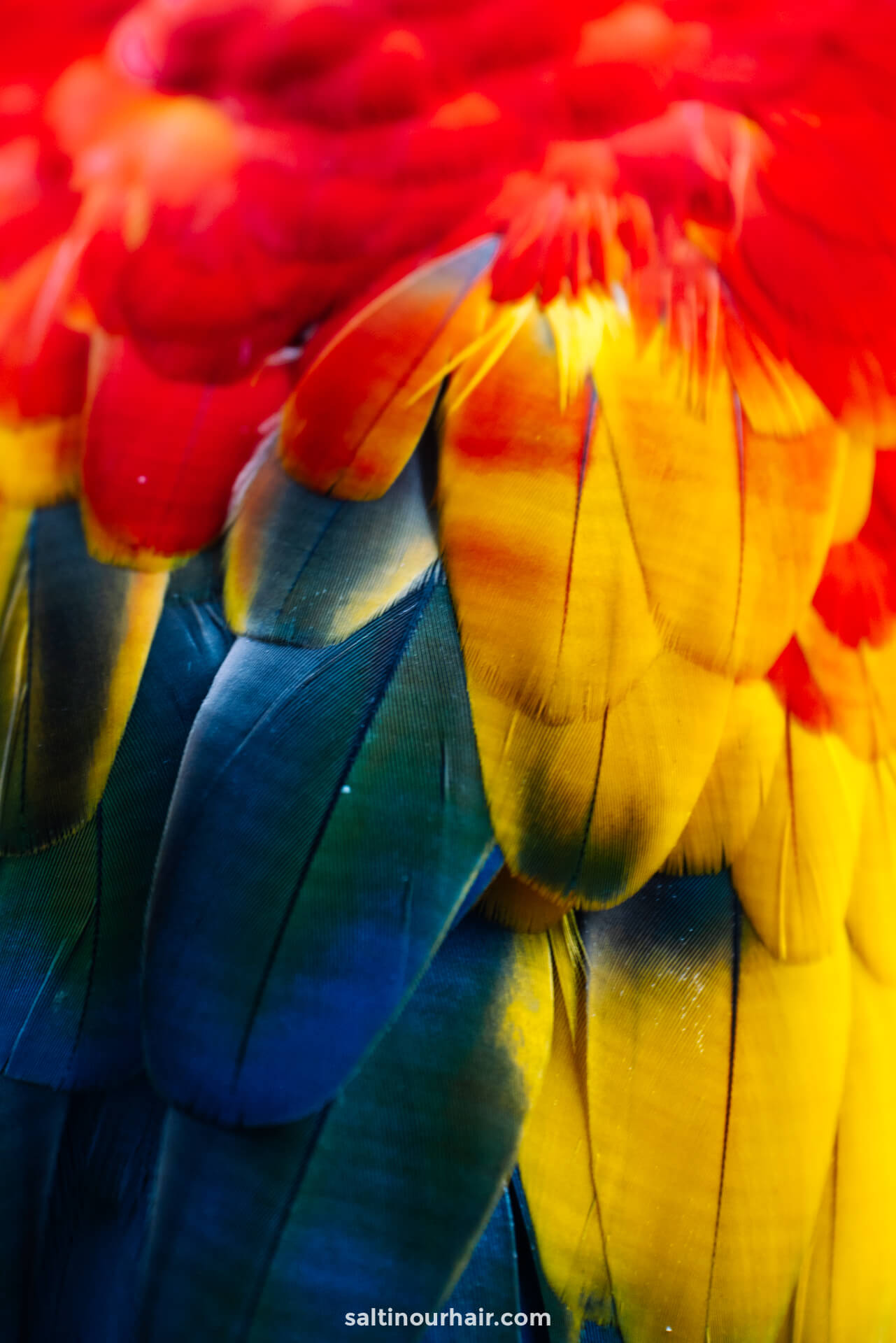
Day 1+2: Bogota (Start of your Colombia 2-Week Itinerary)
Arrive in the capital city of Bogota on day 1 of your Colombia itinerary (2 weeks). This fantastic city is the perfect beginning of your trip, offering spectacular sightseeing, incredible street art, and delicious food. The city is huge and feels very modern. However, dig a little deeper and find ancient neighborhoods, creative districts, and even extraordinary nature.
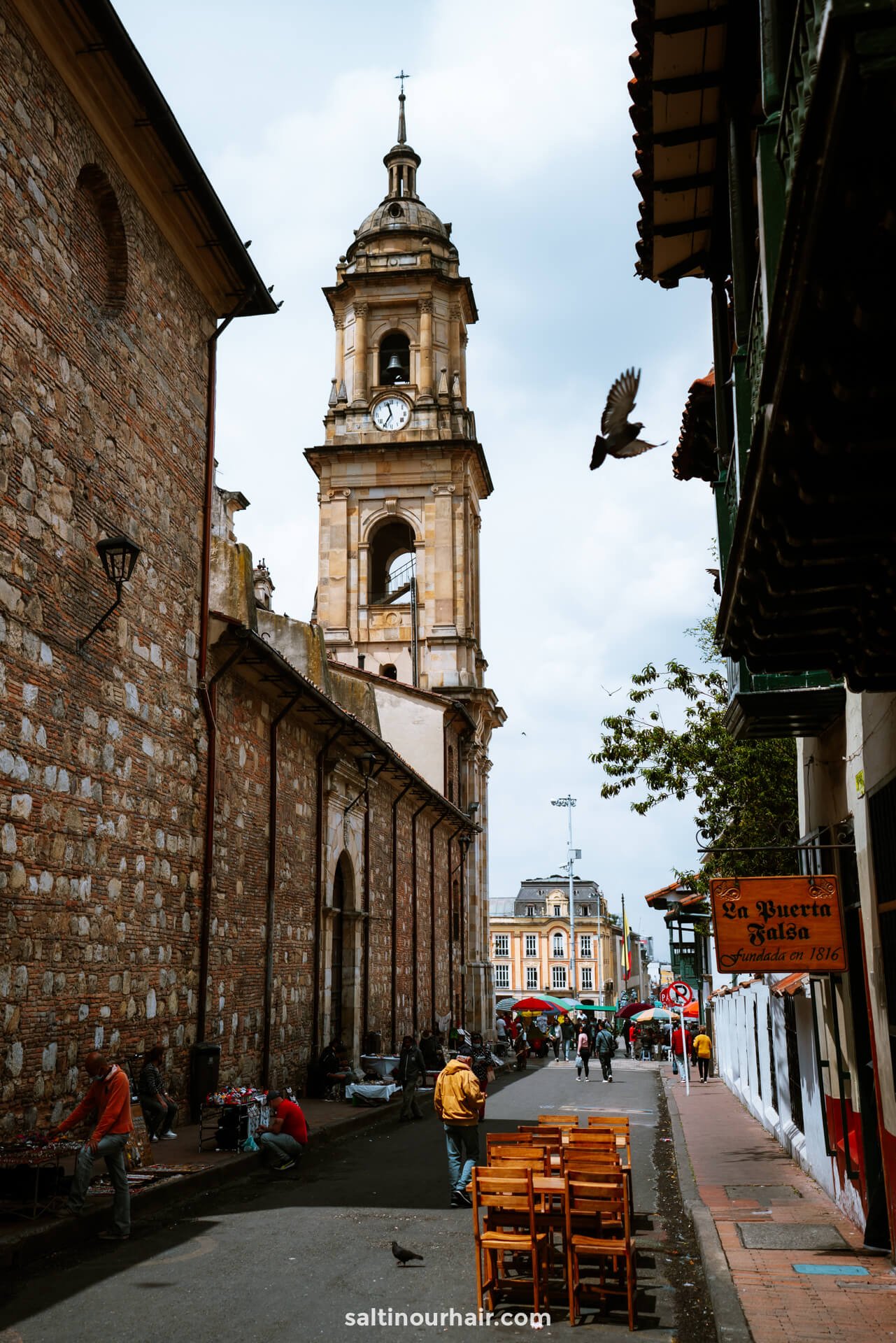
Street Art Tour in La Candelaria, Bogota
La Candelaria is one of the best places to hang out, with its colorful houses and village feel. You can also do many different street art tours here, as you’ll find many murals painted on the sides of houses and walls.
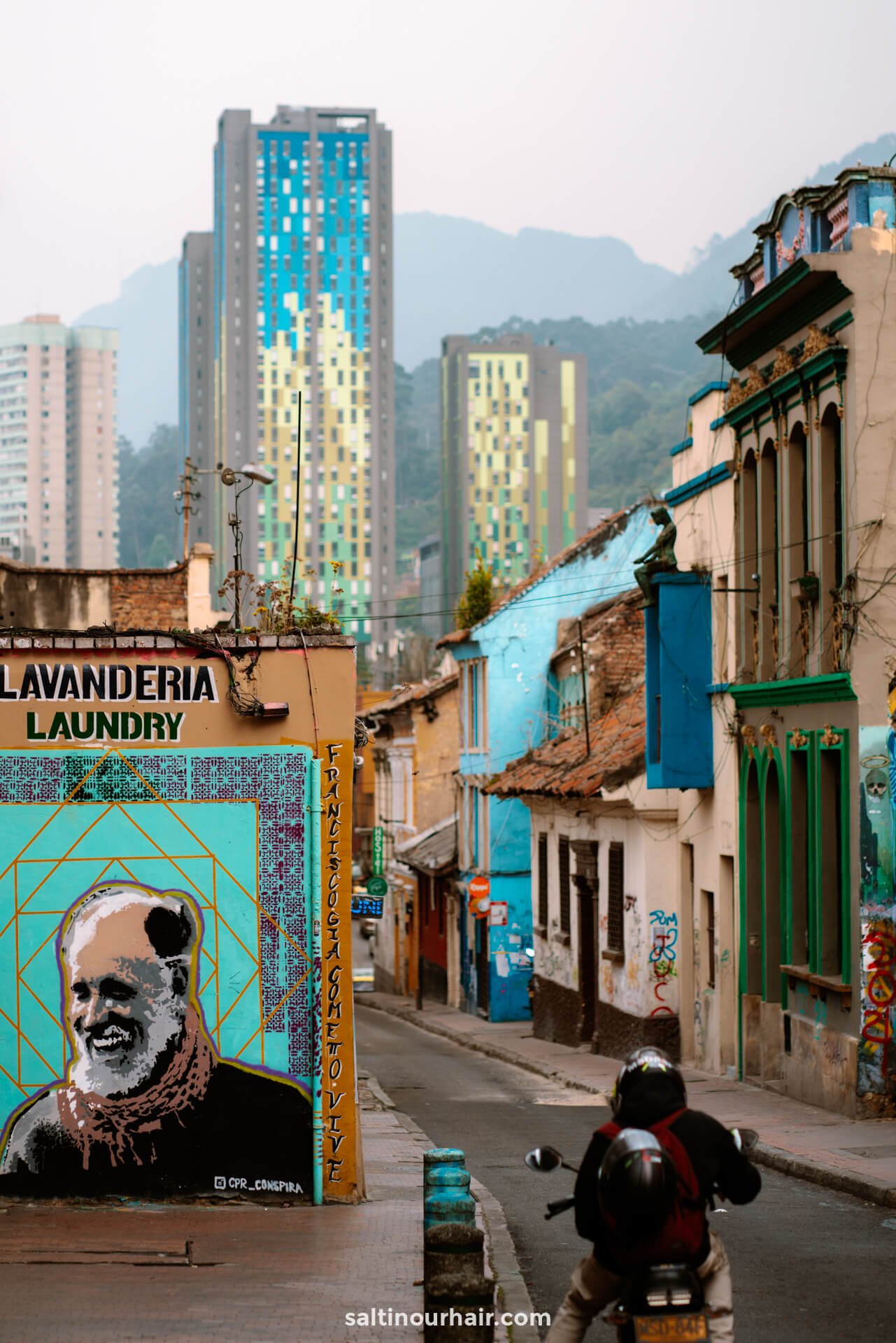
There used to be a lot of tension between street artists and police in Bogota, which prevented locals from expressing their creativity. These days, things are much better, making it a hub for graffiti. One of the most famous is CRISP, who also runs street art tours.
Book a street art tour here
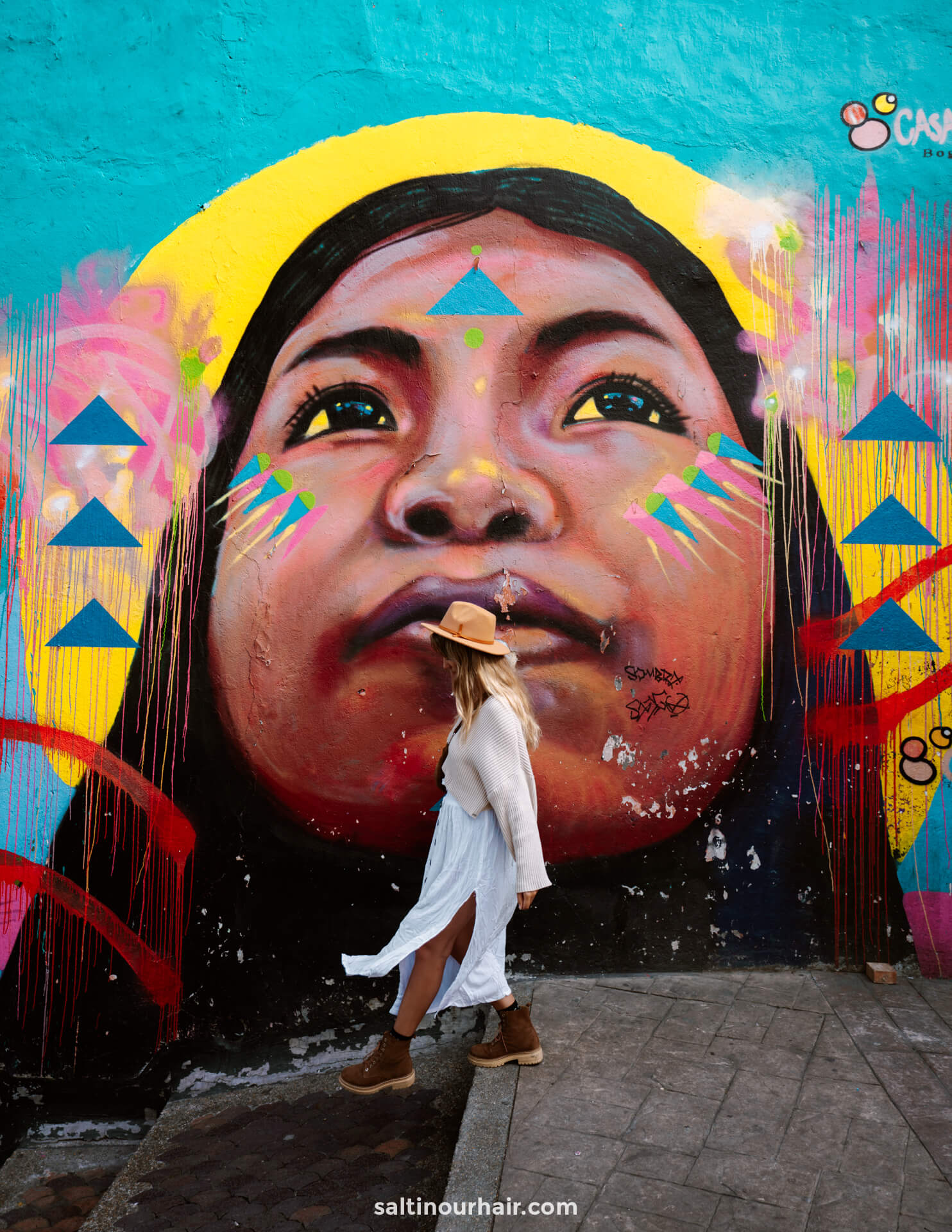
Tip: For the best viewpoint in Bogota, head to the peak of Monserrate Mountain. If you have more time in Bogota, you can hike up (it takes 2-4 hours, but the trail is only open in the morning). Alternatively, there is a cable car or funicular you can take instead.
Read: Best things to do in Bogota
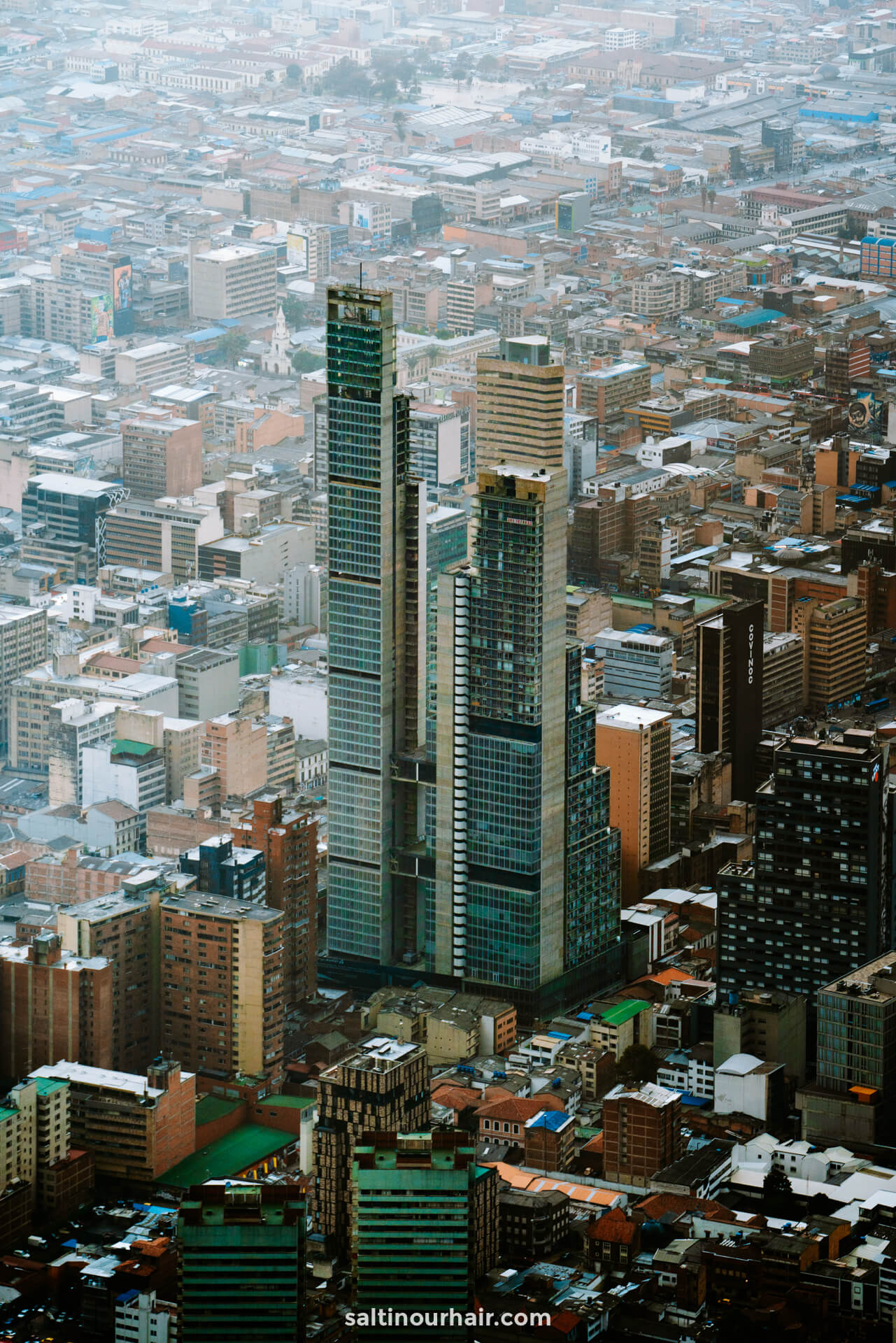
Where to Stay in Bogota
The most traditional and charming neighborhood is, without a doubt, La Candelaria. It draws creatives from all over the city, from painters and graffiti artists to experimental restaurants. You can find lots of great hotels in this area. It’s also one of the safest areas in the city. Find a hotel in Bogota .
Hotels in Bogota 😴
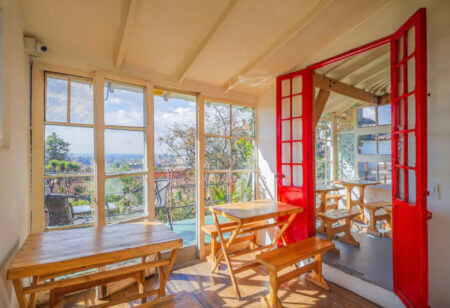
Day 3+4: Medellin
On day 3 of your Colombia 2-week itinerary, head for one of the most famous cities in the country: the sprawling metropolis of Medellin! This dynamic city has so much to offer, from the unique sculptures of Fernando Botero to the colorful buildings of the charming district of El Poblado.
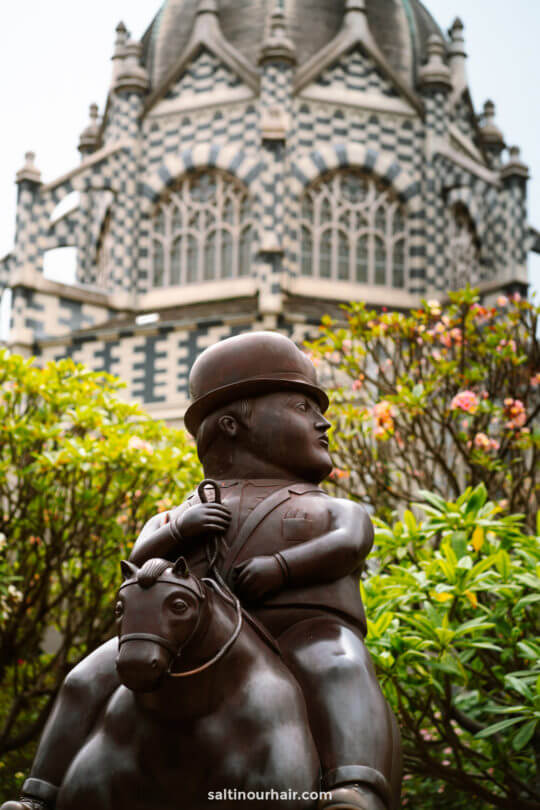
Taking a bike tour is a great way to get to know the city, cycling past some of the most important buildings like the Palace of Culture or one of the many beautiful churches. It’ll show you the diversity of life here, from graffiti-covered streets to towering skyscrapers and fancy restaurants.
Read: Best things to do in Medellin
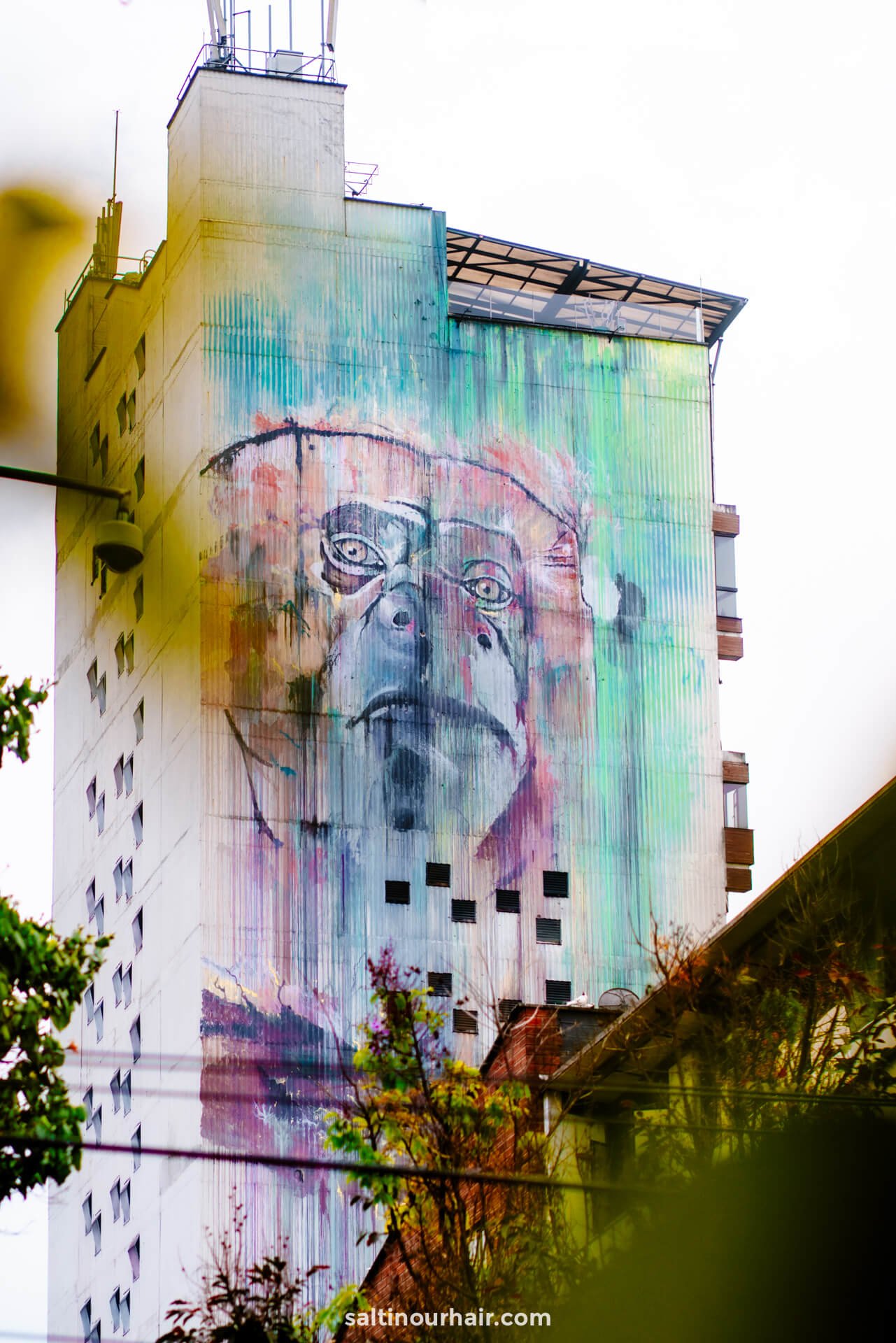
Comuna 13, Medellin (Must-See on Your Colombia 2-Week Itinerary)
An absolute must-do on your trip to Medellin is to visit Comuna 13, which was once Medellin’s most dangerous neighborhood, home to guerillas and dangerous gangs. The government set out an initiative, rewarding anyone who killed guerillas. This ended in disaster, with people shooting innocent civilians and dressing their bodies as guerillas to claim the benefits. Over 400 people died and are now buried in a mass grave in the area.
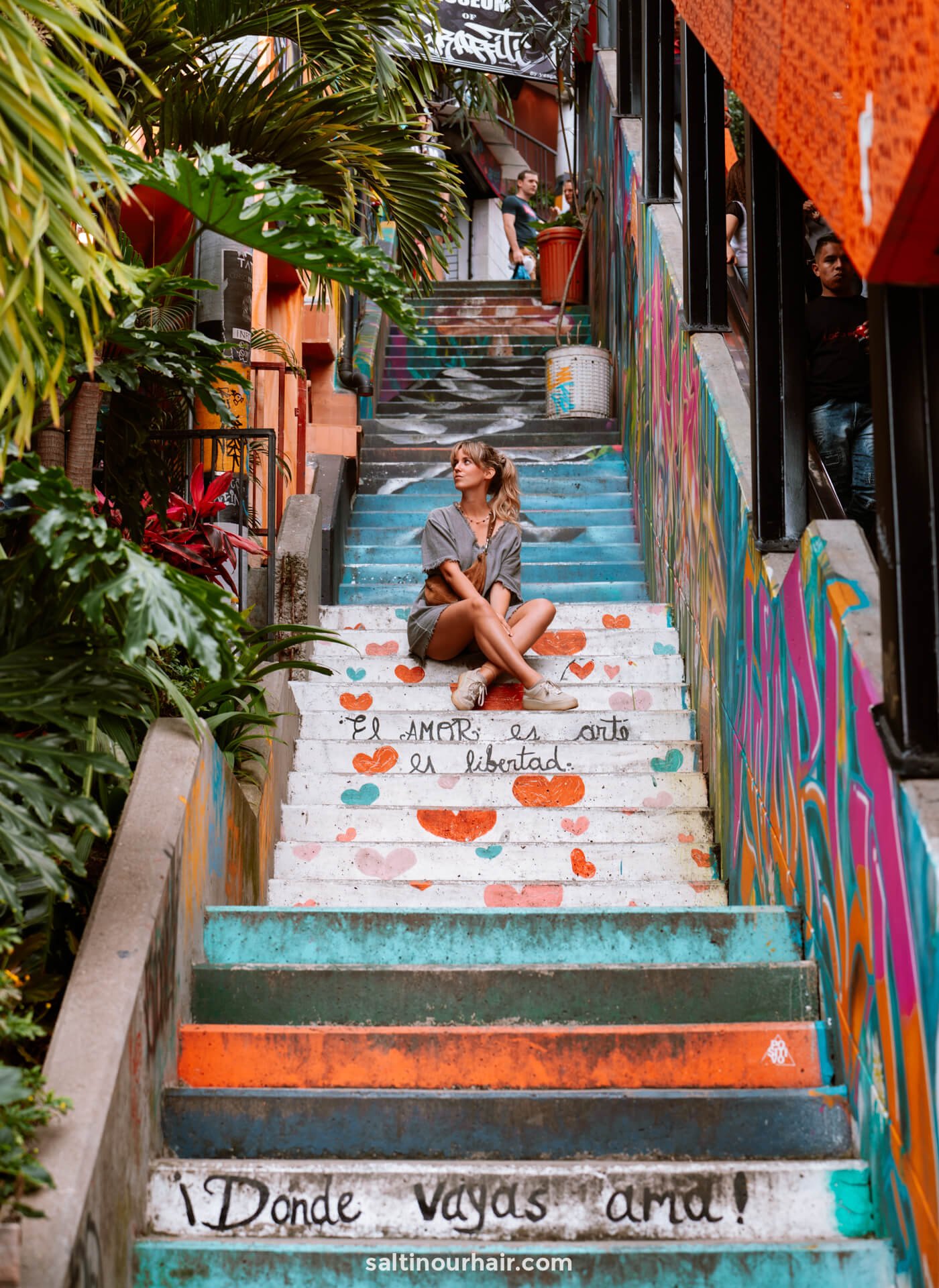
Since this troublesome time, the community has banded together, working to promote art, singing, and dance in the area. Now it’s one of the most vibrant areas in the whole city! Book a tour with Zippy Tours to learn more about Comuna 13 (every donation goes back to the community).
Tip: Got an extra day in Medellin? Consider visiting the nearby village of Guatape , home to a mammoth 10-million-tonne rock. You can climb the 675 zig-zagging steps to the top, where you’ll find panoramic views over the surrounding countryside and lakes below.
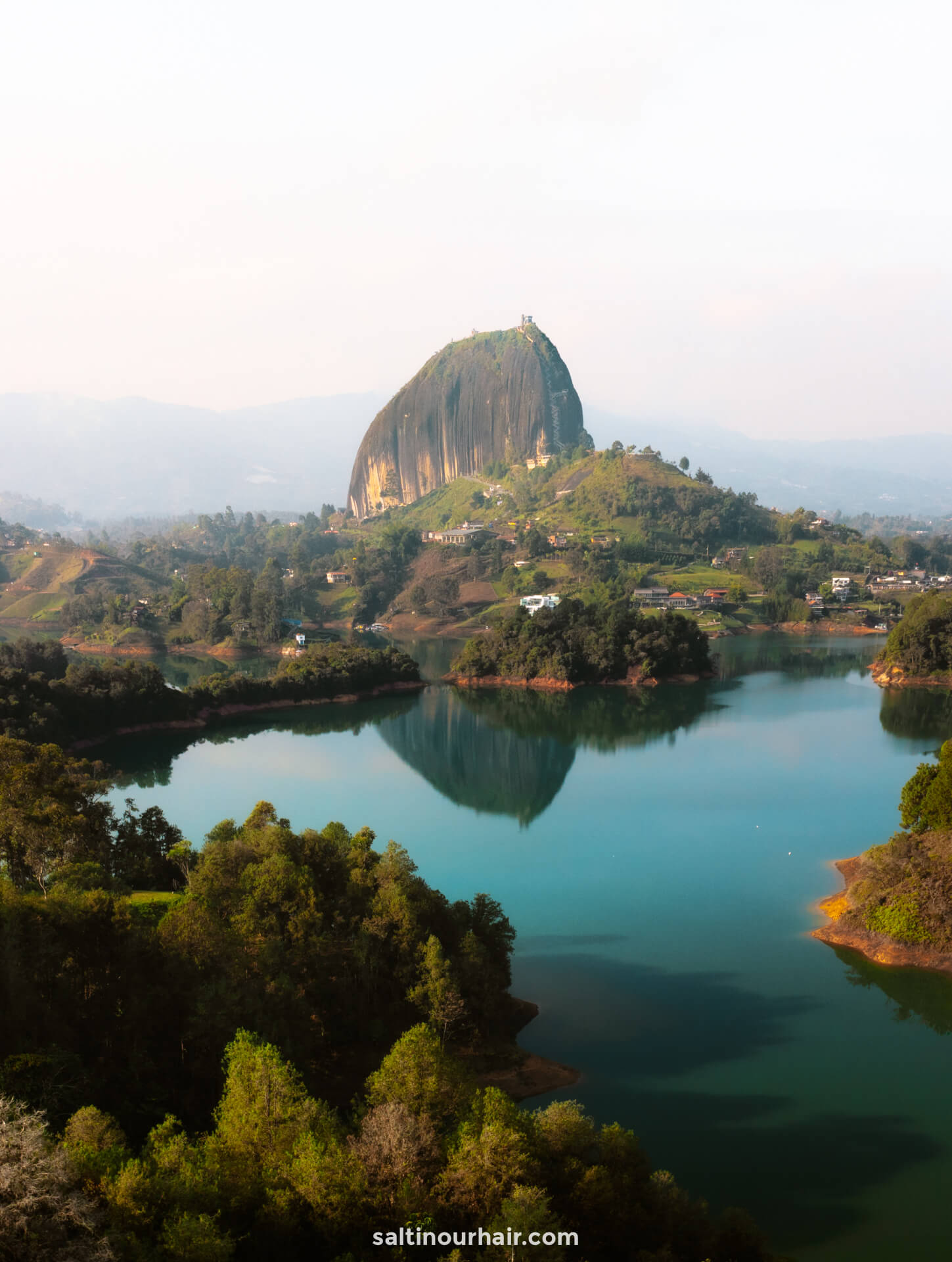
How to get from Bogota to Medellin
You can reach Medellin by bus or internal flight.
By Bus: Buses take 10-15 hours and are scheduled daily and at night. We recommend taking an overnight bus to save on time and accommodation (as long as you’re a good sleeper!).
Book your bus to Medellin
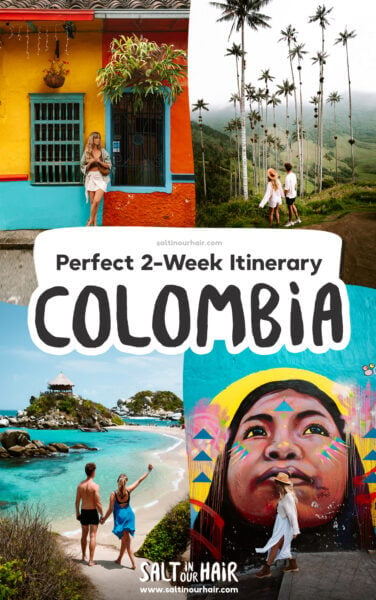
By Plane: Alternatively, if you’ve only got 2 weeks in Colombia and are short on time, you can take an internal flight to Medellin (1 hour).
Book your flight to Medellin
Where to Stay in Medellin
El Poblado is the safest neighborhood in Medellin and where many of the hotels are located. It’s an excellent area to base yourself in to see some of Medellin’s top attractions. Find the best accommodation options in Medellin .
Hotels in Medellin 😴
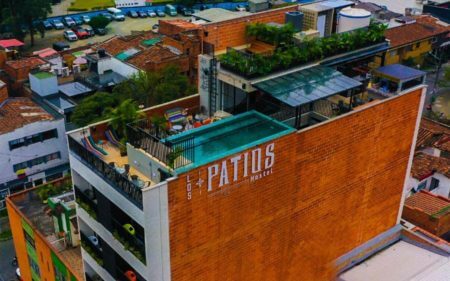
Day 5+6: Salento and Cocora Valley
Time to enjoy the incredible nature of Colombia! Salento is a beautiful village that sits up in the highlands of Colombia, a place full of cloud forests, coffee plantations, and waterfalls. The town is famous for its proximity to the remarkable Cocora Valley , home to the tallest palm trees in the world!
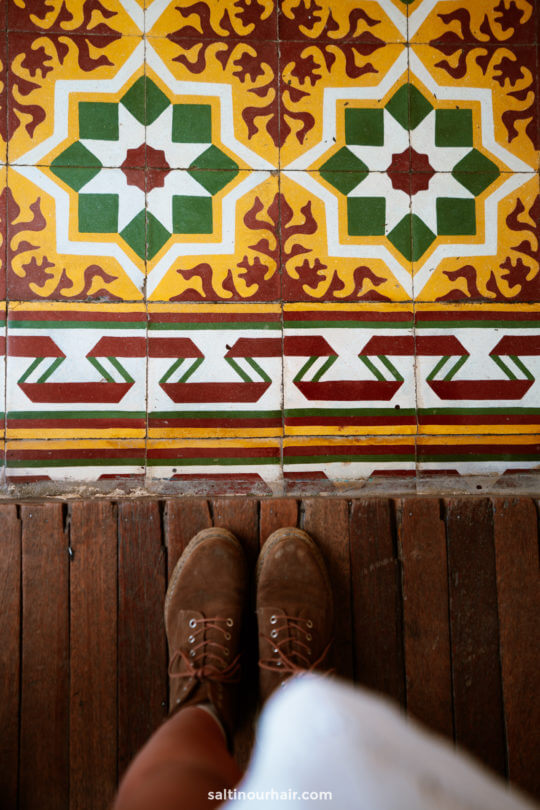
Spend day 5 of your Colombia 2-week itinerary exploring the town itself, with its colorfully painted doorways and cute boutique shops. There are loads of great places to get a coffee or a bit to eat or even play a game of Tejo (a traditional Colombian game).
Read: The ultimate Salento travel guide!
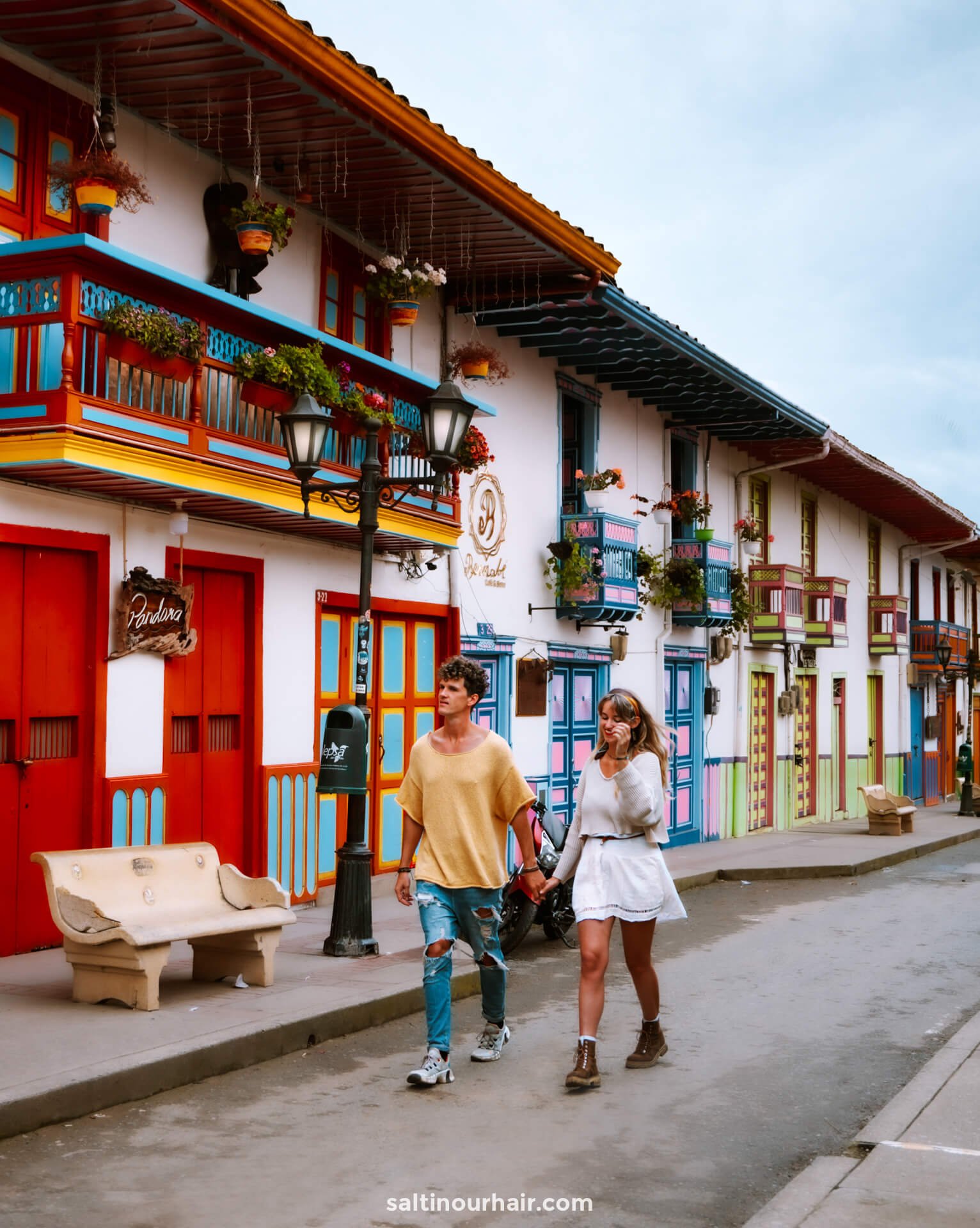
Cocora Valley Tour
On day 6, get up early, jump in an old-fashioned jeep (a Willy), and head for the fantastic landscapes of the Cocora Valley. You can choose from a shorter or longer hiking trail. Both take you among the towering palms, over the rolling green hills, and up high among the low-lying clouds and mist. Exploring the Cocora Valley by horseback is also possible for a different perspective of this magical scenery.
Book your tour to Cocora Valley
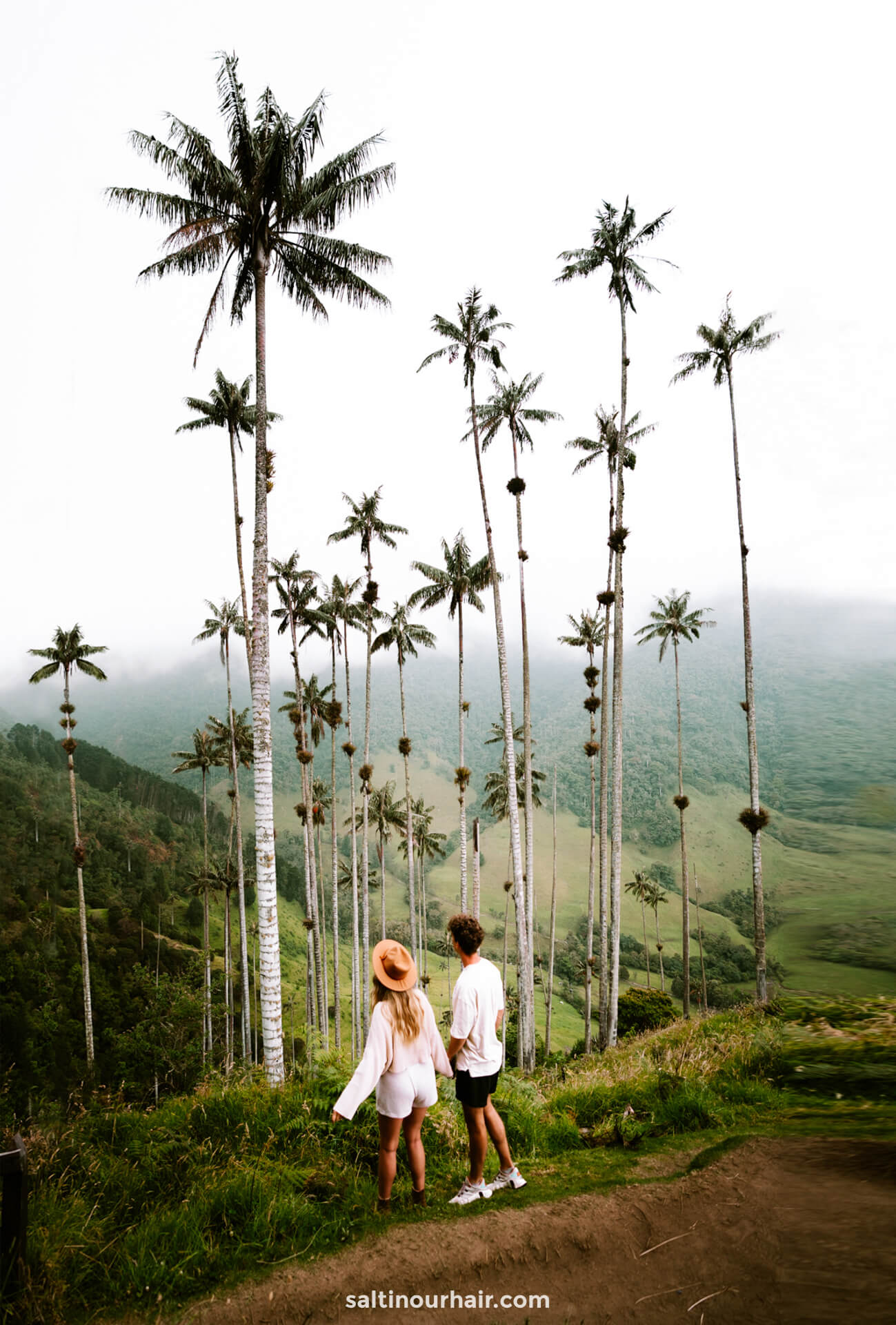
How to get from Medellin to Salento
By Plane: The fastest way to get to Salento is by flying from Medellin. However, Salento doesn’t have its own airport. You’ll need to fly to Pereira (45 minutes) and then take a taxi or a small bus from here (1 hour). The road is good, just a little windy sometimes, so take anti-nausea tablets if you get motion sickness.
Book your flight to Salento
By Bus: The cheapest way is by bus. Buses leave Medellin regularly and take 5-7 hours (although it can take more depending on traffic, accidents, road closures, etc.). They stop in Pereira, where you’ll need to change onto a local bus to Salento. If you have a bit more time, we recommend taking the bus as it’s a more sustainable way to travel.
Book your bus to Pereira
Where to Stay in Salento
Salento town has lots of great accommodation options. The town is small, so you can stay anywhere and be close to all the local things to do (staying on or close to Calle Real will put you the most central). Find all hotels in Salento .
Hotels in Salento 😴
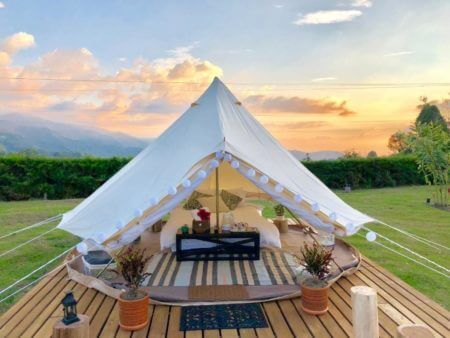
Day 7+8: Minca (Half-Way on Your Colombia 2-Week Itinerary)
Relax and unwind on days 7 & 8 of your Colombia 2-week itinerary. Minca is just the place for it! This beautiful destination sits high on the hilltops, sandwiched between the Caribbean Coast and the Sierra Nevada Mountains.
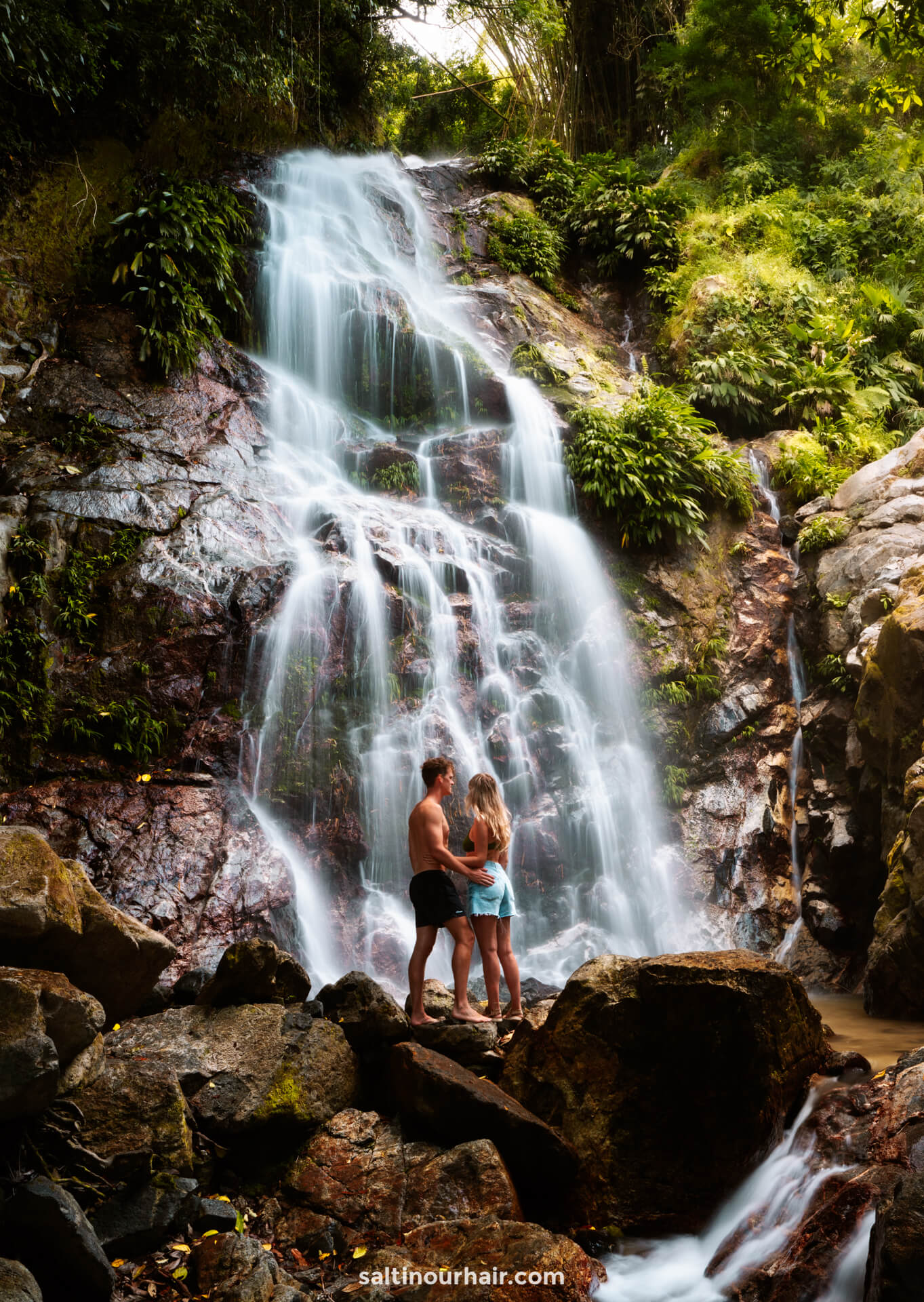
There’s not much to do in the village itself, but the surrounding area is green and luscious. Most of the hotels and hostels take advantage of the fantastic views of Minca, offering terraces, infinity pools, and even giant hammocks where you can relax and look out into the distance.
Did you know? Minca is home to the oldest coffee plantation in the country: Finca la Victoria. Book a tour here to learn more about the coffee-making process.
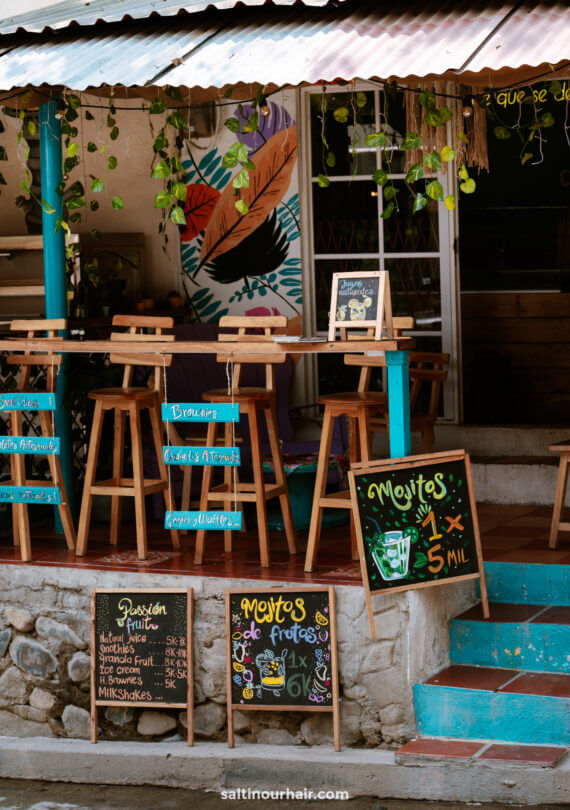
How to get from Salento to Minca
Take a small bus from Salento back to Pereira airport. From here, you can fly internally to Santa Marta airport, which is 1 hour away from Minca.
Book your flight to Santa Marta
Transfer from Santa Marta to Minca
Arrange a transfer with your hotel in Minca ahead of time. You can also take a taxi from Santa Marta airport, which takes around 45 minutes and costs 90,000 COP (21.50 USD).
The cheapest option is to leave the airport and head into Santa Marta town. Find Estacion de Minca (Calle 12, Carrerra 9), where you can take a shared taxi (Colectivo) to Minca. The price is around 9,000 COP (2.25 USD) per person.
Read: 8 Best things to do in Minca, Colombia
Where to Stay in Minca
From sustainable eco-lodges to treehouse hotels, there are many beautiful places to stay in Minca. The ones with the best views tend to be located outside the town, so be aware that you’ll need to pay for motorbike taxis or walk to get around. See all hotels in Minca .
Hotels in Minca 😴
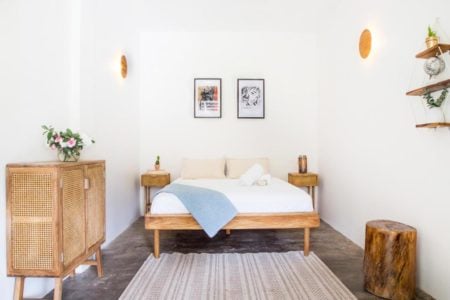
Day 9: Tayrona National Park
Sitting on the coast just below Minca is the extraordinary Tayrona National Park, a wild and beautiful landscape of jungle, boulders, and some of the most incredible beaches we’ve ever seen. The white sand and turquoise blue waters you’ll find here are exactly what you’d expect of the Caribbean!
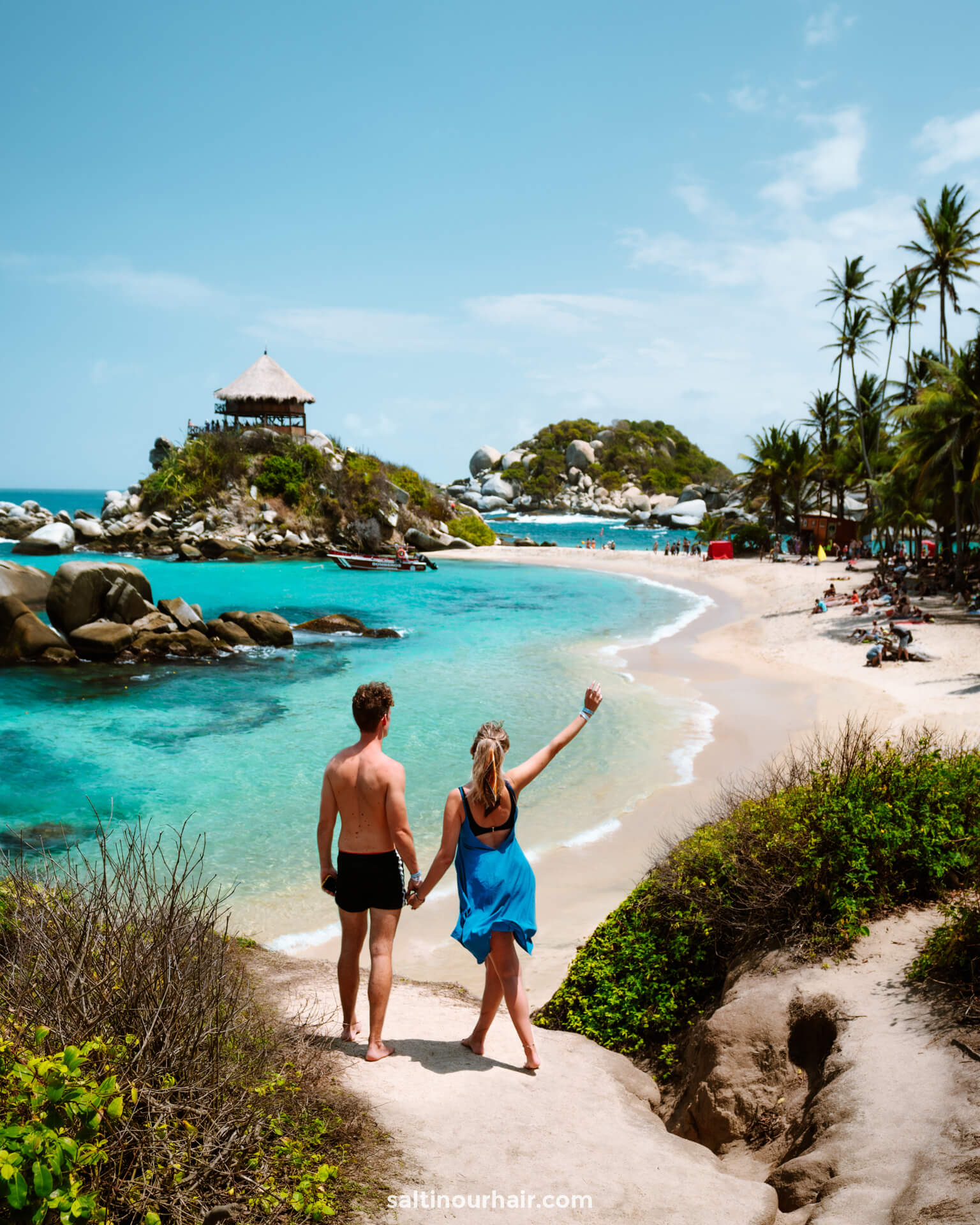
Travelers come here to disconnect and enjoy the tranquility of nature, enjoying the hiking trails in the park, spotting wildlife, and snorkeling off the shore. Get off-grid on your Colombia 2-week itinerary and stay in one of the open-air hammocks or camp—enjoying a night under the bright stars.
Entrance Fee: 68,500 COP (± 16 USD) during the high season. 57,500 COP (± 13.5 USD) in the low season. Please note that you’ll also have to pay mandatory park insurance, which costs 10,000 COP (± 2.5 USD). Make sure to arrive at the park entrance early, as they only allow a specific number of visitors each day.
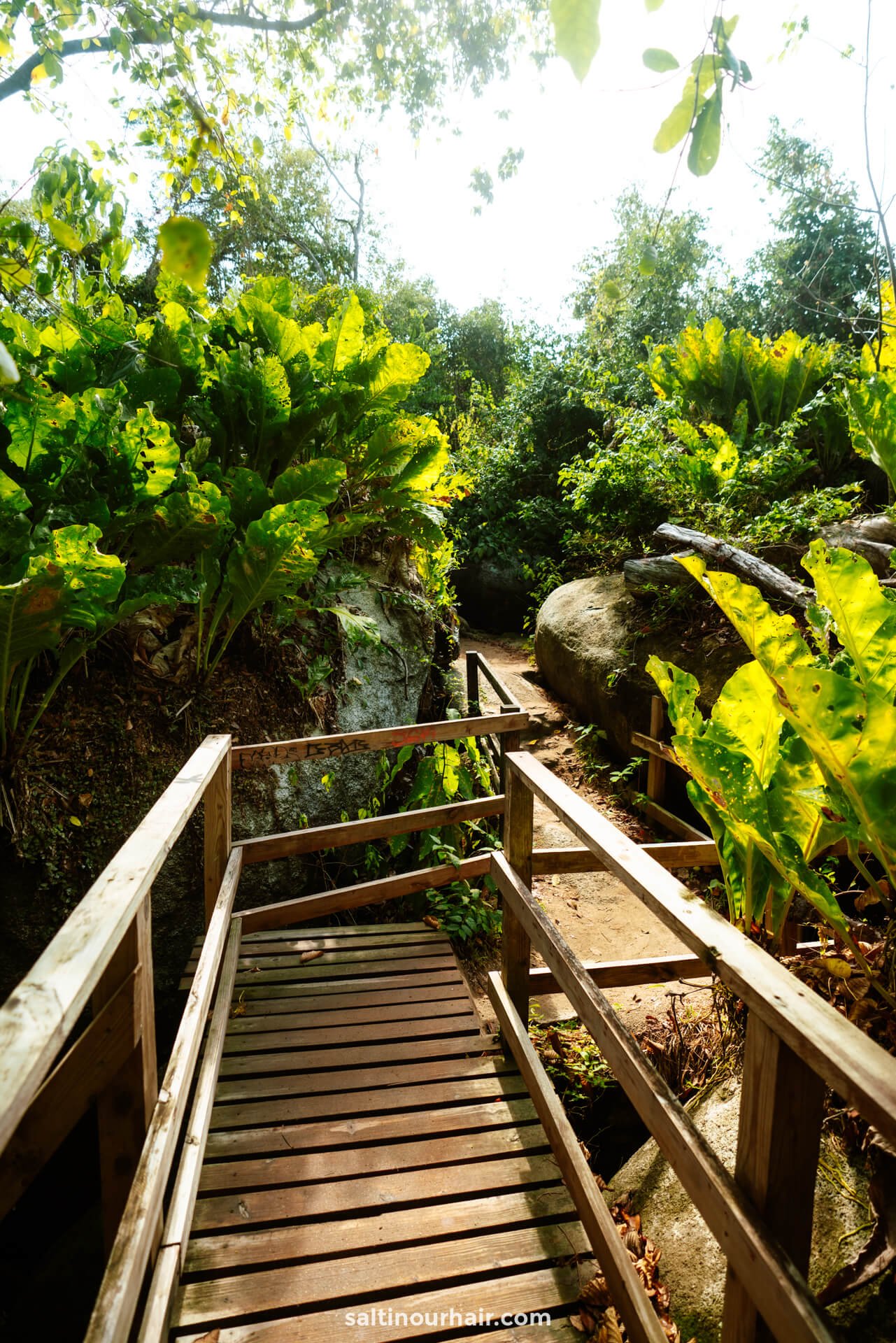
How to get from Minca to Tayrona National Park
You can arrange for a taxi to take you from Minca to Tayrona National Park (it should take 50-60 minutes). Prices for taxis can range from 60,000-80,000 COP (14 – 19 USD).
Alternatively, there are shared taxis (Collectivo) that you can take from Minca back to Santa Marta. From here, you can jump on the local bus, which runs between Santa Marta and Palomino . This local bus leaves every 30 minutes and costs 7000 COP (1.70 USD) to the El Zaino entrance at Tayrona (the main entrance to the park).
Everything you need to know about Tayrona National Park!
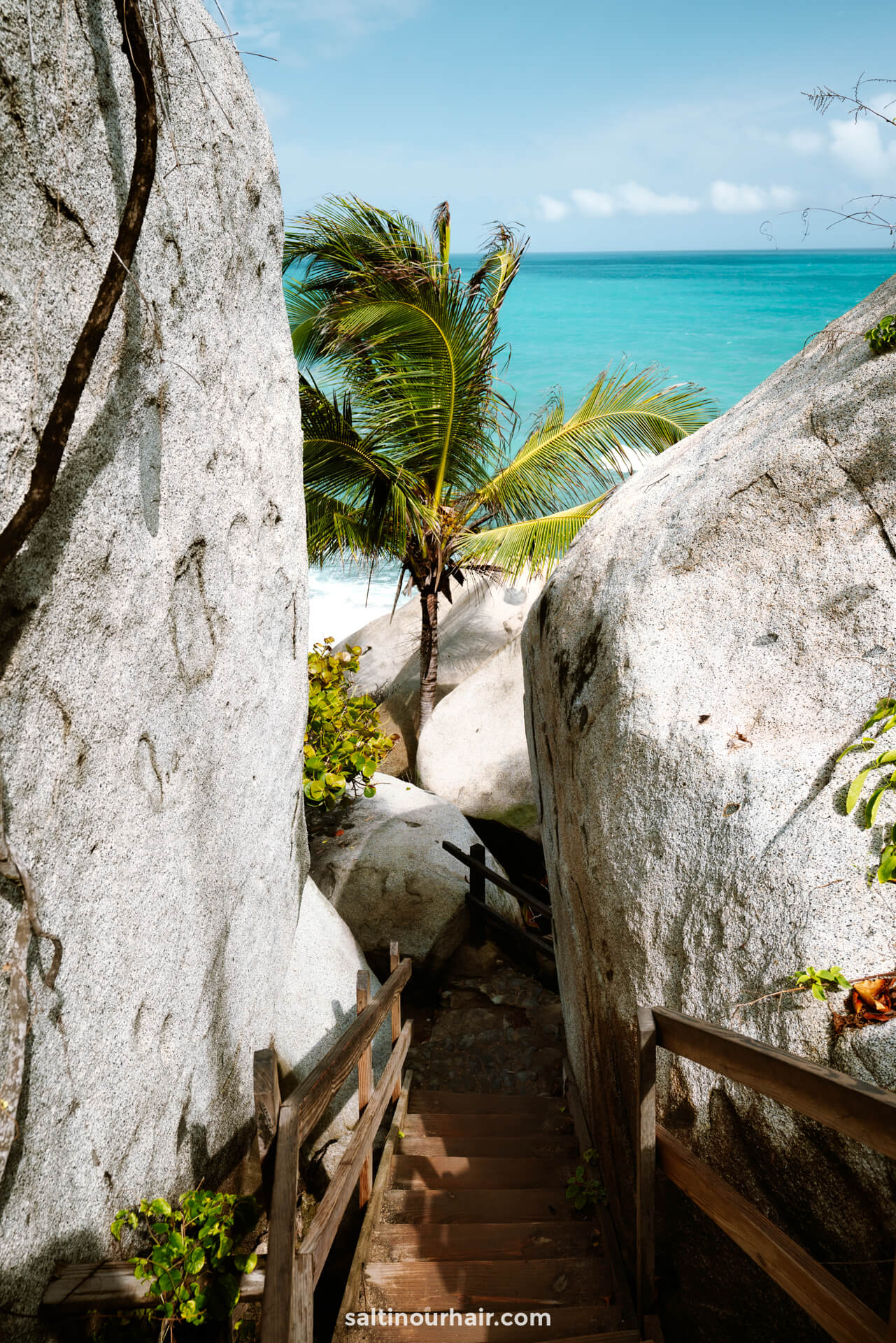
Where to Stay in Tayrona
To really enjoy Tayrona National Park to the fullest, stay in one of the hammocks or tents and enjoy a night under the stars. There are a couple more comfortable options within the park, but most hotels are located on the road outside the park entrance. See all accommodations near Tayrona National Park .
Hotels in Tayrona 😴
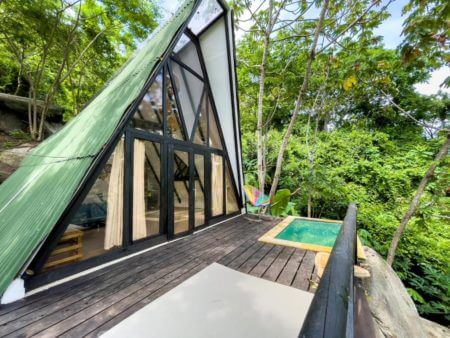
Day 10+11: Palomino
Follow the coast east along from Tayrona, and you’ll hit the sleepy beach town of Palomino. Enjoy a few days of beachside living; go for barefoot walks on the sand, sleep in the shade of the palms, and watch people forage among the mango trees. Everything is colorful in Palomino, from the painted shacks and tropical fruit juices to the rainbow-colored birds flying in between the flowers.
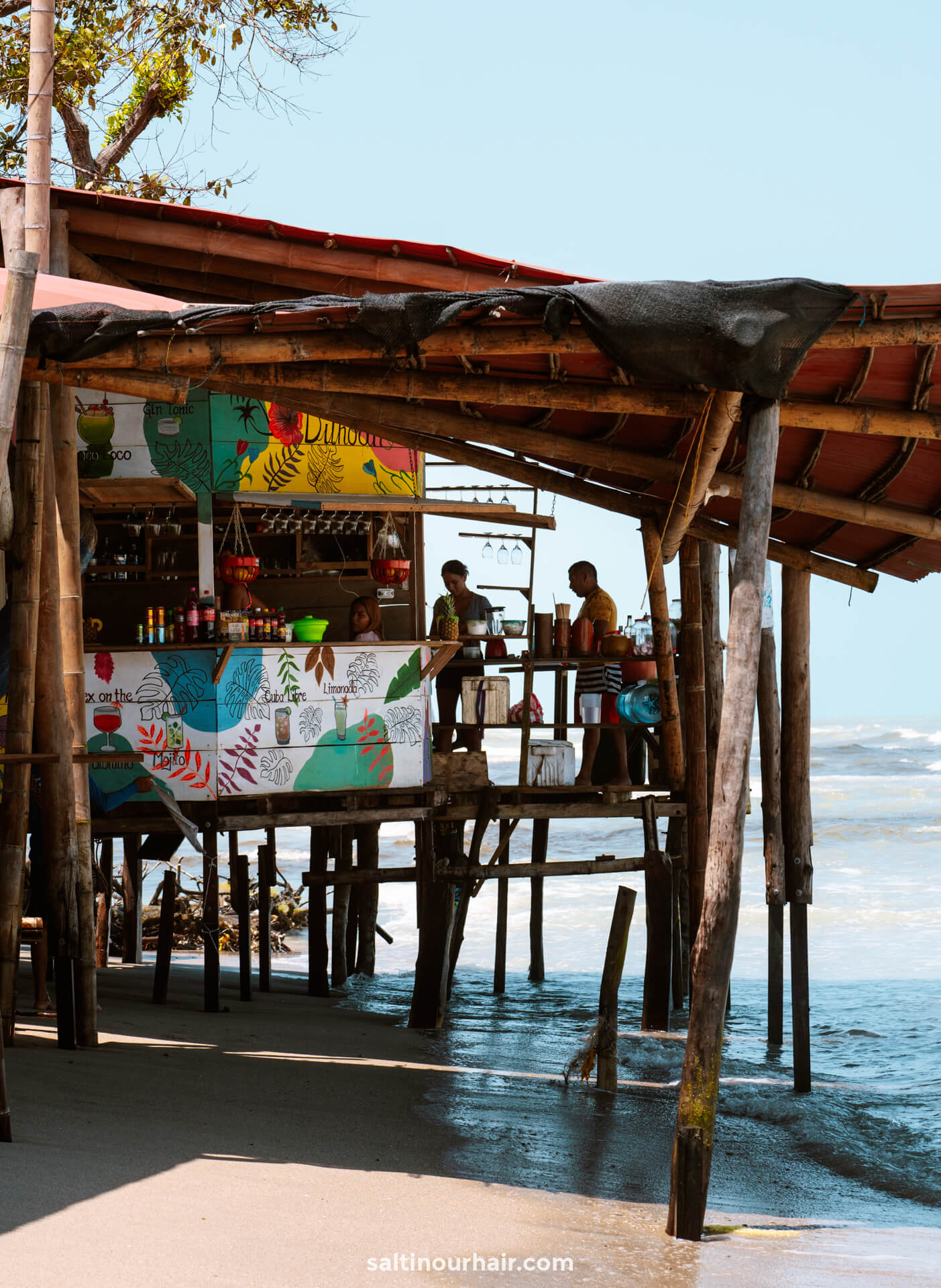
You could easily spend your time in Palomino just relaxing and enjoying all the great places to eat. However, if you want some action, there are plenty of things to do—for example, tubing along the wide-open river nearby or surfing off the coast.
Read: Best Things to do in Palomino, Colombia
Tip: Love dogs like us? Join a tour with the Palomino dog shelter. They’ll take you on a riverside picnic with the dogs, where you can cuddle, play, and swim with them. Book your tour on their Instagram .
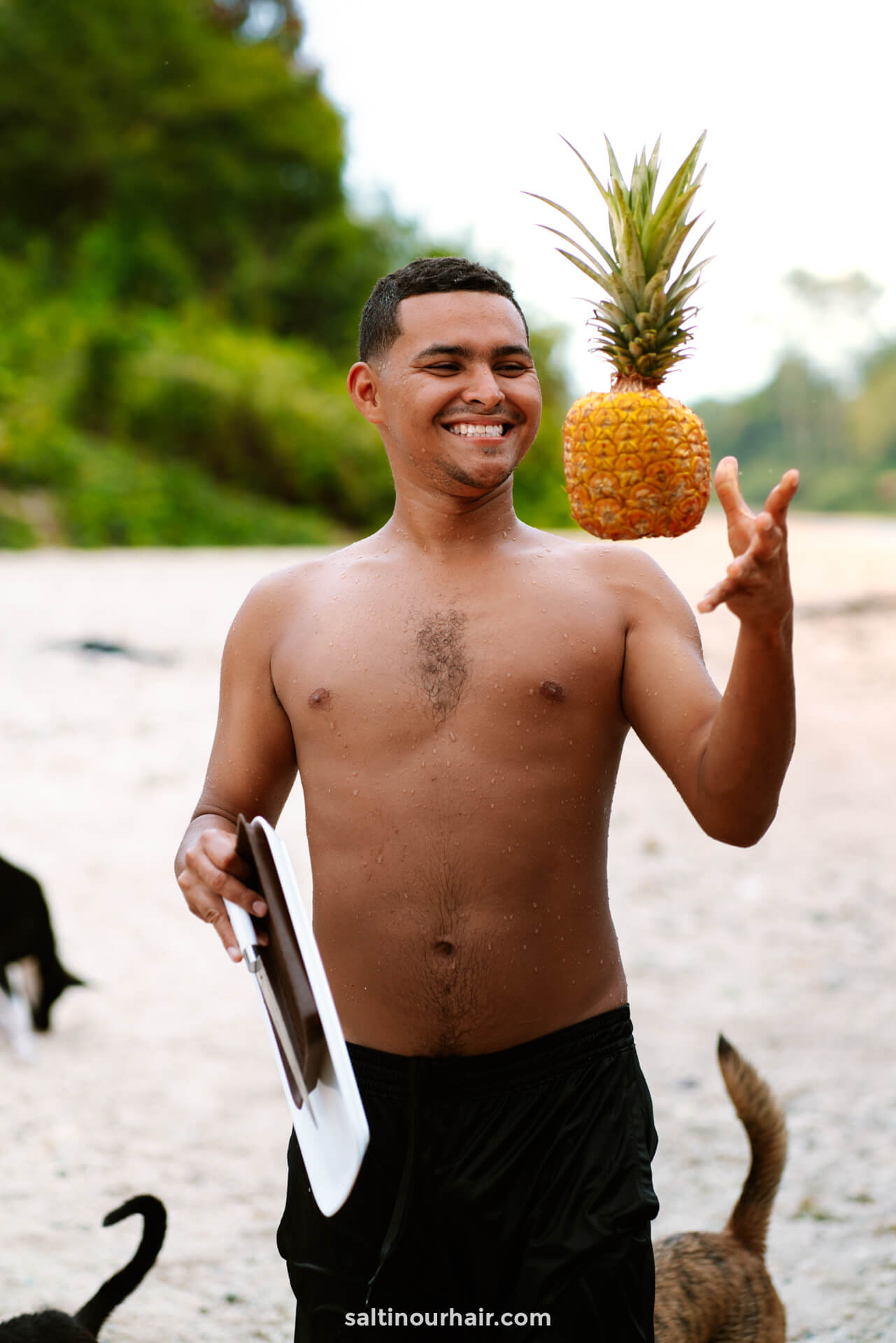
How to get from Tayrona National Park to Palomino
By Bus: A local bus travels between Santa Marta and Palomino, stopping at Tayrona on the way. From the trail’s end in Tayrona to the main entrance is 1 hour of walking. You can skip this and take a motorbike taxi (as the walk isn’t anything special).
The bus arrives just outside the national park entrance (you have to wave down the driver). The ticket price is 8,000-10,000 COP (1.85 – 2.30 USD)
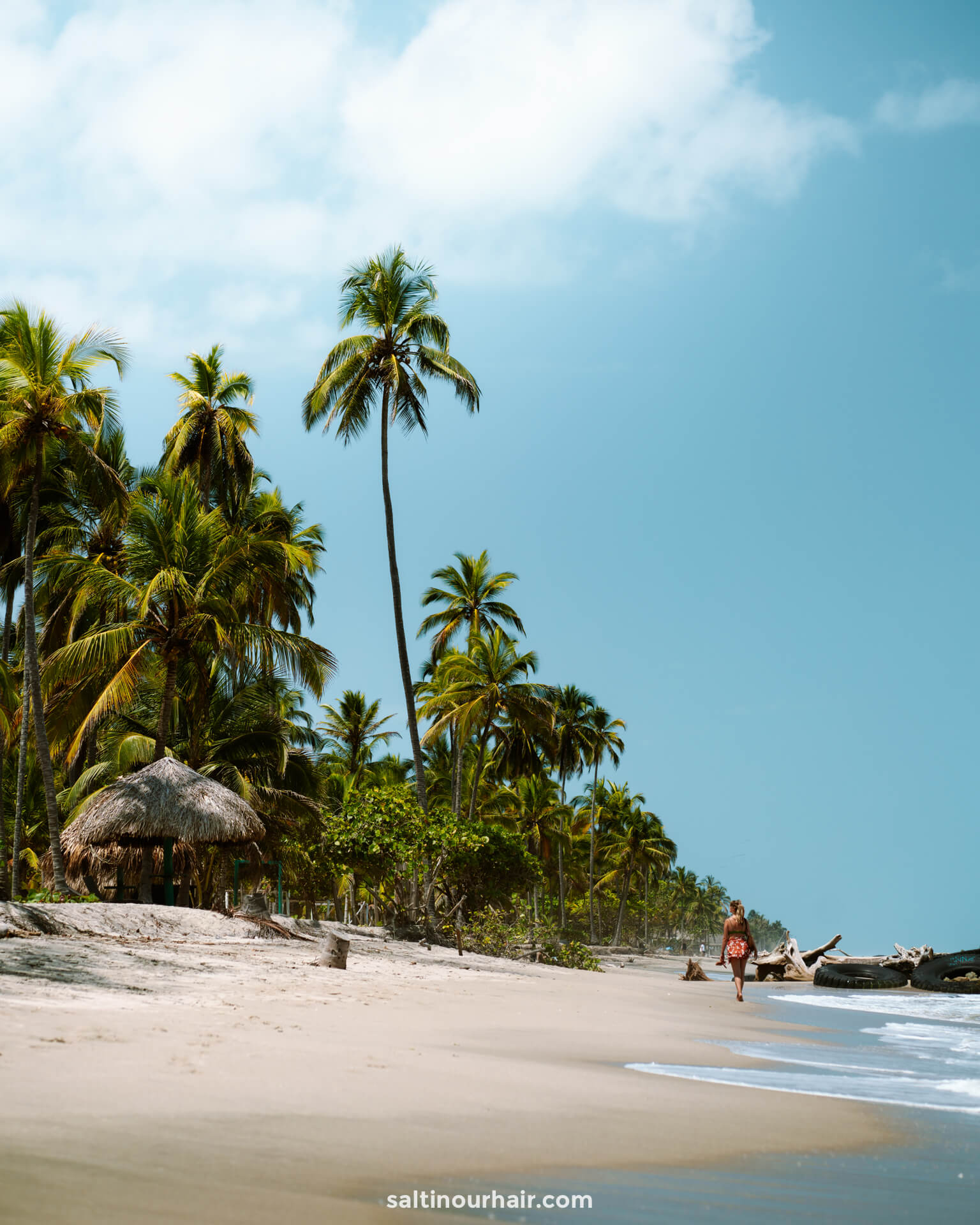
Where to Stay in Palomino on your Colombia 2-Week Itinerary
We stayed at Casa del Pavo Real, which was fantastic! The service was terrific, and it’s also one of the best food spots in town. Wherever you stay in Palomino, we recommend choosing a place with a swimming pool. This is because many of the beaches in this area are unsafe to swim in (the water has strong currents), so you’ll want a swimming pool to cool down. See all hotels in Palomino .
Hotels in Palomino 😴
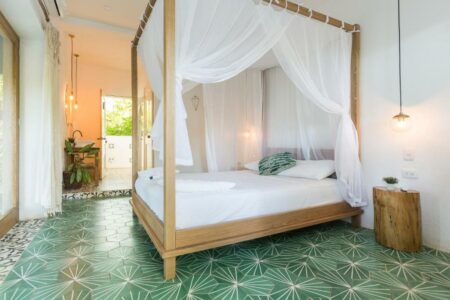
Day 12+13: Cartagena
Spend the final days of your Colombia itinerary (2 weeks) in the incredible city of Cartagena. Out of all the cities you’ve seen during your 2 weeks in Colombia , this one is the most surprising. Instead of the sprawling tower blocks you’ll find in Bogota and Medellin, discover beautiful colonial buildings and streets that wouldn’t look out of place in southern Europe !
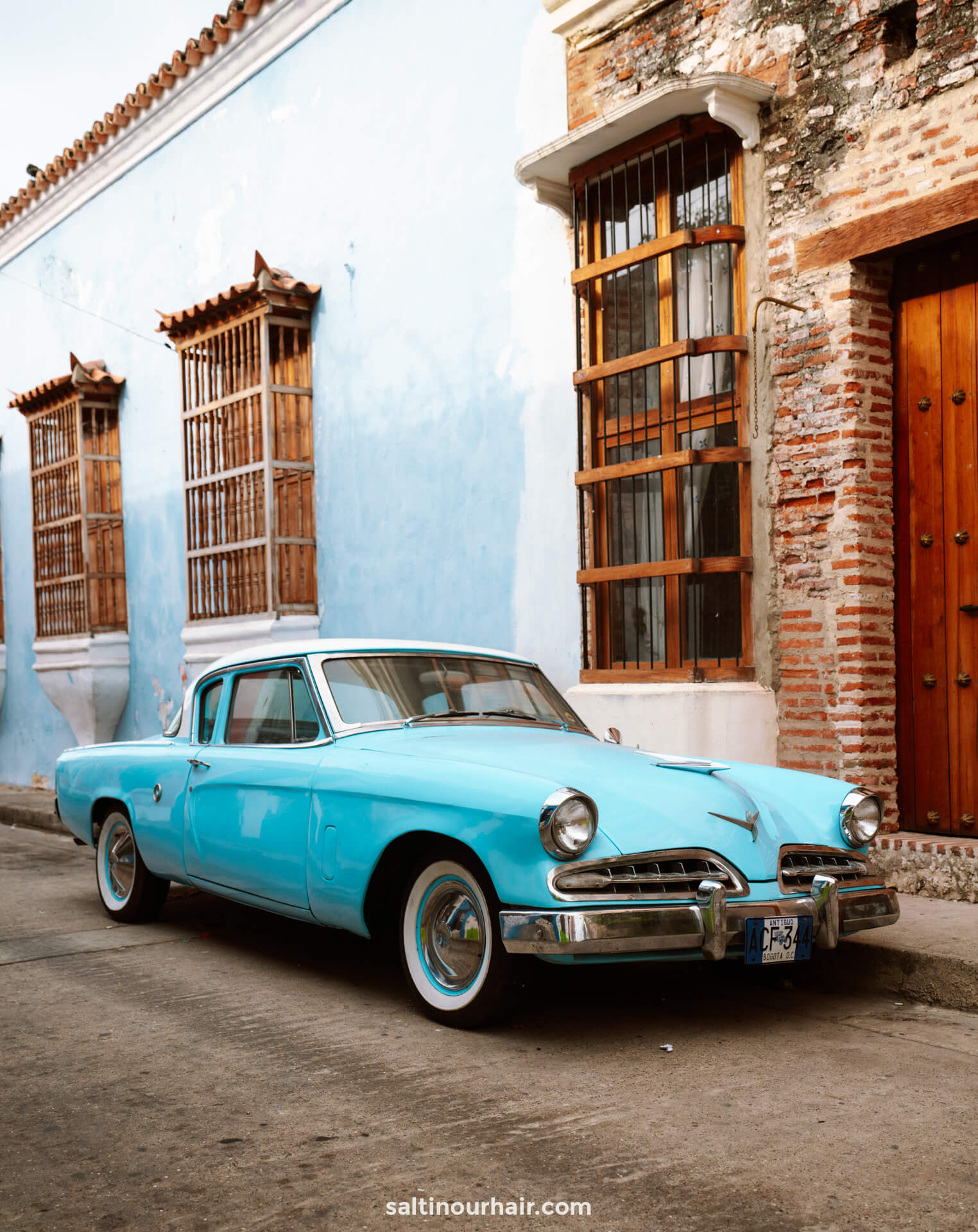
Head straight for the city’s old walls, and discover the historic center with its colorfully painted houses and the labyrinth of streets. Stop and buy some tropical fruit from the Cartagena ladies (you’ll know who they are immediately from their colorful dresses and fruit baskets atop their heads).
Read: 10 best things to do in Cartagena
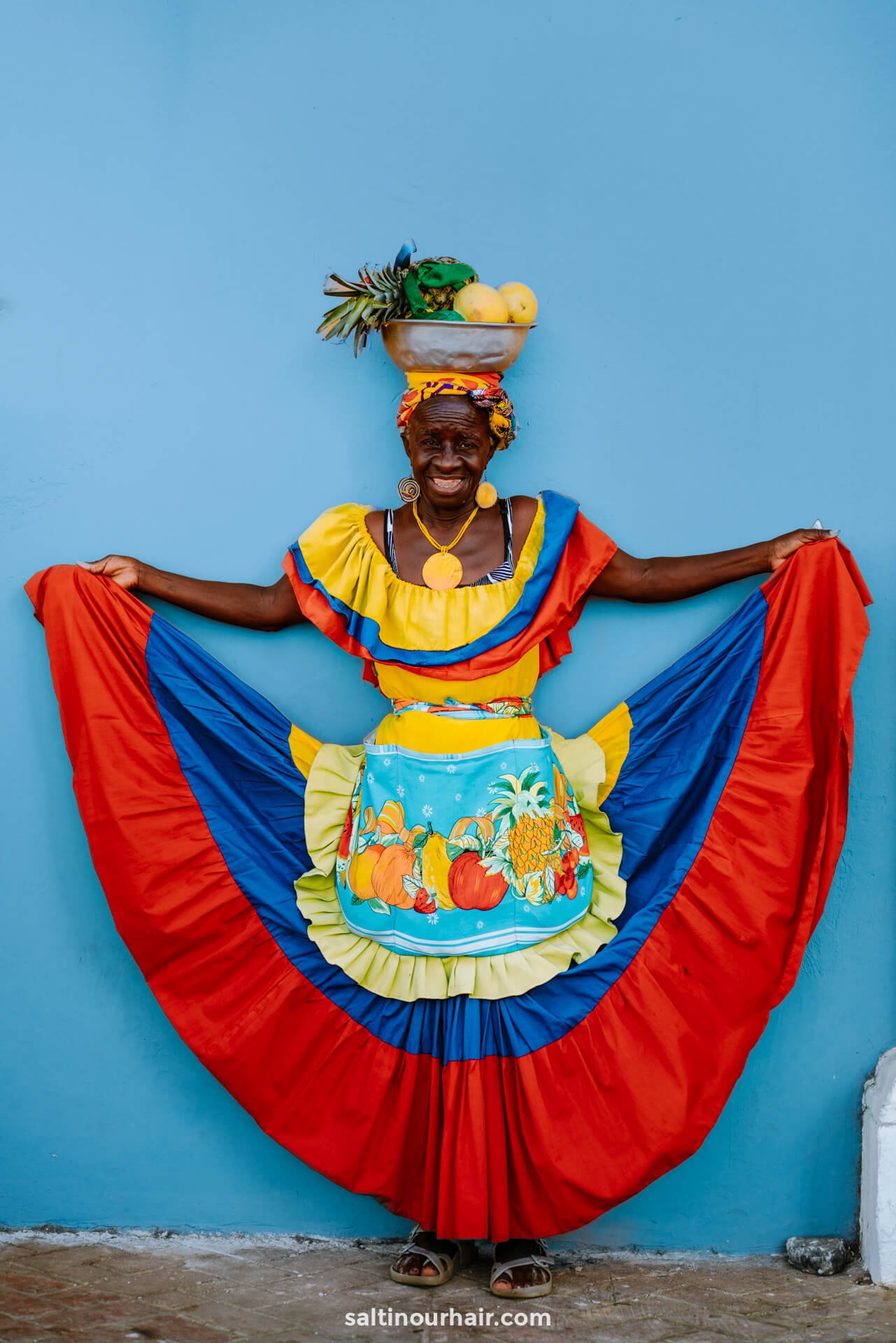
Rosario Islands Tour
On your second day, consider taking a boat tour to one of the nearby islands off the coast. For example, the stunning Rosario Islands with their clear turquoise water and white sandy beaches. Stop for a beach picnic, relax in the sun, or snorkel and discover the beautiful marine life. Best of all, this group of 28 islands is only a 1-hour boat ride from the city! Book your boat tour to the Rosario Islands here .
Tip: For a shorter day trip, choose the Baru Islands instead, which are just 45-minutes away by boat. The atmosphere at the weekend is super lively, as locals flock to the islands for the beach bars, music, and cocktails.
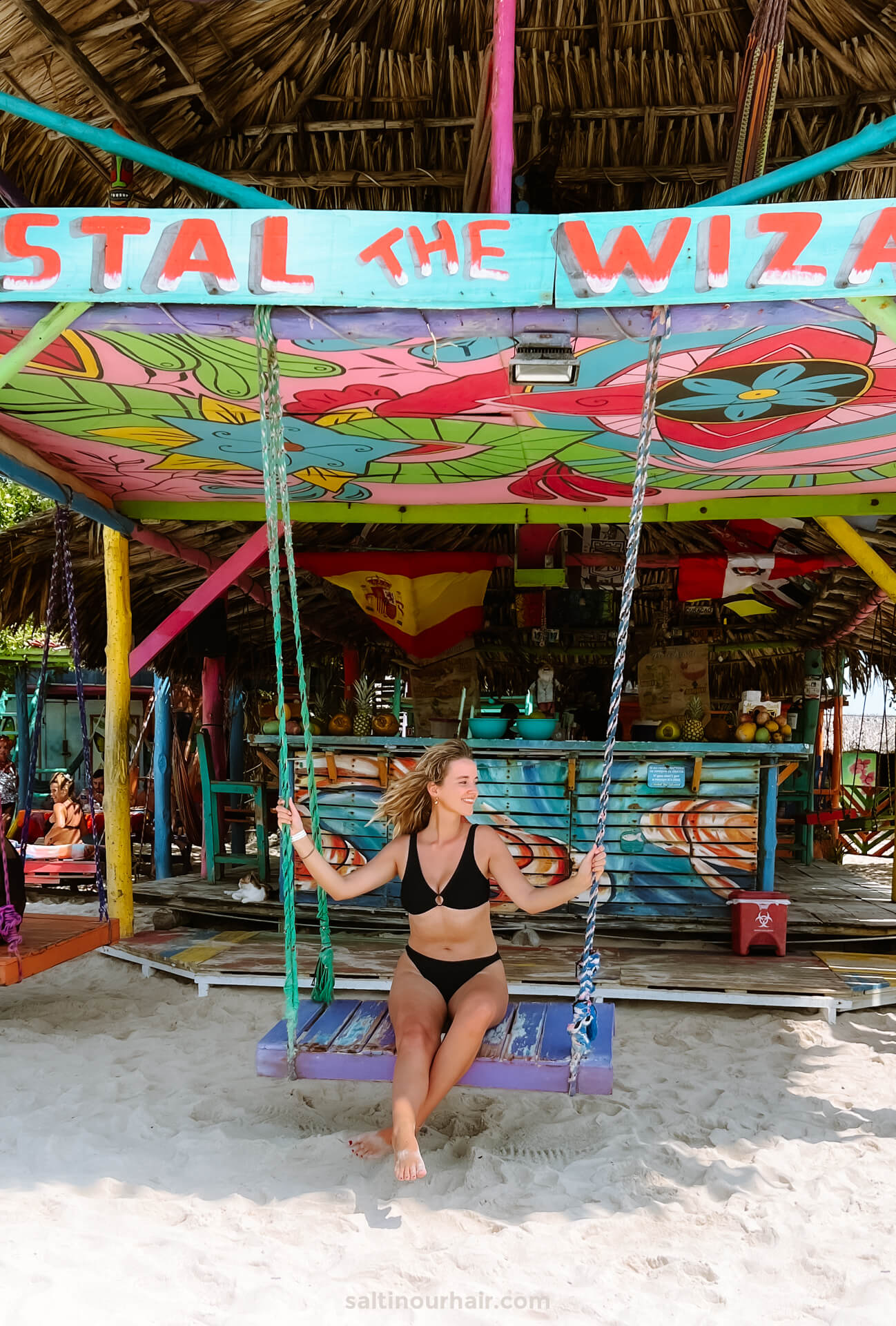
How to get from Palomino to Cartagena
By Bus: Take the bus from Palomino to Cartagena in 7-9 hours (change in Santa Marta). There is no need to pre-book in advance; you can just turn up and jump on the bus. To get to Santa Marta, you’ll need to take the local bus, which takes 1.5 hours. Once you’re in Santa Marta, head for the central bus station. Buses leave for Cartagena every half an hour, costing 43,000 COP (10 USD).
Book a bus in Colombia
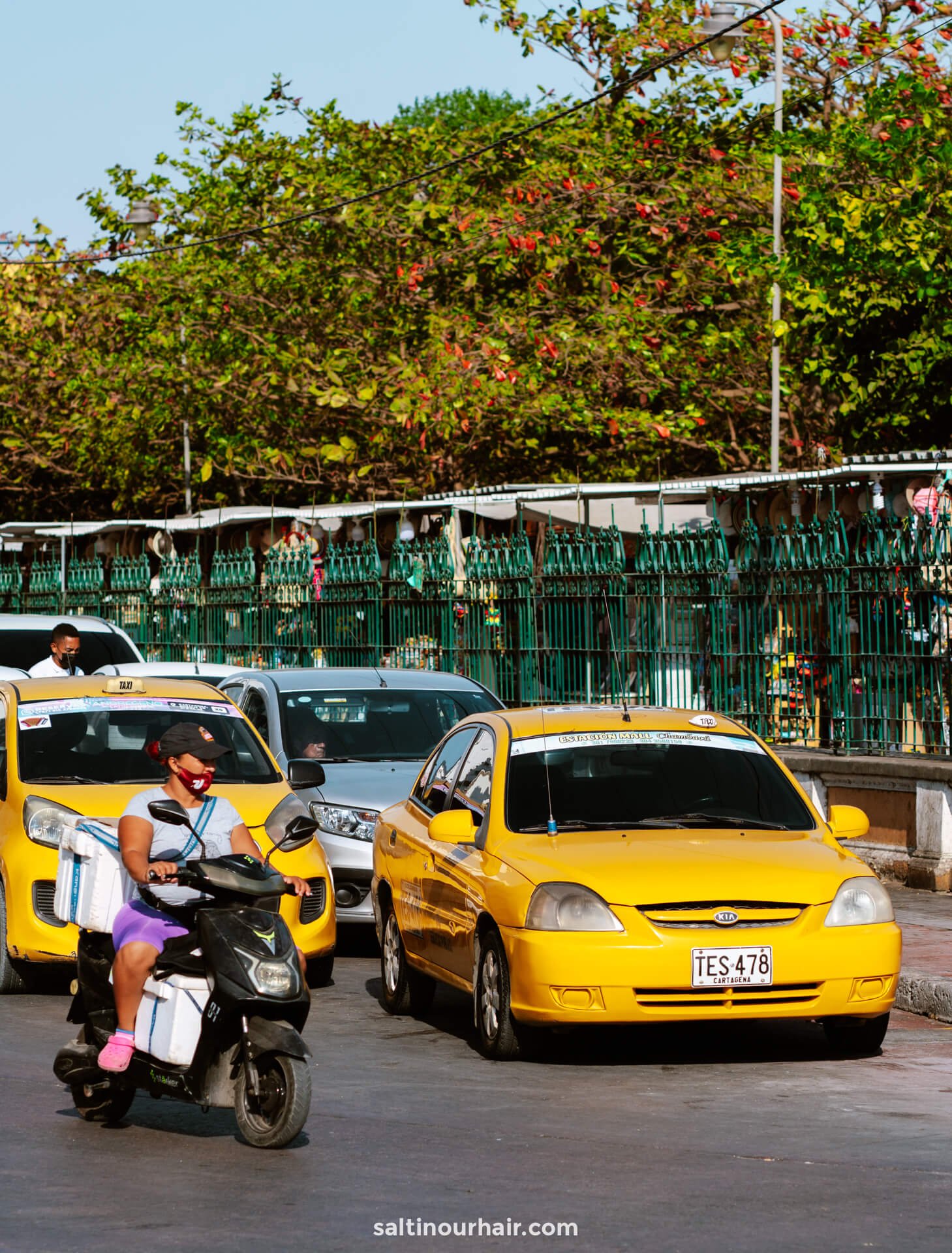
Where to Stay in Cartagena
Stay within the walled city to be among the most beautiful buildings in the city. Alternatively, the neighboring area of Getsemani is a bit cheaper but still very well located. Find your hotel in Cartagena .
Hotels in Cartagena 😴
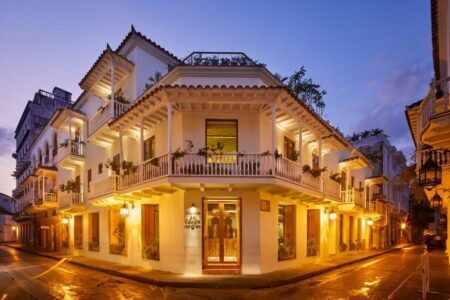
Day 14: Departure (Last Day of the Colombia 2-Week Itinerary)
It’s the final day of your Colombia 2-week itinerary, and it’s time to say goodbye to this beautiful country. Depending on where you’re going next, you may be able to fly directly from Cartagena (particularly if you’re flying into the US). Alternatively, you’ll need to take an internal flight back to the main cities of Bogota or Medellin , where you’ll have more worldwide flight options.
How to Visit Colombia in 2 Weeks
Colombia is a huge country and could take months to explore. However, 2 weeks in Colombia is still a reasonable amount of time to explore some of the most significant spots, whether its beautiful beaches, wild mountains, or buzzing cities. This Colombia 2-week itinerary gives you the best route and transport options to make it as easy as possible for you to explore the country on your trip.
Getting to Colombia
There main international airports in Colombia are Bogota and Medellin. As your 2-week Colombia itinerary starts in Bogota, we recommend flying directly to El Dorado Aiport (Bogota). Alternatively, if you fly into Medellin, you can begin your itinerary there and add on Bogota at the end of your trip.
Tip: Already traveling in Panama or Ecuador? You can cross the border by land instead.
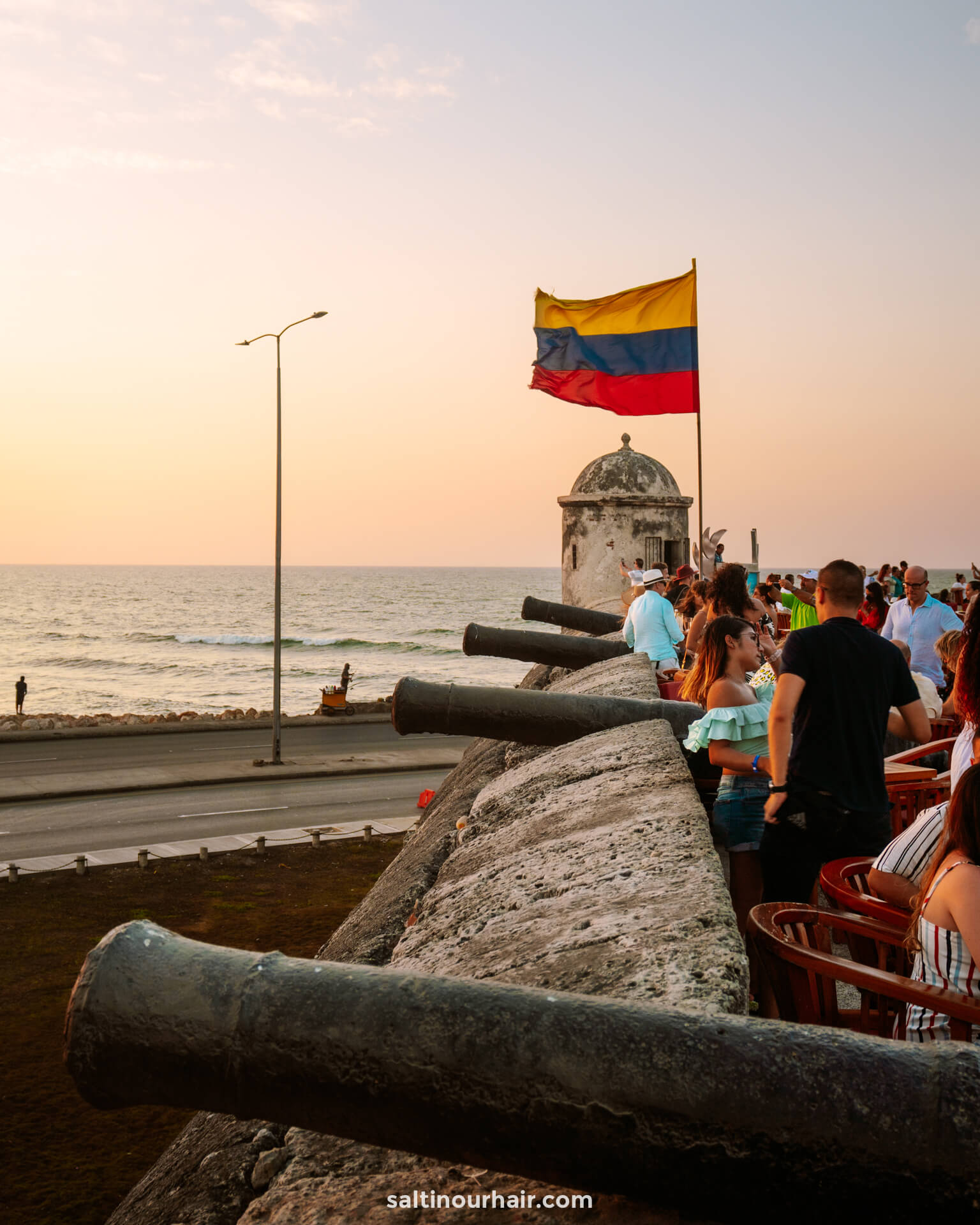
Getting Around Colombia
Once you’re in Colombia, you can travel between destinations by bus. However, because the country is so huge, the distance between cities is often long, and buses can take hours (especially in Colombia, where there are often road closures and traffic incidents). If you can, we recommend taking overnight buses to save valuable time and money on your Colombia itinerary (2 weeks).
Book your bus in Colombia
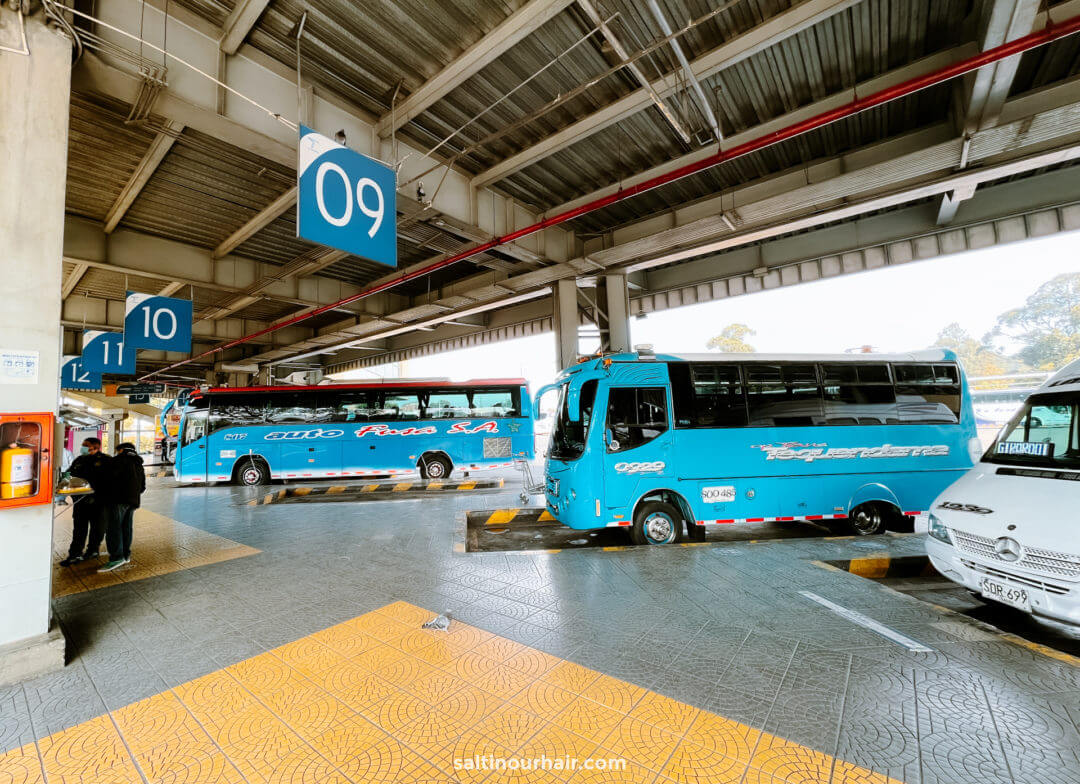
As you only have 2 weeks in Colombia, you might prefer to take internal flights between destinations. Normally, flights between major cities in Colombia take around 1 hour (although you’ll need to add on time for check-in and customs). Be aware that the price of flights can add up once you add baggage, so taking a bus may be cheaper.
Book your flight in Colombia
By Organized Tour
Many people choose to do organized tours to get around Colombia more easily. The benefit of tours is that you’ll see the highlights of the destination and have your transport and entrance tickets included. Plus, you’ll have a guide leading you, which takes any worry and hassle out of traveling.
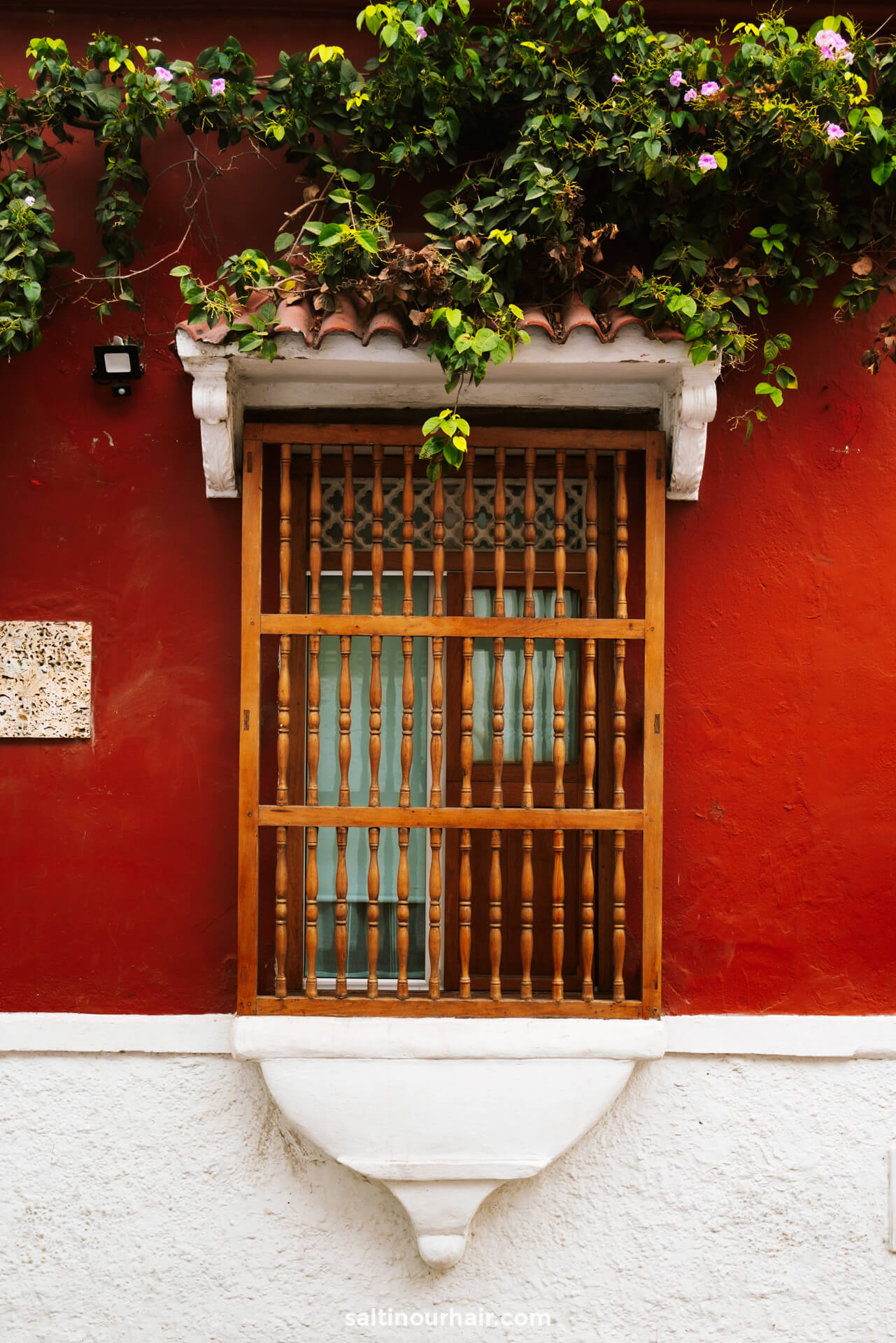
Our Favorite Colombia Accommodations
There are so many fantastic places to stay during your 2 weeks in Colombia, whether it’s in a hammock under the stars in Tayrona National Park , a treehouse in the foothills of the Sierra Nevada Mountains, or a hotel with a rooftop pool among the tower blocks of Medellin . Below are our favorites for each destination on this Colombia 2-week itinerary.
- Bogota: Botanico Hostel , Selina La Candelaria
- Medellin: Los Patios Hostel , Range Boutique Hostel , Nomanda Hotel , Sites Hotel
- Salento: Coffee Tree Boutique Hostel , Terrazas de Salento , Montana Glamping , Hotel Terasu Salento
- Minca: Siembra Boutique Hostel , Mundo Nuevo Eco Lodge , Hostel Sierra
- Tayrona: Eco Lodge Chayrama , Ecohabs Bamboo
- Palomino: Casa del Pavo Real , Reserva Natural El Matuy
- Cartagena: Sofitel Santa Clara , Republica Hostel Cartagena
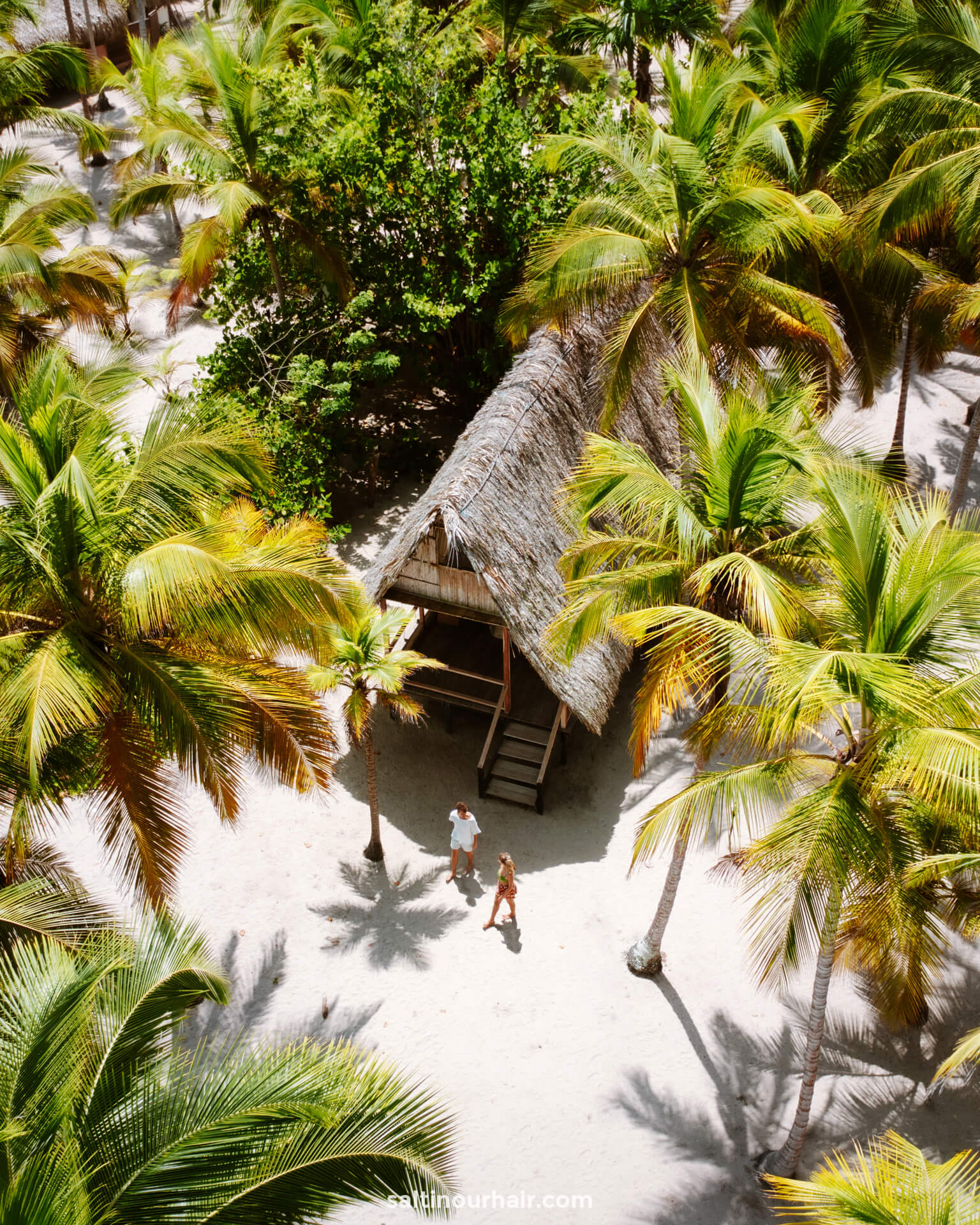
How Much Do 2 Weeks in Colombia Cost?
Colombia has a reputation in South America as one of the cheapest destinations to travel, and people come from all over the world for this low-cost, yet amazing, travel experience. Food, accommodation, and activities are particularly cheap. The only higher cost is for transport because of the long distances and the need to take flights on your 2-week Colombia itinerary. However, generally, it’s an excellent place to travel for those who are on a tighter budget.
Costs of Traveling in Colombia
Travel on a budget in Colombia, from $150 − $1040 USD weekly per person, mid-range $570 − $1180 USD, and high-end from $1140 − $2060 USD. However, costs depend on factors like accommodation, transportation, and activities. We did not include flights. Check flight prices here
- Hotels: $15 − $250 USD Check available hotels
- Hostels: $8 − $100 USD Check available hostels
- Transport: $3 − $80 USD Book public transport
- Food: $3 − $20 USD
- Activities: $5 − $15 USD See tickets & tours
- Sim: $1 − $3 USD Get an eSIM or SIM here
- Travel Insurance: $2 − $6 USD Get Travel Insurance
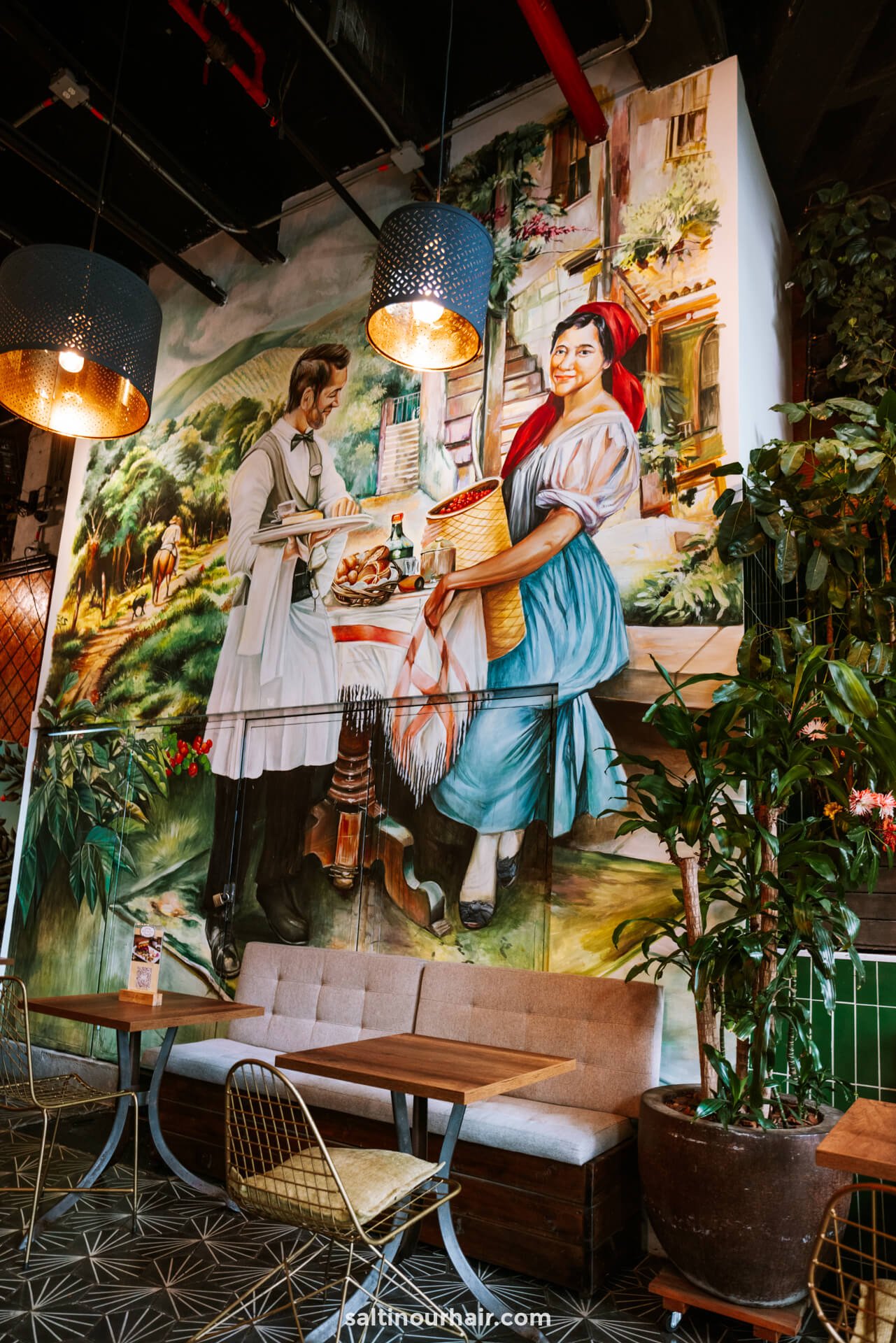
Best Time to Visit Colombia
December-March are the best (and driest!) months to travel in Colombia. Outside these months can be stormy, but the rain doesn’t normally last long, and prices tend to be lower during these months.
If you’re traveling to Tayrona National Park during your 2 weeks in Colombia, we recommend avoiding the month of December, as many locals travel for the holidays, and it can be very busy.
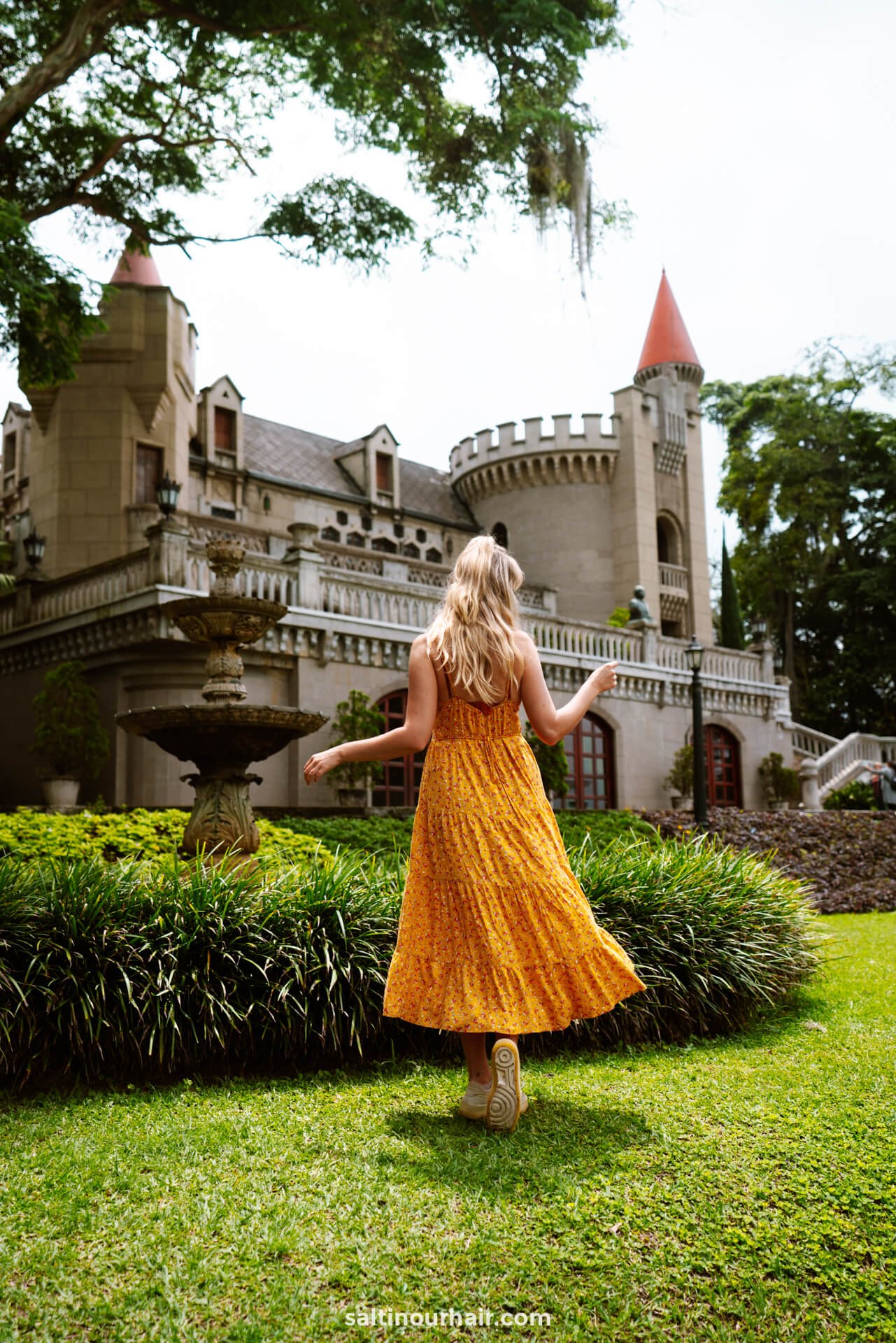
Do I Need a Visa for 2 Weeks in Colombia?
Staying for less than 90 days? In this case, most passport holders do not need a visa to enter Colombia. However, to do this Colombia 2-week itinerary, you will need a valid passport and may need to show evidence of a return or onward journey.
Is Colombia Safe?
Although Colombia has a reputation for being unsafe, we had a very positive experience and never felt in danger. The country has had a turbulent history (mainly because of drug cartels, gangs, and guerilla warfare), but in recent years tourism has boomed, and the government has placed more emphasis on traveler safety.
As with all countries, exercise caution (especially at night), and always keep anything valuable locked up at your hotel.
Learn more about travel safety
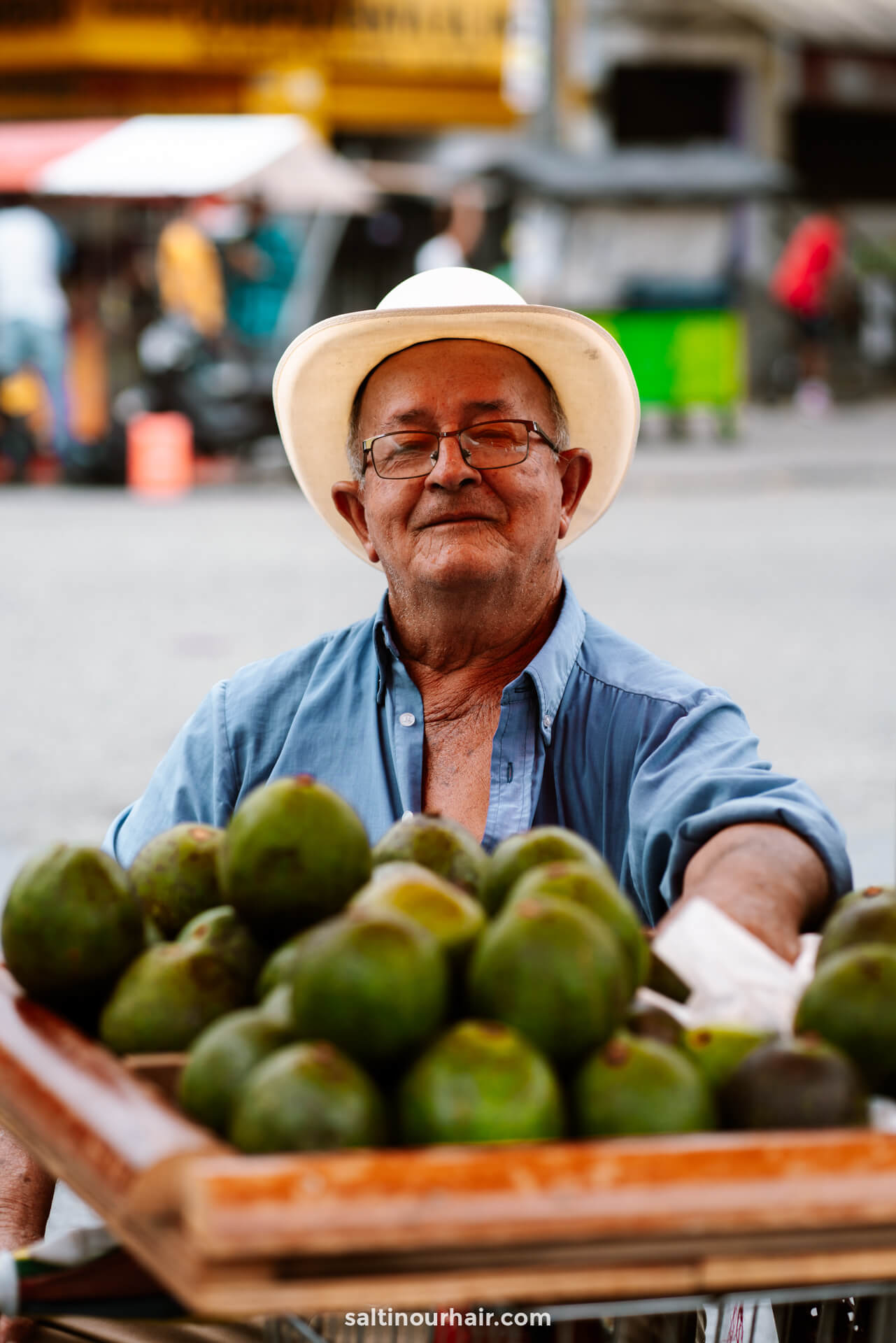
Travel Insurance for Backpacking in Colombia
Although you’re only spending 2 weeks in Colombia, purchasing single-trip insurance is highly recommended to protect against any unforeseen incidents while traveling. For example, you could lose your baggage, have your phone stolen, or even lose money from a cancelled flight.
Travel Insurance Don't forget a travel insurance for your Colombia trip! Heymondo covers medical emergencies, theft, delays, cancellations, lost luggage, and more, with 24/7 worldwide assistance and medical chat. As a Salt in our Hair reader, we've got you 5% off! Check Heymondo here
What to Pack for a 2-Week Colombia Itinerary
Depending on the time of year you visit, you may have different weather for your Colombia 2-week itinerary. Especially during the nights in the mountains, temperatures can drop, so make sure to always have extra layers with you.
Colombia Packing List
- Take layers – Layers of clothing are essential to add or remove items, especially in mountainous destinations like Minca, when the temperatures can lower in the evening.
- Quick-dry clothing – Depending on when you visit, you may have a little rain during your trip to Colombia. Take clothing made of fabrics that dry quickly because items take very long to dry due to the tropical, humid weather.
- Microfiber towel – Like quick-dry clothing, it’s beneficial to take microfiber towels as they dry much faster and are incredibly lightweight.
- Waterproof backpack – Keep your valuables dry in a waterproof backpack or a rain cover that comes with your bag.
- Raincoat – The final item for rain is a waterproof jacket/raincoat. Some can also be easily folded into a package that you can take anywhere.
- Hat – Always take a hat/cap to protect you against that beautiful Colombian sunshine
- Long socks & trousers – You might also want to take long socks & trousers for some hikes, night walks, or evenings outside to cover your legs and prevent mosquito bites.
- Suitable footwear – Good walking shoes/sneakers/sandals are a must. Hikes can be somewhat challenging with muddy or rocky paths. It’s not wise to wear flip-flops here.
- Earplugs – Your nights can be disturbed by animal sounds, music, or the sound of the waves when sleeping in your hammock/tent in Colombia. Earplugs save you from having a sleepless night!
- Camera – Capture memories of your 2 weeks in Colombia with a waterproof camera like a GoPro, or get good protection gear for your camera so you won’t have problems if it rains unexpectedly.
- Power bank – For long hikes, power outages, or moments in the jungle, it’s helpful to have a power bank to recharge your phone ( get one here ).
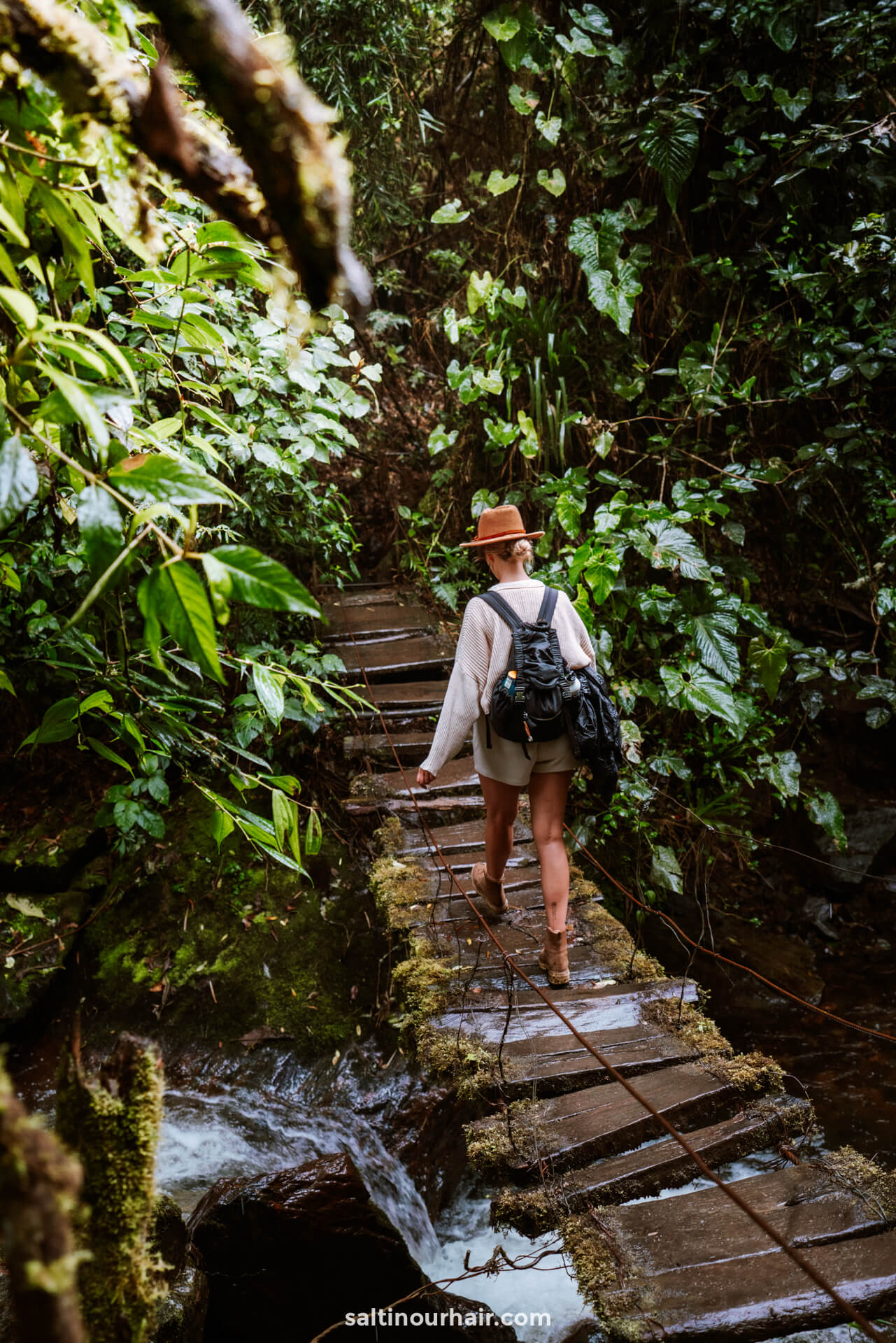
Packing Sustainable Items
- Insect repellent – Bring an insect repellent but get a non-toxic product to prevent harming nature or animals.
- Sunscreen – An obvious addition to repellent is also sunscreen. We recommend a product without toxic ingredients so it doesn’t harm the environment. ( Read about alternative sunscreens here )
- Refillable water bottle/purifier – Water is drinkable from the tap in most places in Colombia, except on the coast and in less developed areas. Bring a reusable water bottle with you, which will save you from buying single-use plastic bottles; refill instead!
- Stainless steel straw – Coconuts and fresh fruit juice are often sold on Colombia’s streets. Carry a stainless steel straw with you and avoid plastic or single-use straws. Top tip: With stainless steel, you can also scrape out the delicious inside of the coconut.
By purchasing through our links, you support us at no additional cost. Thank you for your support. ♥️
- Find Hotels via Booking.com
- Find a Rental Car via Sunny Cars
- Find Flights to via Skyscanner
- Get a Travel Insurance via Heymondo
- Book Tours & Attractions via GetYourGuide
- Book a Bus/Train/Transfer via 12Go
Cocora Valley, Colombia: Hike along the World’s Tallest Palm Trees
10 best things to do in colombia in 2024, colombia itinerary: the complete 3-week travel guide.
Looking for more travel information? Plan a chat with us for personalised travel advice or get an answer from the Salt in our Hair Travel Community on Facebook.
Have used your blog for inspo on my planned trip to Colombia. There is maybe two places here I miss if you want more beach view. San Andreas that seems to have a lot of nice beaches. And also the islands around Isla Murcura seems pretty nice!
Your email address will not be published. Required fields are marked *
Notify me when new comments are added.
- Travel Calendar
- Our travel books
- Where to stay
- Work with us
- In the spotlight
- Editorial Guidelines
Our 2-month South America backpacking itinerary
After only 5-6 years and tens of your questions, we finally felt inspired to write down the itinerary of our first grande journey. It all started when we decided to head for South America and explore it for about 60 days. In this article, we want to wrap up the whole journey and share with you our 2-month South America backpacking itinerary.

You can support us by checking out our travel books . Thank you so much! 🙏

Do you like this post?
Travel with us and share our journey on Instagram ! Do you want to support us – learn how here !
Keep up with our latest travel adventures and projects! Subscribe for our Traveletter!
I have read and agree to the Privacy Policy
Similar Posts

Our Uruguayan New Year – Montevideo
In Bulgaria, we meet the New Year with full bellies, dressed formally in the center... Read More

Nazca to Huacachina to Lima – an adventurous journey
The turbulence in our stomachs, caused by the aerial view of the Nazca Lines, is... Read More

Madidi jungle – is there an order in the Bolivian Amazon?
The jungle is off-limits for most tourists in Bolivian Amazon, but you can visit Madidi... Read More

Wine tourism: The best countries to taste wine
Where to go for the ultimate wine experience? We asked some of the wine-loving-world-trotting travelers... Read More

Peru – Machu Picchu
The hidden city, built in the golden age of the Inca Empire. Hidden, because it... Read More

Christmas and New Year’s traditions and customs around the world
We live in such a multicultural world that it is impossible not to notice how... Read More
Leave a Reply Cancel reply
Charging elephant kills an American woman on 'bucket list trip' in Zambia
An American woman who was on what she had called her "last big trip" was killed when a charging elephant flipped over the car she was traveling in at a national park in Zambia .
The “aggressive” creature buffeted the vehicle carrying six tourists and a guide, tour operator Wilderness said in a statement Tuesday. It said the 79-year-old victim died after Saturday's incident on a game drive at the Kafue National Park in western Zambia.
The company did not name the victim but Rona Wells, her daughter, identified her as Gail Mattson in a post on Facebook. She said her mother died in a “tragic accident while on her dream adventure.”
A video circulating on social media apparently showing the incident shows a large elephant running toward a car, which slows down as the animal approaches its left side. The elephant then flips the vehicle over and the passengers can be heard gasping as the car rolls over.
NBC News does not know the condition or identity of the person who filmed the video.
Photos shared online of the car, which is emblazoned with the logo of the tour operator, show it tipped onto its side after the incident, with a deep dent in two of its side doors.
Wilderness, which describes itself as a “leading conservation and hospitality company” operating in eight African countries, including Zambia, did not respond to NBC News when asked to confirm the authenticity of the video and the photos.
But the tour operator’s CEO, Keith Vincent, said in the statement that the company’s “guides are all extremely well trained and experienced.”
"Sadly in this instance the terrain and vegetation was such that the guide’s route became blocked and he could not move the vehicle out of harm’s way quickly enough,” he added.
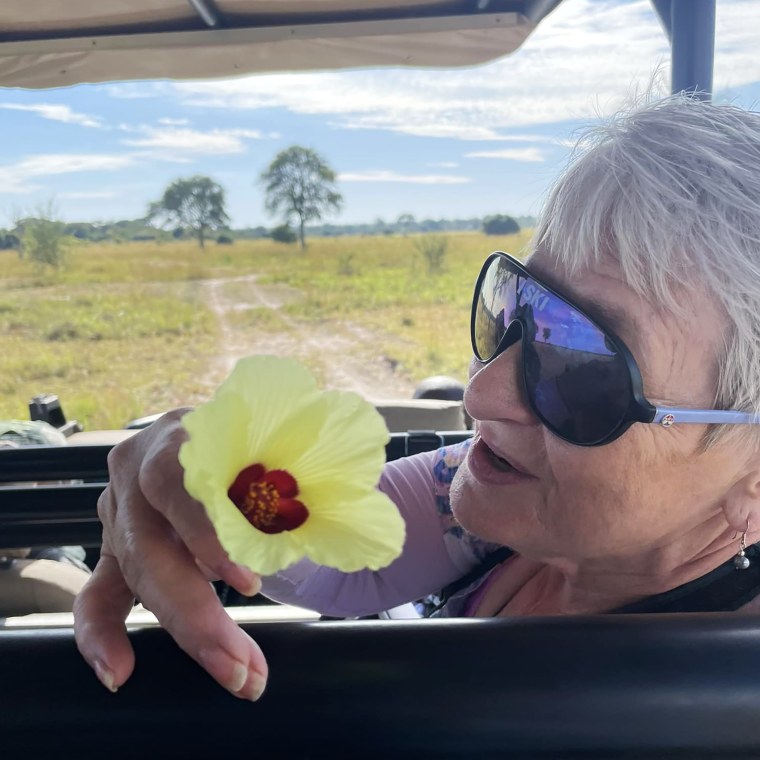
Another woman was also injured in the incident and taken to a medical facility in South Africa, the Wilderness statement said, adding that four others were treated for minor injuries.
“It’s extremely rare to see an elephant that irate,” Marlon du Toit, a wildlife photographer and safari guide, told the “TODAY” show Thursday. “Across Africa, there are thousands and thousands of guests on safari on a daily basis with no negative consequences.”
The exact cause of Mattson’s death was unclear, but the company said her body would be repatriated to her family in the United States with the support of local Zambian authorities and the U.S. Embassy in the capital, Lusaka.
“This is a tragic event and we extend our deepest condolences to the family of the guest who died,” the statement added.
NBC News has reached out to Mattson's family for further comment.
Kafue National Park is Zambia’s largest and oldest national park, according to its website, and spans an area of more than 8,000 square miles. Vast regions of the park remain unexplored and the website says it is home to a variety of untamed wildlife.
A 'bucket list trip'
Mattson spent her winters in Sun City West, Arizona, playing bridge and cards, but during the rest of the year, she "travels all over the world," her friend Brenda Biggs told NBC News. Biggs and her husband, John Longabauth, became friends with Mattson when they moved to the area 6 ½ years ago.
Longabauth said Mattson spoke to the couple about her upcoming safari trip about two weeks ago, and called it "one of her bucket list trips." He said she was very excited for the adventure.
Before she left, she gave the couple concert tickets for a show that would happen while she was traveling, telling them to enjoy the concert and "I'll see you when I get back," Longabauth recalled of the conversation.
Biggs said Mattson, who was almost 80 years old, told her that the African safari was her "my last big trip." She said Mattson was "super excited because it was like the culmination of all the trips that she had gone on."
An avid traveler, Mattson took to trips to Europe and Asia, Longabauth recalled, noting that she might have been to South America, too.
Biggs called her friend "flamboyant," "friendly" and "fabulous" and said she loved bright colors. Mattson had taken over Biggs’ job as the event planner for their 200-member bridge club, she said.
"Gail was one of the more up people you'd ever want to meet," Longabauth said. "She was always up. She was always optimistic. She was always seeing the good side of everybody."
Yuliya Talmazan is a reporter for NBC News Digital, based in London.
Rebecca Cohen is a breaking news reporter for NBC News.

Masters Tournament
Augusta National Golf Club
Augusta, Georgia • USA
Apr 11 - 14, 2024
When is the next total solar eclipse in the US after 2024 and what is its path? What to know
The highly anticipated 2024 total solar eclipse will cross North America on Monday , giving millions of sky-gazers the chance to see a rare cosmic event that won't be viewable again for 20 years.
The eclipse's path of totality will travel over a portion of northern Mexico before entering the U.S. It then it will cross 13 states from Texas to Maine, where the spectacle is expected to attract huge crowds.
If you aren't lucky enough to be in the path of totality this time around, you will have another chance - you'll just have to wait until the 2040s.
Here's what we know about the next total solar eclipse to cross over the U.S.
Eclipse playlist: Fans return to Bonnie Tyler's 'Total Eclipse of the Heart' ahead of total solar eclipse
When is the next total solar eclipse visible from the U.S.?
It will be 20 years before there's a chance to witness a total solar eclipse in the United States again.
According to NASA, after Monday's total solar eclipse , the next one viewable from the contiguous U.S. will be on Aug. 23, 2044.
2044 total solar eclipse path of totality
Unfortunately, the 2044 total solar eclipse won't have the broad reach across the U.S. as the 2024 eclipse.
The path of totality during the 2044 eclipse will only touch three states, according to the Planetary Society, a nonprofit involved in research, public outreach, and political space advocacy.
The eclipse will begin in Greenland, sweep through Canada and end around sunset in Montana, North Dakota and South Dakota.
Pets and the eclipse: Will my pets be safe during the April 2024 solar eclipse? What experts say.
2045 solar eclipse
While the 2044 total eclipse will only touch three states, a 2045 eclipse will have a more robust path across the U.S.
Expected to occur on Saturday, Aug. 12, 2045, this solar eclipse will trace a path of totality over California, Nevada, Utah, Colorado, New Mexico, Oklahoma, Kansas, Texas, Arkansas, Missouri, Mississippi, Louisiana, Alabama, Florida, and Georgia.
A partial solar eclipse will also be viewable in 35 other states, according to National Eclipse.com
What is a total solar eclipse?
Any celestial object like a moon or a planet that passes between two other bodies can create an eclipse by obscuring the view of objects like the sun.
In the event of a solar eclipse, the moon comes in between the Earth and the sun, blocking its light from reaching a small part of our planet. Partial eclipses, when some part of the sun remains visible, are the most common, making total eclipses a rare sight to behold.
Total eclipses can lead to a period of darkness lasting for several minutes, during which time nocturnal animals stir while confused birds and insects may fall silent, NASA says.
When a solar eclipse reaches totality, people are able to see the sun’s outer atmosphere called the corona, which is usually obscured by the sun's bright surface. This offers scientists an uncommon opportunity to study the corona .
Totality also offers spectators a chance to gaze upon the spectacular sight with the naked eye, though proper safety glasses are still required for the rest of the time.
What states are on the 2024 eclipse path of totality?
Mexico's Pacific coast will be the first location in continental North America to experience totality, which is expected to occur at about 11:07 a.m. PDT, according to NASA .
As the moon's shadow will northeast, totality in the U.S. will begin in Texas at 1:27 p.m. CDT. The path will then cut diagonally across the country, traveling through Oklahoma, Arkansas, Missouri, Illinois, Kentucky, Indiana, Ohio, Pennsylvania, New York, Vermont and New Hampshire.
The eclipse's path is expected to end in Maine at 3:35 p.m. EDT before visiting the maritime provinces of Canada, according to estimates.
See interactive maps of the 2024 path .
Contributing: Doyle Rice, Ramon Padilla & Janet Loehrke, USA TODAY
Advertisement
Supported by
Parents of Michigan School Shooter Sentenced to 10 to 15 Years in Prison
Jennifer and James Crumbley, whose son killed four people, each faced up to 15 years in prison for involuntary manslaughter convictions.
- Share full article

By Jacey Fortin and Anna Betts
Jennifer and James Crumbley, who were convicted of involuntary manslaughter for failing to prevent their teenage son from killing four fellow students in the deadliest school shooting in Michigan’s history, were each sentenced on Tuesday to 10 to 15 years in prison.
Their separate jury trials ended in guilty verdicts in February and March , making them the first parents in the country to be convicted over the deaths caused by their child in a mass shooting.
Involuntary manslaughter charges carry a penalty in Michigan of up to 15 years in prison, and prosecutors asked in sentencing memos filed to the court last week that the Crumbleys each serve at least 10 years. Both have been in jail for more than two years while awaiting trial and will receive credit for time served.
“Parents are not expected to be psychic,” Judge Cheryl Matthews of the Oakland County Circuit Court in Pontiac, Mich., said before issuing the sentence. “But these convictions are not about poor parenting. These convictions confirm repeated acts or lack of acts that could have halted an oncoming runaway train — repeatedly ignoring things that would make a reasonable person feel the hair on the back of her neck stand up.”
Before the hearing, prosecutors said that Ms. Crumbley, 46, was asking to be sentenced to house arrest on her defense lawyer’s property, rather than serving prison time. And Mr. Crumbley, 47, said that he had been wrongly convicted and his sentence should amount to the time he had already served in prison, adding that he felt “absolutely horrible” about what had happened.
On Tuesday, each of them spoke in the hearing before the judge pronounced sentence.
“I stand today not to ask for your forgiveness, as I know it may be beyond reach, but to express my sincerest apologies for the pain that has been caused,” Ms. Crumbley said in court, addressing the relatives of students who were killed.
Mr. Crumbley also apologized. “I cannot express how much I wish that I had known what was going on with him or what was going to happen, because I absolutely would have done a lot of things differently,” he said.
Relatives of some of the victims also spoke during the hearing, describing the overwhelming effects the shooting had on their lives.
“The ripple effects of both James’s and Jennifer’s failures to act have devastated us all,” said Jill Soave, the mother of Justin Shilling, 17, who was killed in the shooting at Oxford High School on Nov. 30, 2021. “This tragedy was completely preventable. If only they had done something, your honor, anything, to shift the course events on Nov. 30, then our four angels would be here today.”
Steve St. Juliana, whose daughter, Hana, 14, was killed, said that the Crumbleys continued to fail to take responsibility for what had happened.
“They chose to stay quiet,” he said. “They chose to ignore the warning signs. And now, as we’ve heard through all of the objections, they continue to choose to blame everyone but themselves.”
The Crumbleys’ son, Ethan, was 15 when he carried out the shooting that killed Justin and Hana, as well as Madisyn Baldwin, 17, and Tate Myre, 16. Seven others were injured. Ethan Crumbley pleaded guilty to 24 charges, including first-degree murder, and was sentenced last year to life in prison without parole . He is still eligible to appeal that decision. His parents may appeal, too.
In the trials of both parents, prosecutors focused in part on their failure to remove their son from school after he made a violent drawing on the morning of the shooting. It included a written plea for help.
They also emphasized Ethan’s access to a handgun that Mr. Crumbley had purchased. And they said that Ms. Crumbley had missed signs that her son was struggling with his mental health, adding that she took him to a gun range just days before the shooting.
Defense lawyers for both parents said they could not have foreseen the unspeakable violence their son would commit.
Ms. Crumbley grew up in Clarkston, a Detroit suburb about 20 minutes from Oxford, her lawyer said during a hearing after the couple’s arrest in 2021 . Before her arrest, she had worked as a marketing director, her lawyer said.
Mr. Crumbley’s job history included work at a handful of small software and technology companies.
The couple once lived in Florida but returned to Michigan several years ago, their lawyers said. They bought their home near downtown Oxford in 2015.
The trials of Jennifer and James Crumbley became a lightning rod for issues of parental responsibility at a time of high-profile gun violence by minors. In recent months, parents in other states have pleaded guilty to charges of reckless conduct or neglect after their children injured or killed others with guns.
But the manslaughter charges against the Crumbleys were unique, and legal experts said their trials could serve as a playbook for other prosecutors who seek to hold parents accountable in the future.
Ekow Yankah, a professor at the University of Michigan Law School, said the effect of the ruling on Tuesday might be felt beyond the state.
“This is going to be precedent, most obviously in Michigan and its home jurisdiction, but prosecutors all over the country will see this as a new and viable form of liability,” Mr. Yankah said. “I think we should not underestimate the precedential power of this case, even as we recognize that the facts were quite extraordinary.”
For Matthew Schneider, a former United States attorney in Michigan, what makes this case so different from many others is that most criminal sentences are related to the actions of a defendant, rather than being “about inactions, and how the inactions of a person result in a criminal sentence.”
The sentencing is “very much about making an example of the defendants,” Mr. Schneider said. “This is a shot across the bow to all parents, to all people who have firearms in their house, to keep them locked up, if they could be in the hands of the wrong people.”
Jacey Fortin covers a wide range of subjects for the National desk of The Times, including extreme weather, court cases and state politics all across the country. More about Jacey Fortin
Anna Betts reports on national events, including politics, education, and natural or man-made disasters, among other things. More about Anna Betts

COMMENTS
Day 1: El Chaltén. Kick off your South America two week itinerary in Patagonia in the small but thriving backpacking town of El Chaltén in Argentina. This tiny hamlet has expanded over recent years and now boasts some good hotels and cool restaurants and bars - make sure to check out La Tapera and Mathilda.
You can see how to do this, in this Two weeks in South America Charming Itinerary. DAY BY DAY ITINERARY: DAY 1: Arrive in Brazil. DAY 2: Corcovado Mountain and Christ Redeemer. DAY 3: Sugar Loaf and Samba School. DAY 4: Fly to Iguazu - Visit the Brazilian side of the falls. DAY 5: Visit Argentina's side of the falls. DAY 6: Fly to Buenos Aires.
Itinerary #1: First-time (Peru and Brazil) The first itinerary for your 2 weeks in South America consists of the countries with the most popular tourist attractions in this region; Peru and Brazil. Peru is a megadiverse country with various habitats, including arid plains, mountain peaks, and rainforests.
2 Week South America Tours & Trips. Filter for departure dates and price to find the right 2 week South America tour with TourRadar. Choose from 415 trips with 1,509 customer reviews, that range from 11 up to 14 days. Dates & length Places Filters. Filters applied.
Travel to South America and discover Peru, Argentina, and Brazil. Tour Machu Picchu, enchanting Buenos Aires, Iguazú Falls, and famous Rio de Janeiro in a 2-week itinerary. From North to South, from the city of the Incas to the Paris of the South, this 2-week South America tour will showcase the vast diversity of this incredible continent.
We offer 72 great 2-Week South America tours and itineraries in 2024/2025. Our 2-Week itineraries and tours in South America are offered by some of South America's best tour operators. We promise you a quality 2-Week South America itinerary.
Visitors will find a large range of terrific options for tours lasting 2 weeks when planning a visit to South America. The price of these specific trips can vary according to length, destinations, and travel style. The average price of tours lasting 2 weeks in South America based on data from 61 options is an affordable $329 per day.
All 2 Week South America Tours & Packages 2021/2022. Plan an amazing trip for South America 2 week itinerary. Explore 681 South America 2 week trips from 382 experts with 33,845 reviews. Classic and off the beaten path itineraries. Design my custom trip.
Experience the very best of South America in 2 weeks with a private-guided tour tailored uniquely to you from destination specialists Rainforest Cruises. Destinations Experiences Deals About Search Contact +1.888.215.3555 Agents
Planning a 2 weeks in South America is like embarking on a thrilling expedition filled with diverse landscapes, rich culture, and unforgettable experiences. ... Take a guided tour: A guided tour is a great way to learn about the history and significance of Machu Picchu. You can hire a local guide or join a group tour.
Two weeks in South America is about finding the most efficient itinerary. Here are 4 backpacking itineraries options for South America. ... Get yourself accustomed to the city by booking on to the Community Hostel walking tour. Tours start at either 9:00 AM or 2:30 PM and take 3 hours long, so plan your day around this. ...
Plan your South America tour by activity: whether you love spas & lodges, trains, food & wine, golf, ... Days 7-8 days 9-10 days 11-12 days 2 weeks 2 1/2 weeks 3 weeks 4 weeks 5 weeks 6 weeks 7 weeks 2 months + How many travelers?
10 Best Adventure Trips for Couples 2024/2025. 10 Best South America Honeymoon Packages & Tours 2024/2025. 10 Best South America Travel Specialists (with Reviews) Browse the best tours in South America with 11,587 reviews visiting places like Cusco and Machu Picchu. All Major Brands.
2 Weeks of Argentina, Chile, and Uruguay. Buenos Aires (4 days) Experiencing the gritty yet charming "Paris of South America" . Optional: Montevideo and Colonia in Uruguay (2 days) Experiencing a smaller more polite Buenos Aires; Iguazu Falls (1 day) UNESCO heritage site that dwarfs Niagara Falls Mendoza (2 days) Argentine wine country experienced by biking between vineyards and wine tastings
The two-week Colombia itinerary above can easily be extended to become one month in the country. Once you have completed this two-week route and ended up in Cartagena, spend the extra two weeks on the Caribbean coast. The northern coast is the beautiful, picture-perfect shoreline of your beach holiday dreams.
Start your South America 2-weeks itinerary in El Chalten. The closest airport is in El Calafate, so you will either have to rent a car or take a bus to get to El Chalten. The trip takes around three hours. ... Check with the tour operators in town or do some research online to get more information. We recommend a trip to the lakes east of town ...
South America Inca & Panama Canal Discovery. 1,087 Reviews. Leaving: Buenos Aires. Cruise Line: Holland America Line. No prices currently available for this sailing. Itinerary. Ship.
Galapagos Small Ship Cruise. See all Small Ship Cruises in the Galapagos. Amazon River Cruise in 1 Week. See all 1 Week Amazon River Cruises. Argentina Cultural Tour in 7-10 Days. See all 7-10 Day South America Cultural Tours in Argentina. Multi-country South America tour in 3 Weeks. See all South America 3 Week Tours.
Detailed 14-day itinerary for traveling around Brazil, the largest country in South America. Tips on the best things to do, must-visit places, how to get around, when to visit, where to stay, and safety advice. Explore in two weeks Rio de Janeiro, Sao Paulo, Iguazu Falls, Florianopolis, Paraty, Ouro.
Compare tours, packages, and independent trips for a 2 week Luxury South America vacation. Find and compare all 151 Luxury South America tours, cruises, and packages from 5 companies. 29 expert & traveler reviews on Luxury South America trips. In partenership with. ... What You Should Know Before Going On A Luxury South America Tour.
Day 1: Arrive in Bogota. Look for a local simar card with data if you need it and collect some cash. Day 2 to 4: Explore Bogota and surrounding areas. Day 5: Travel from Bogota to Medellin by air or land. Day 5 to 19: Enjoy Medellin with a day trip to Guatape. Day 10: Travel from Medellin to Cartagena by air.
Recently updated on August 14th, 2023 at 03:35 pm. Layers, layers, layers - this is pretty much the gold standard on what to pack for your tour to South America.Before you go, get to grips with the continent's vastly diverse climates and landscapes and you'll quickly realise that you'll be swapping your bikini on Ipanema for a jacket in the Amazon rainforests from one day to the next.
1. Southern Patagonian Andes: Argentina & Chile. Duration: 10 days. Best for: Hiking, biking, glaciers and off-road adventure. Route: El Chaltén > Lago Argentino > Puerto Natales > Torres del Paine. The southern Patagonian Andes are as spectacular as any landscape in South America. The main mountain chain is relatively low, and two iconic ...
Get off-grid on your Colombia 2-week itinerary and stay in one of the open-air hammocks or camp—enjoying a night under the bright stars. Entrance Fee: 68,500 COP (± 16 USD) during the high season. 57,500 COP (± 13.5 USD) in the low season.
Days 50 - 52: Tour from San Pedro to Salar de Uyuni. One of the highlights of our South America backpacking itinerary was our off-road tour from San Pedro in Chile to Salar de Uyuni in Bolivia. The salt flats were truly unbelievable and once-in-a-lifetime encounters with nature and its creations.
Itinerary #1: Luxury South Africa Highlights: Cape Town, Winelands, Garden Route & Eastern Cape Safari. This scenic two-week highlights tour features the beautiful coast, wineries, and wildlife of southern South Africa. Perfect for first-time visitors who have a soft spot for luxurious accommodations and unique experiences, you can look forward to stays in top-notch hotels, gourmet dinners ...
An American woman who was on what she had called her "last big trip" was killed when a charging elephant flipped over the car she was traveling in at a national park in Zambia.
PGA TOUR Tournament Tee Times 2024 Masters Tournament, Augusta - Golf Scores and Results
The highly anticipated 2024 total solar eclipse will cross North America on Monday, giving millions of sky-gazers the chance to see a rare cosmic event that won't be viewable again for 20 years ...
"The ripple effects of both James's and Jennifer's failures to act have devastated us all," said Jill Soave, the mother of Justin Shilling, 17, who was killed in the shooting at Oxford ...